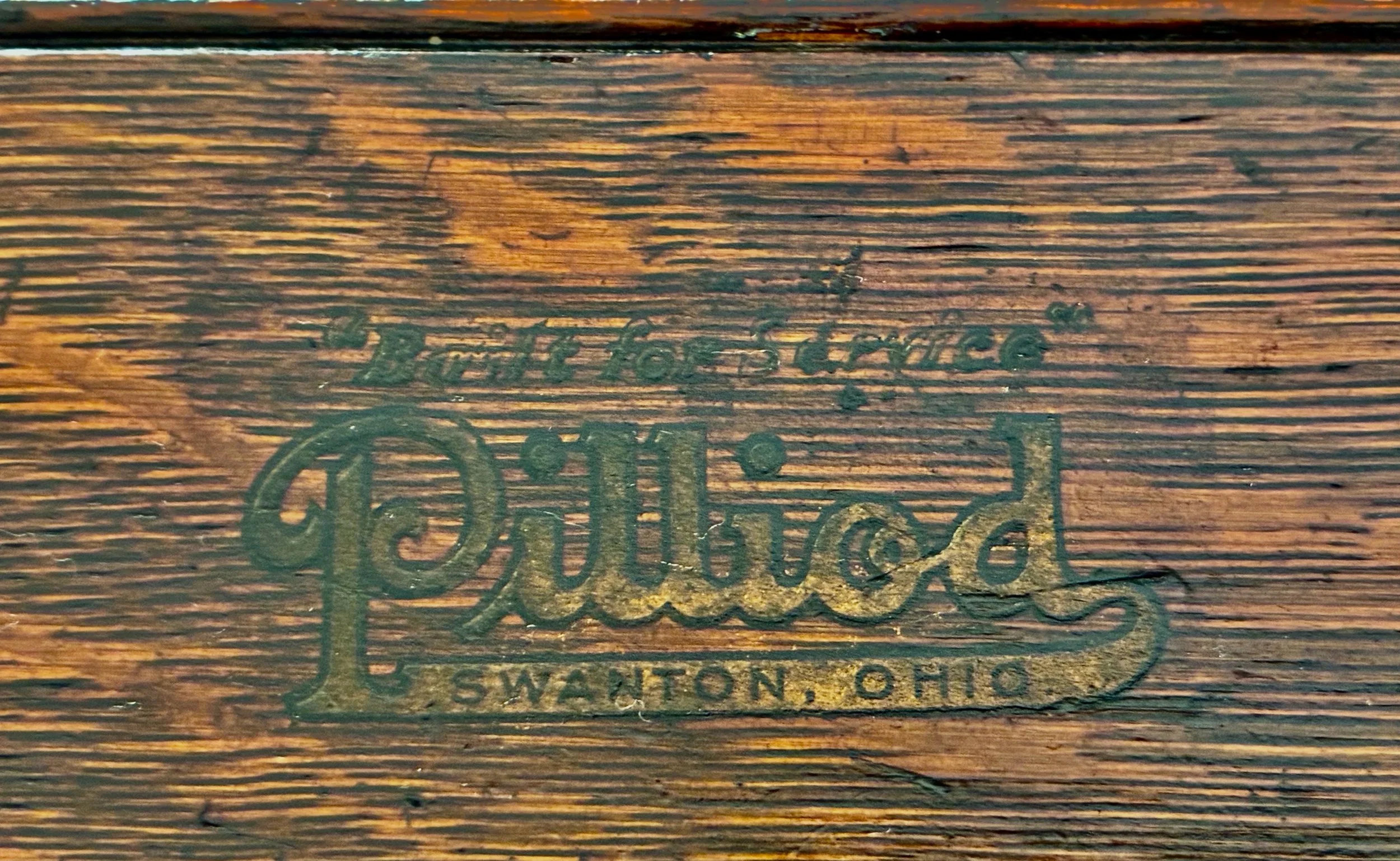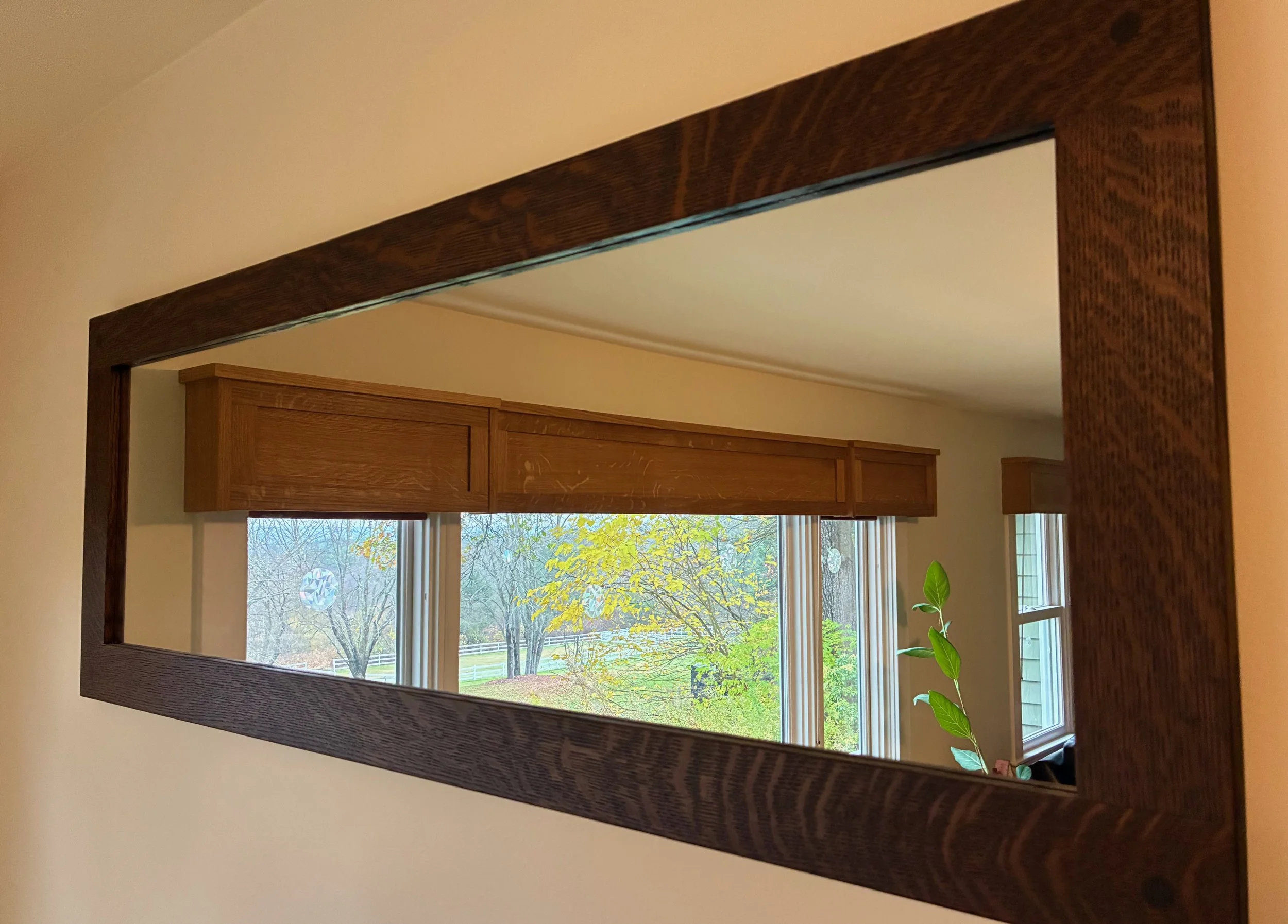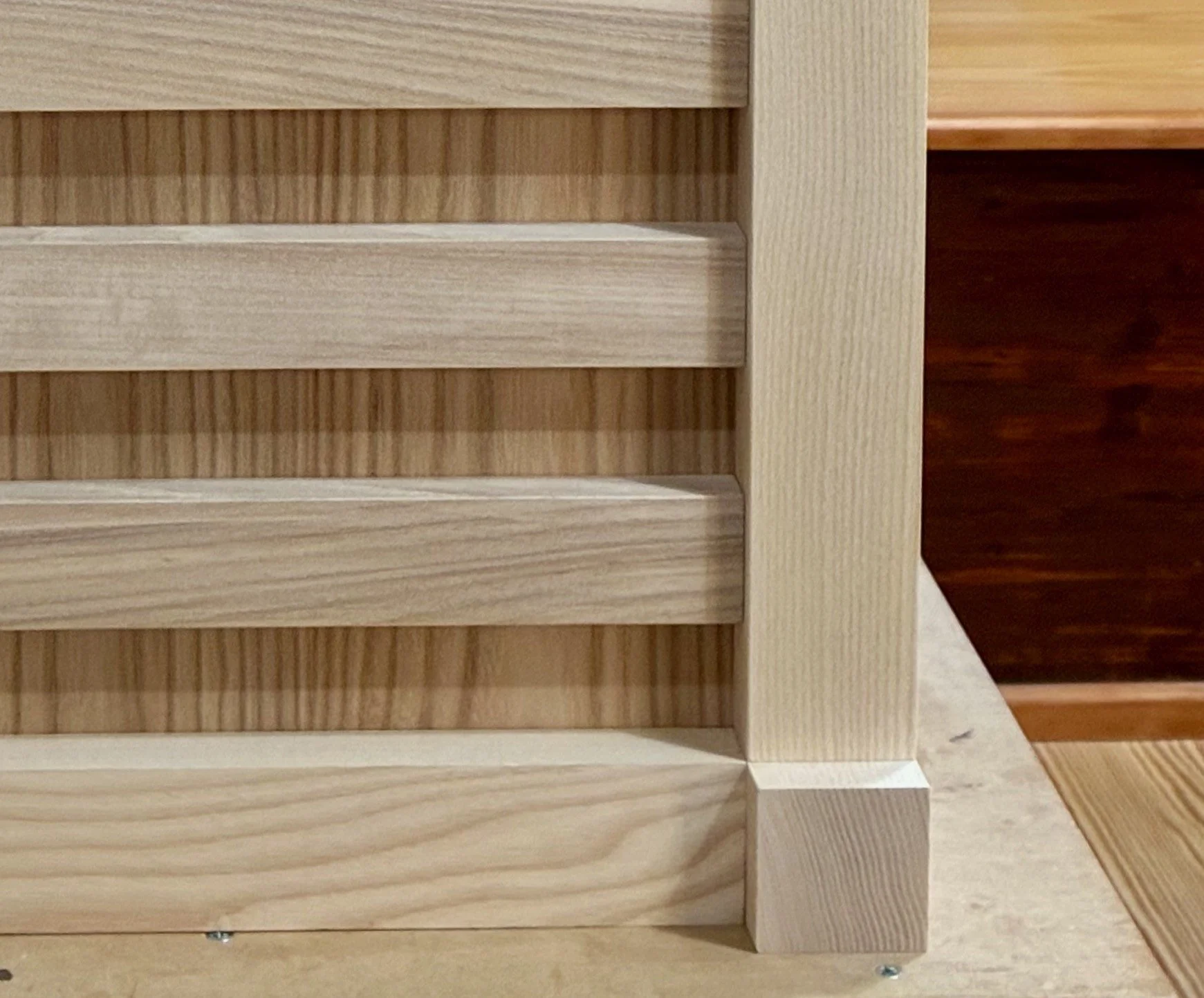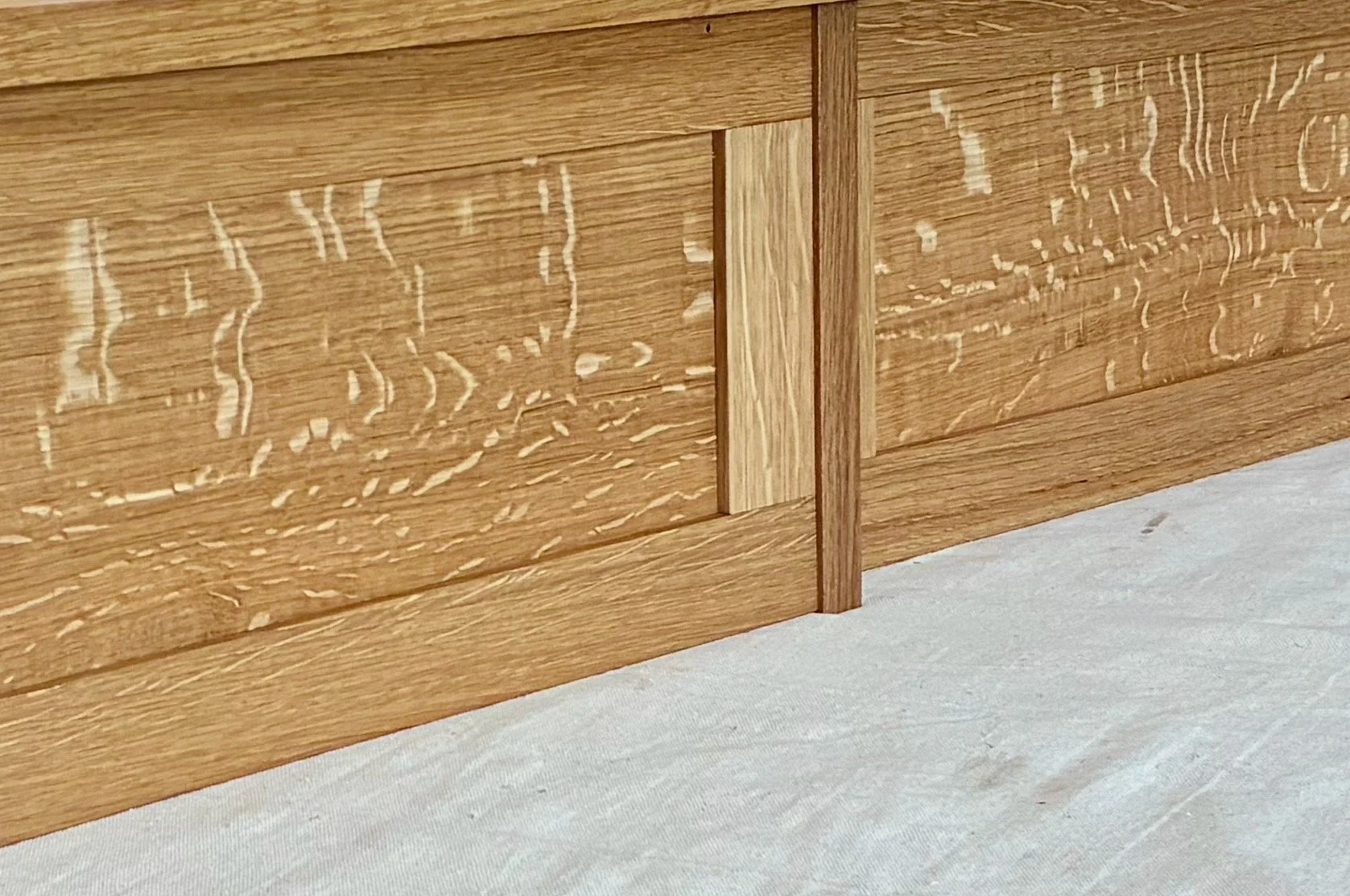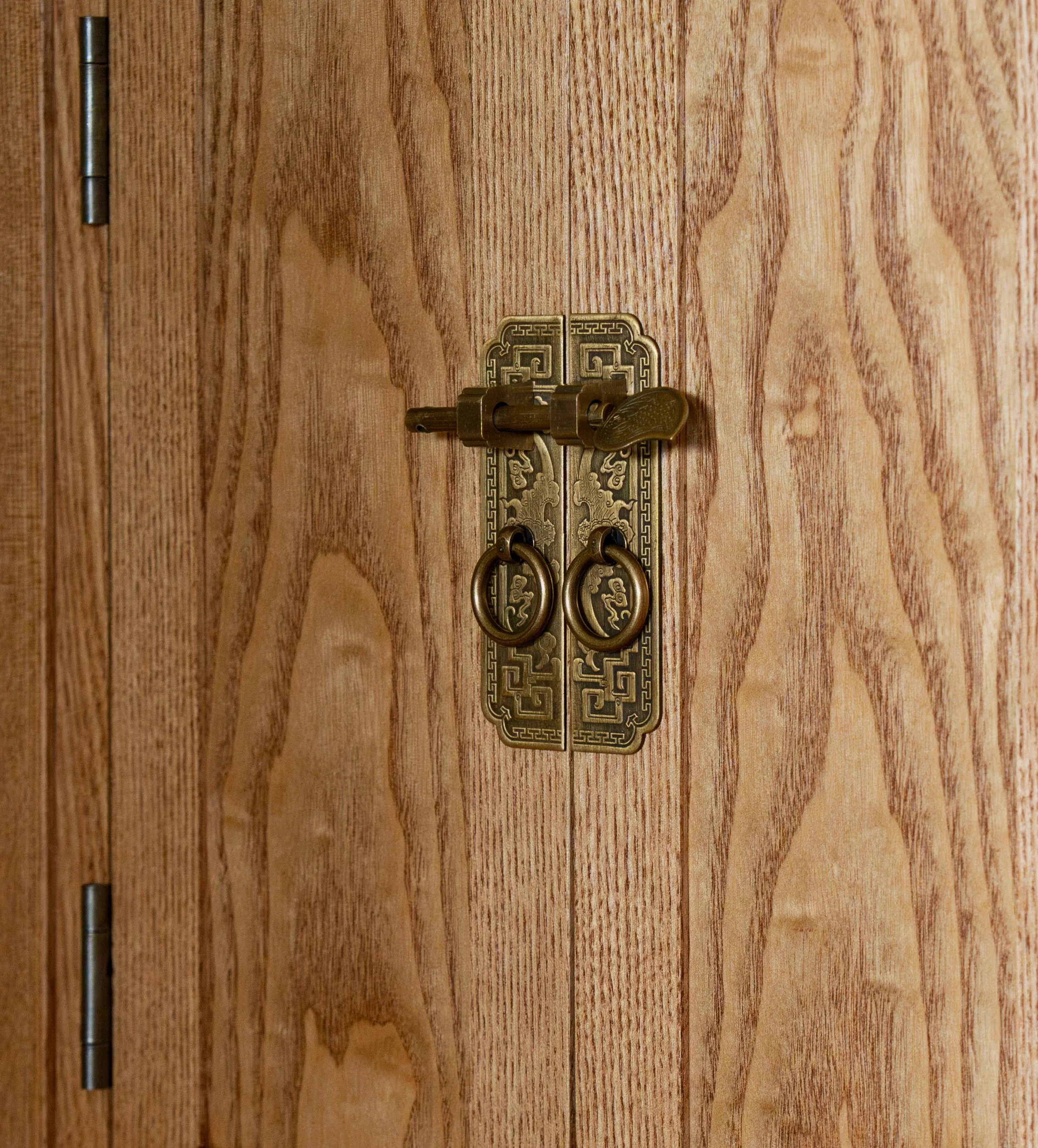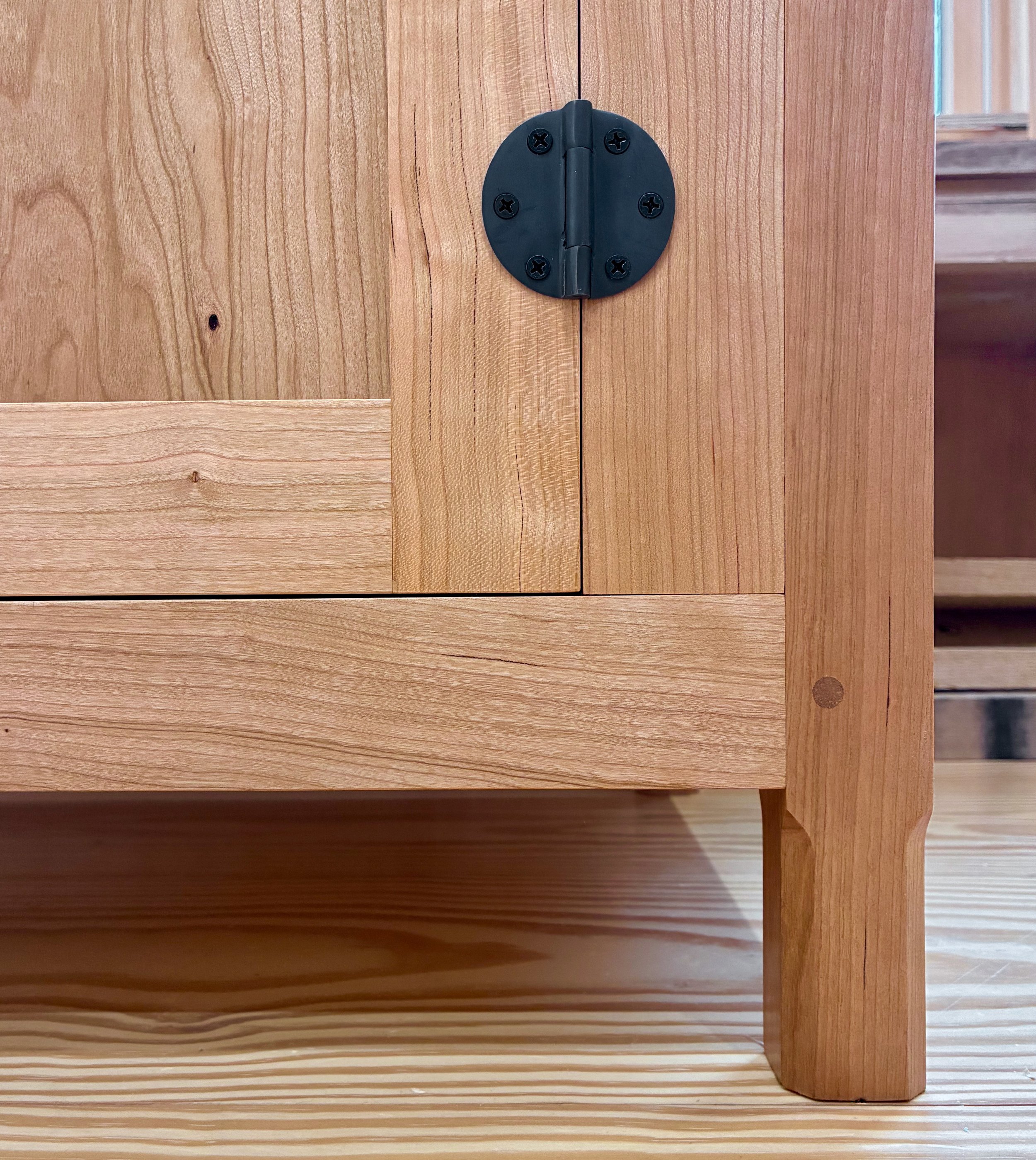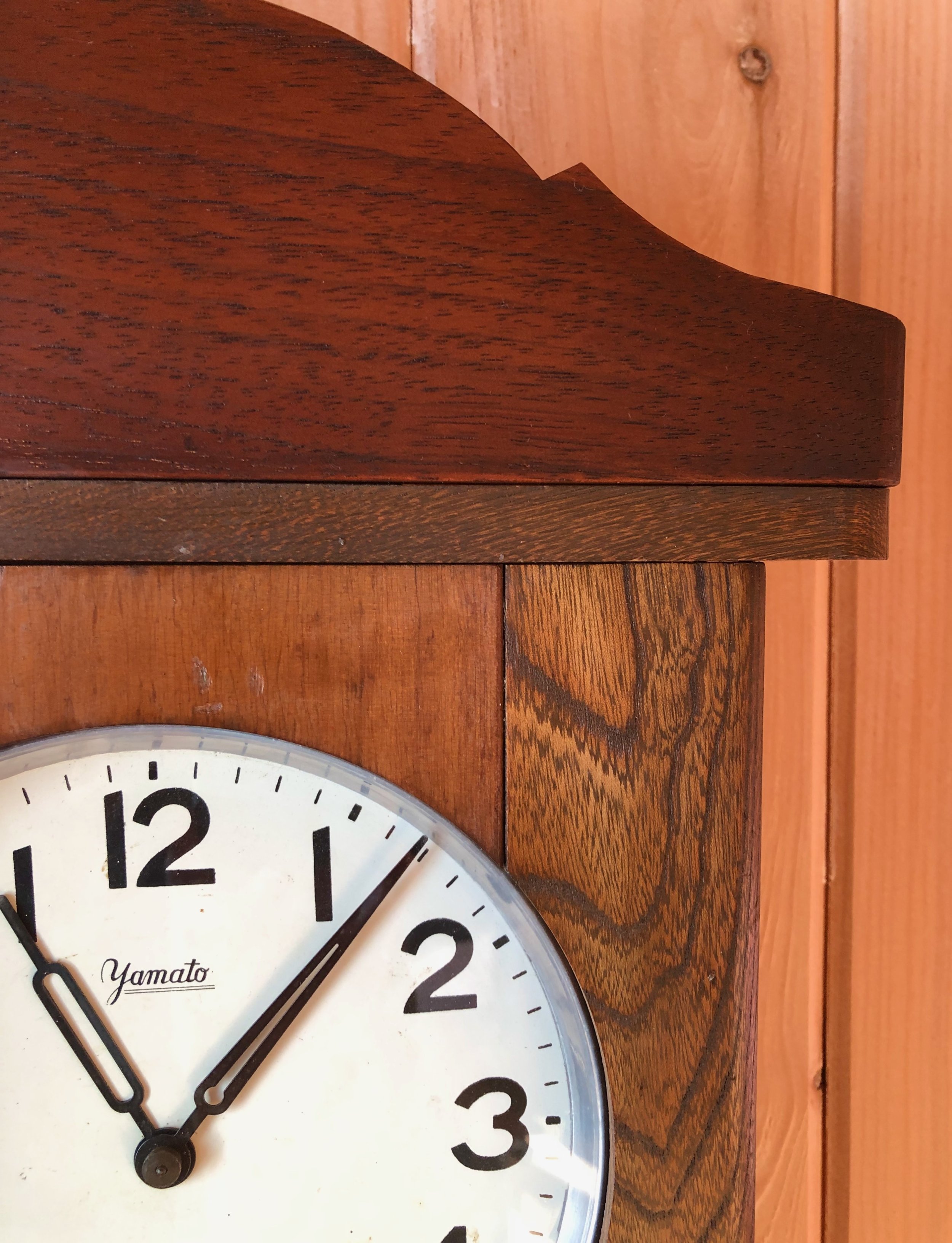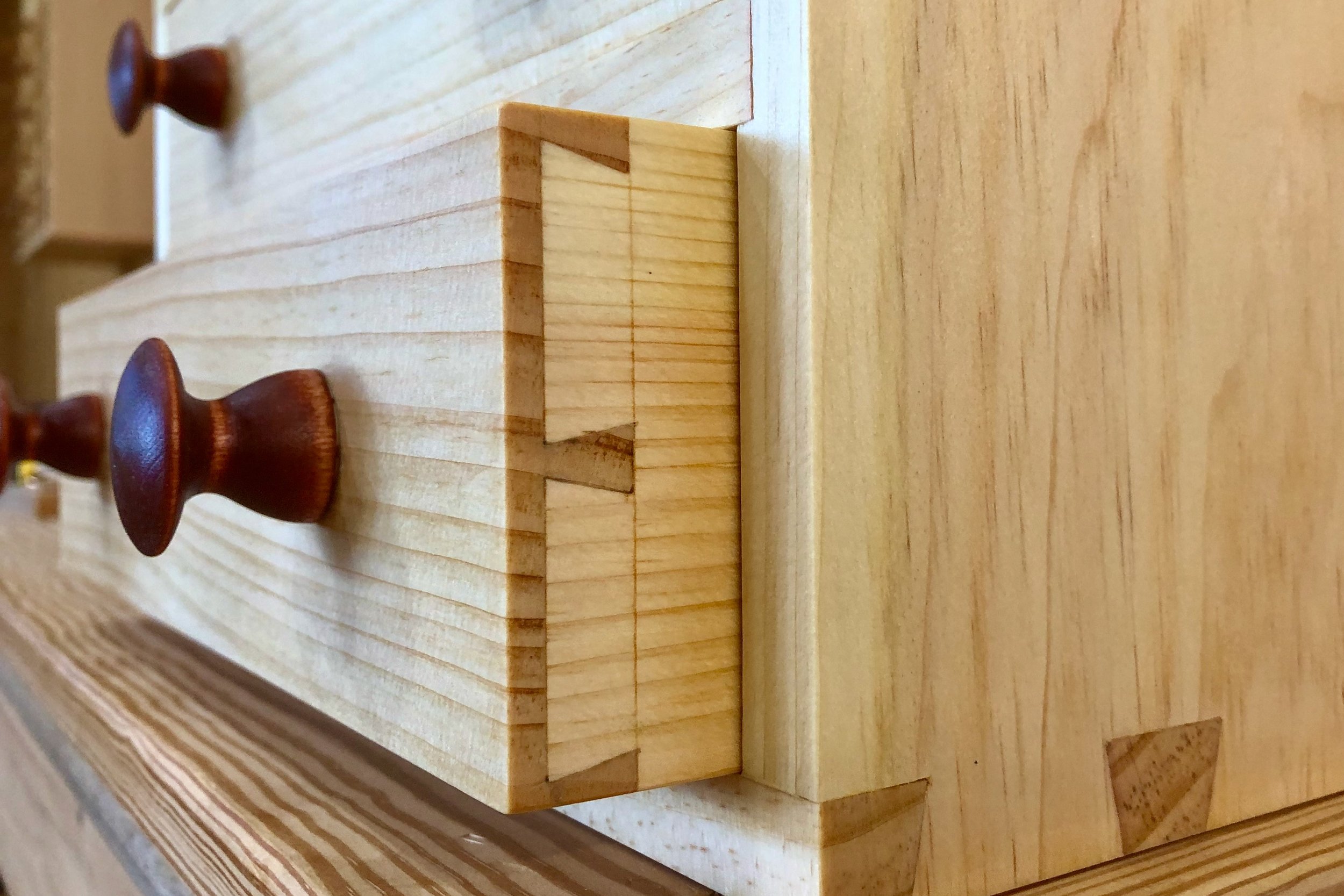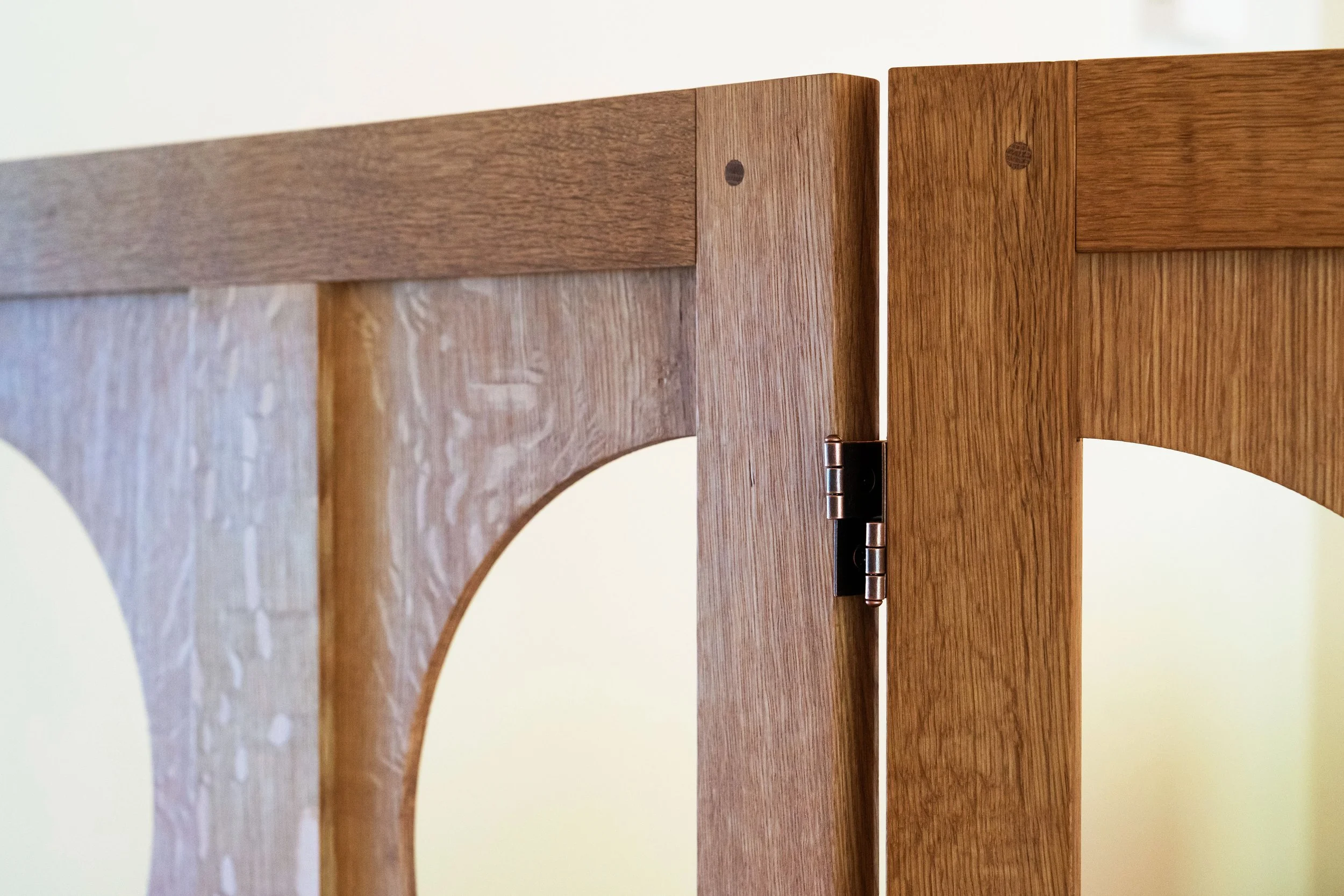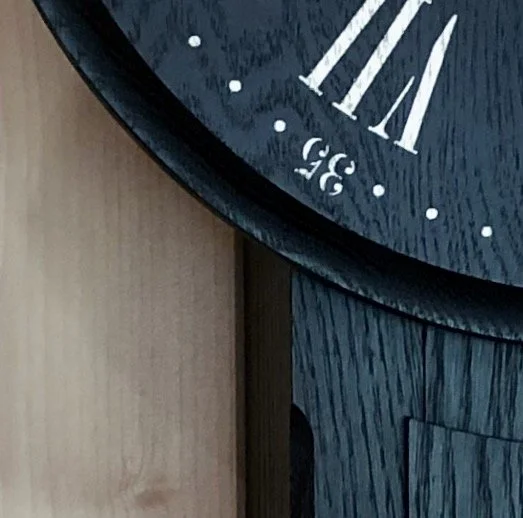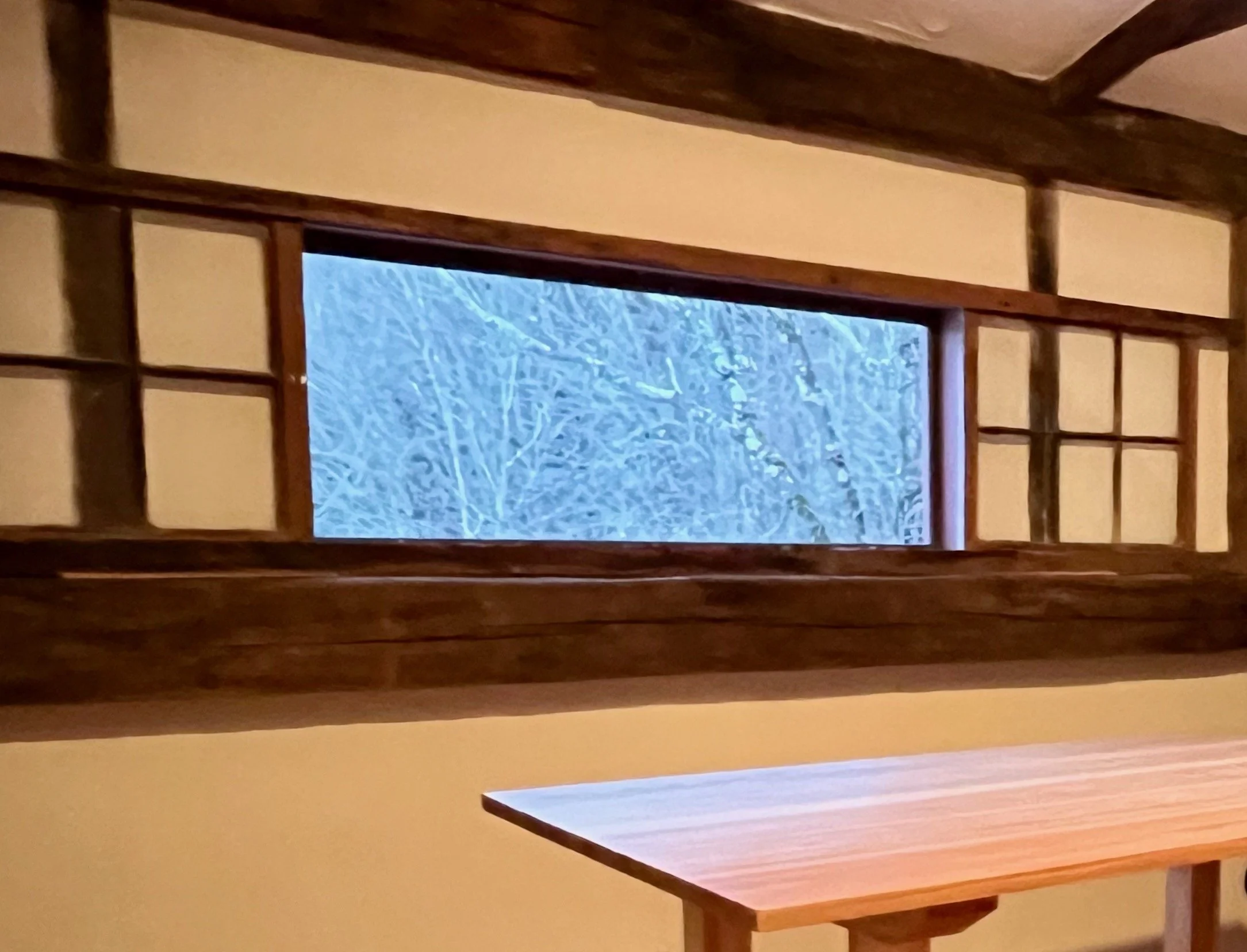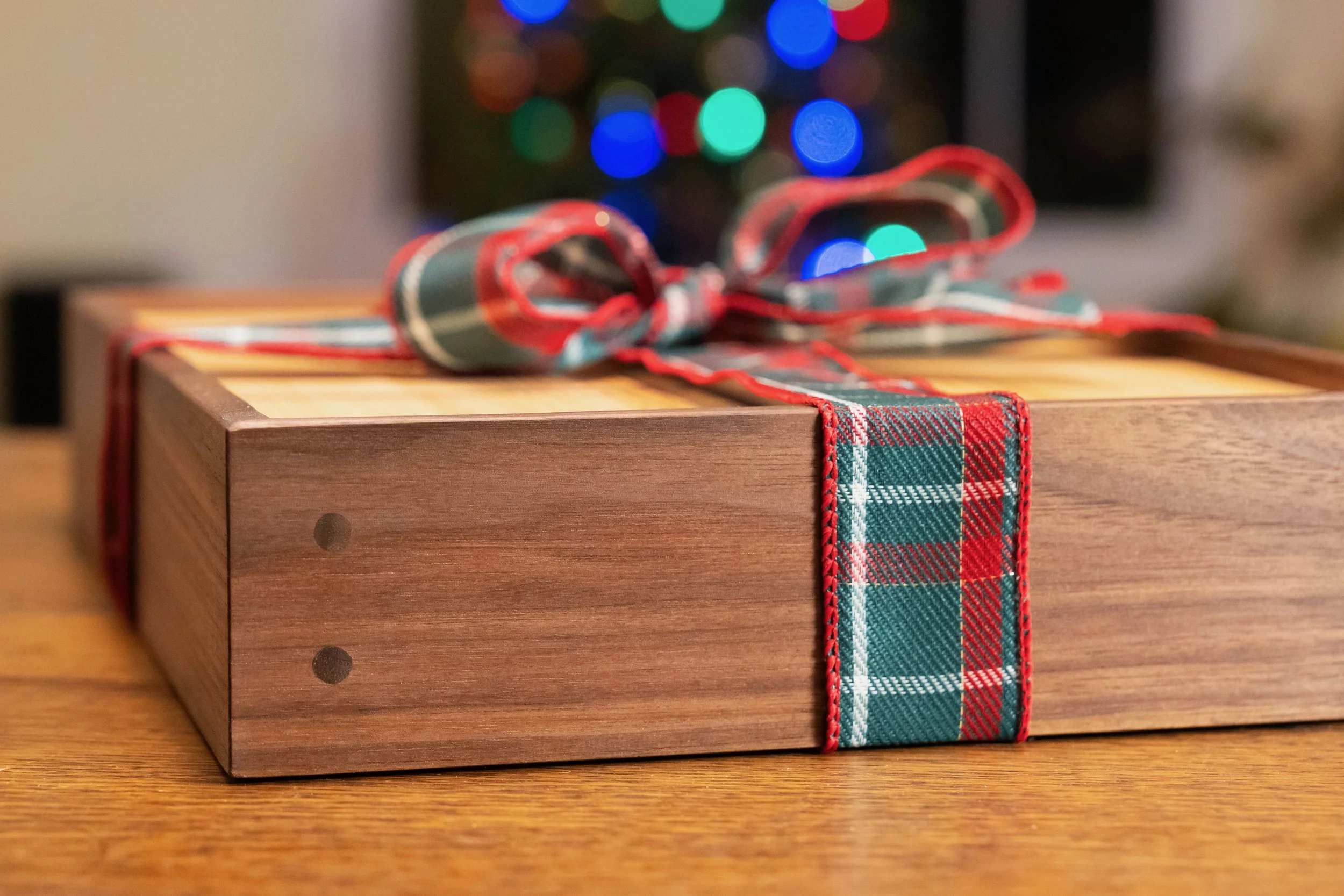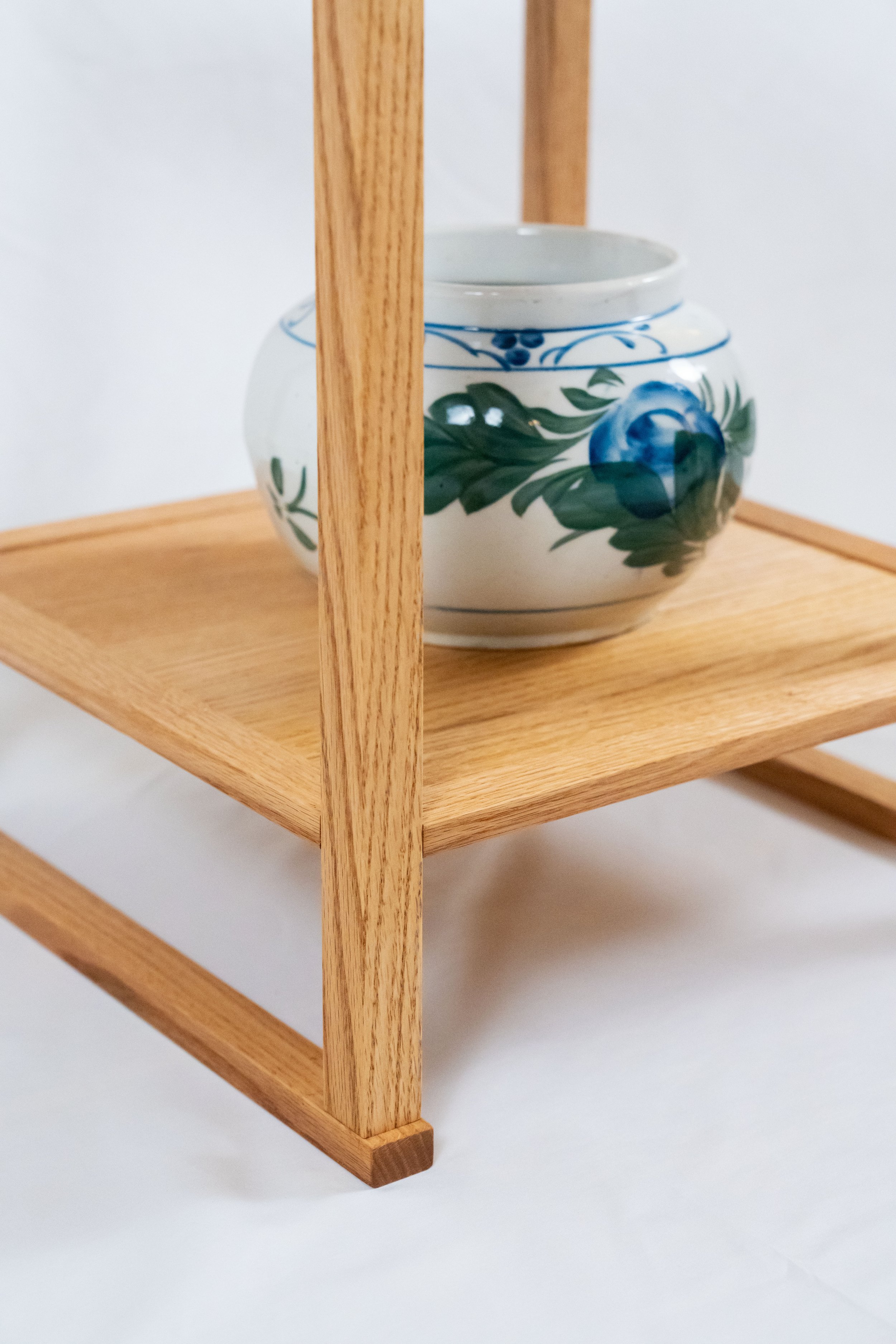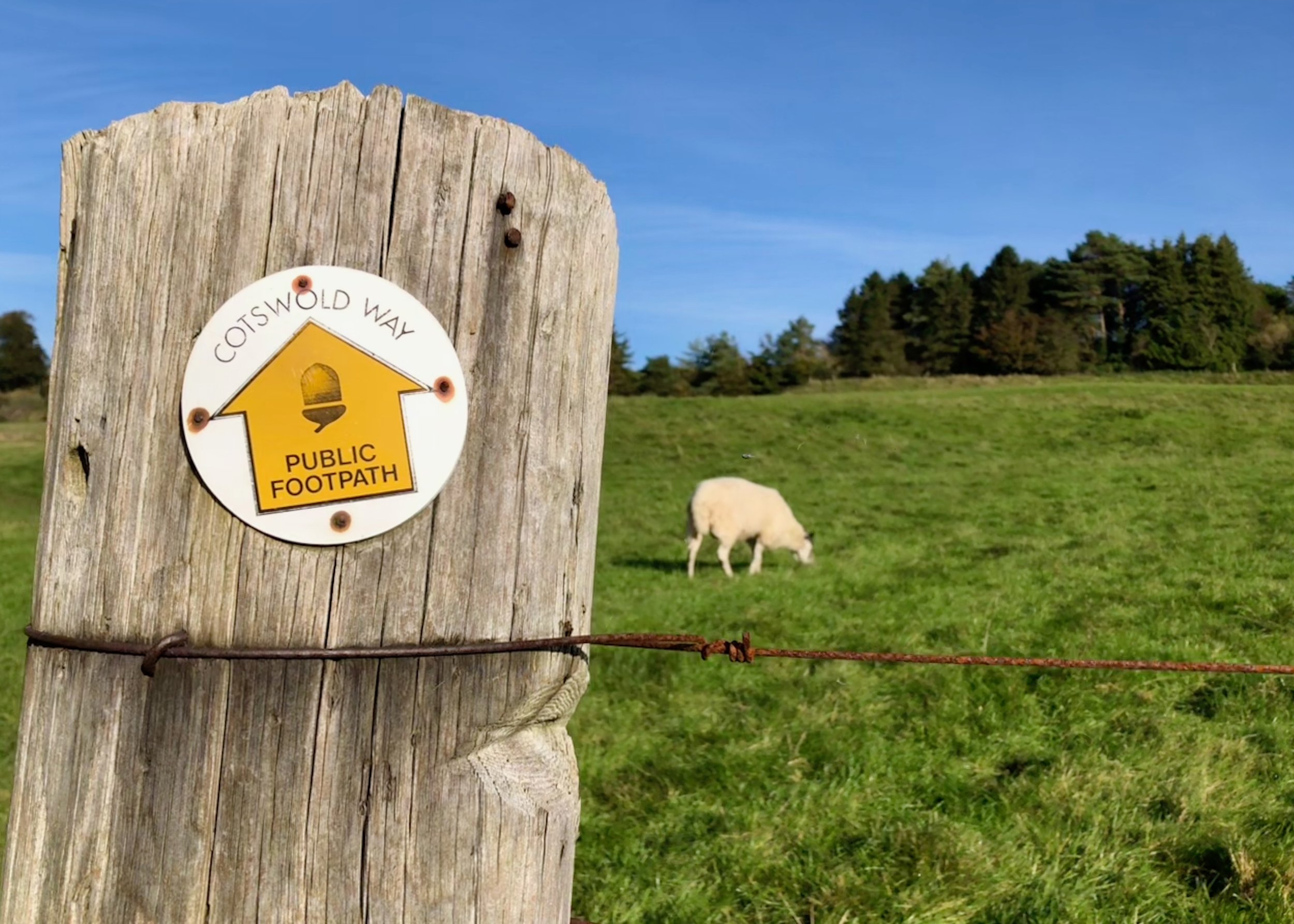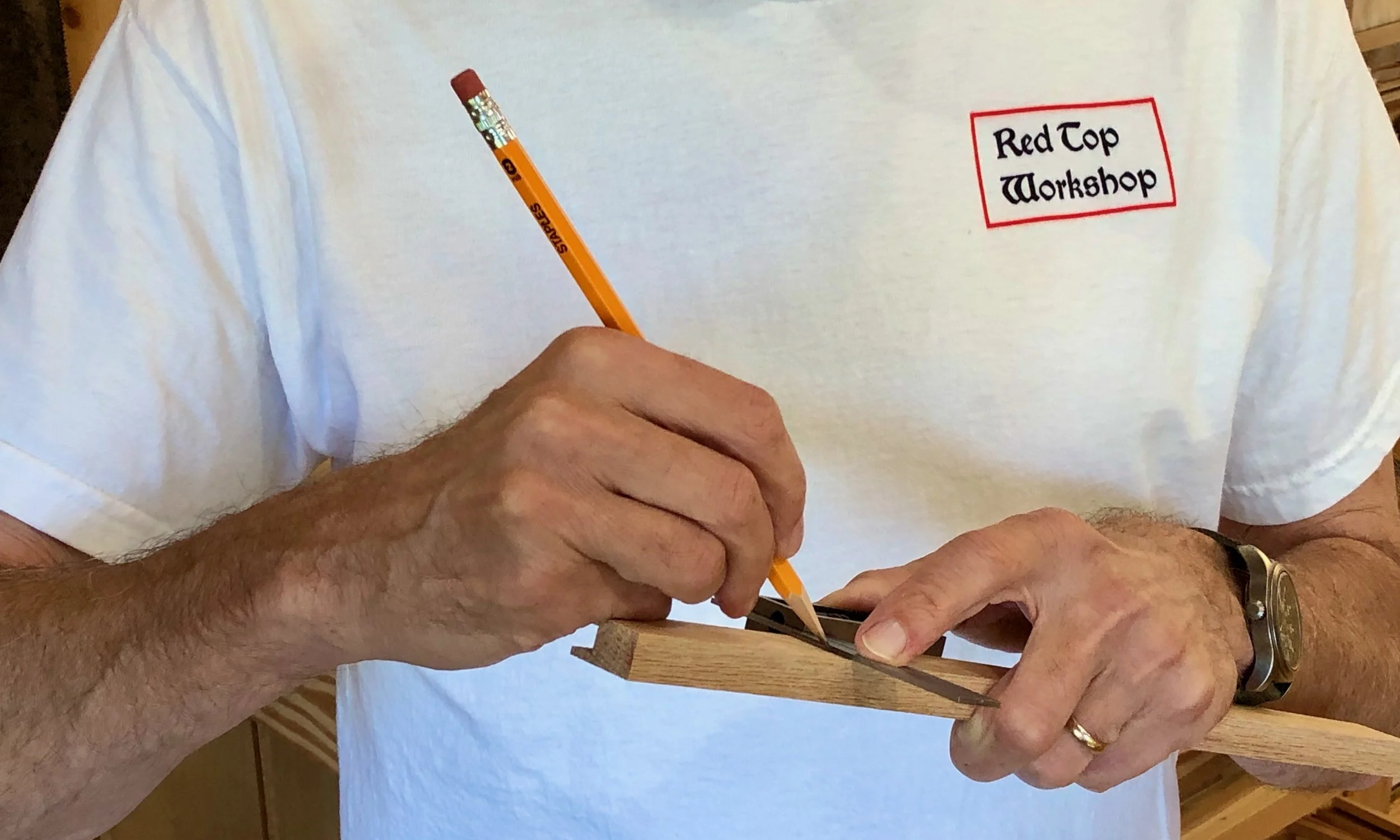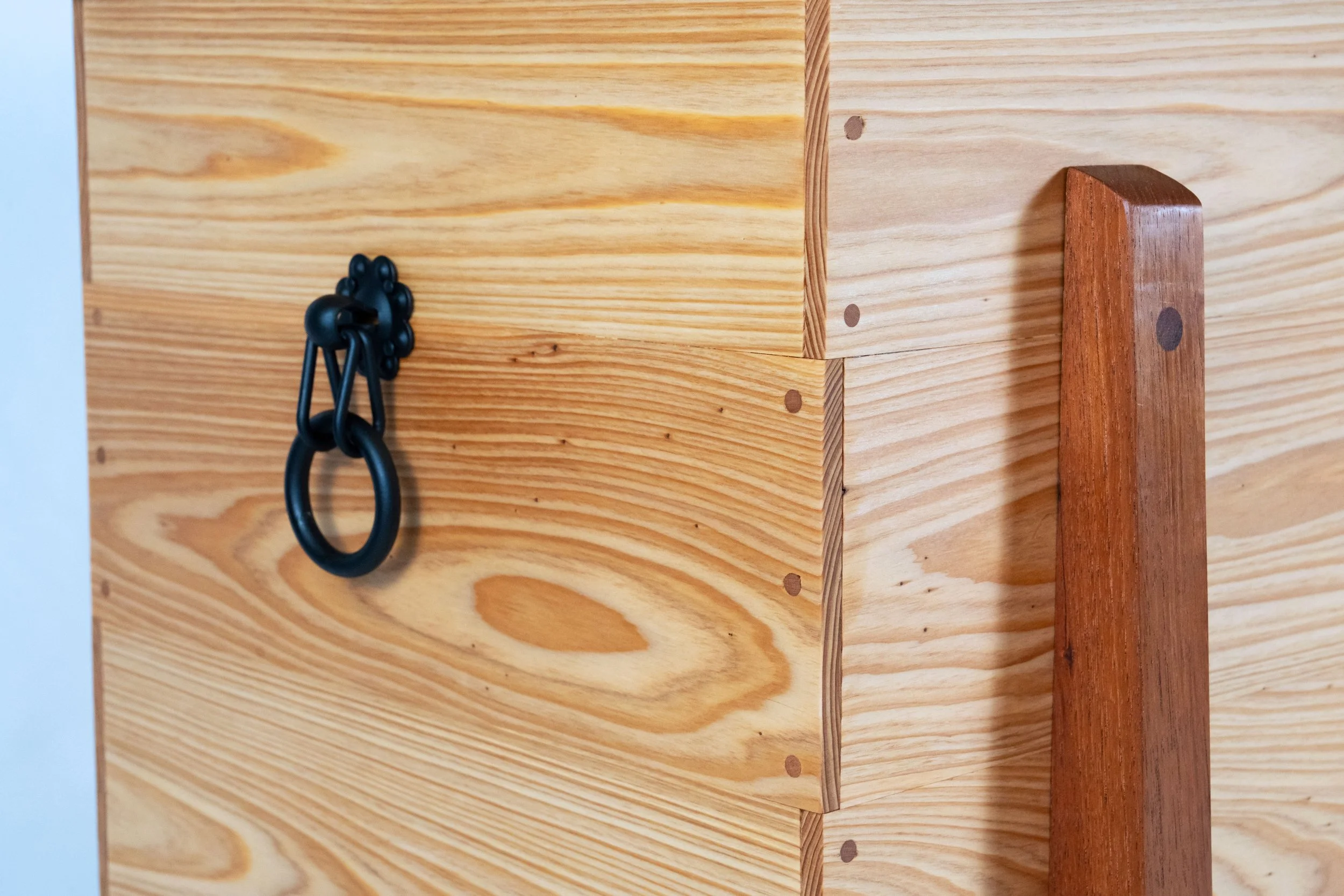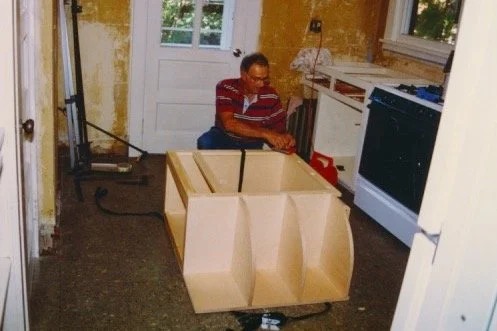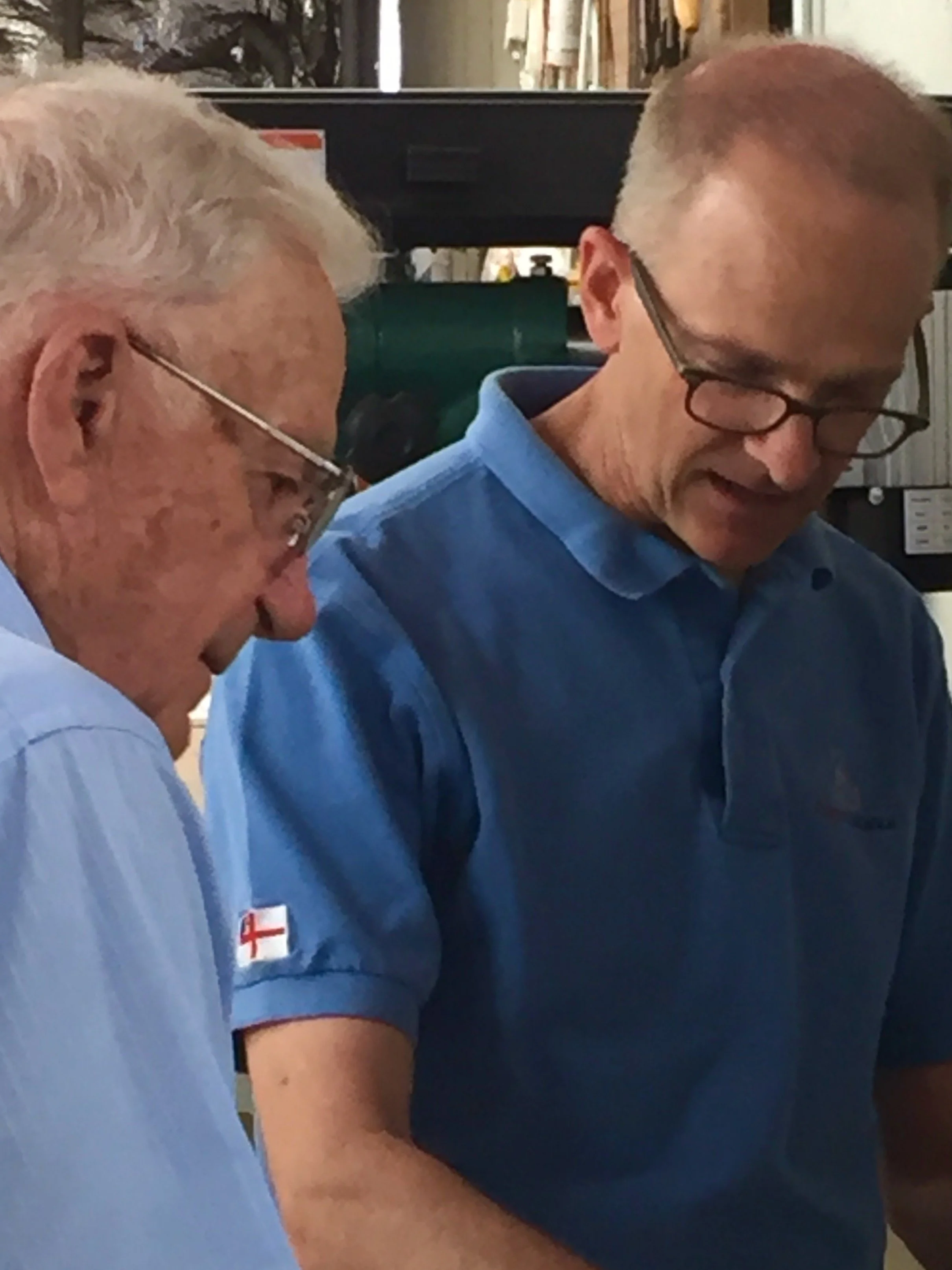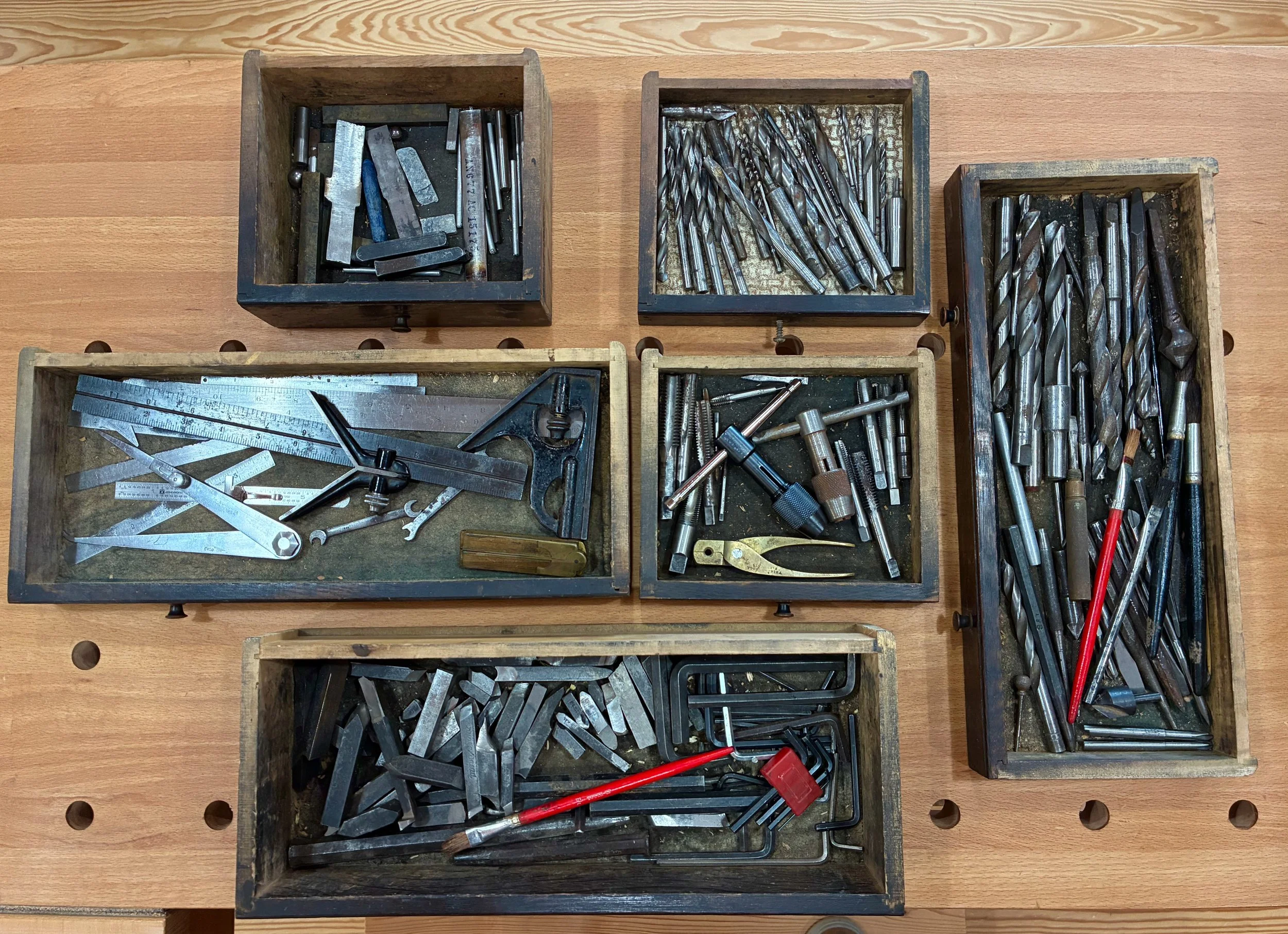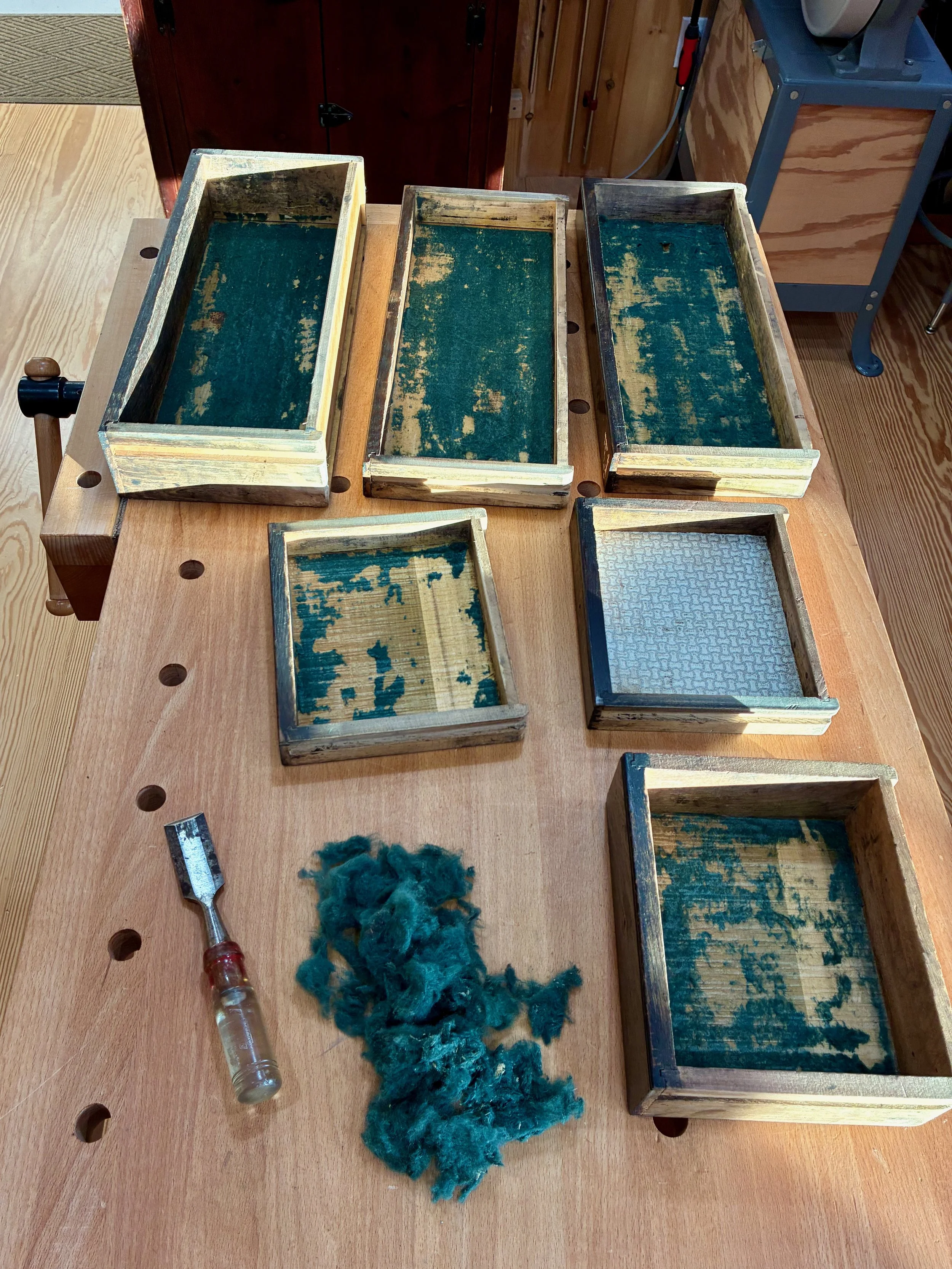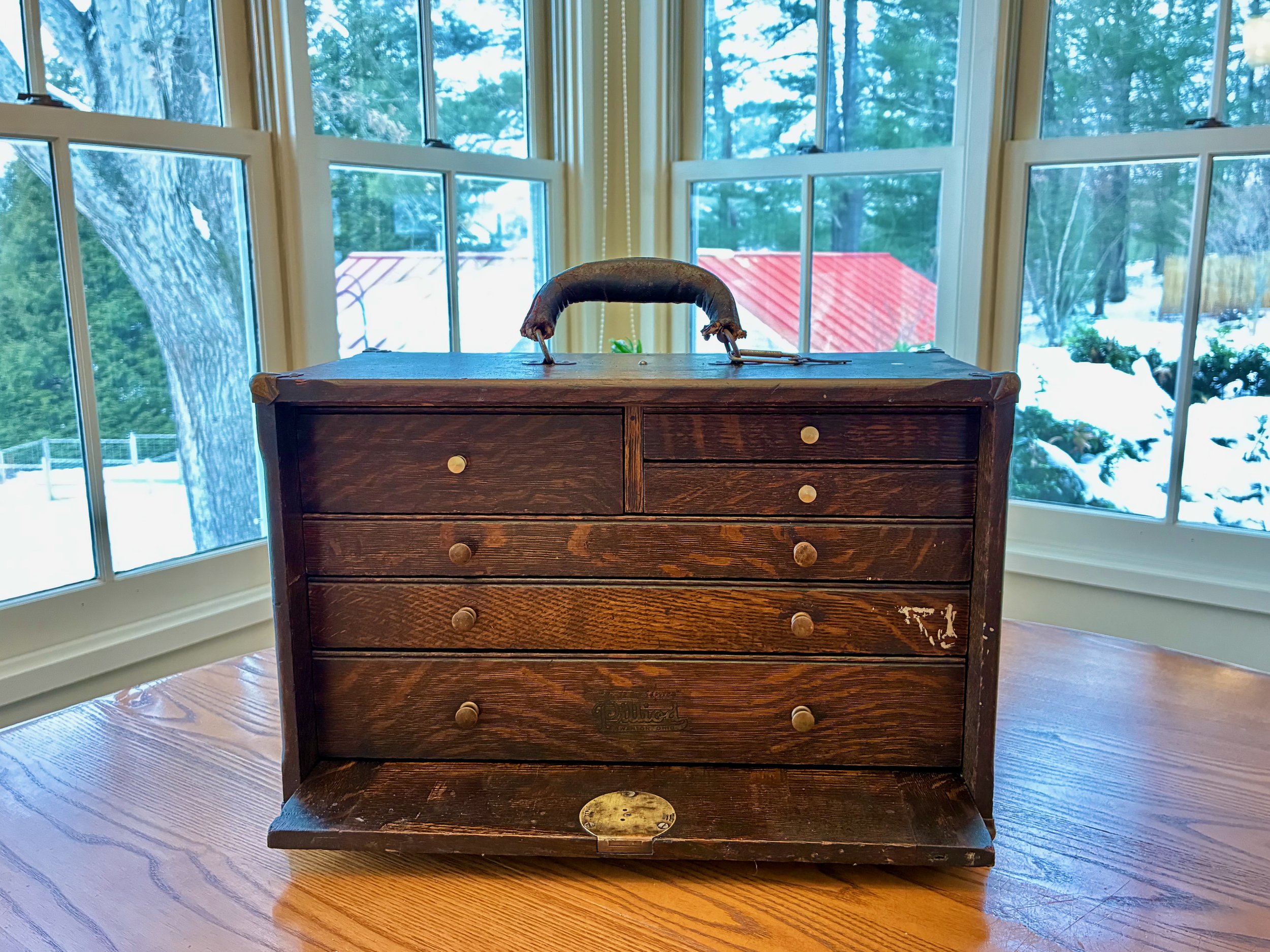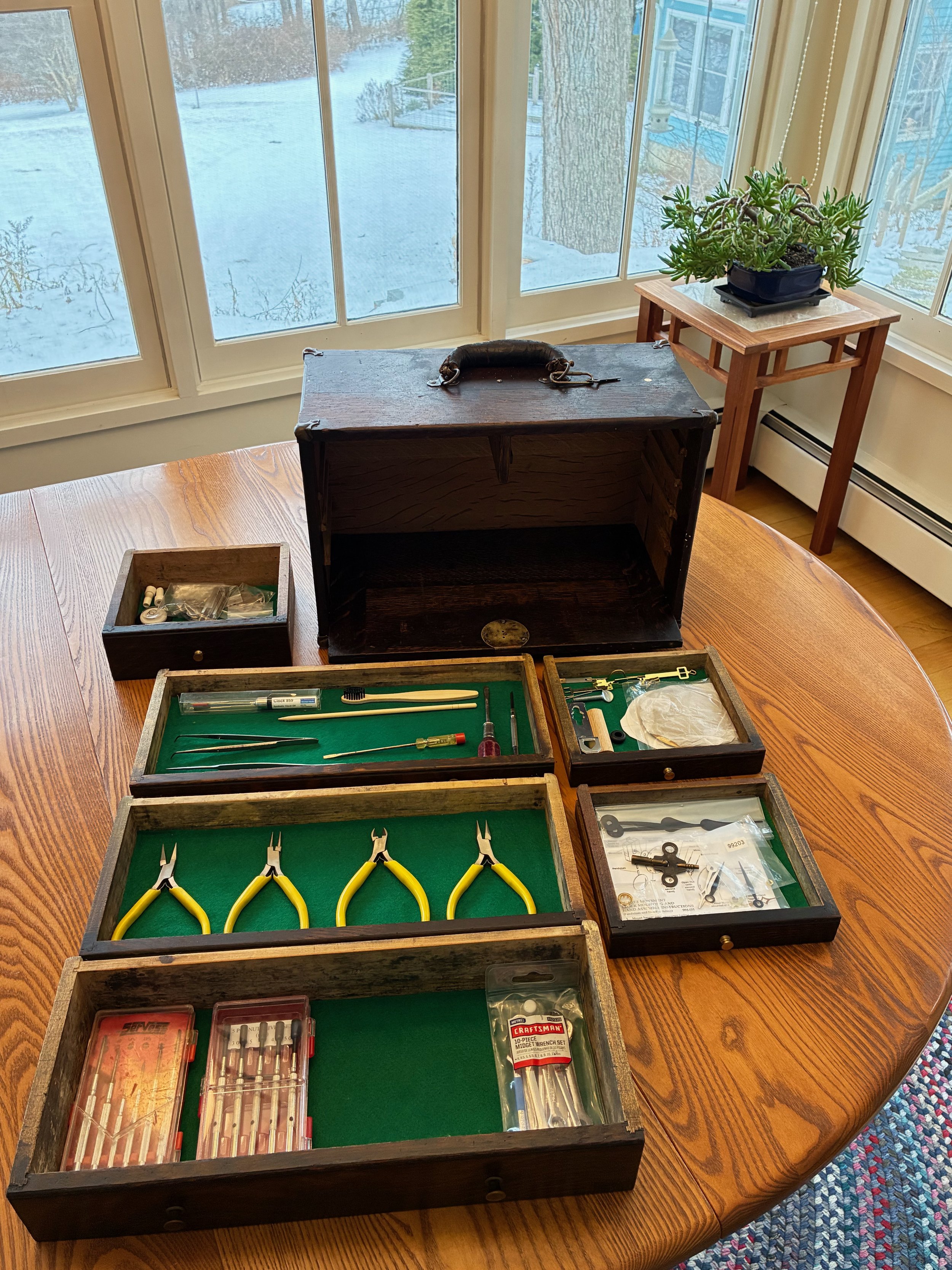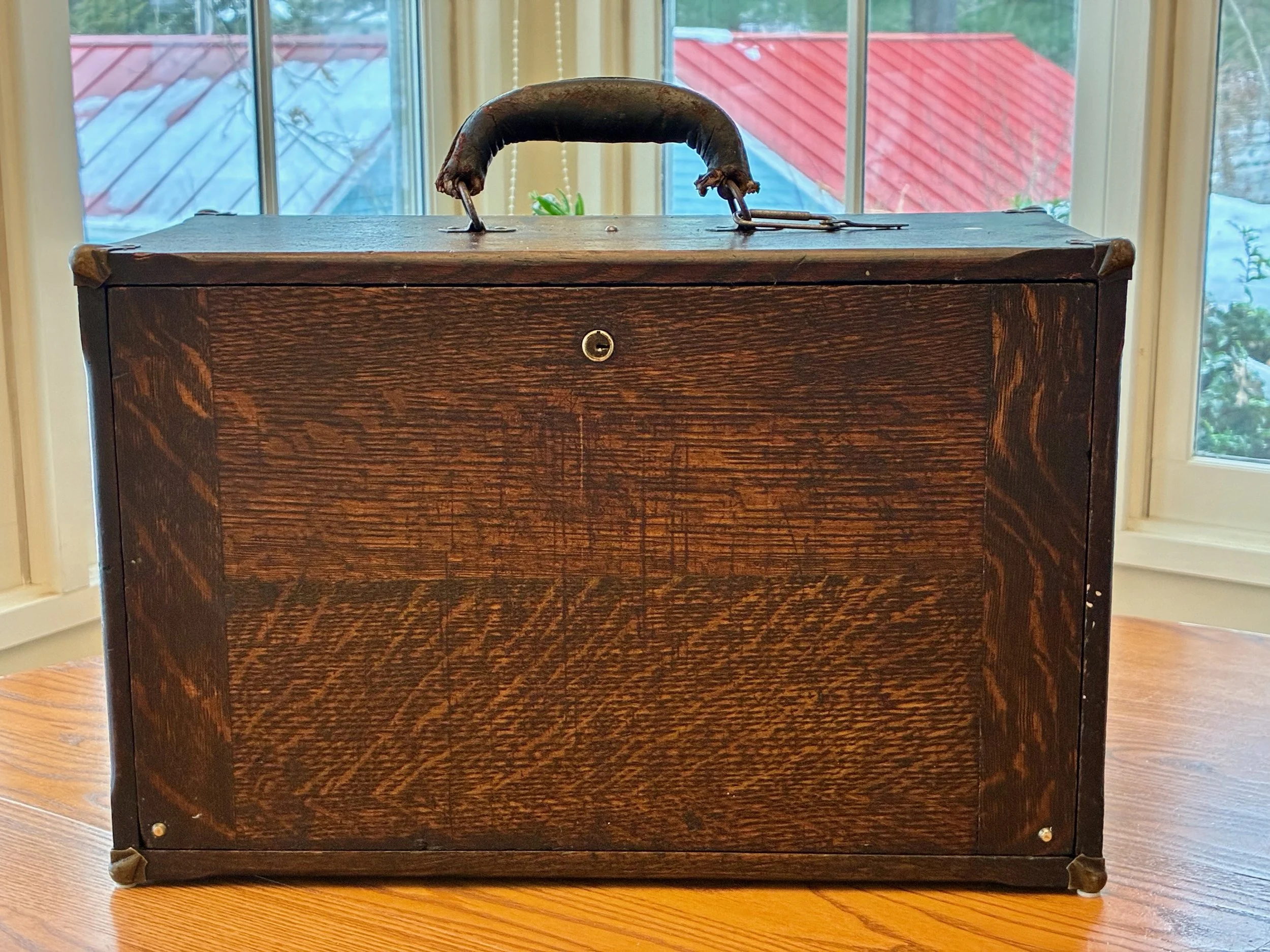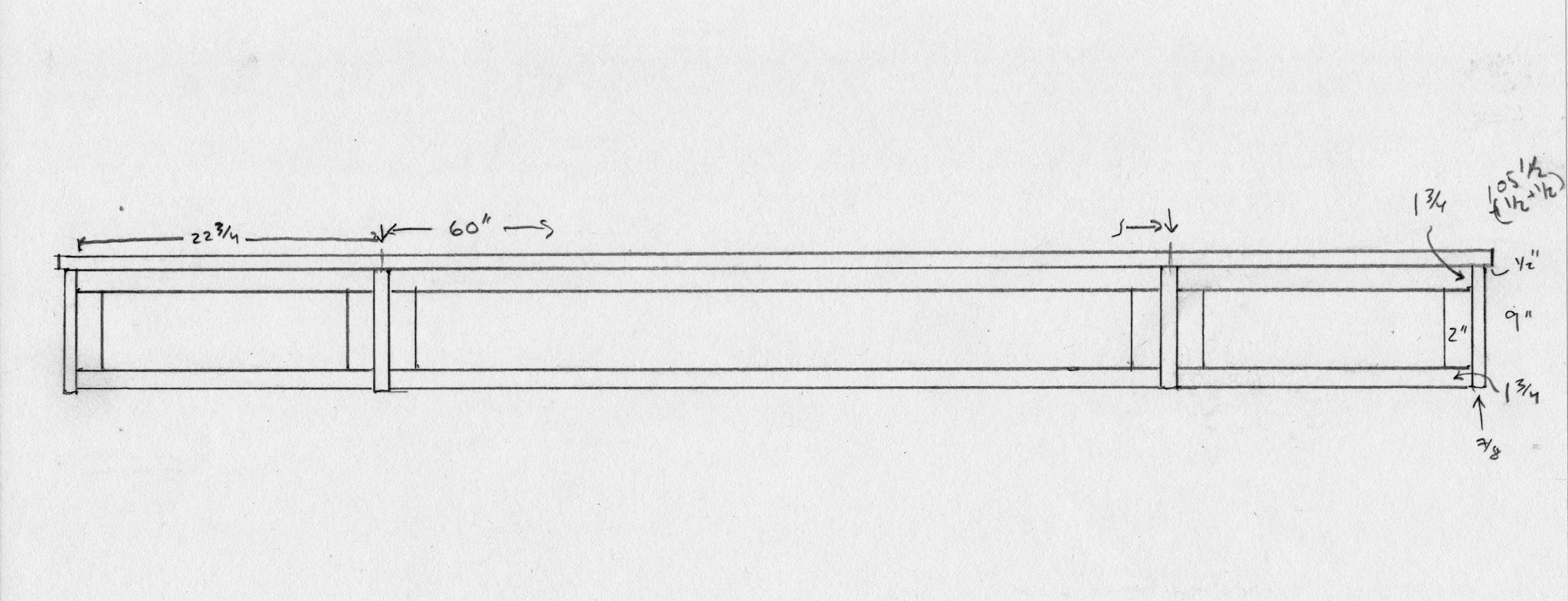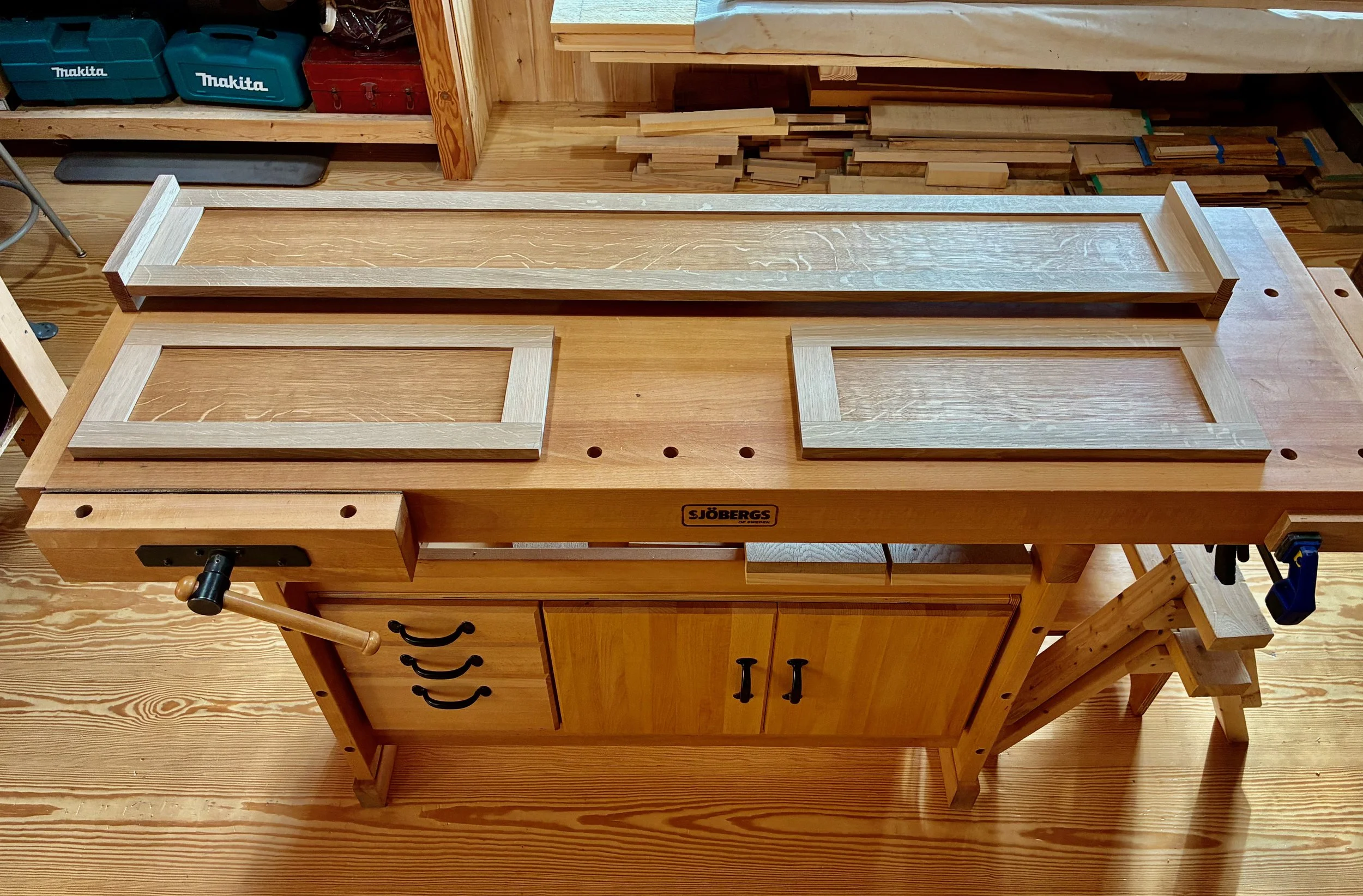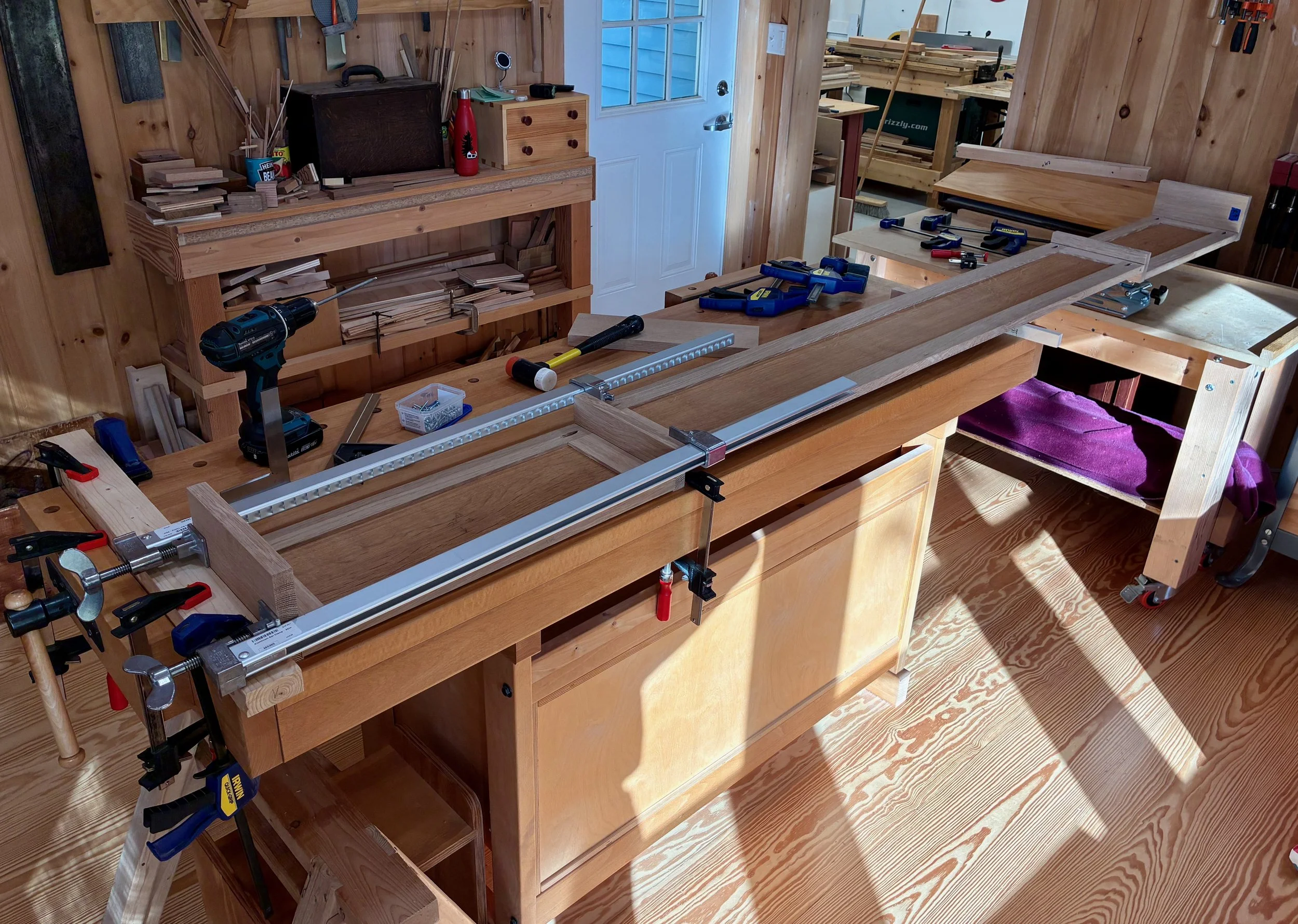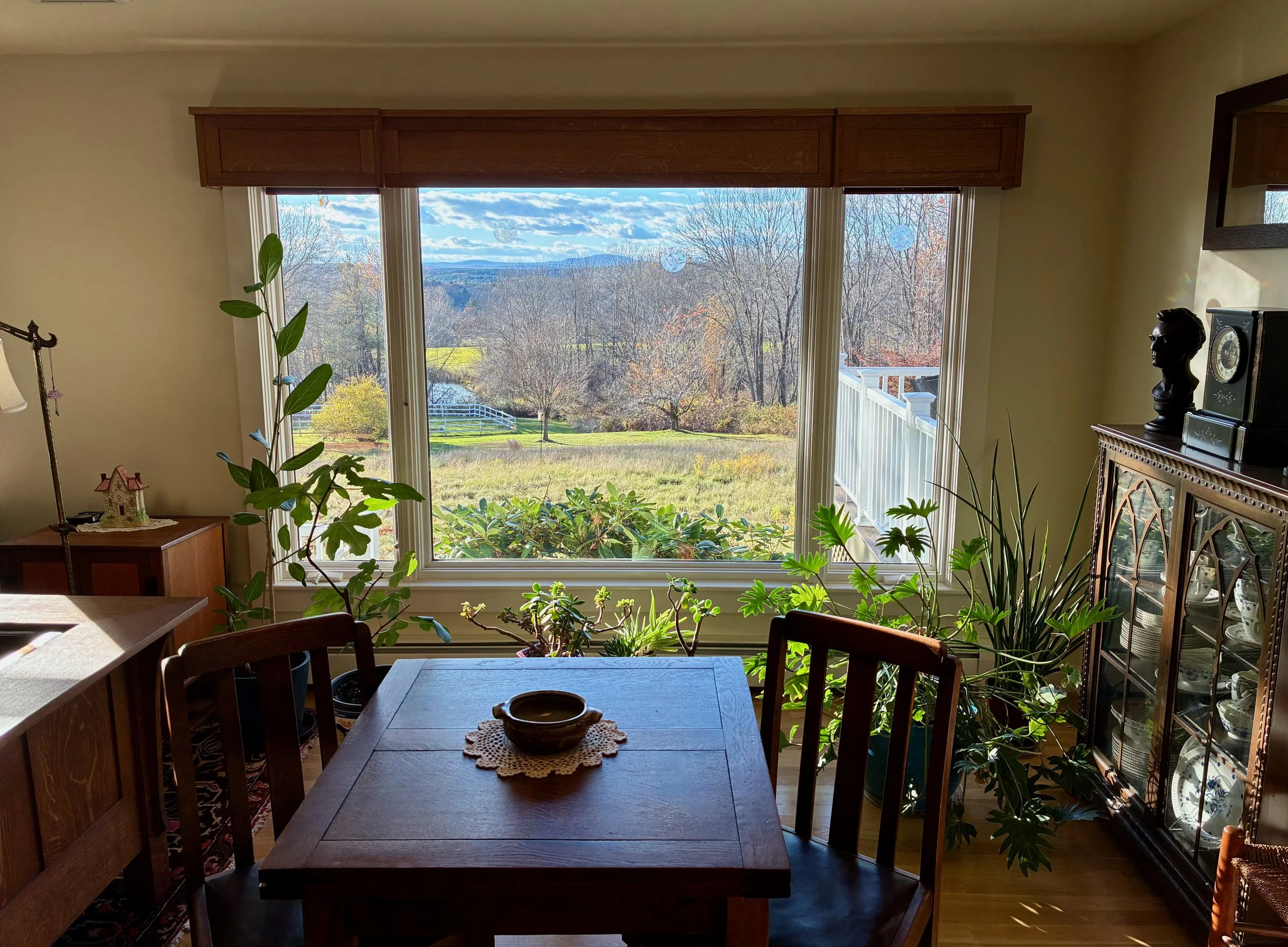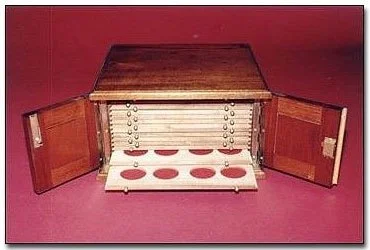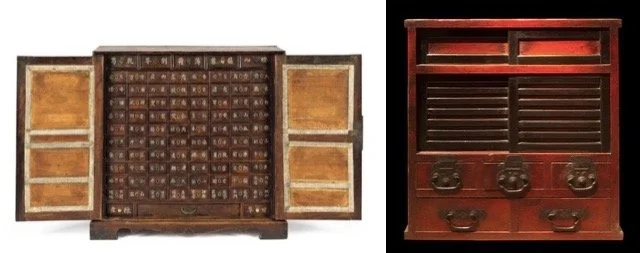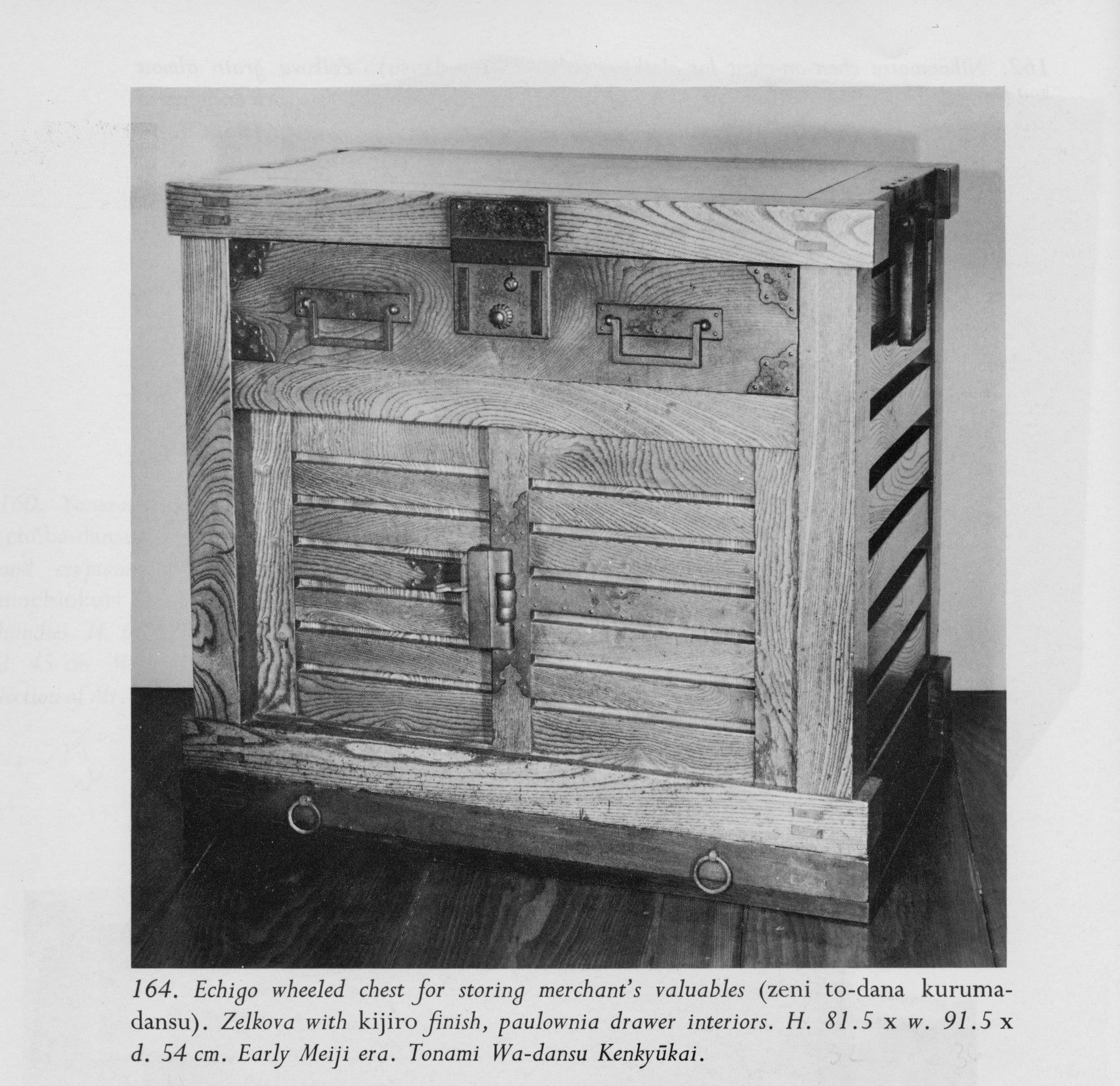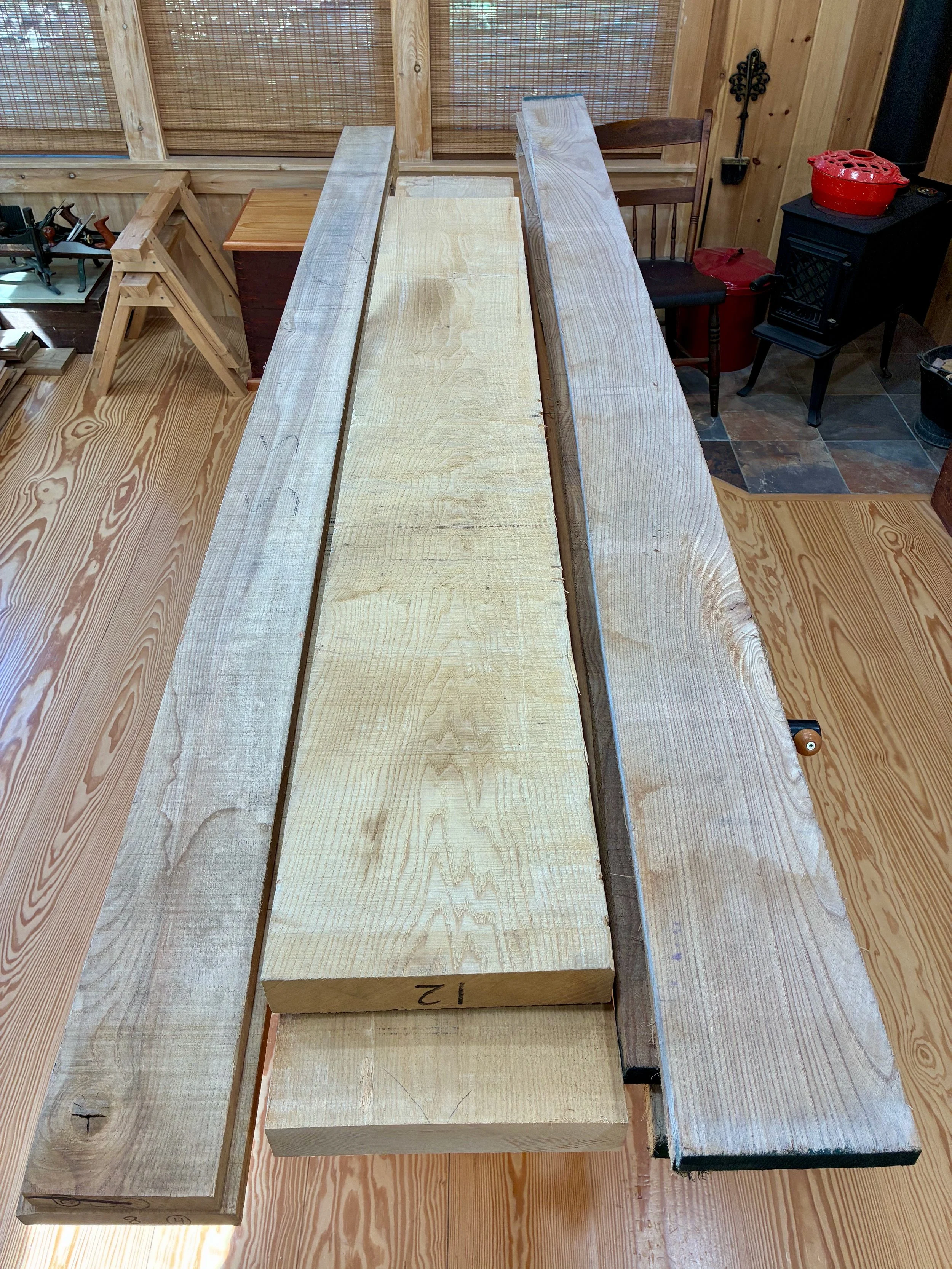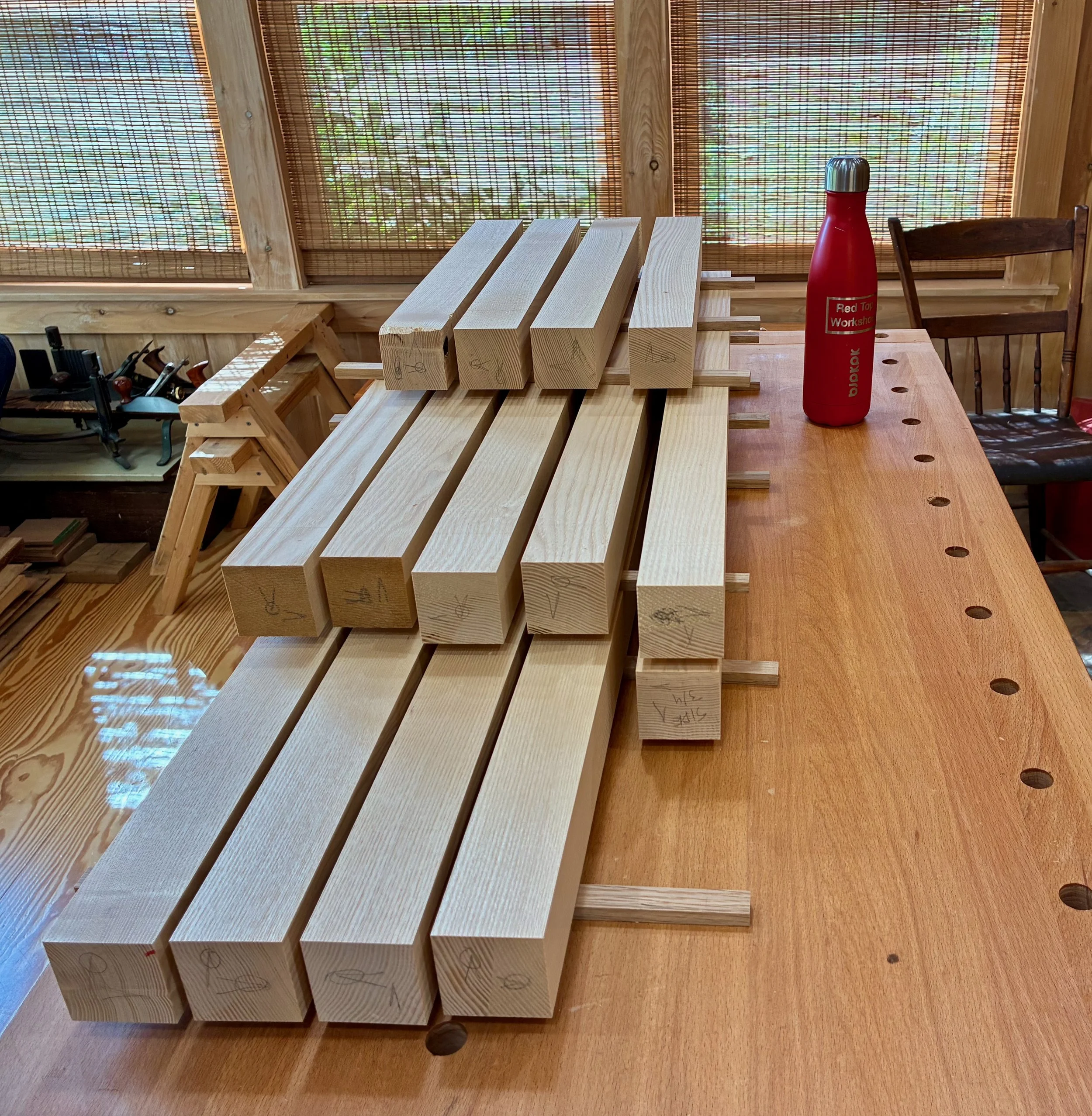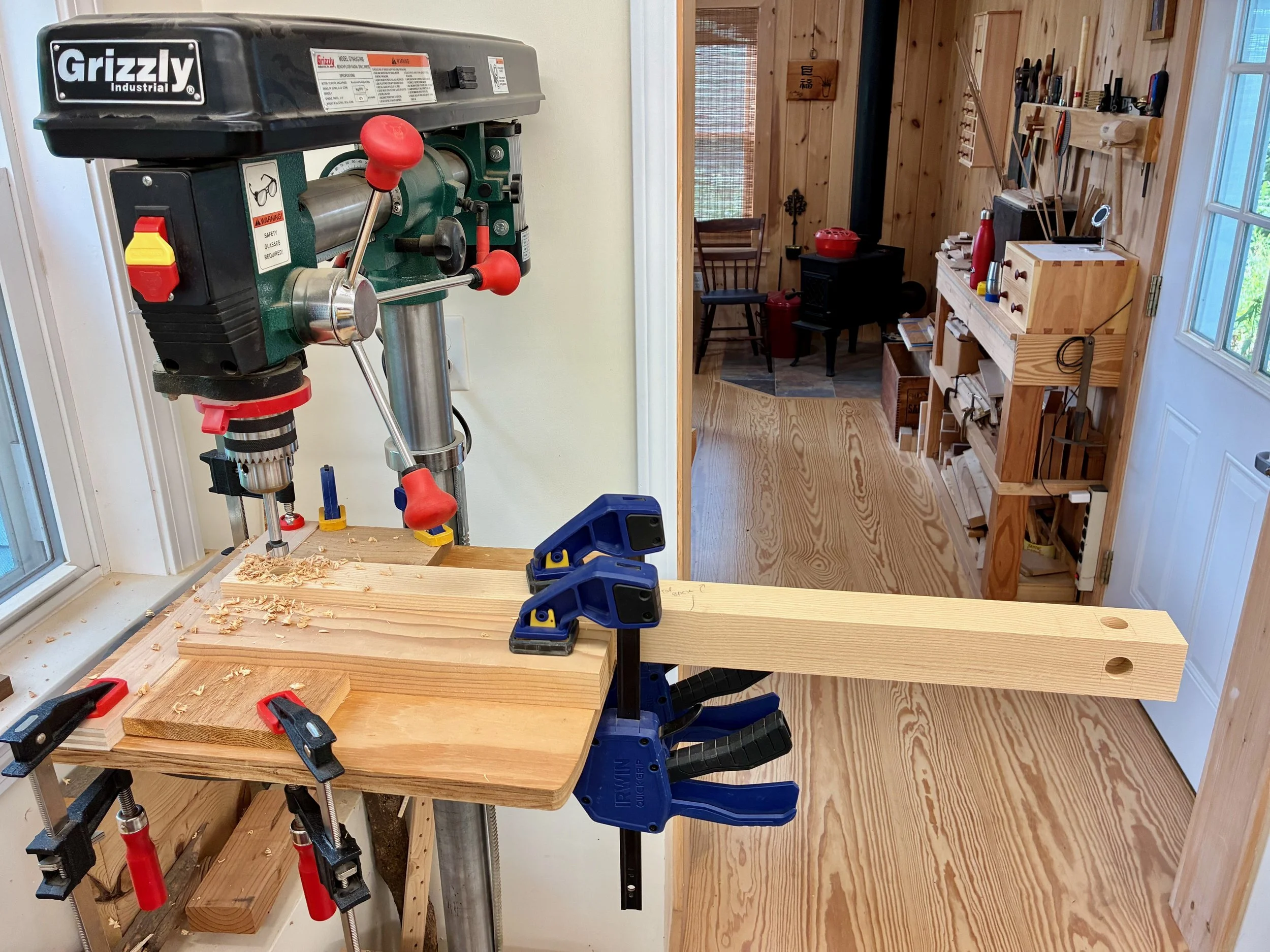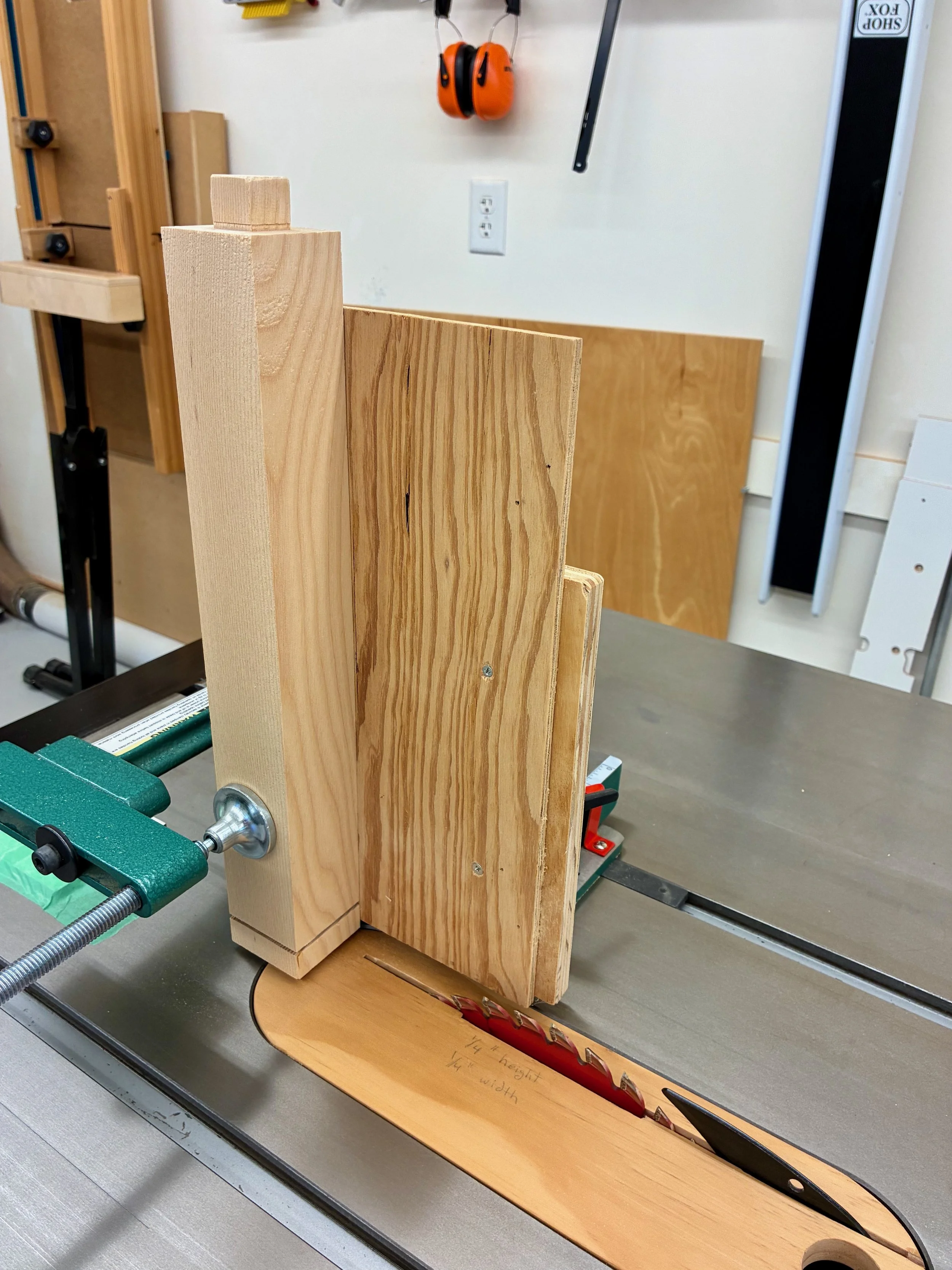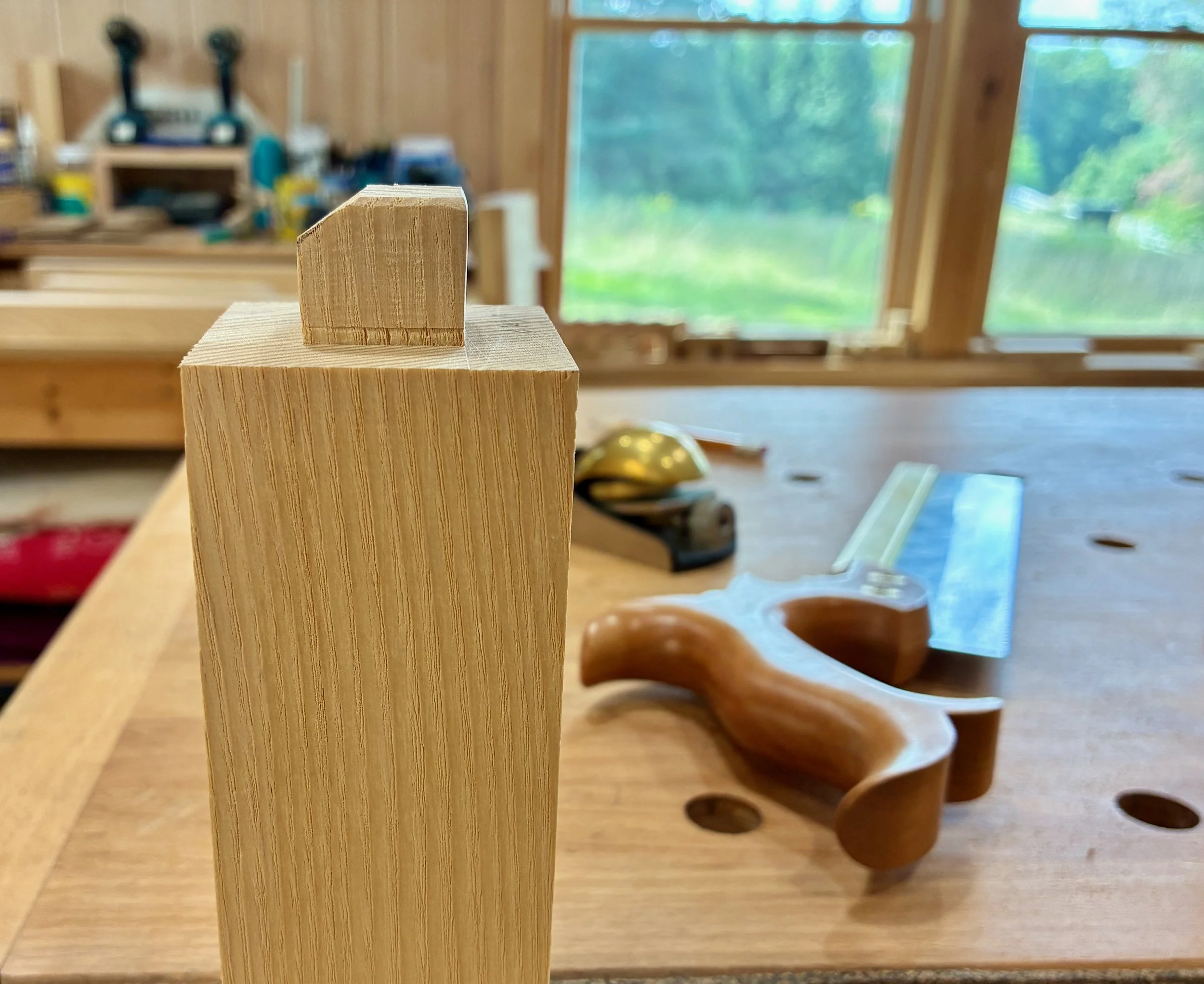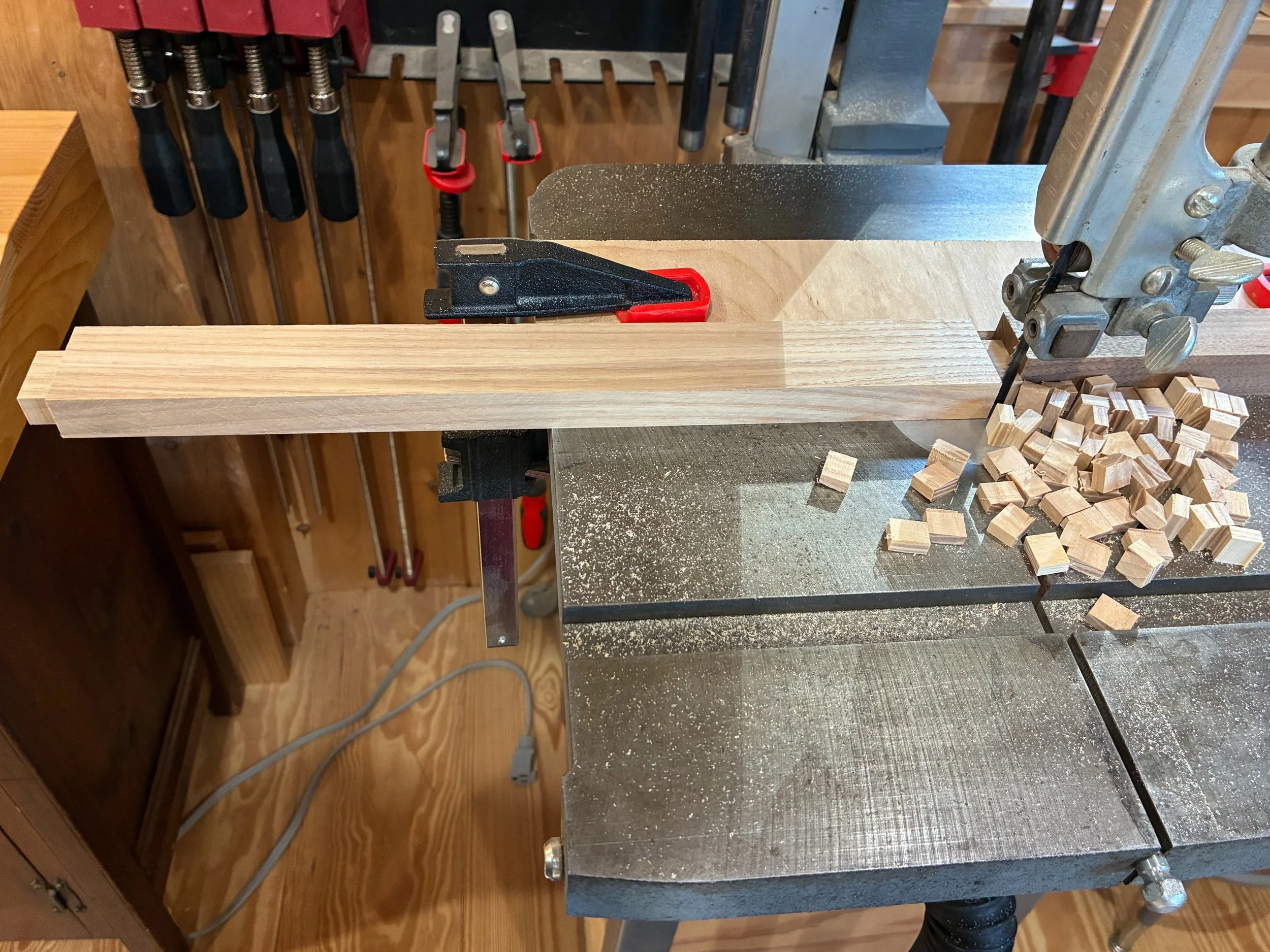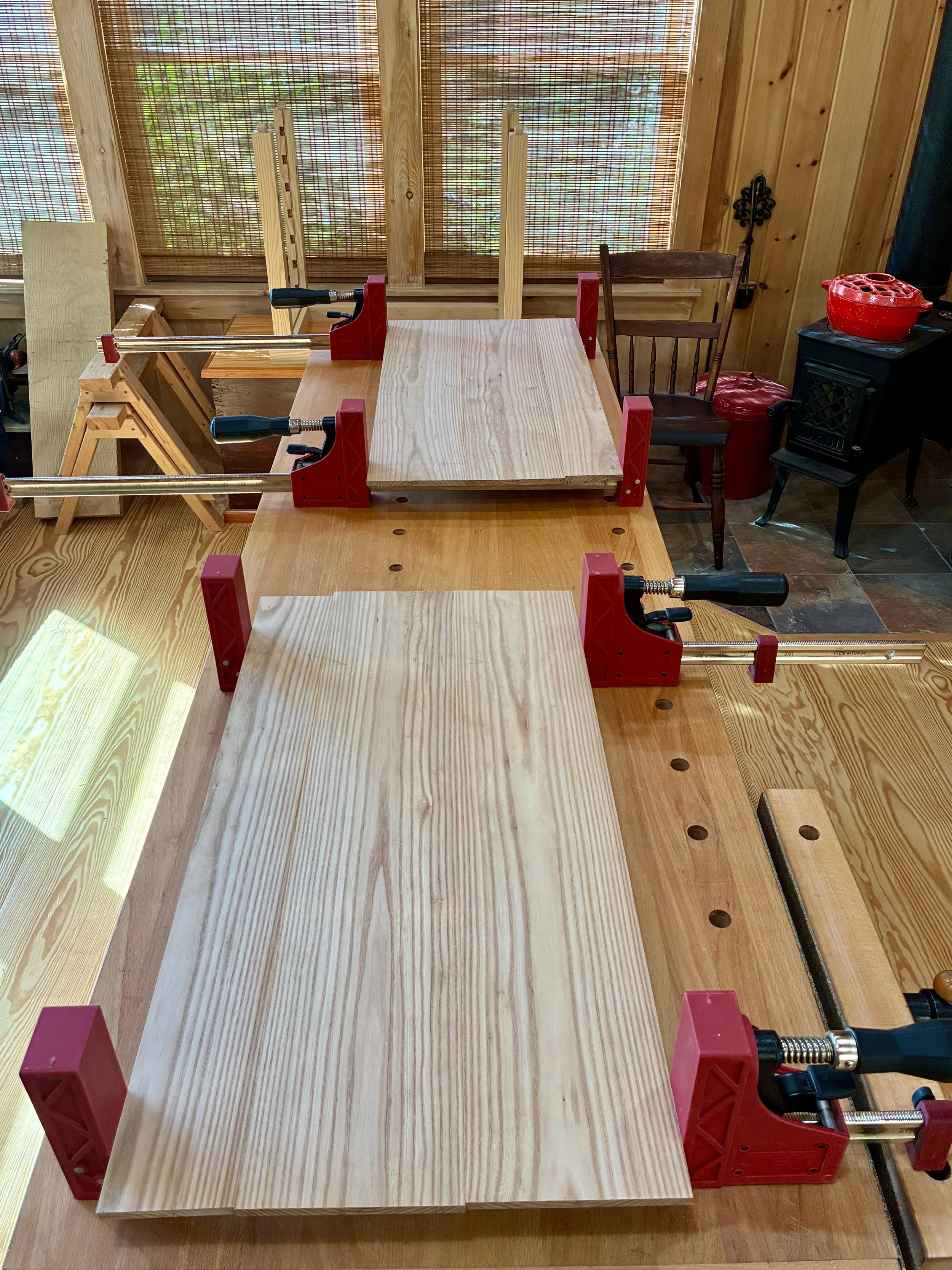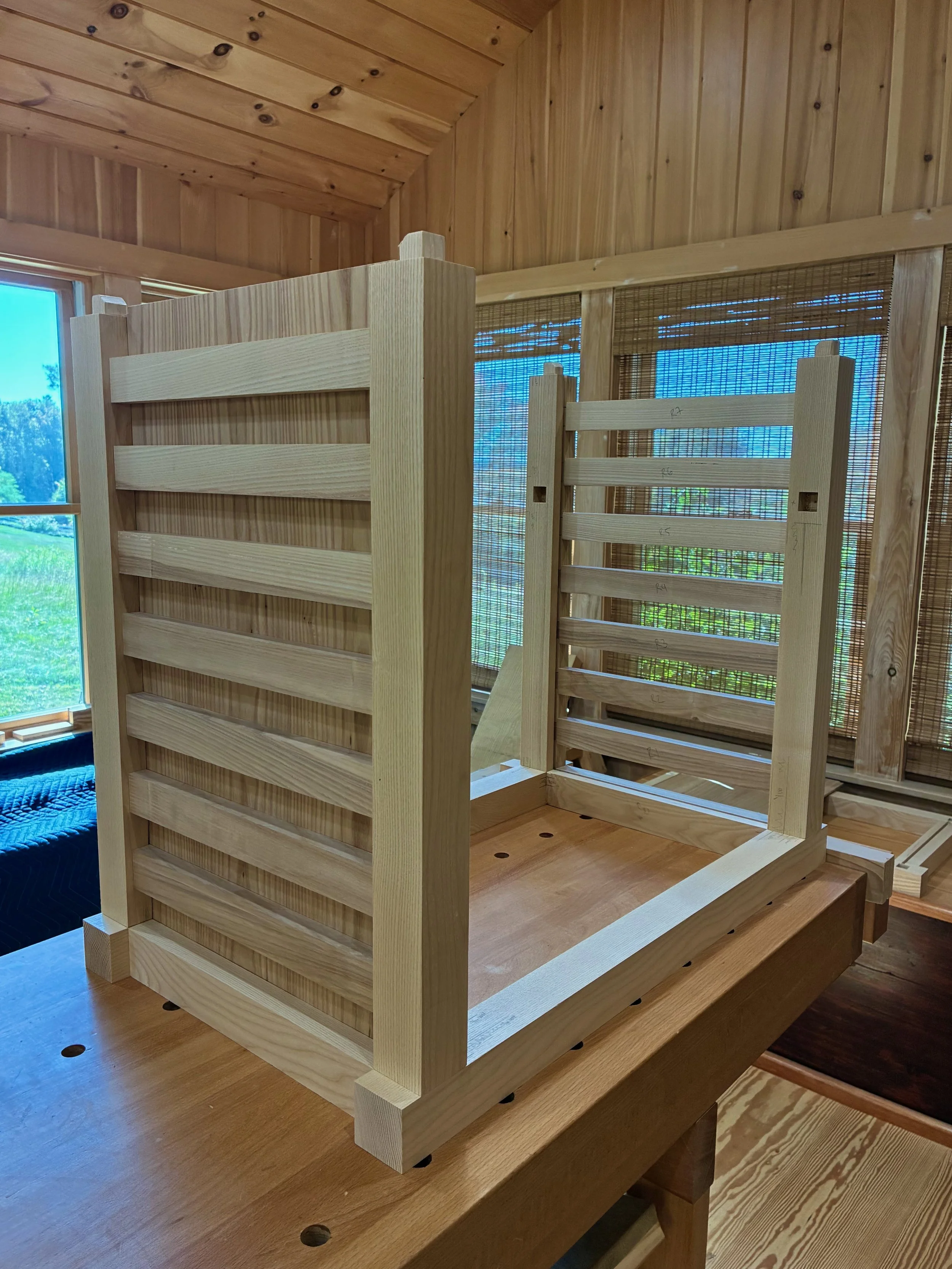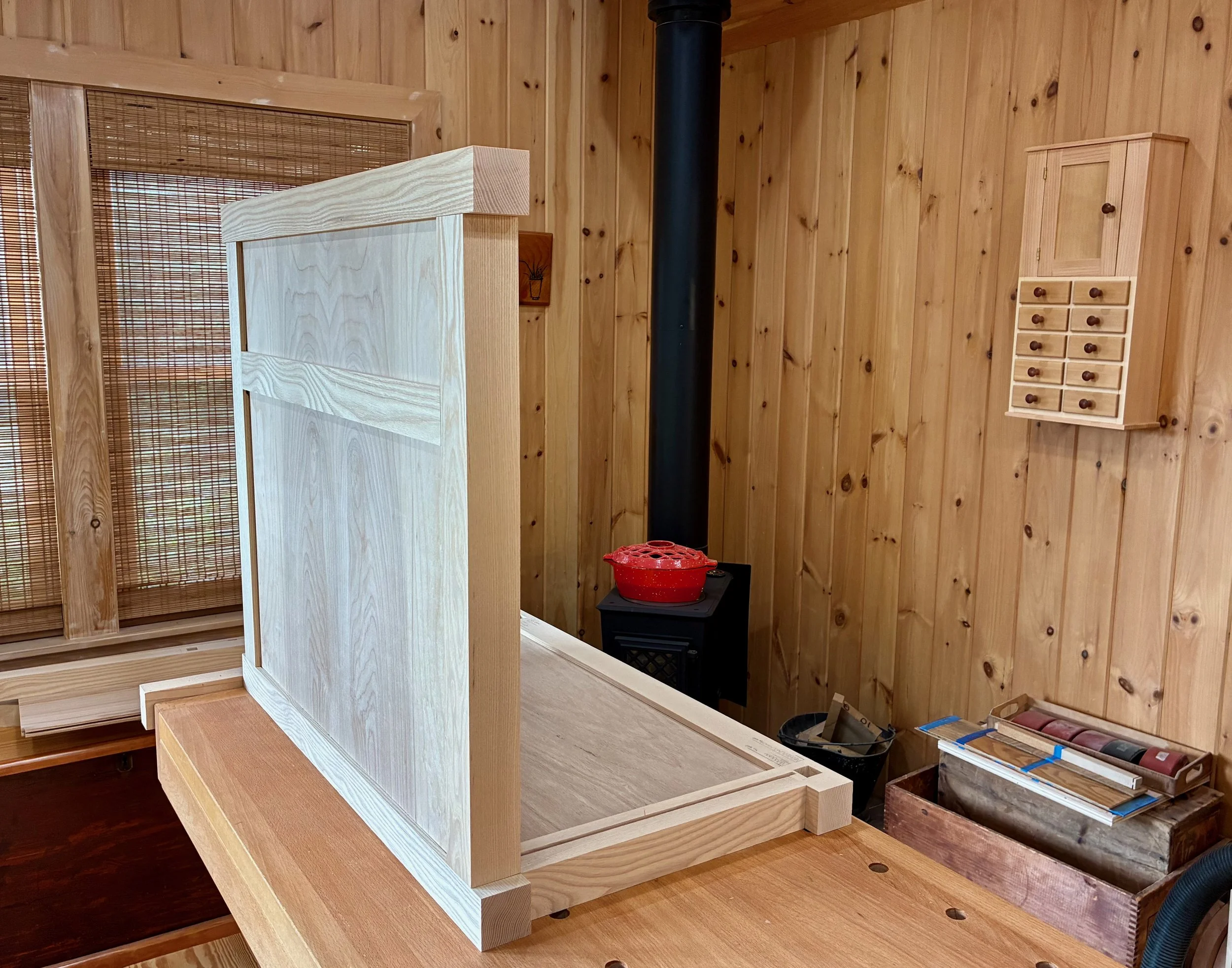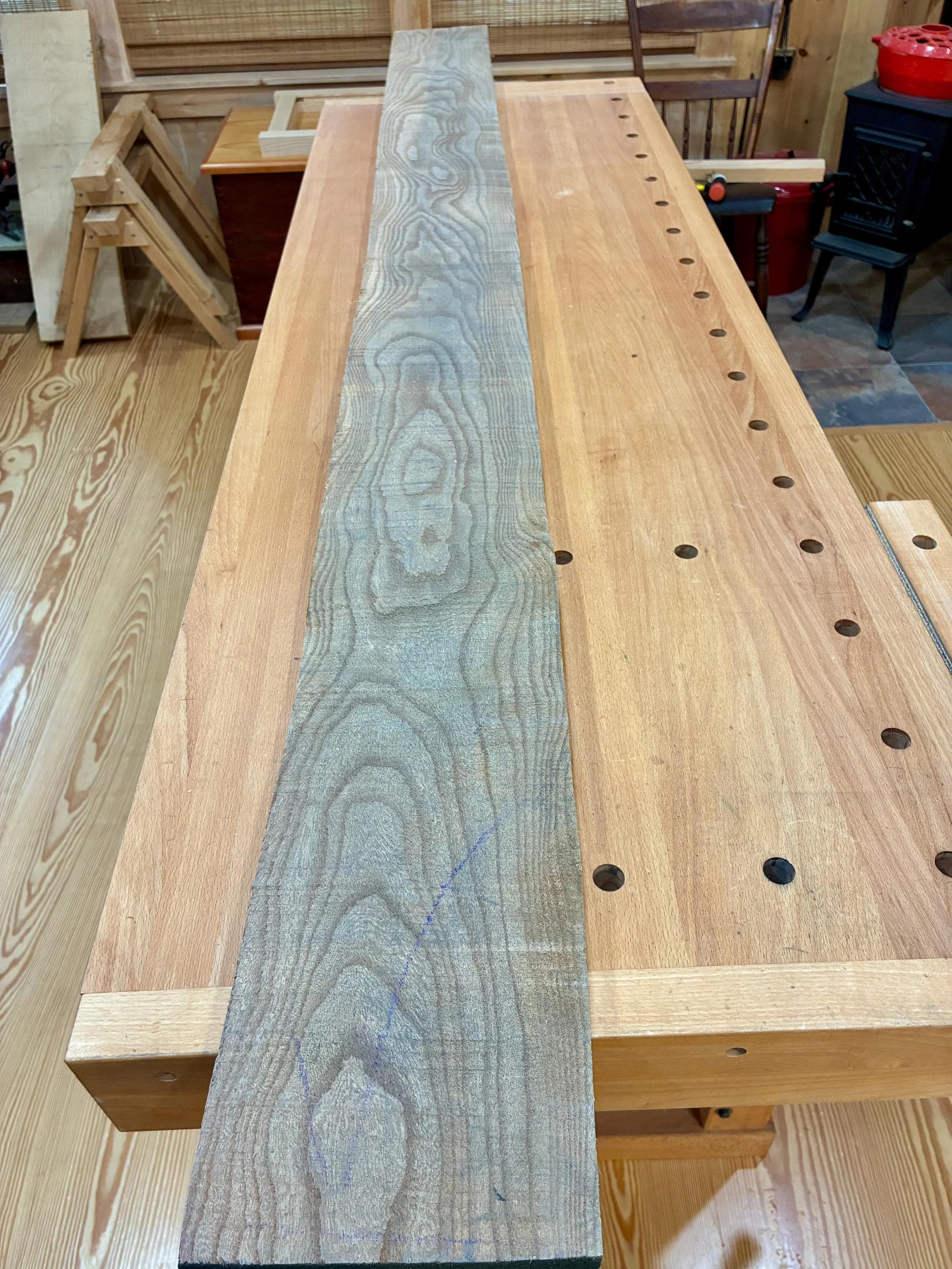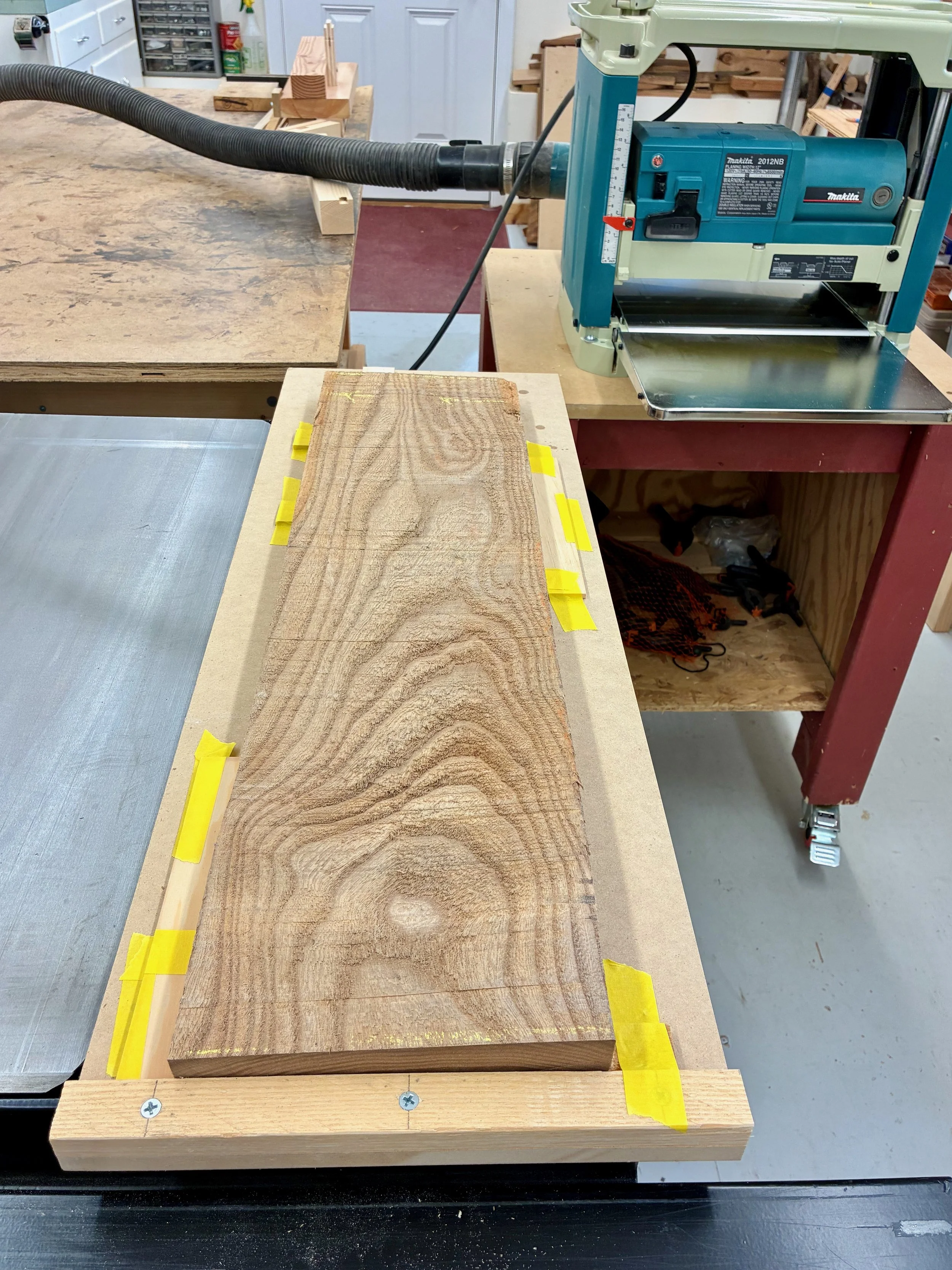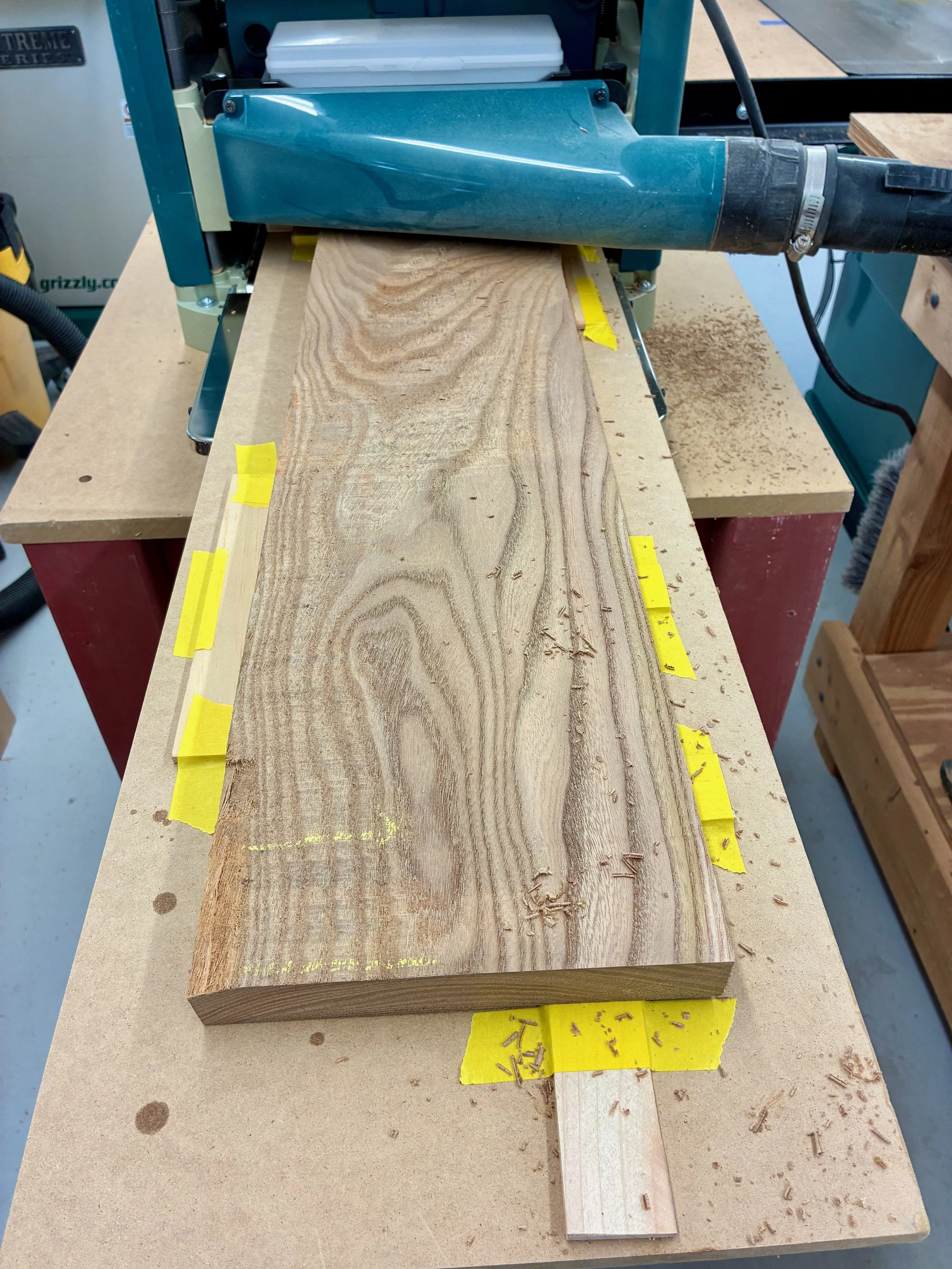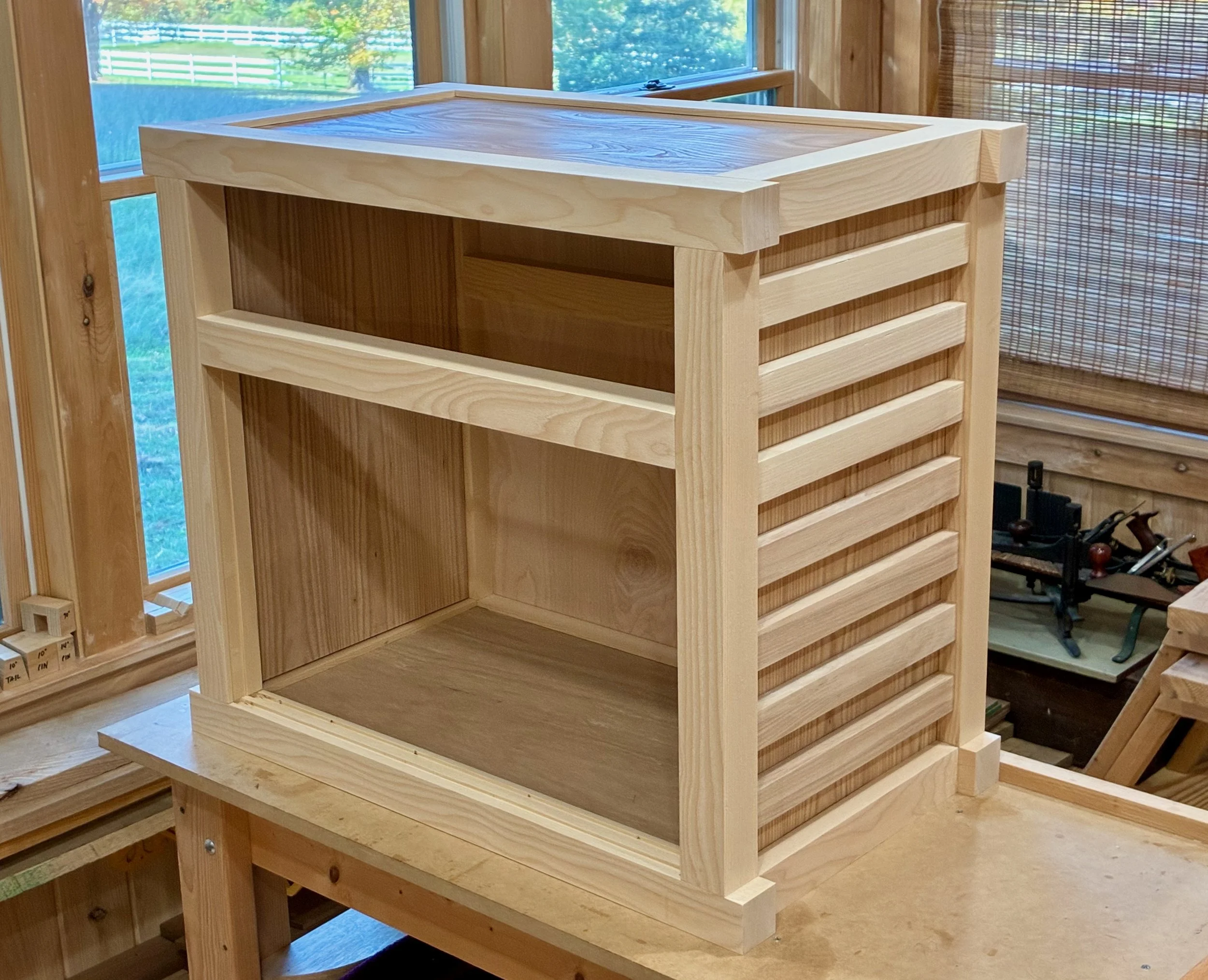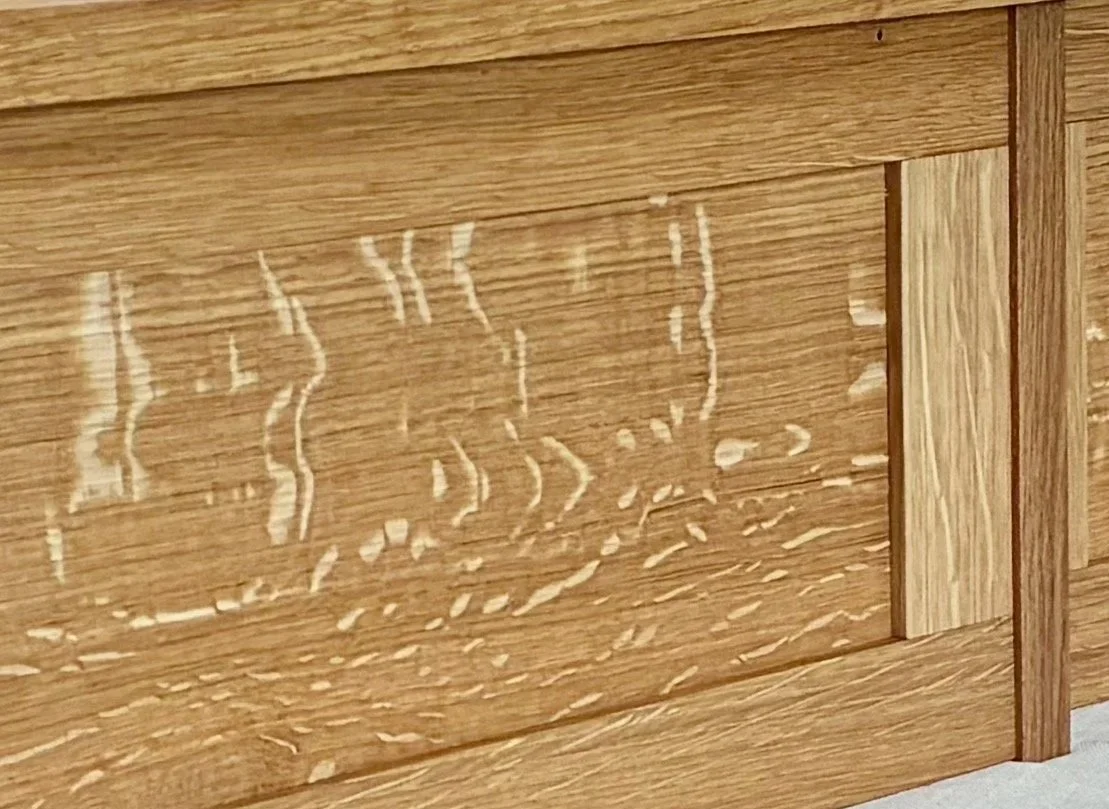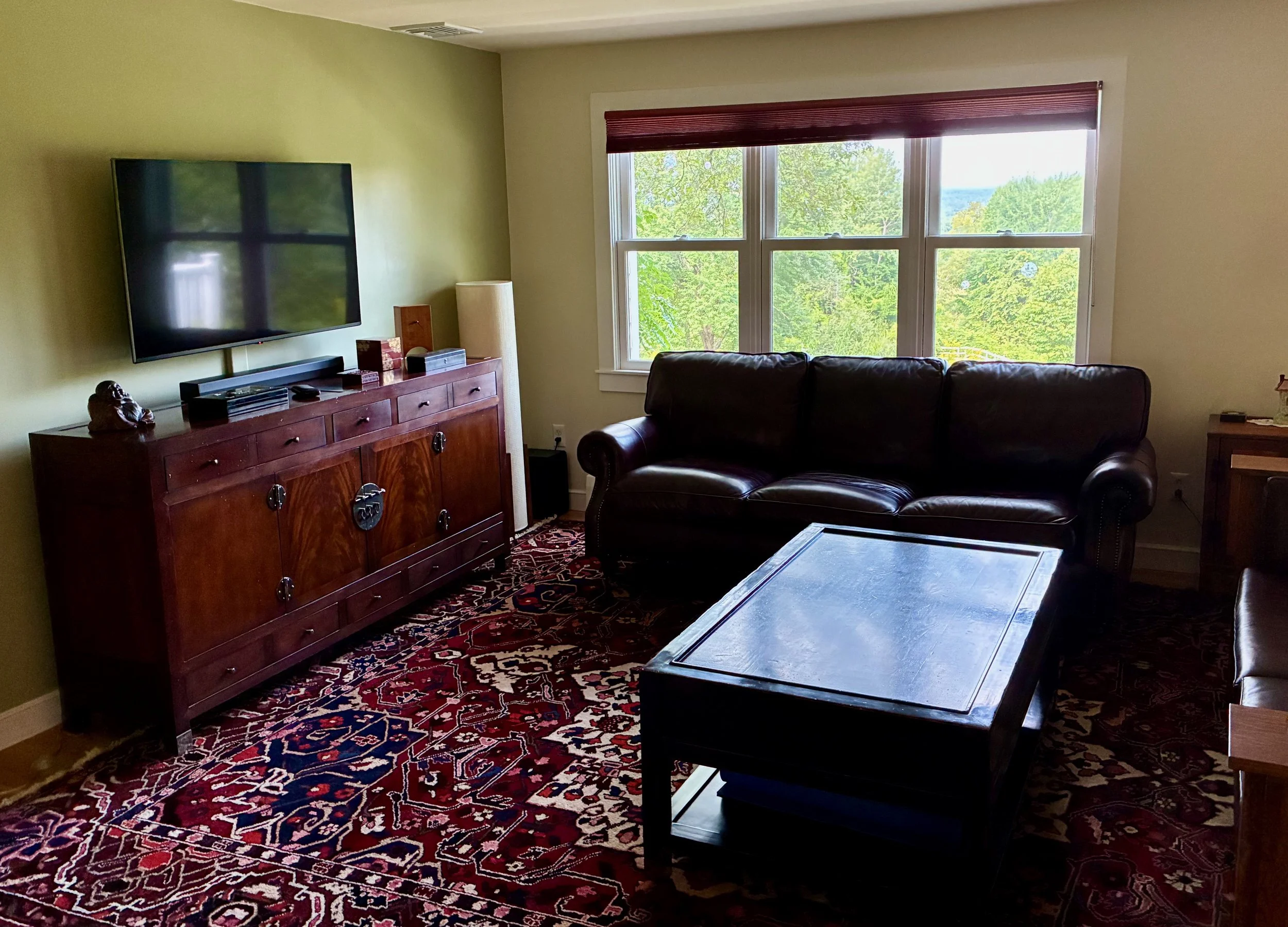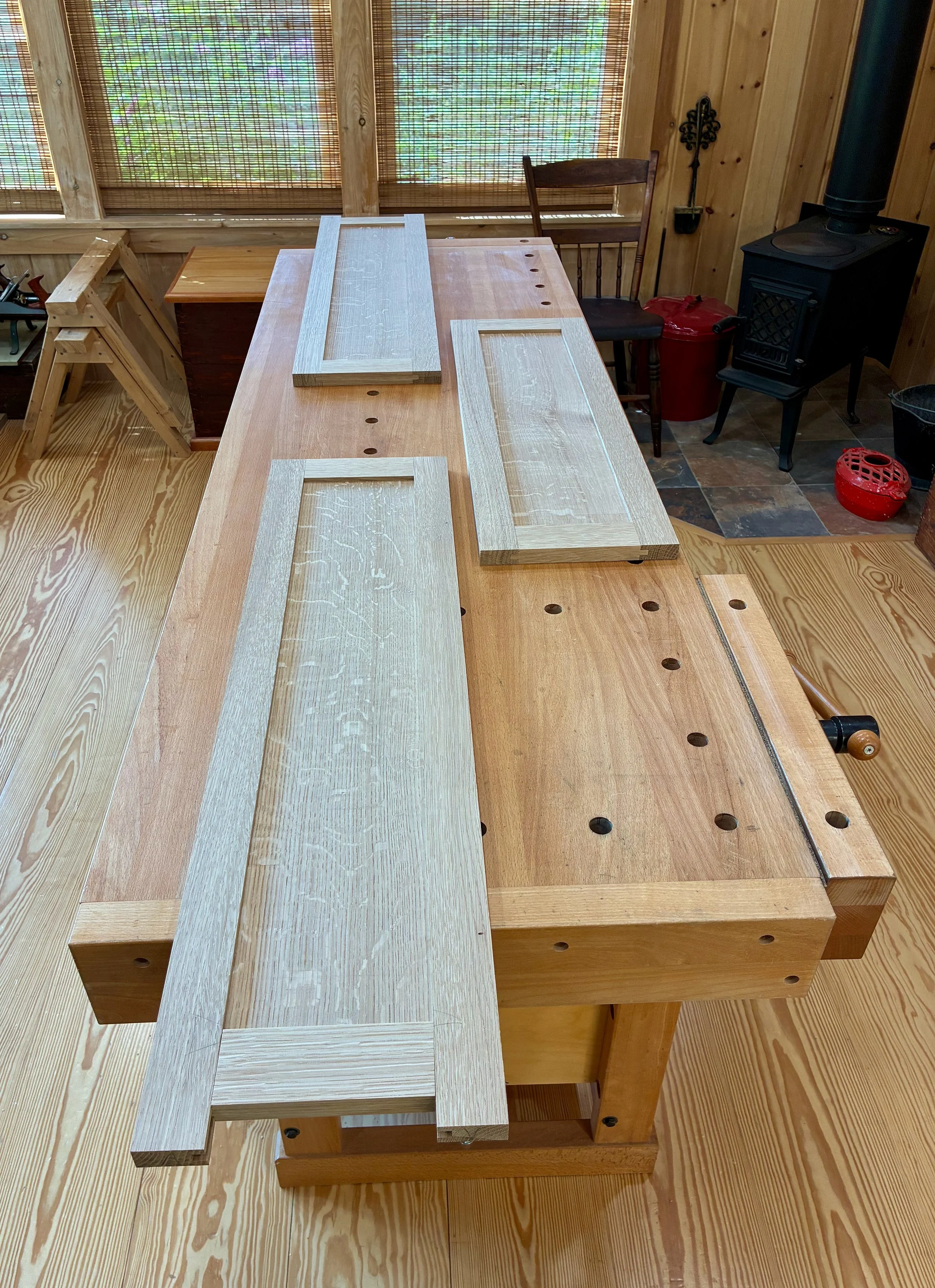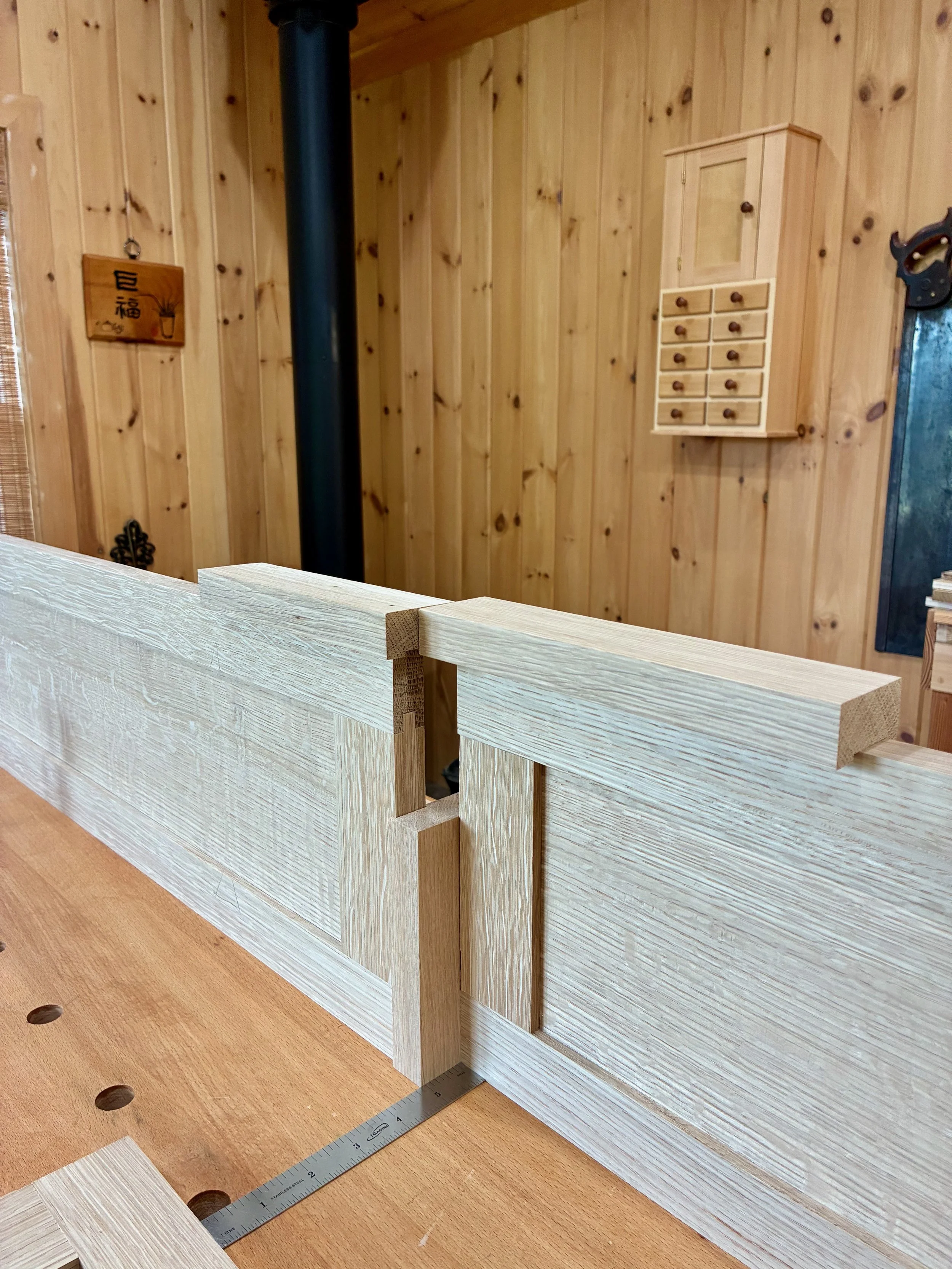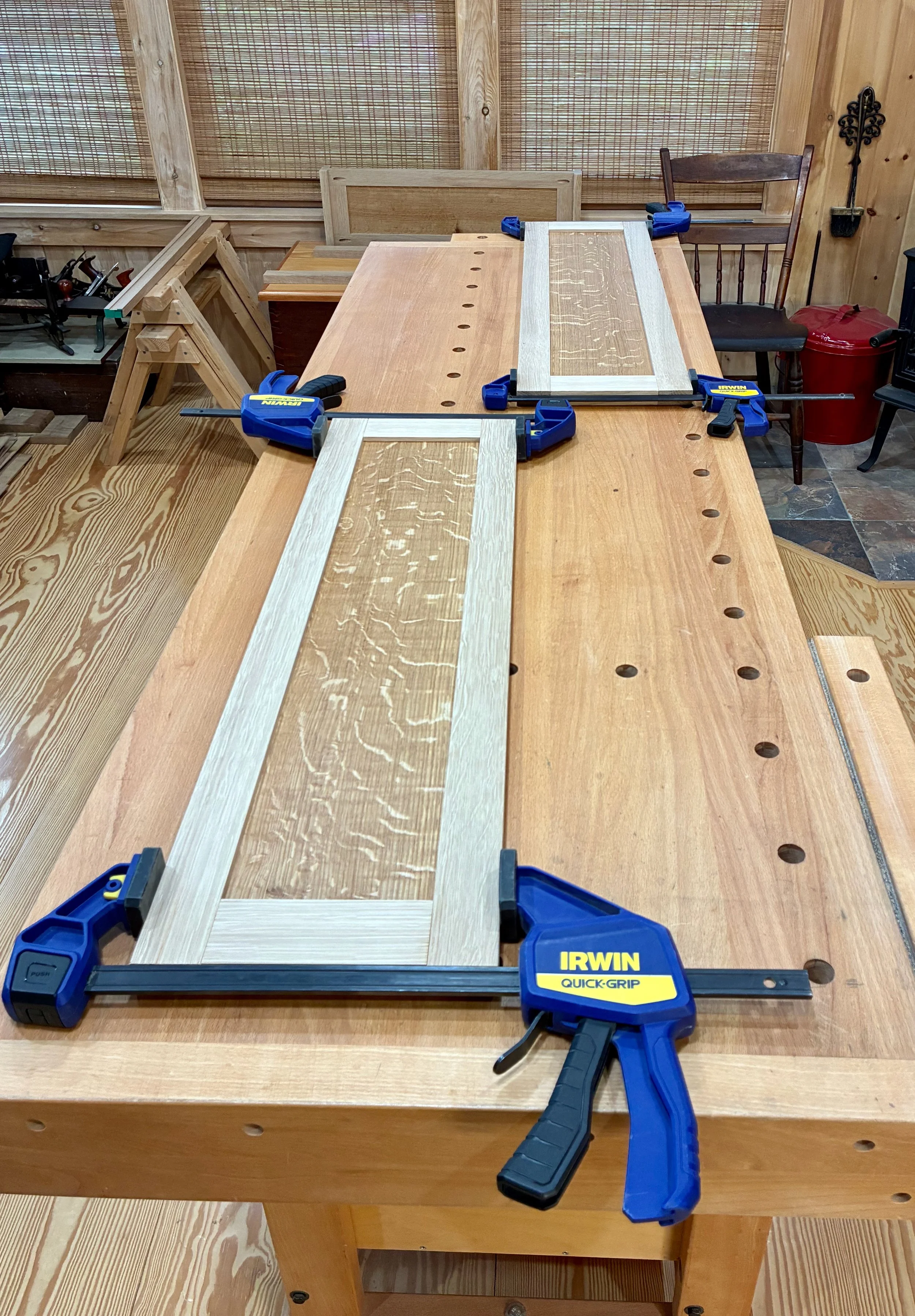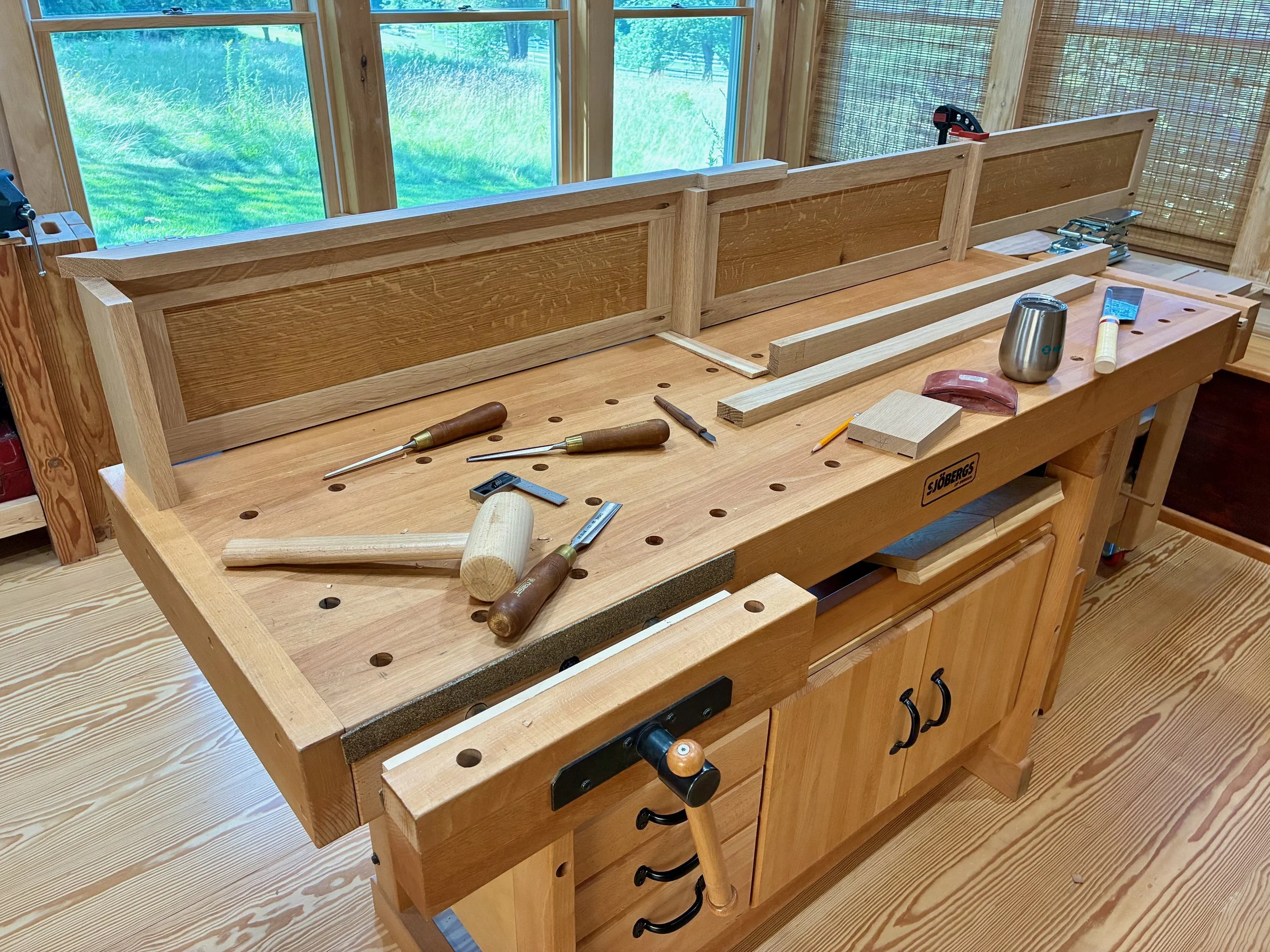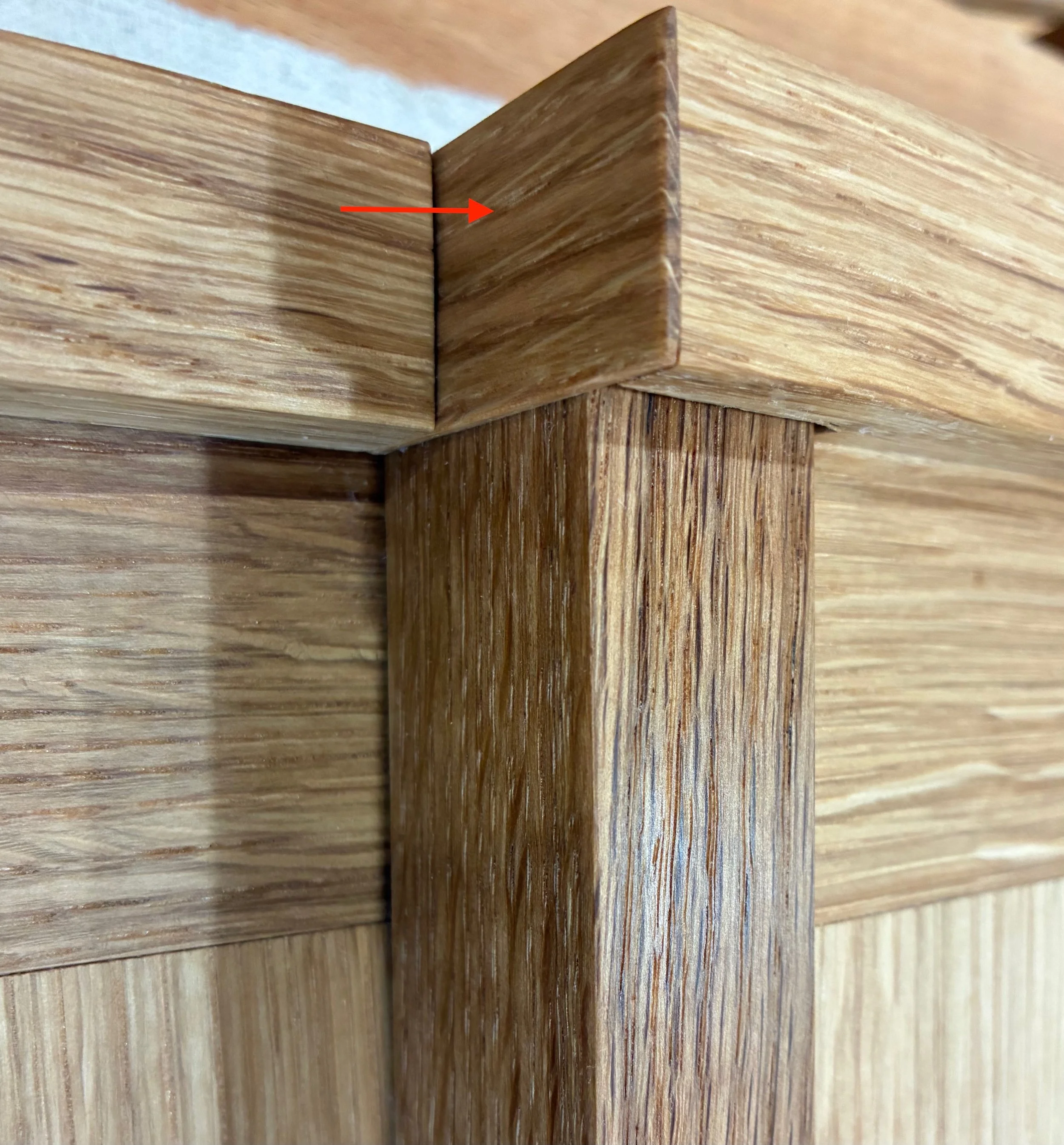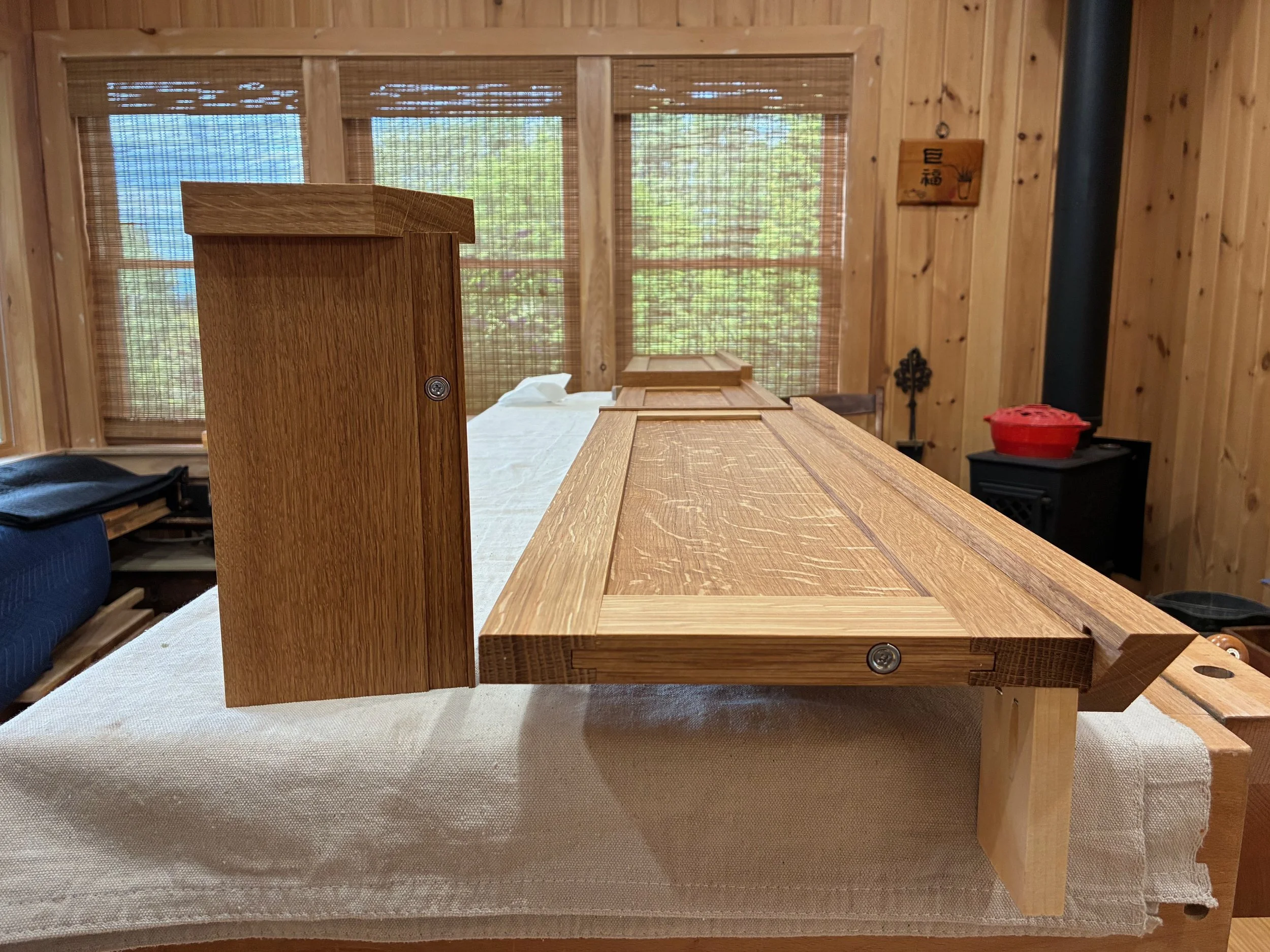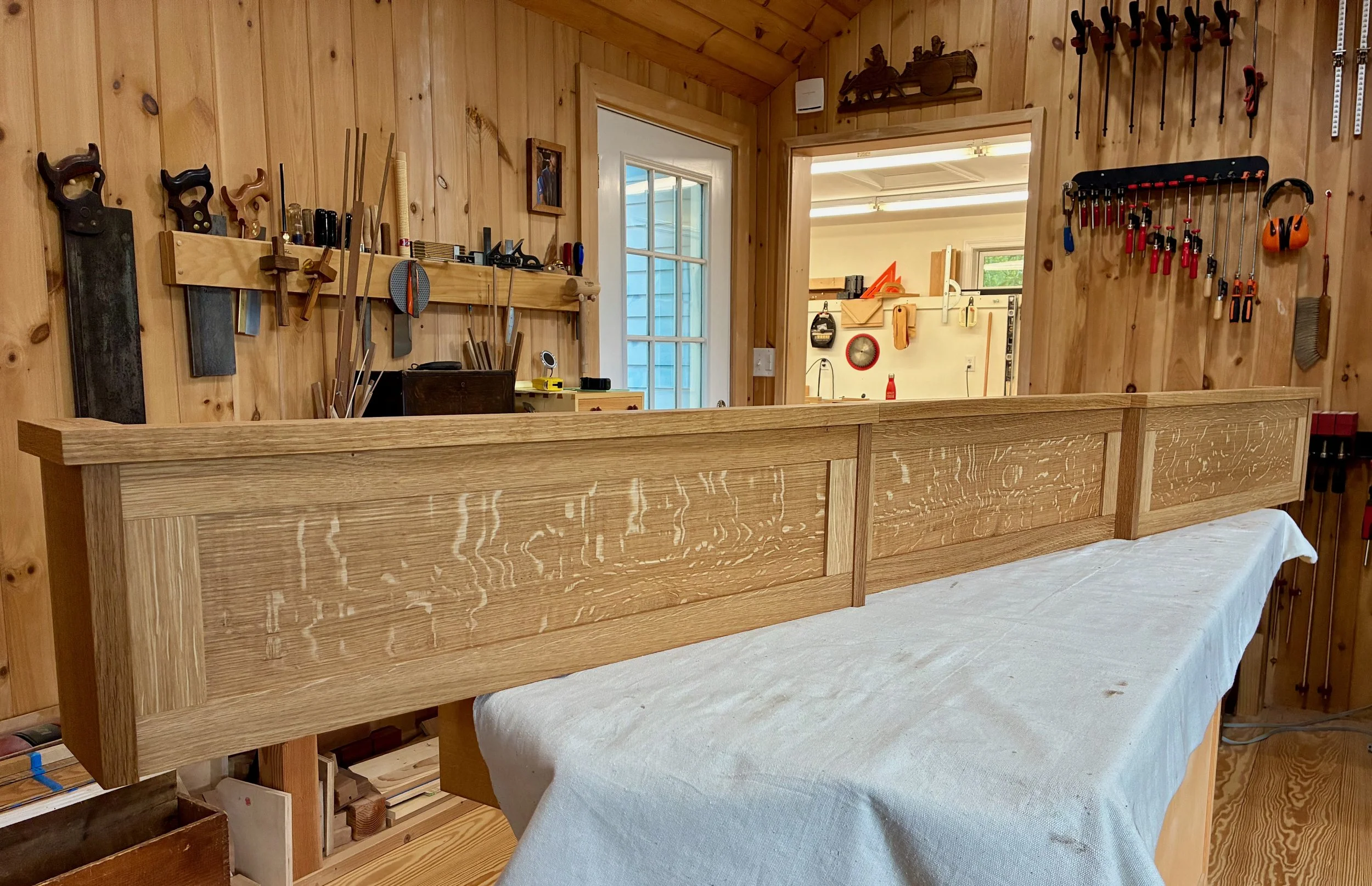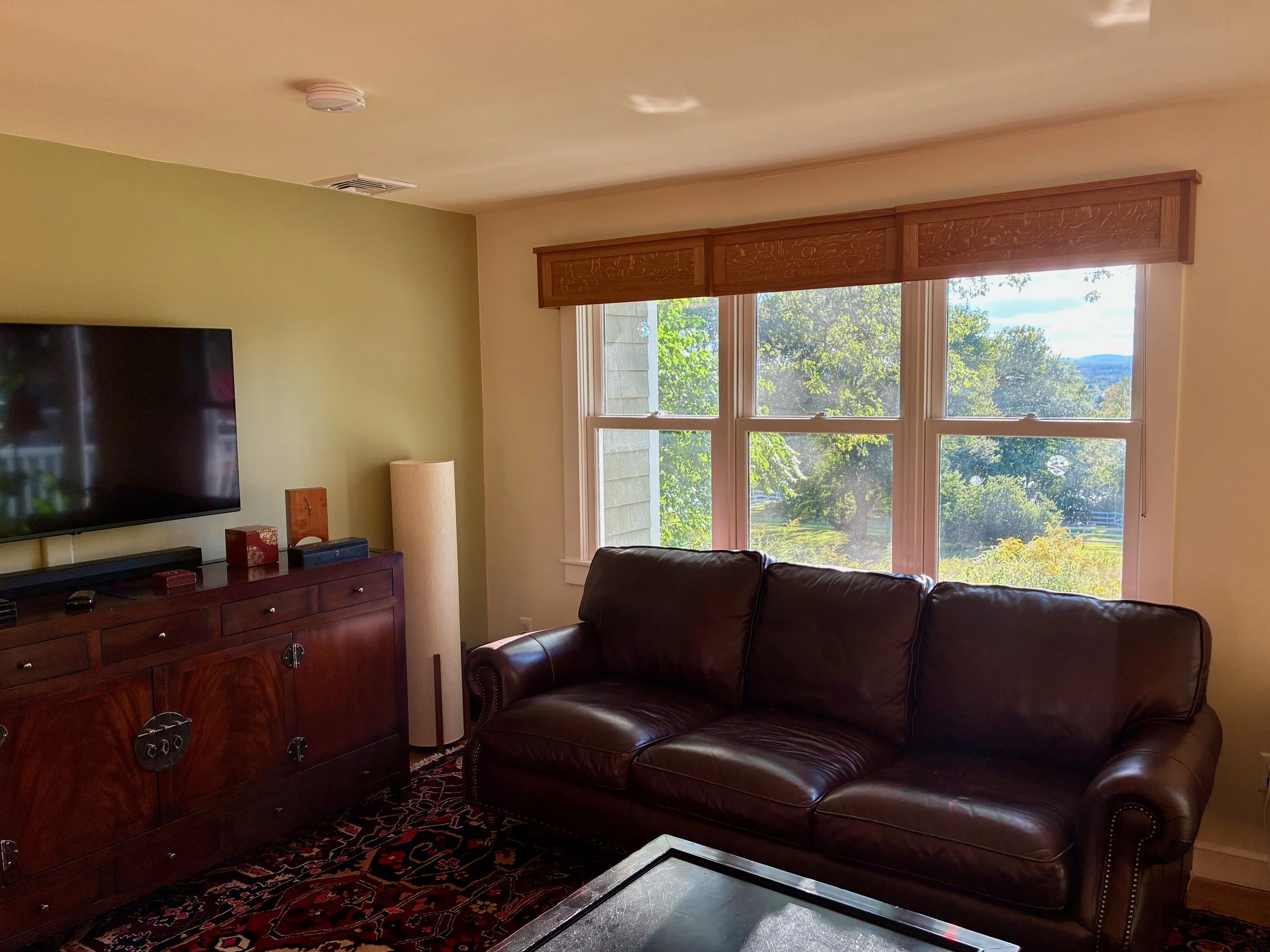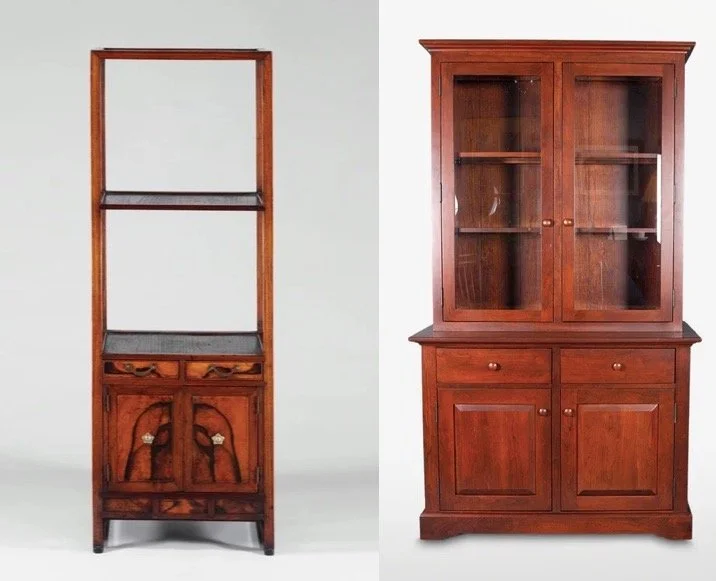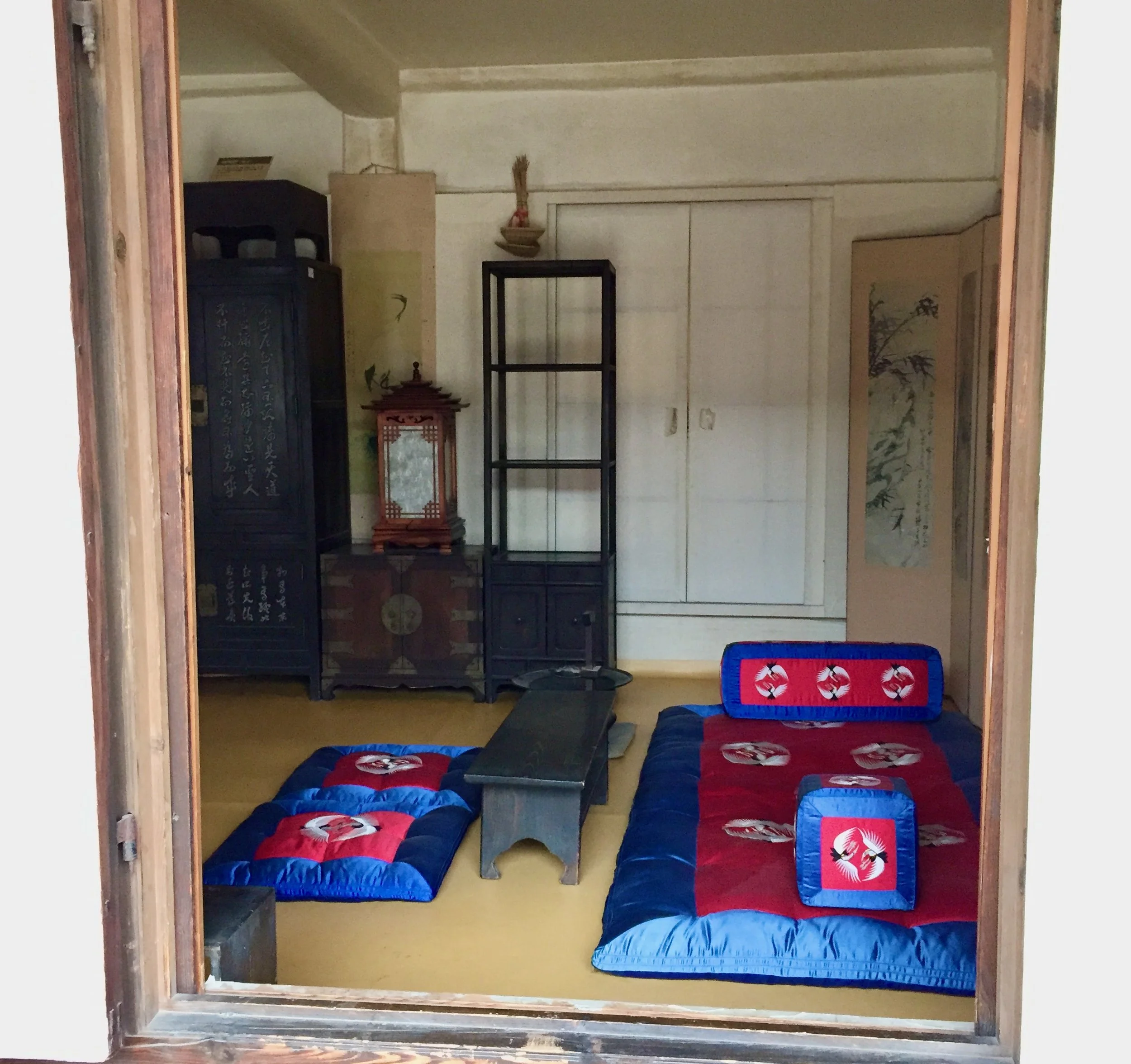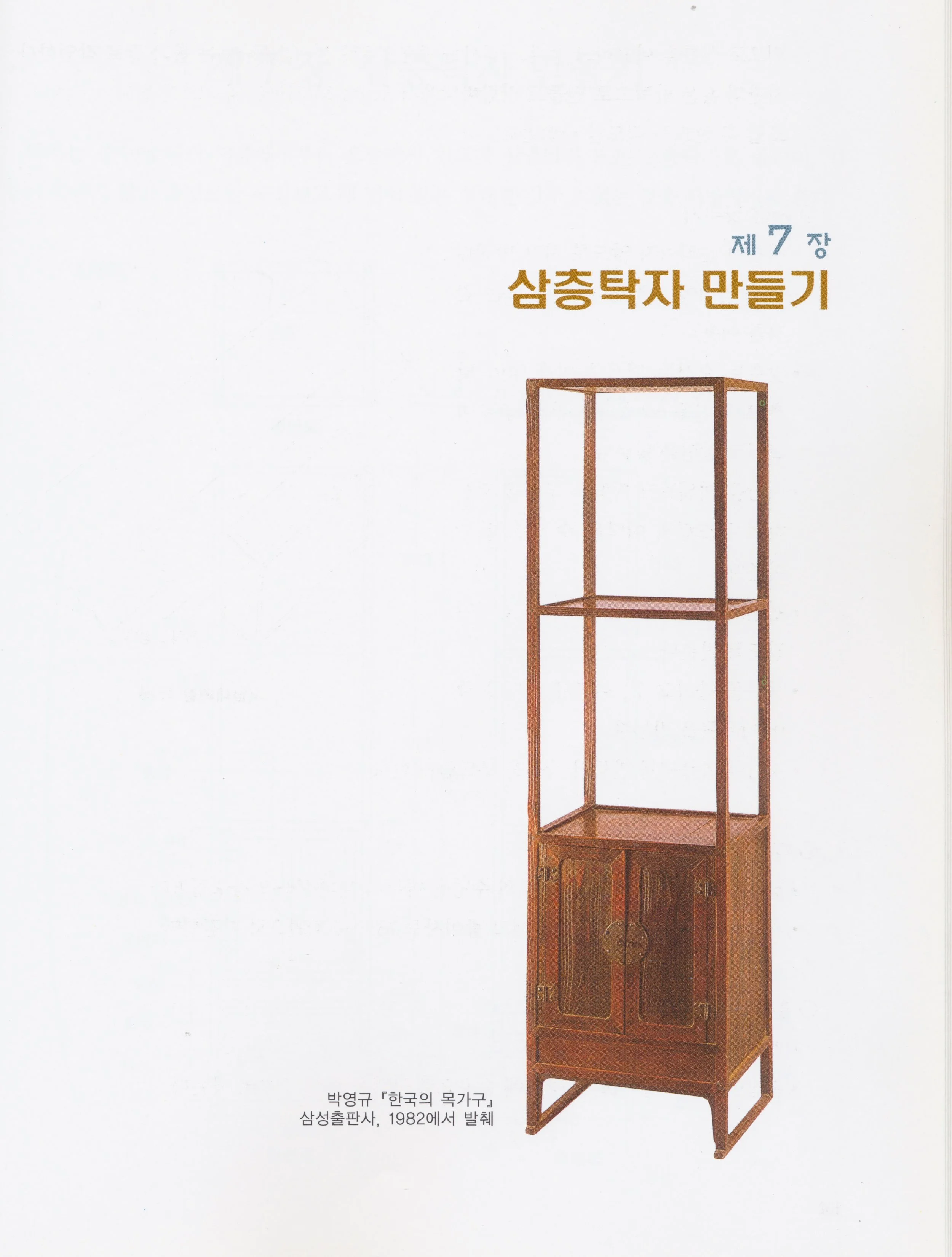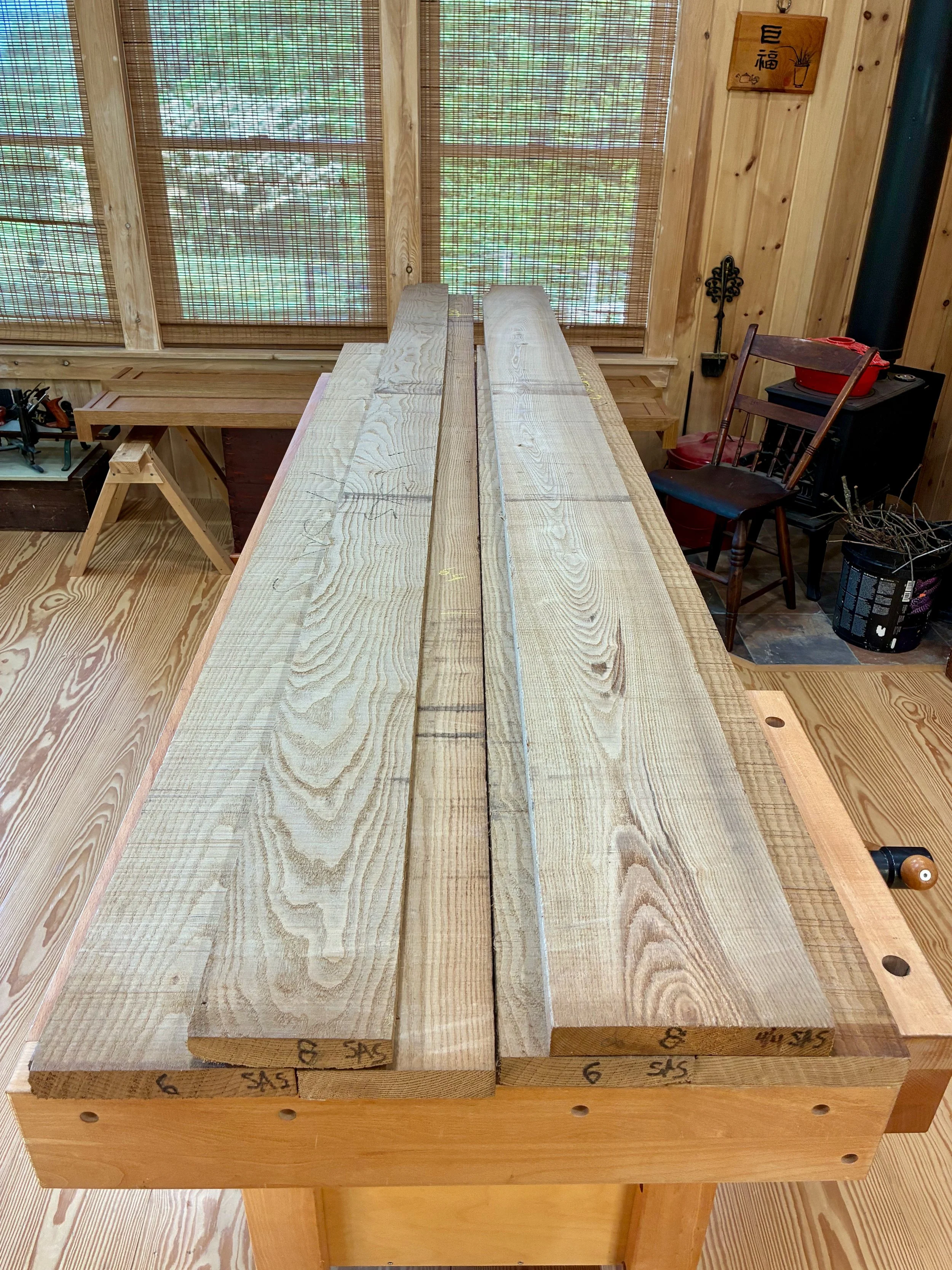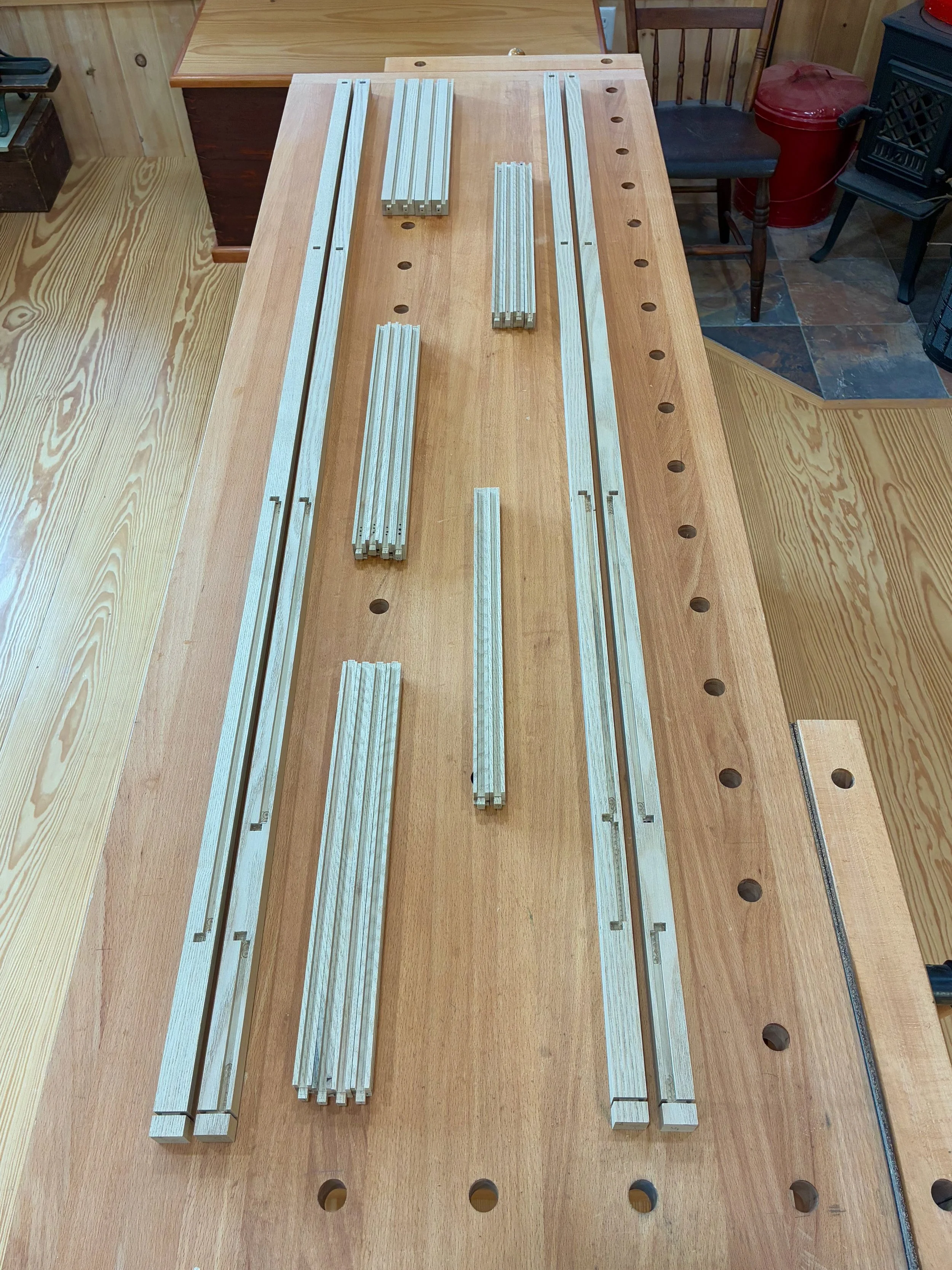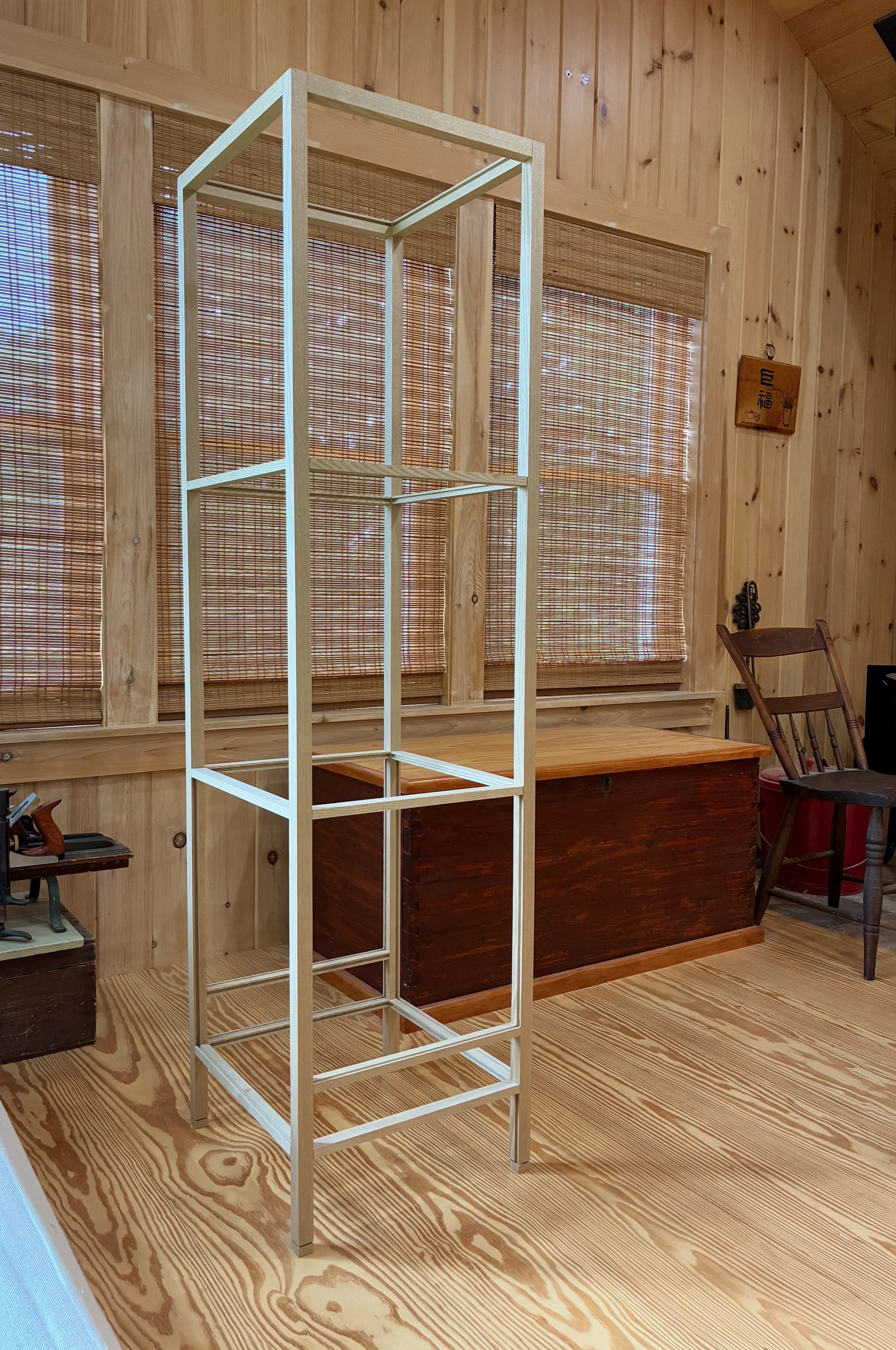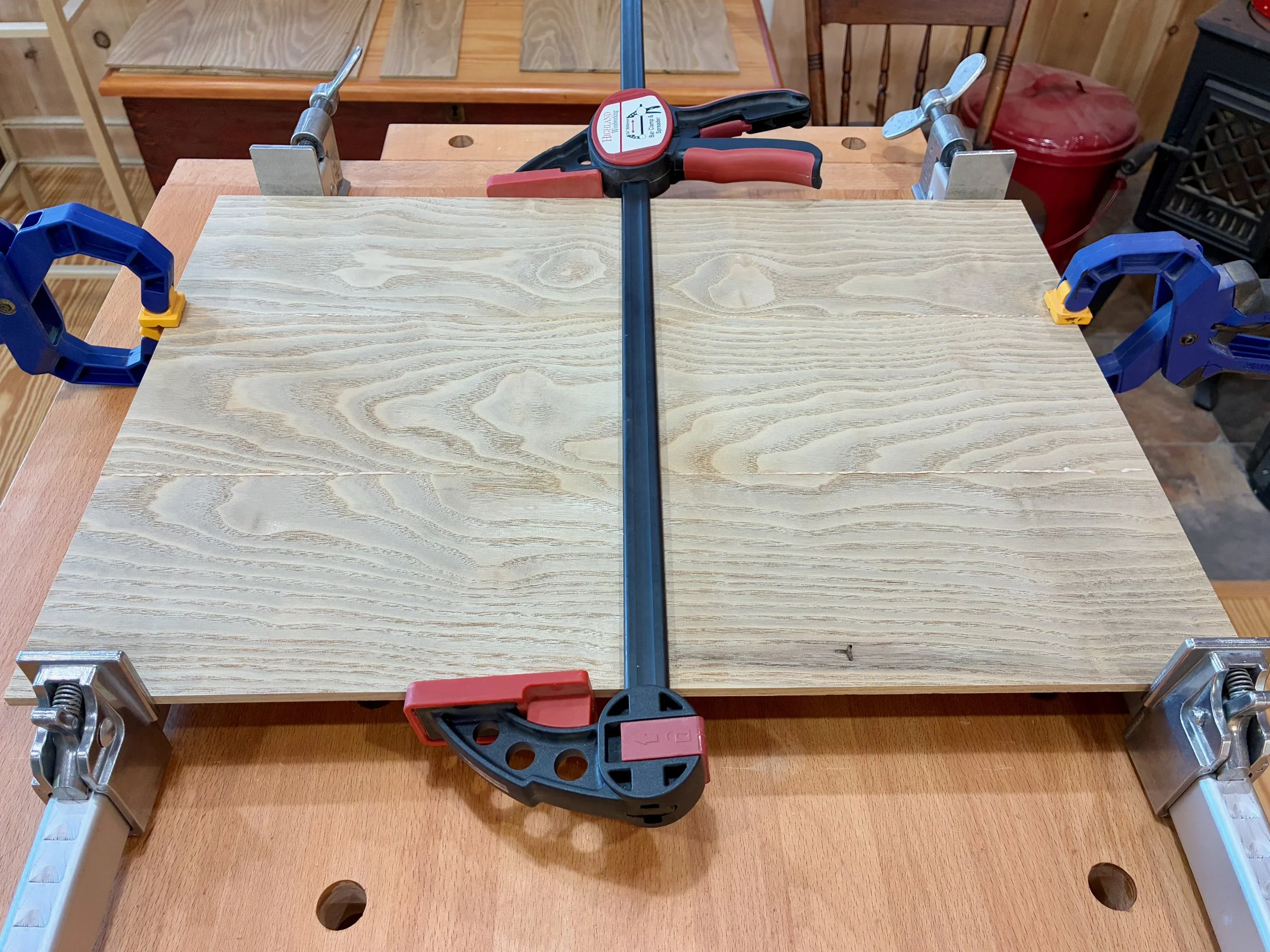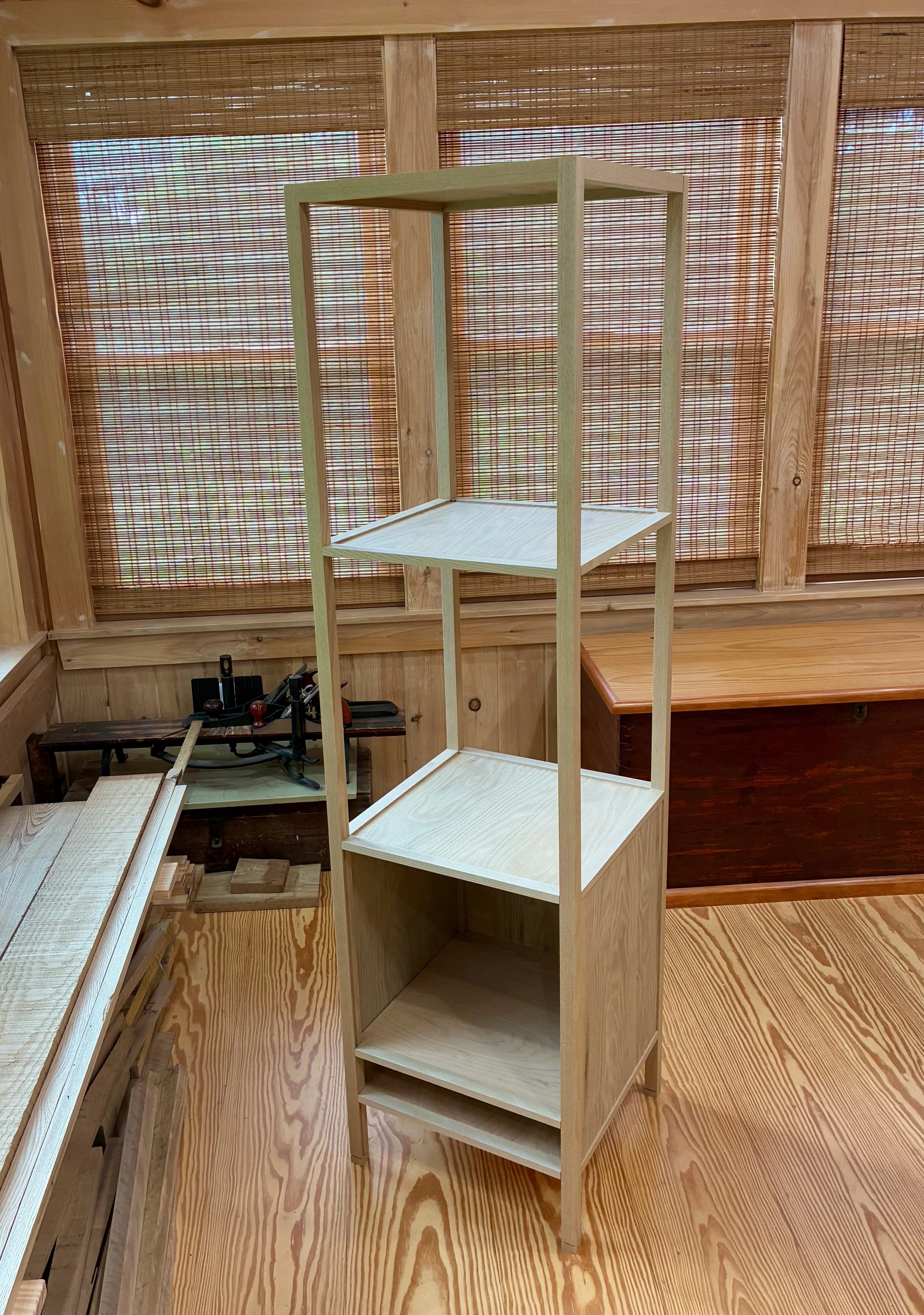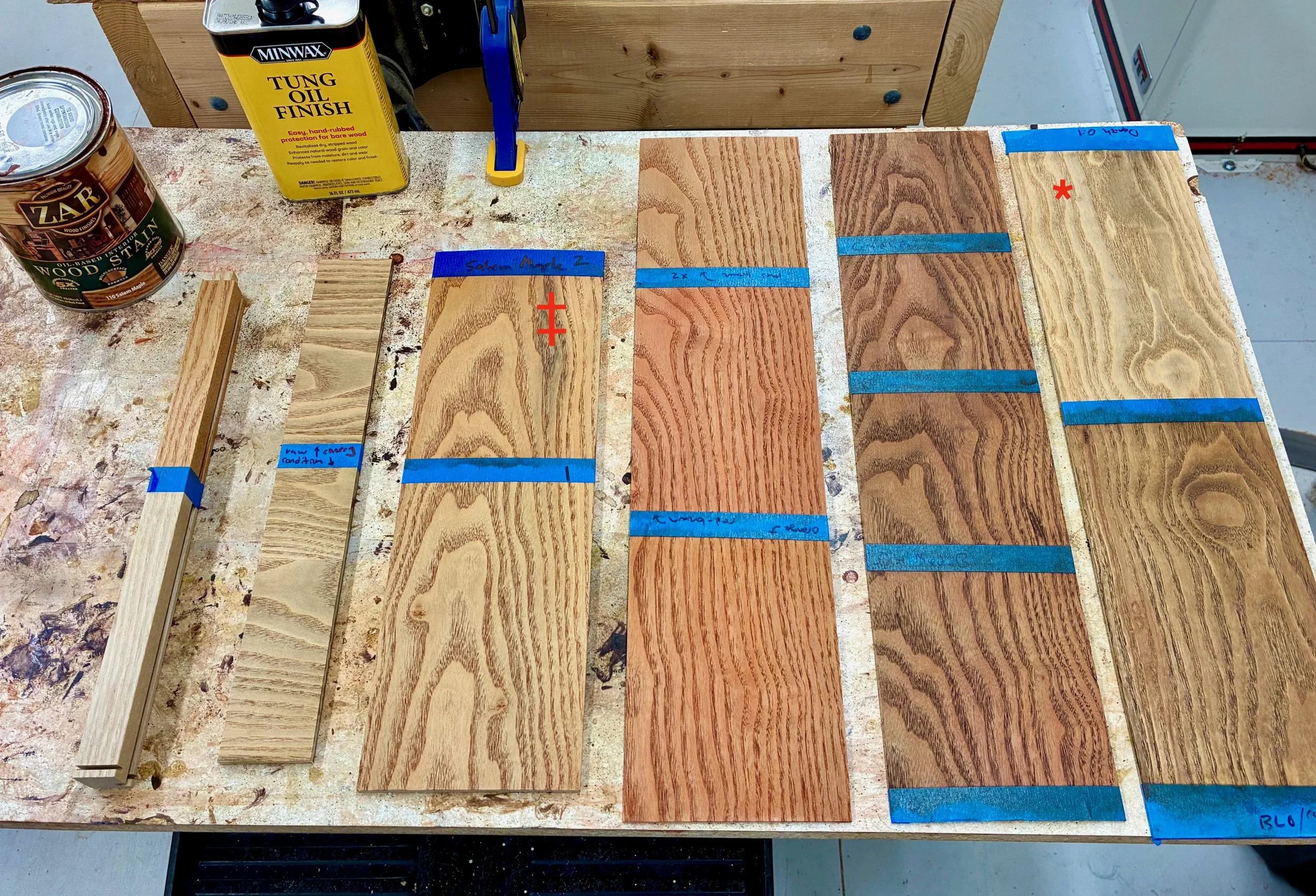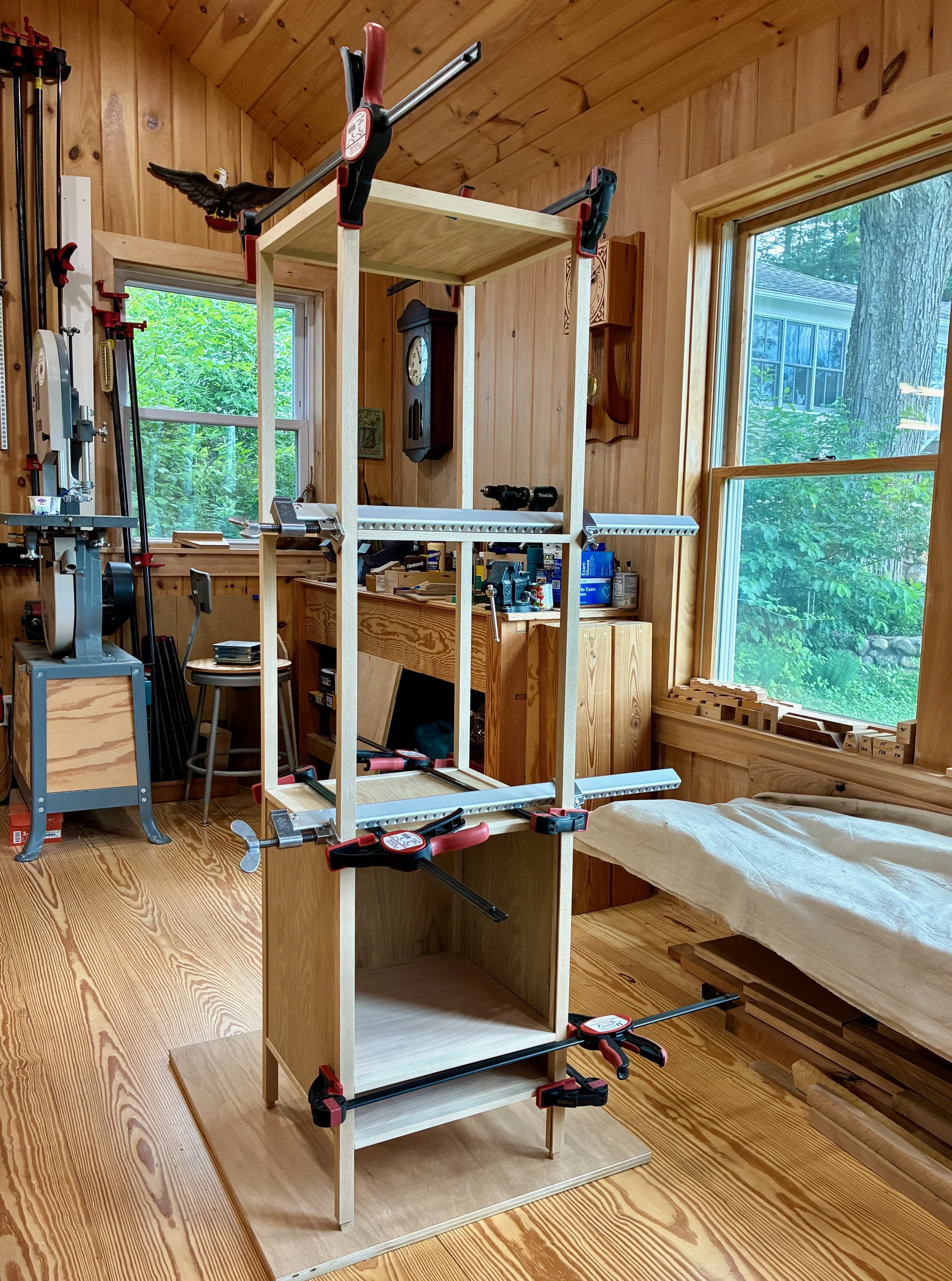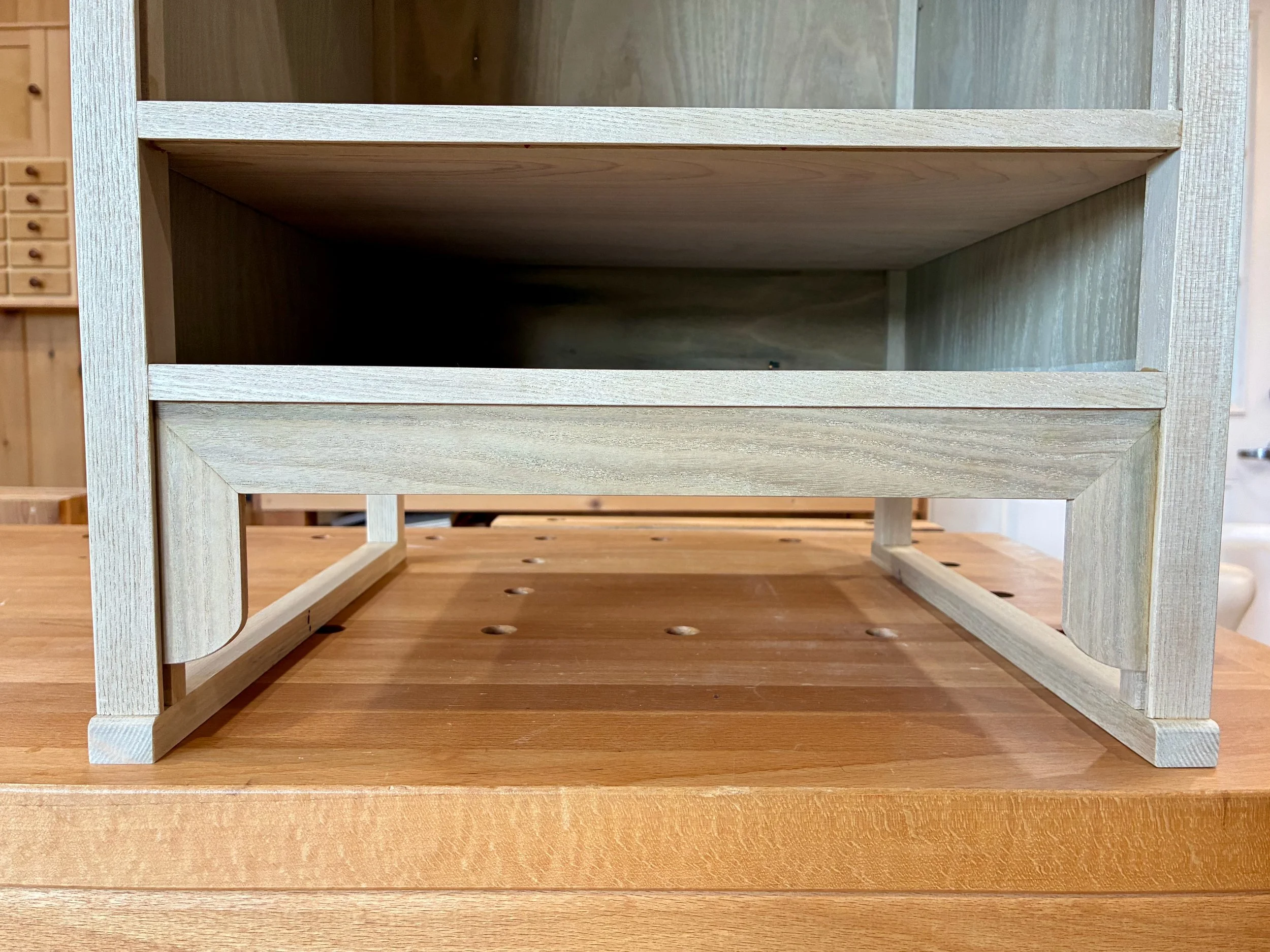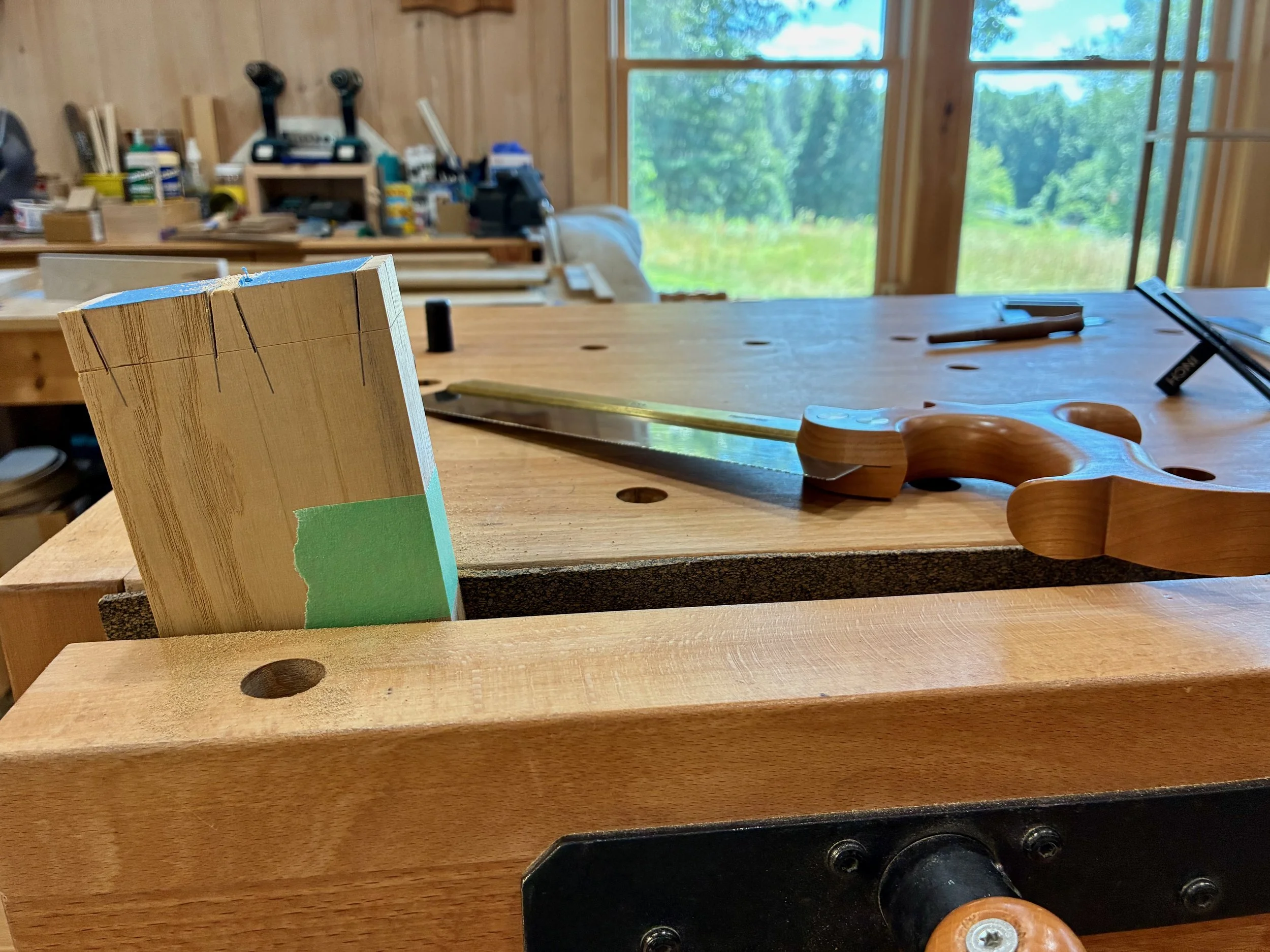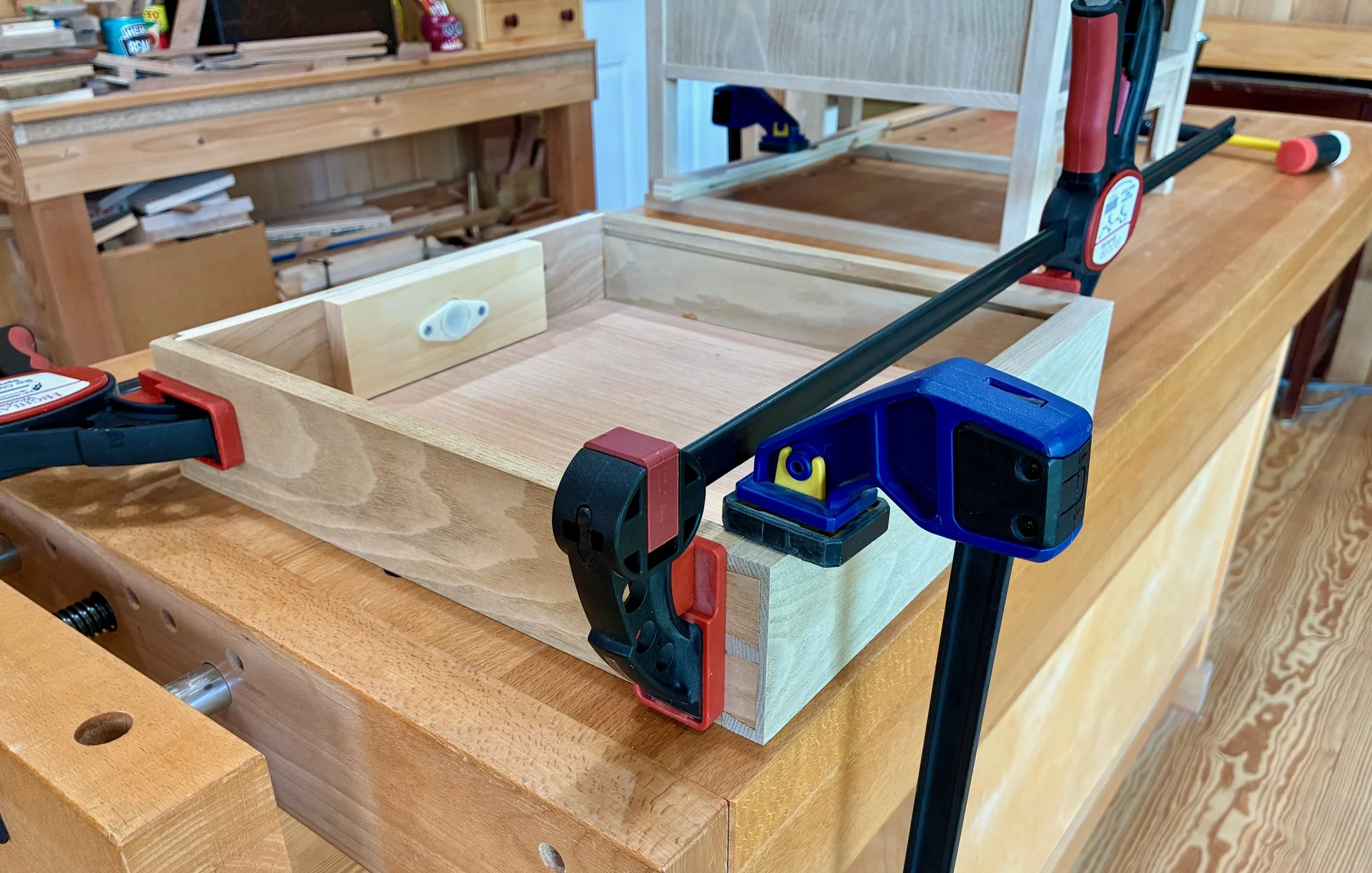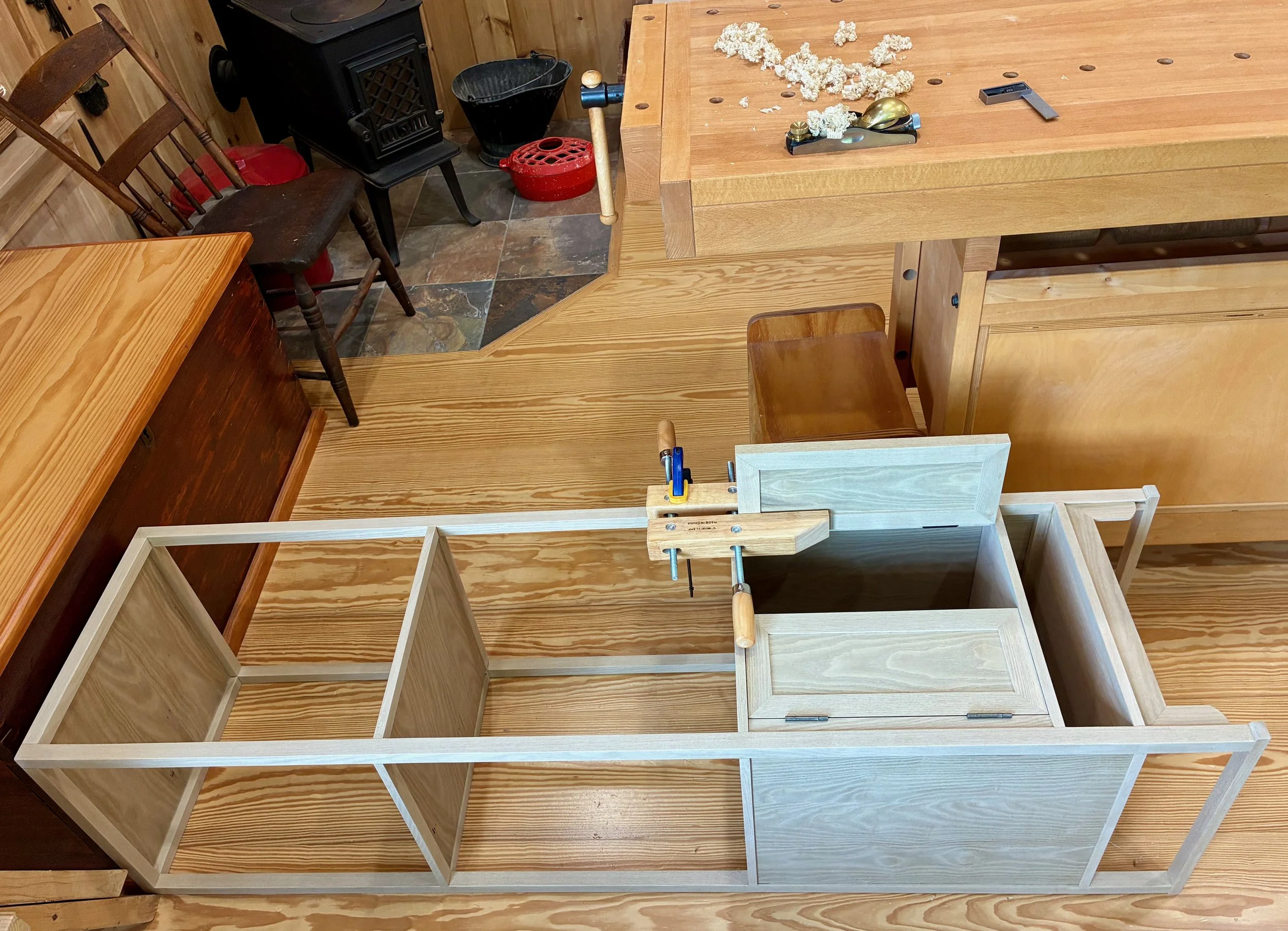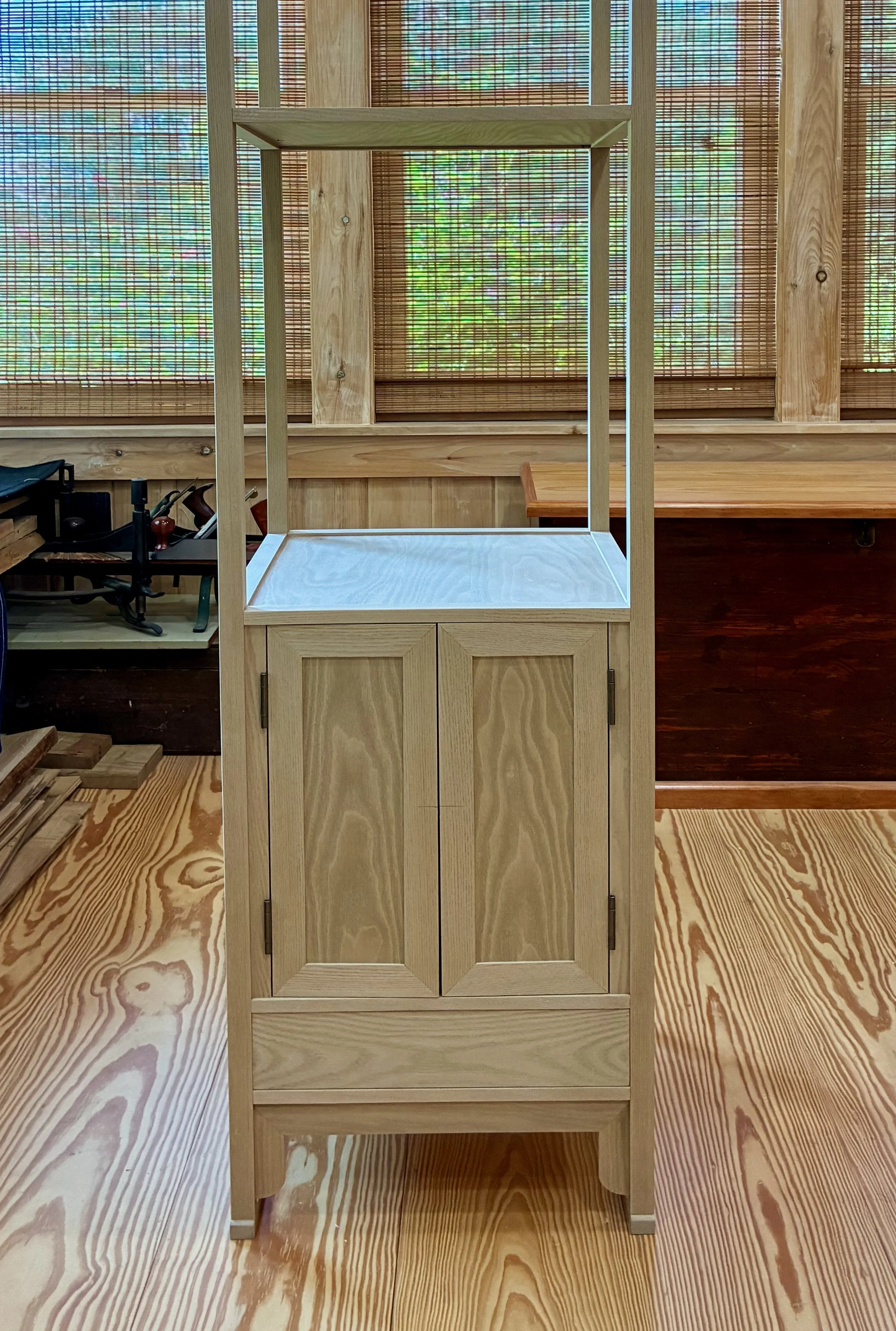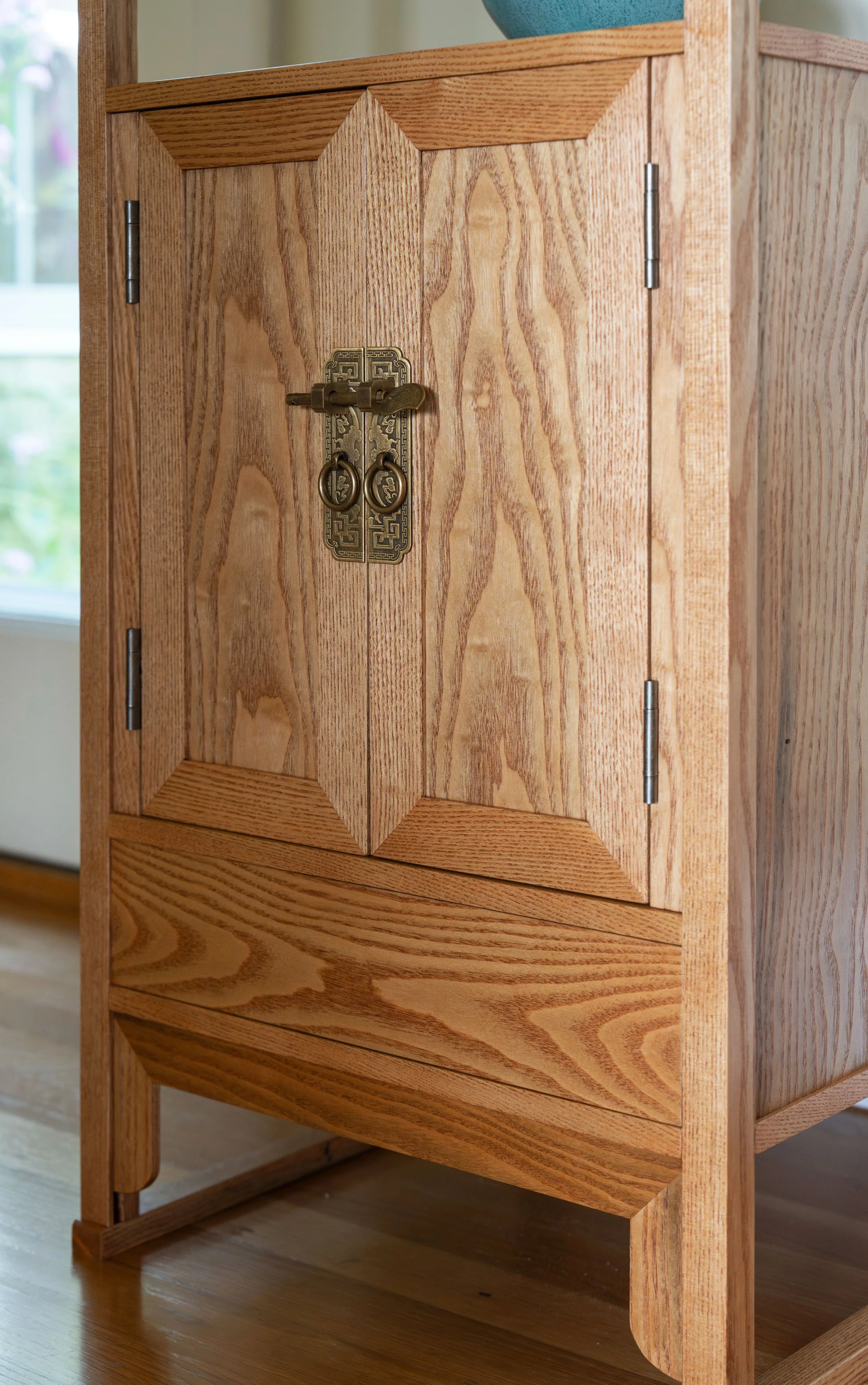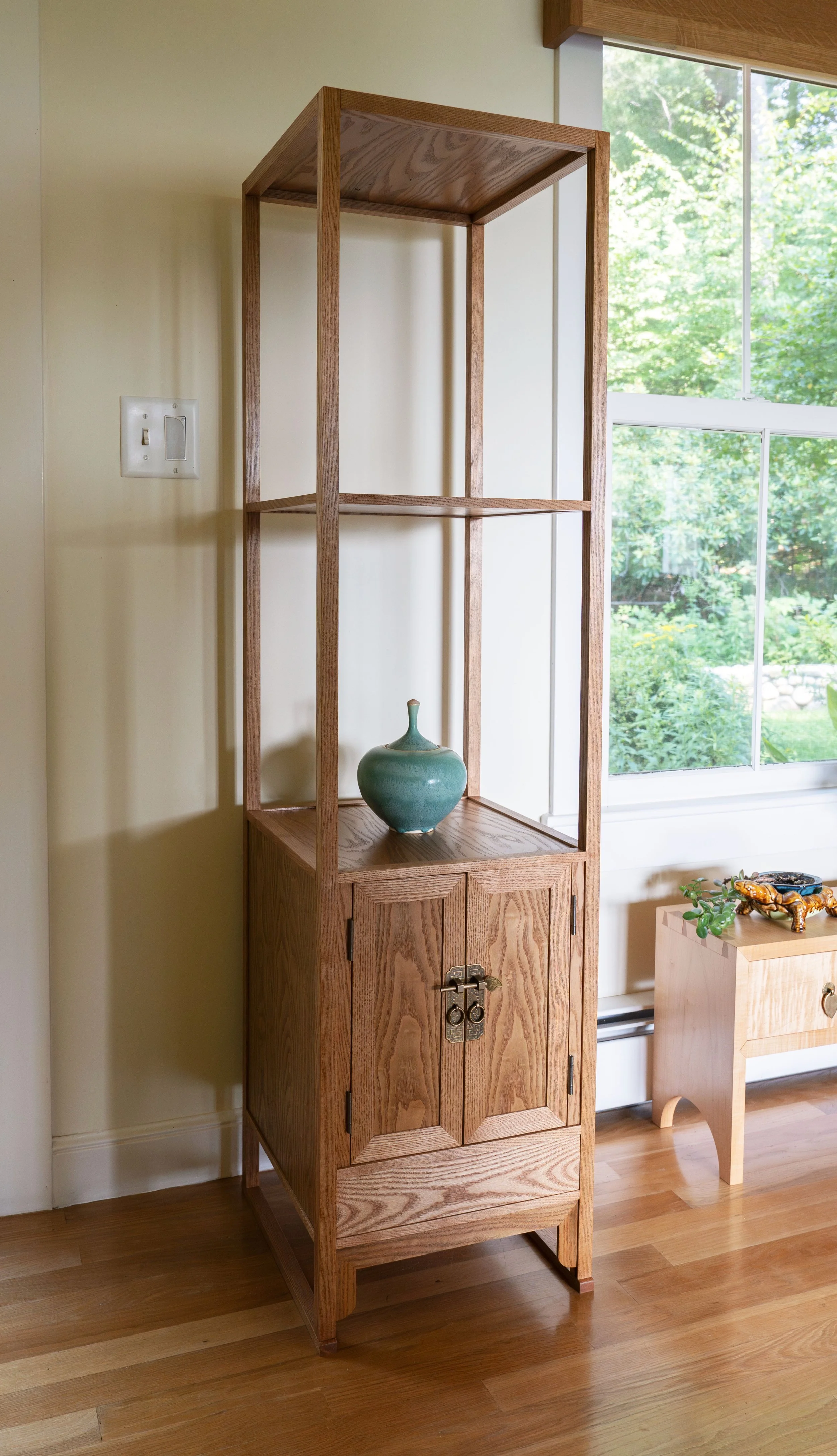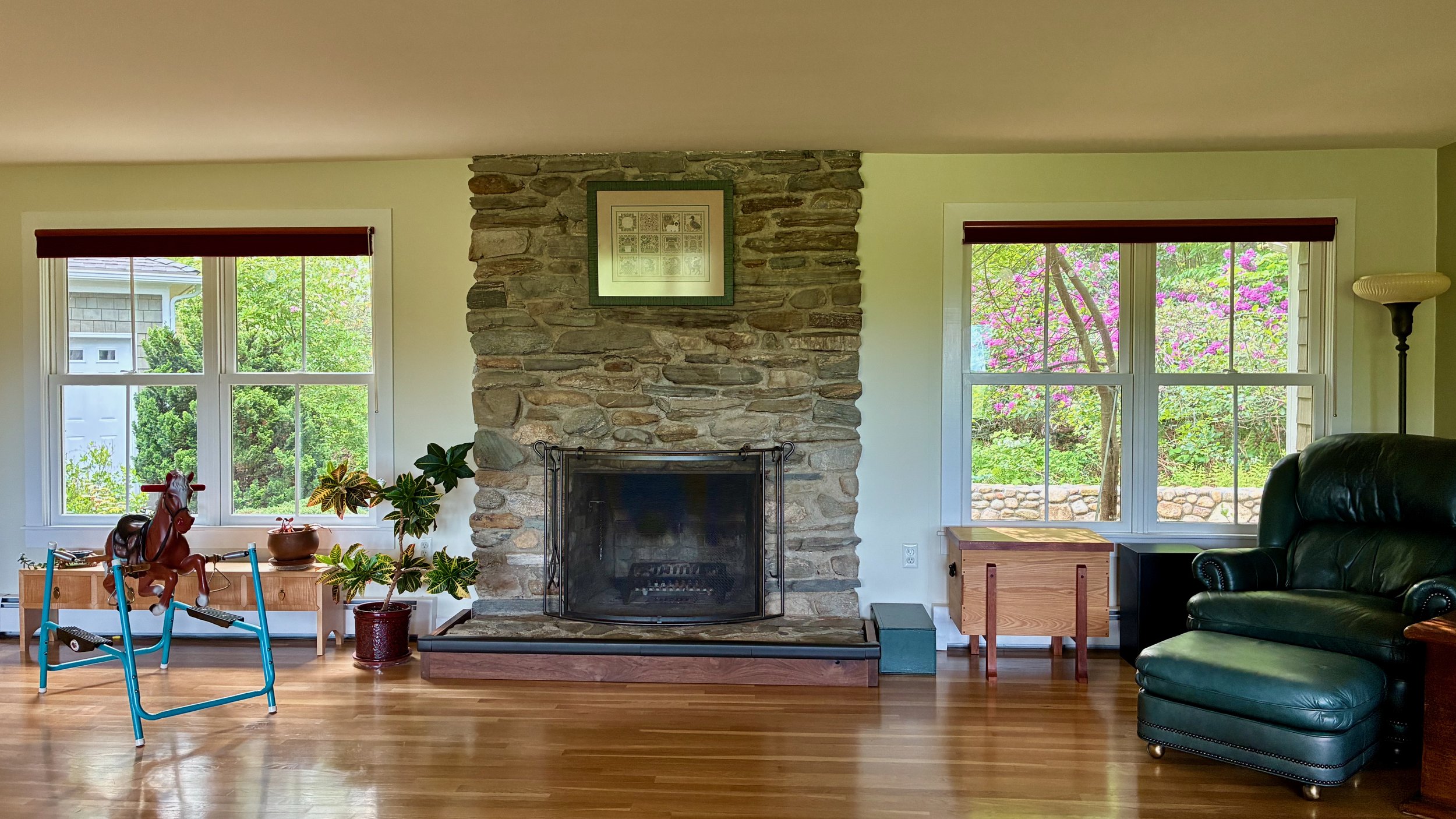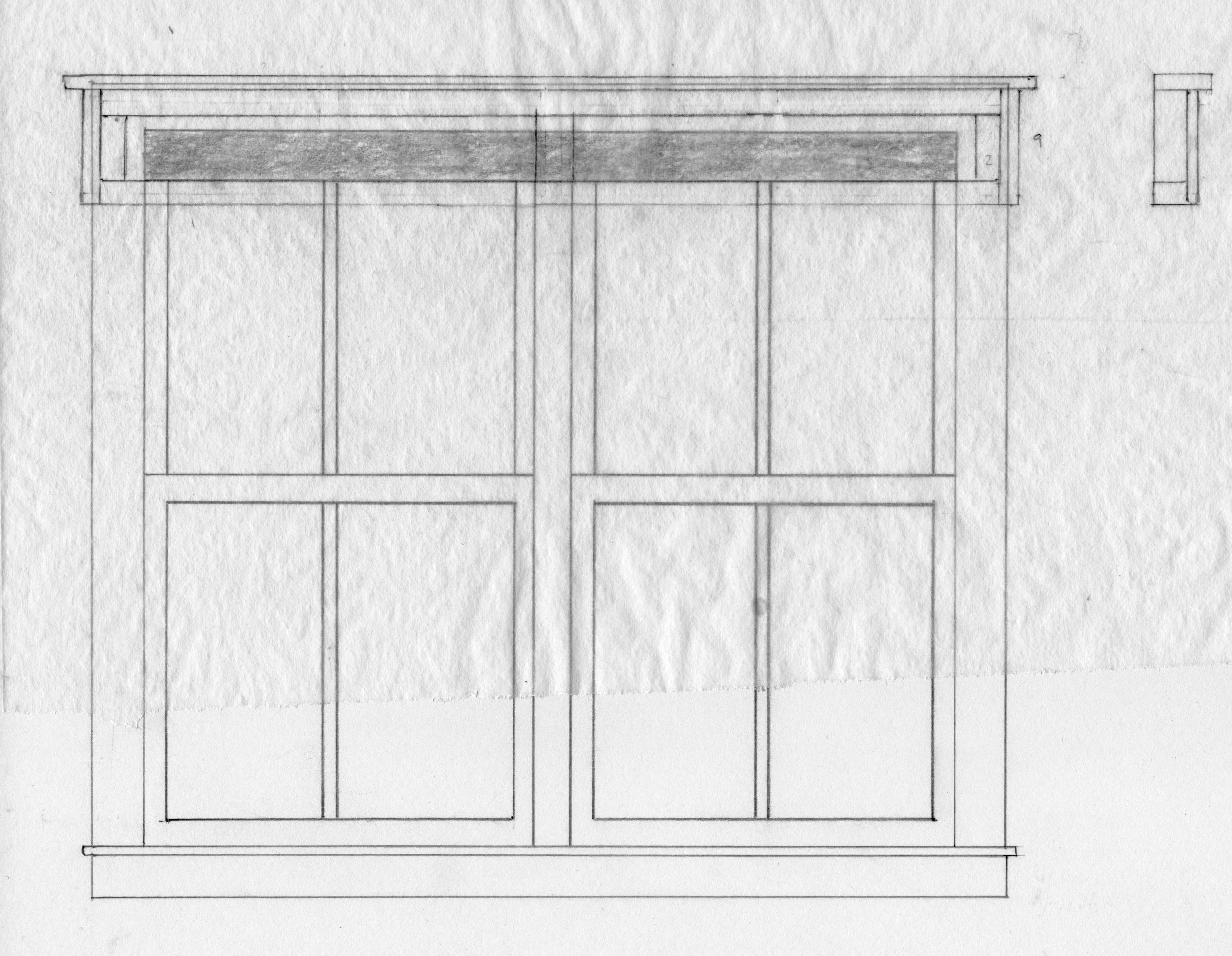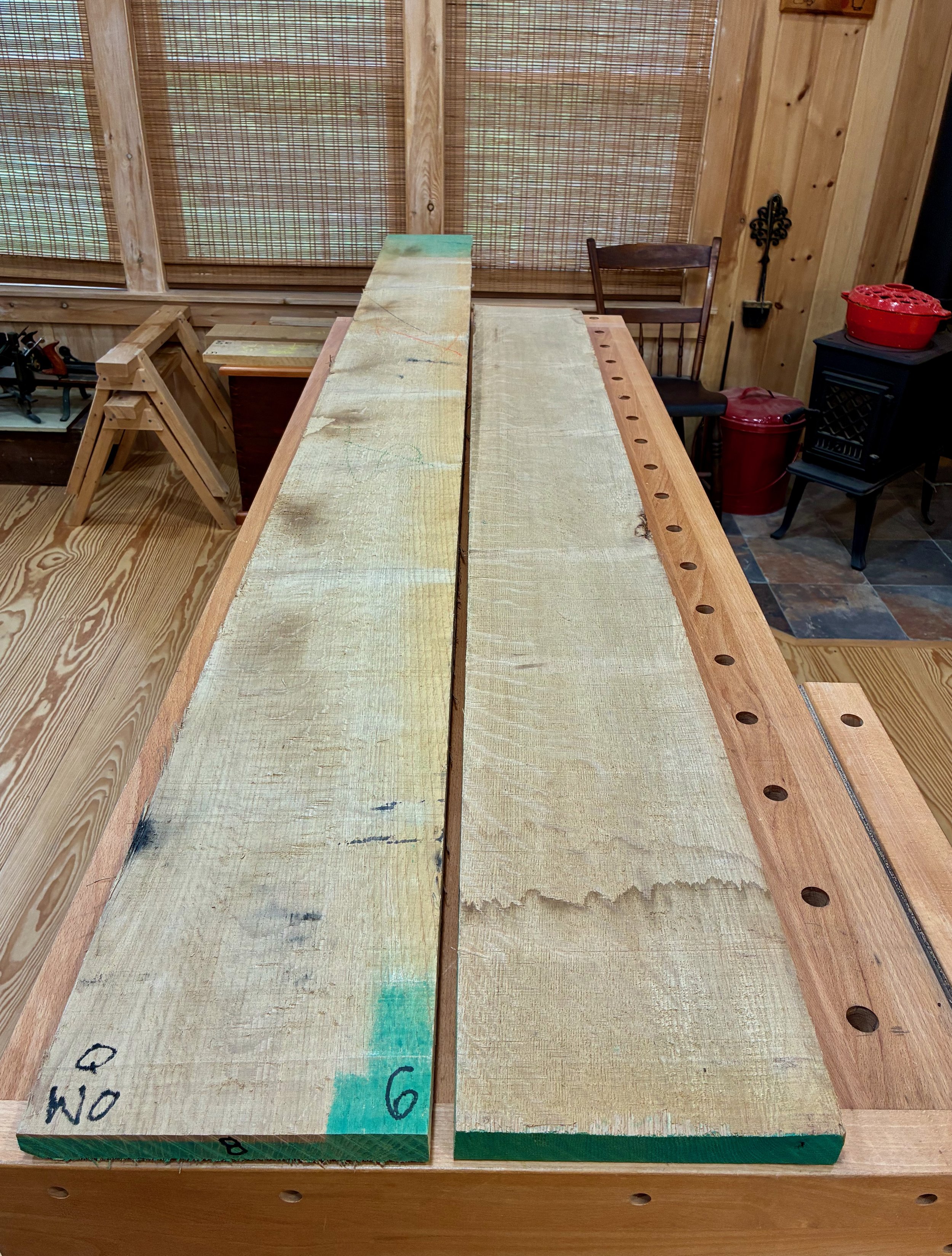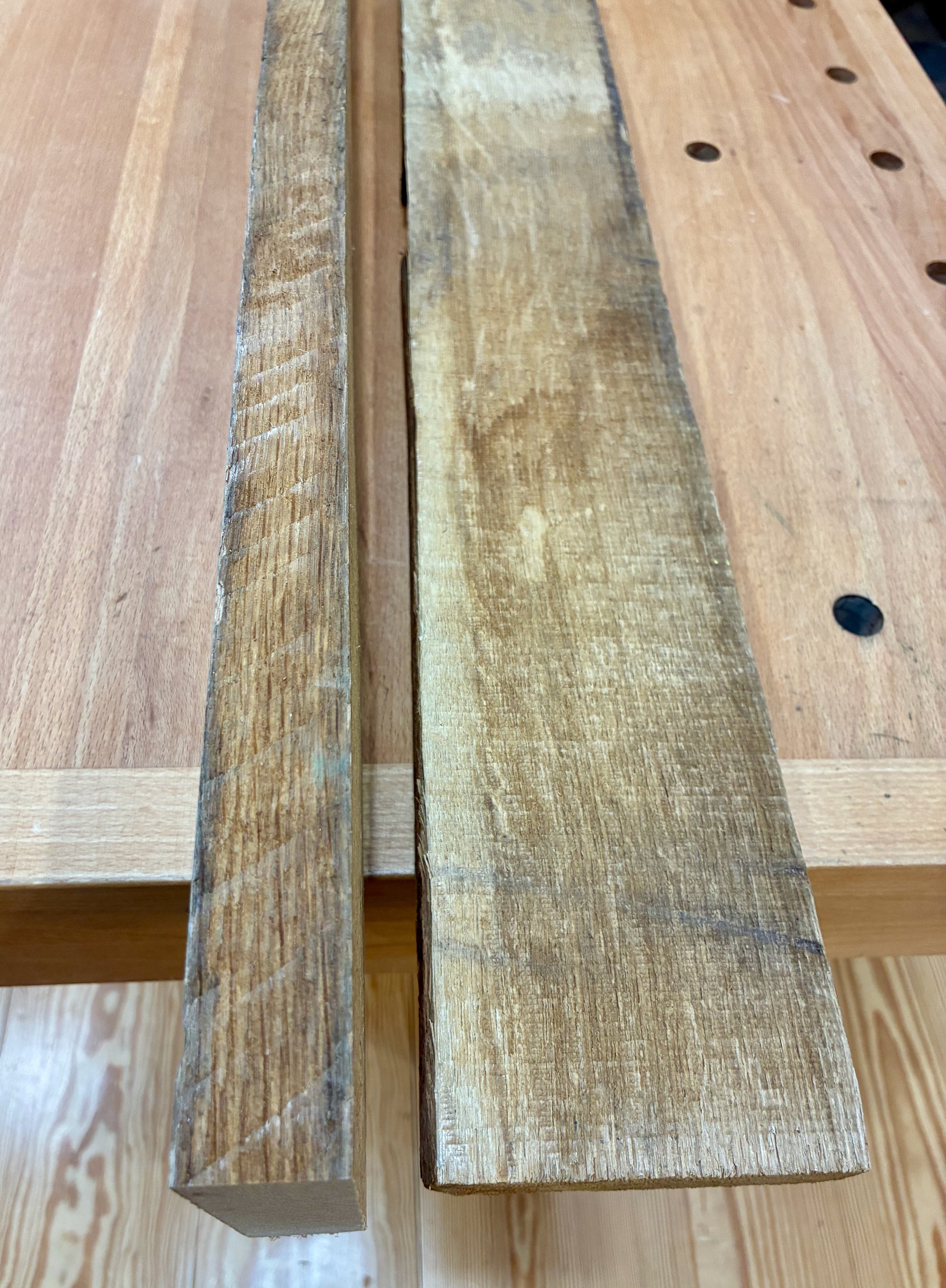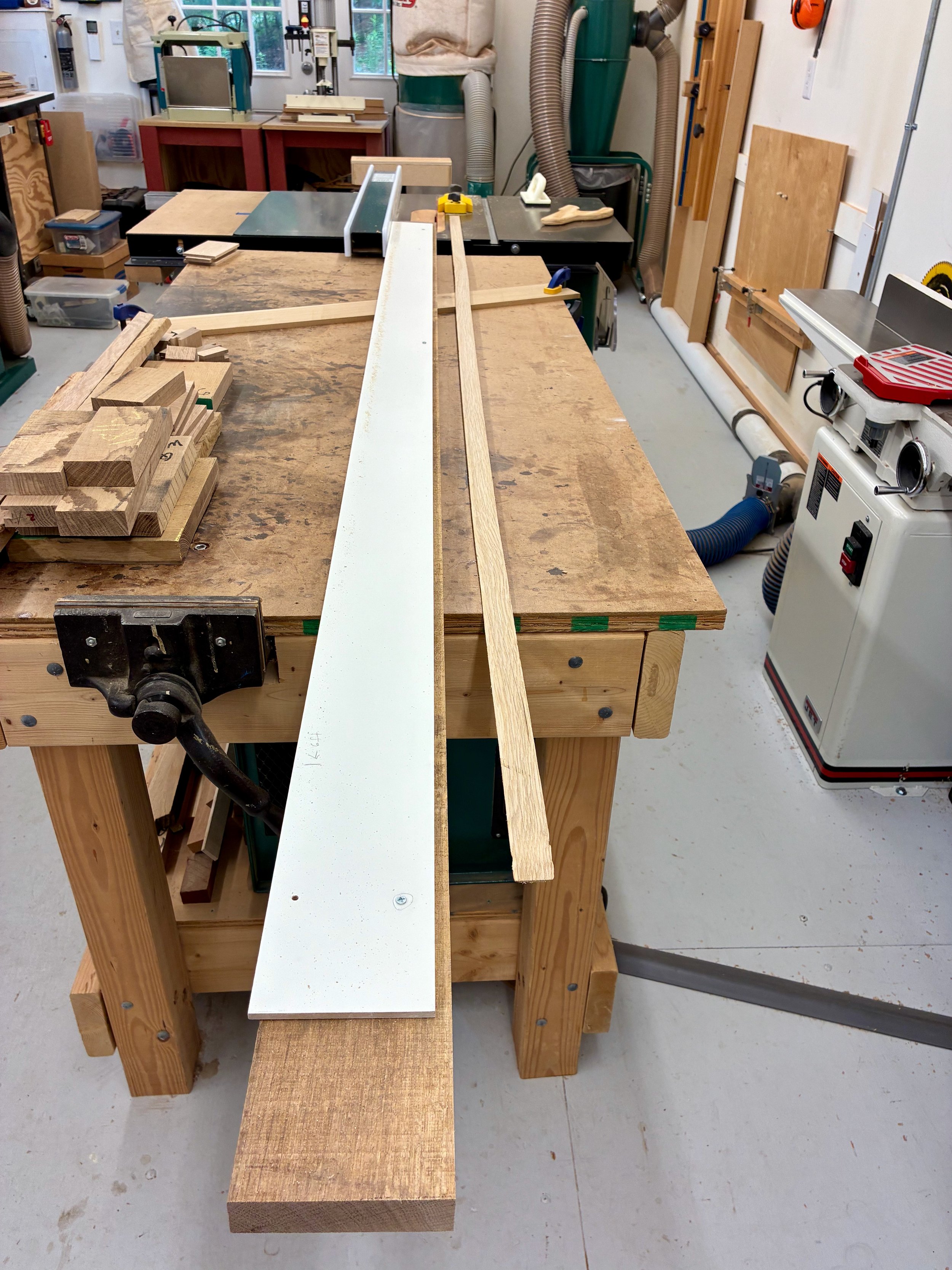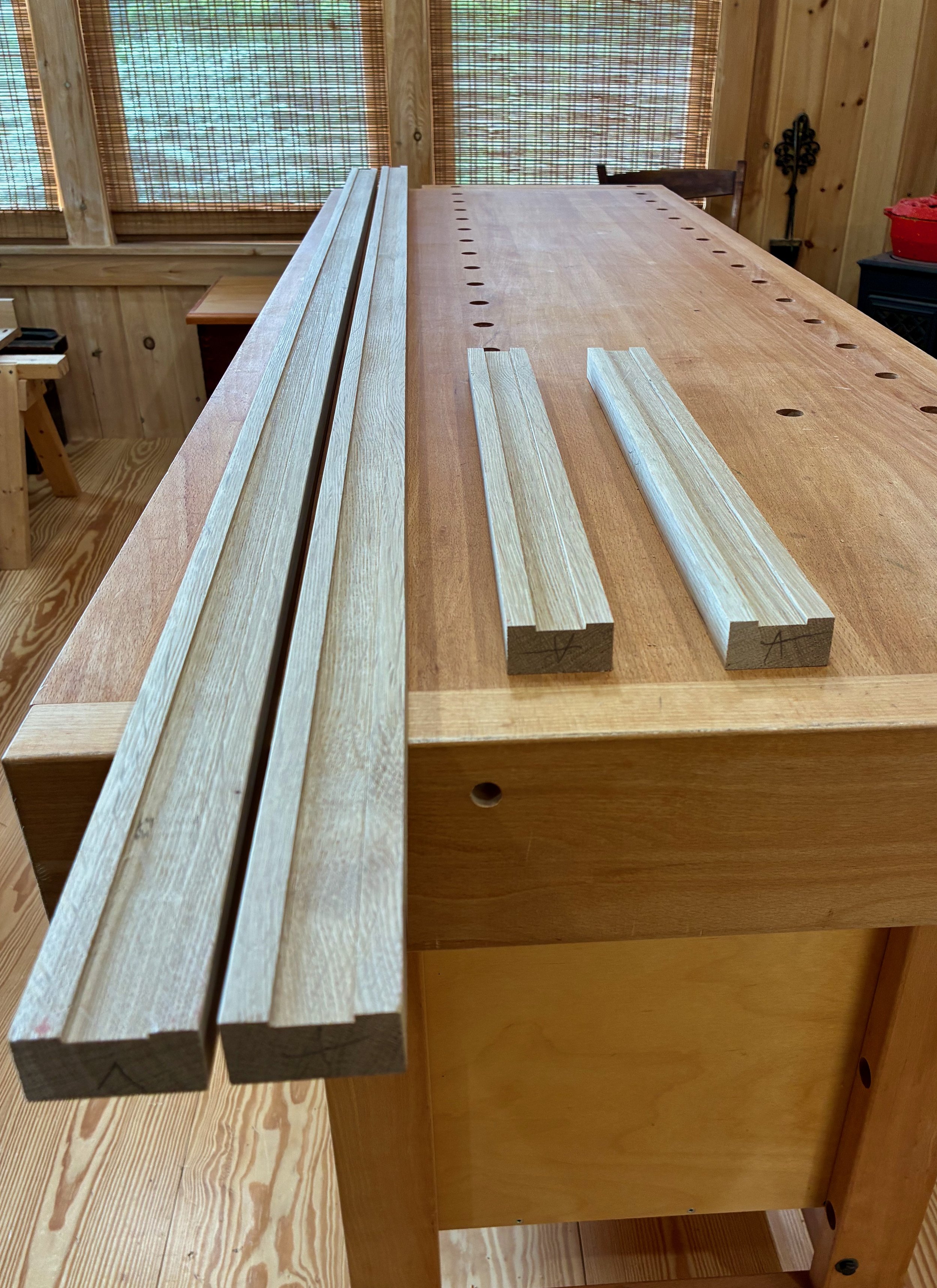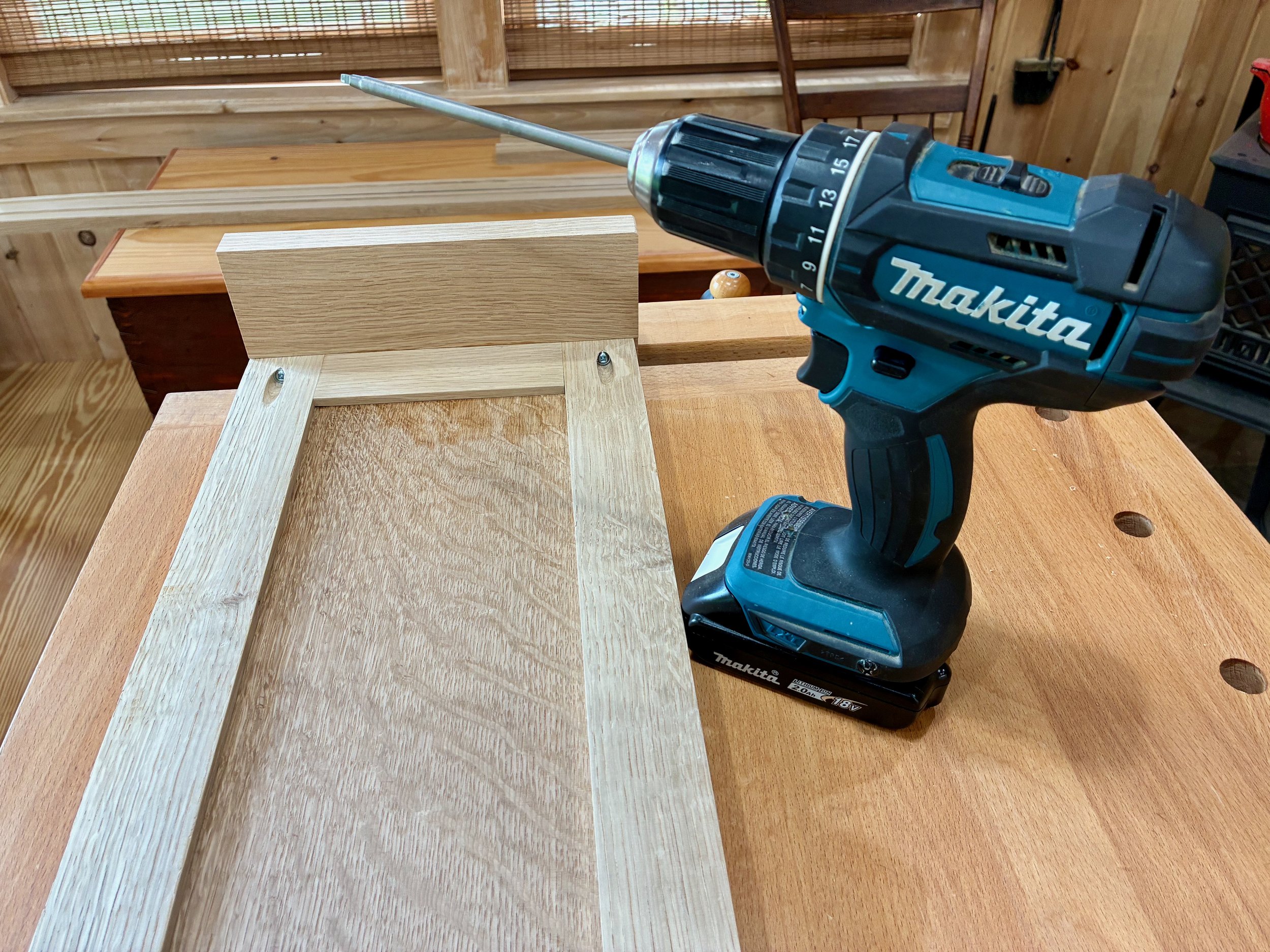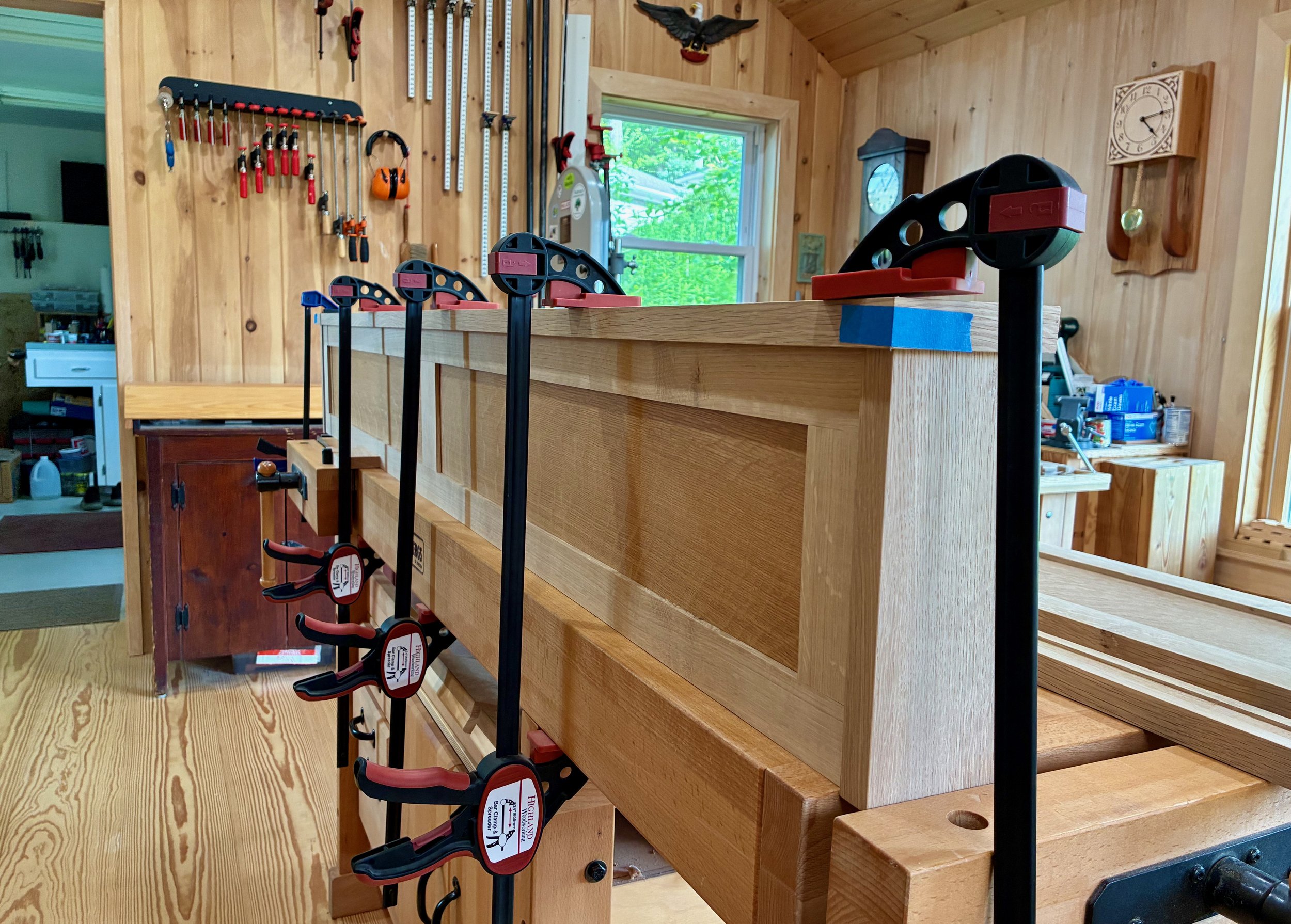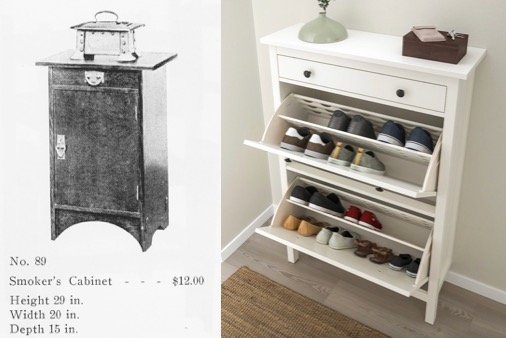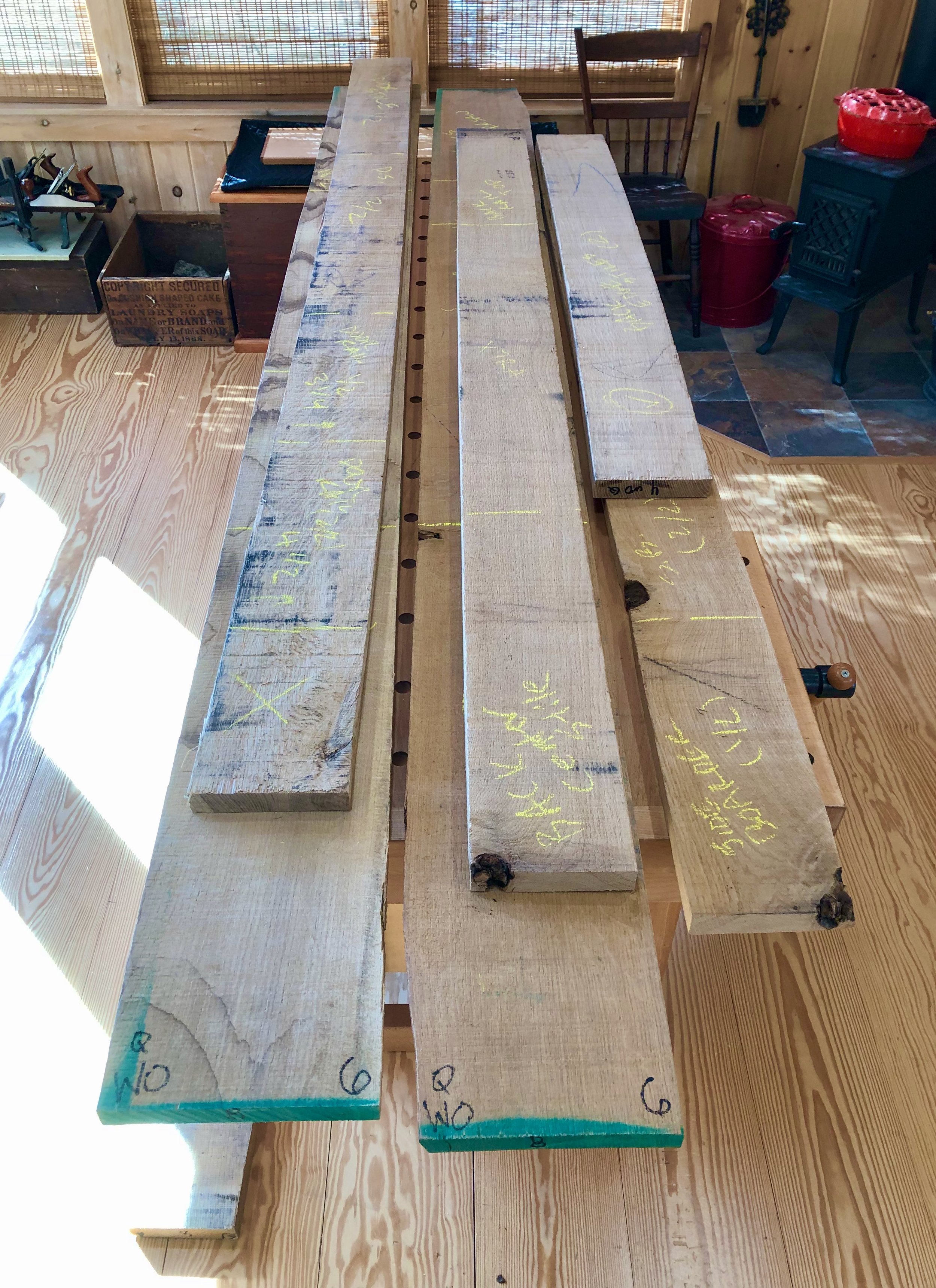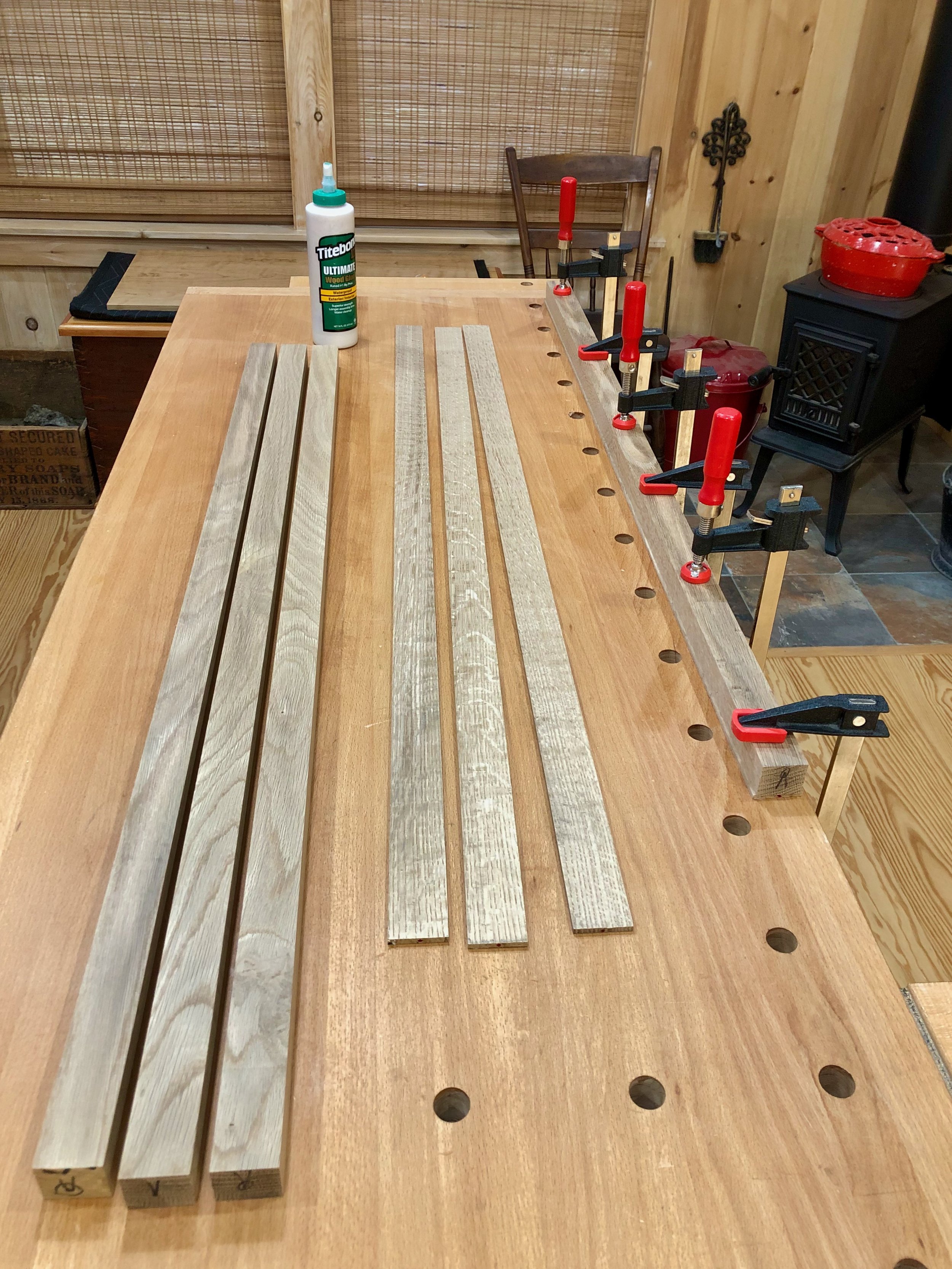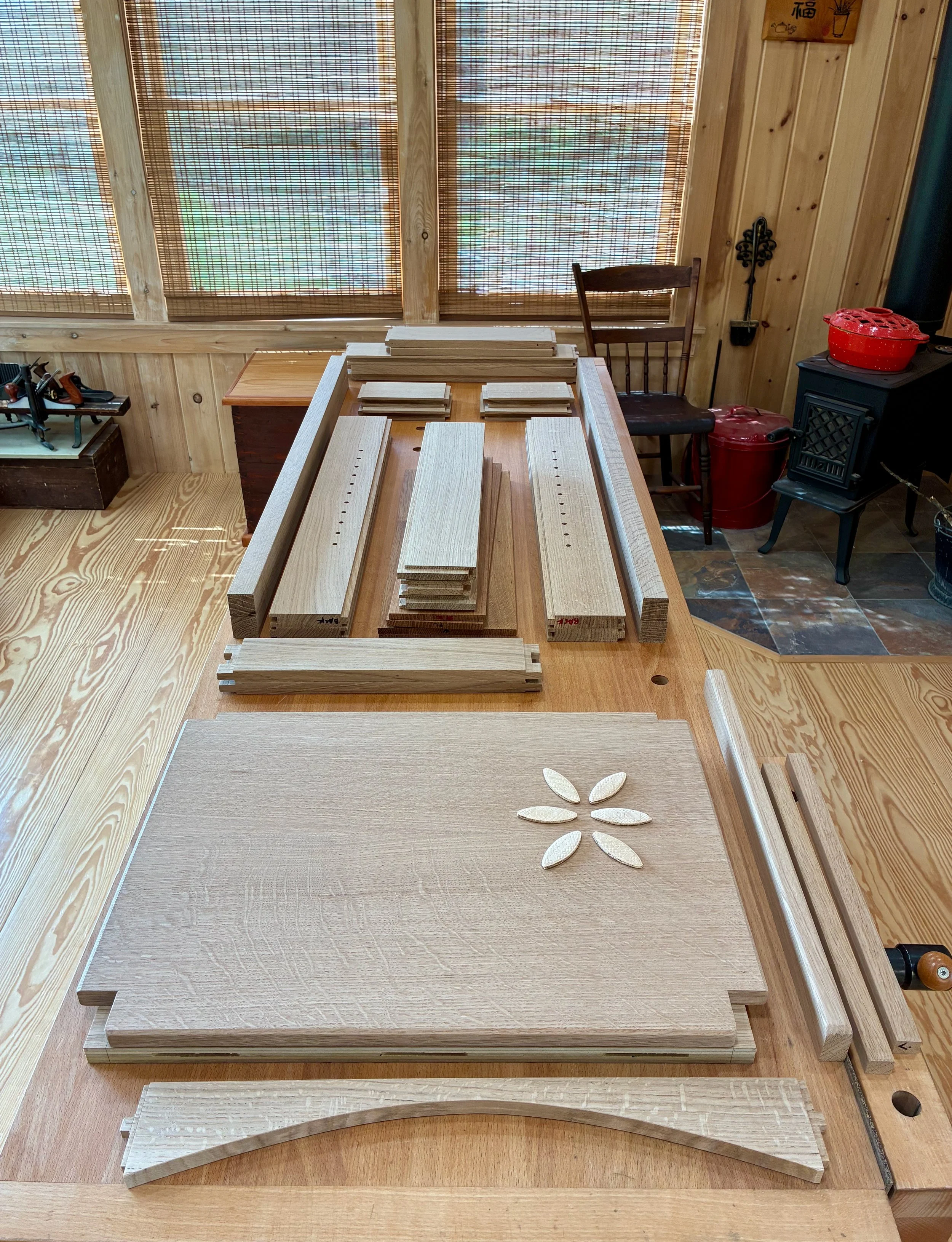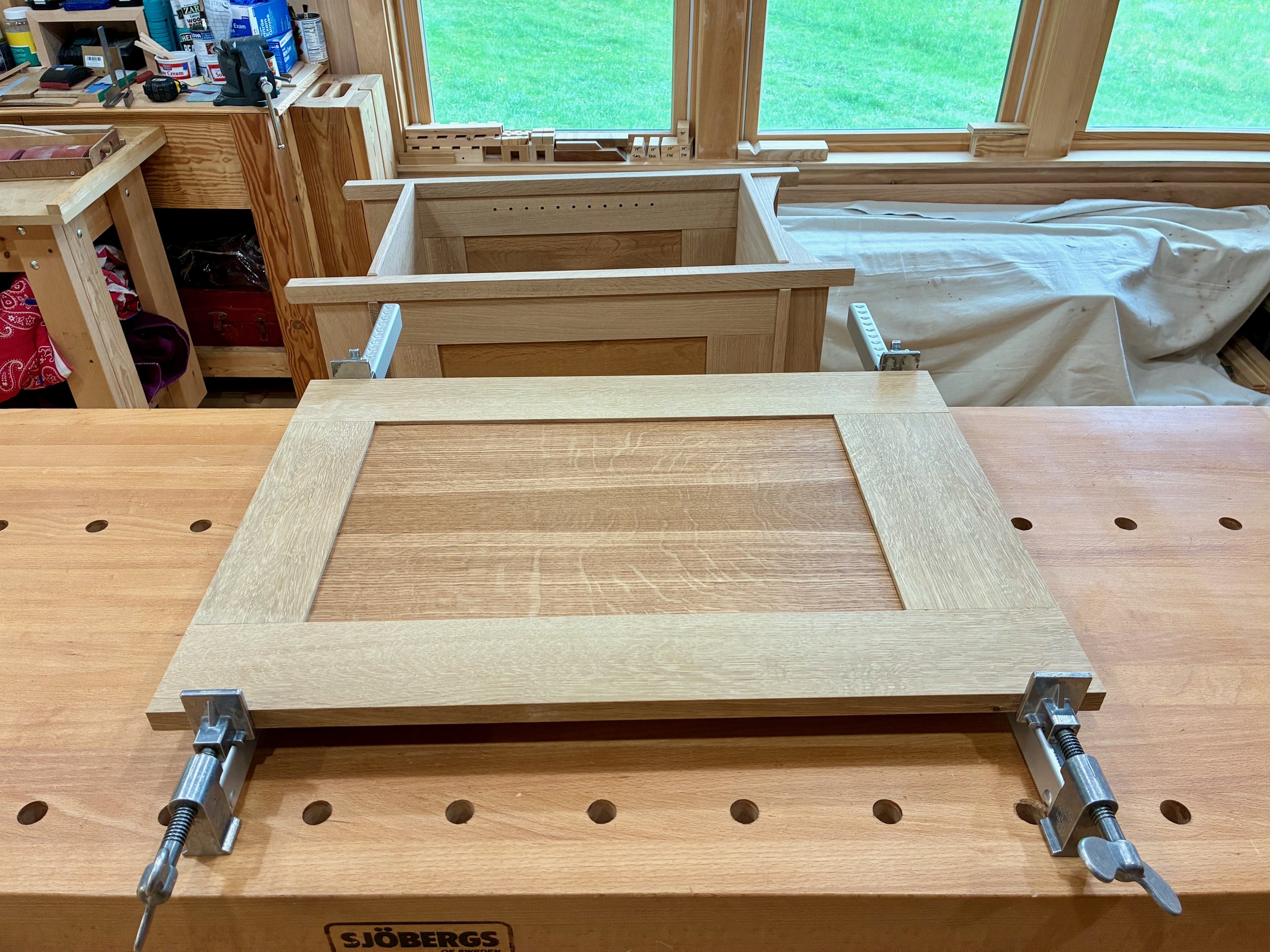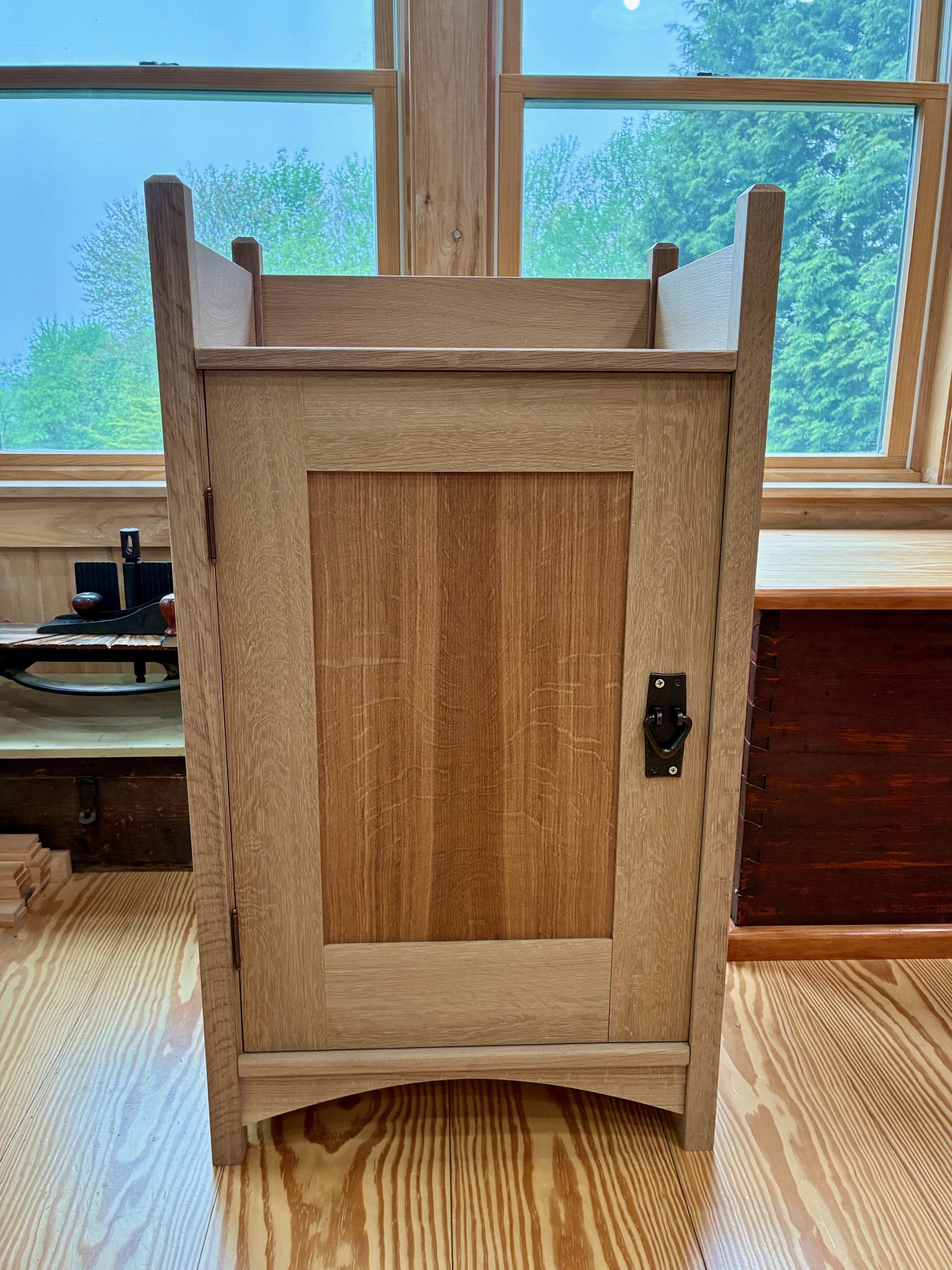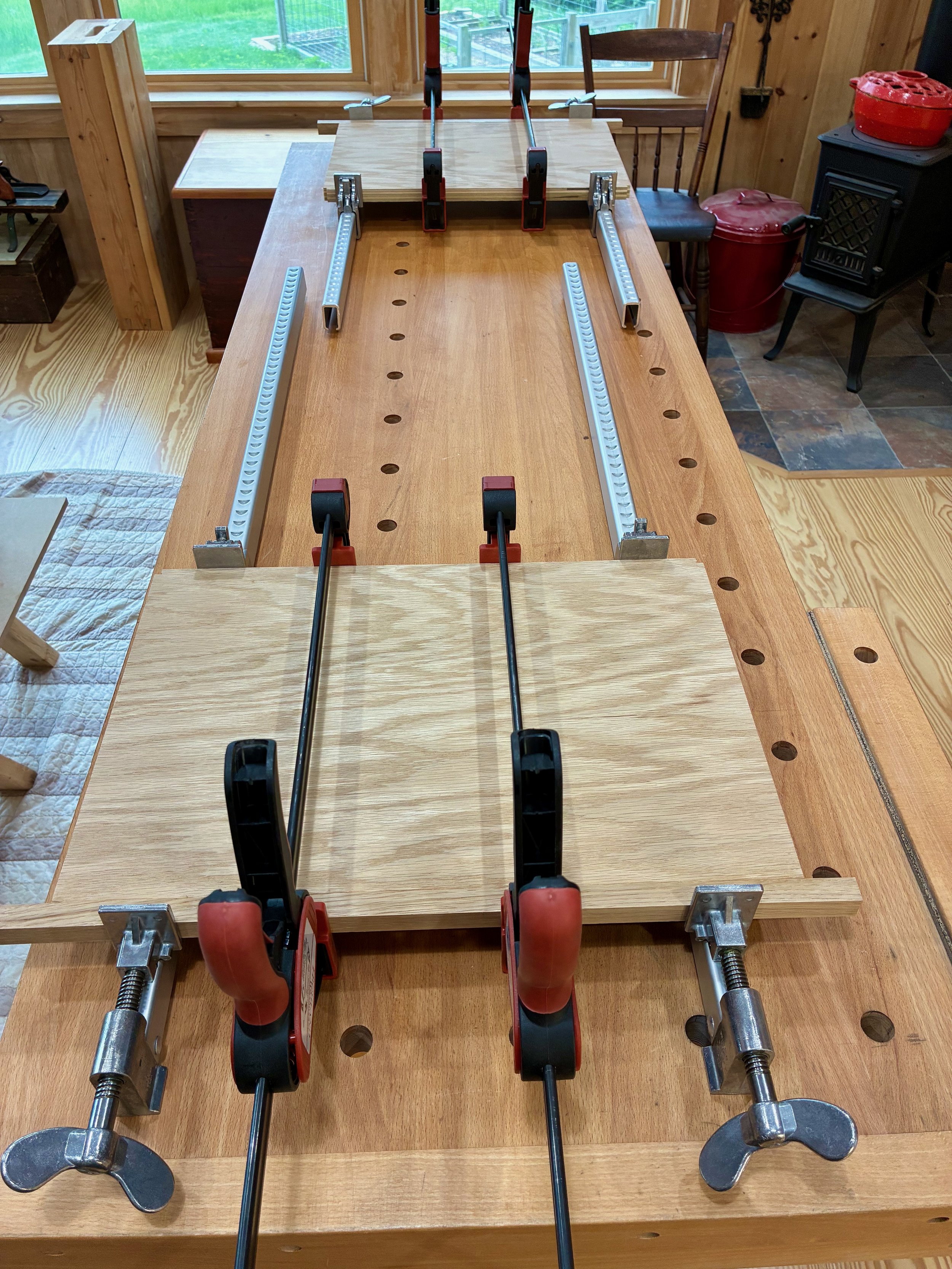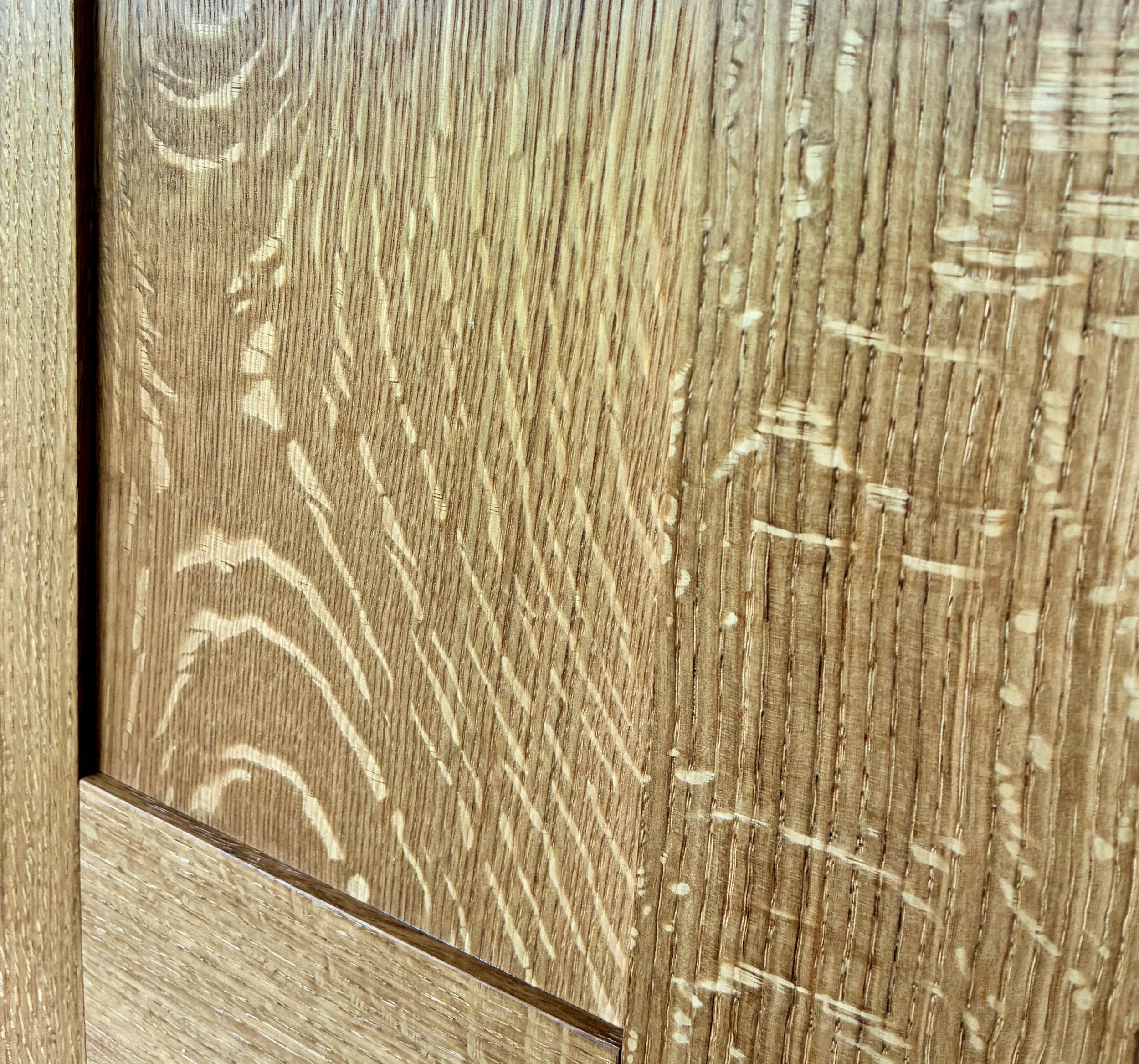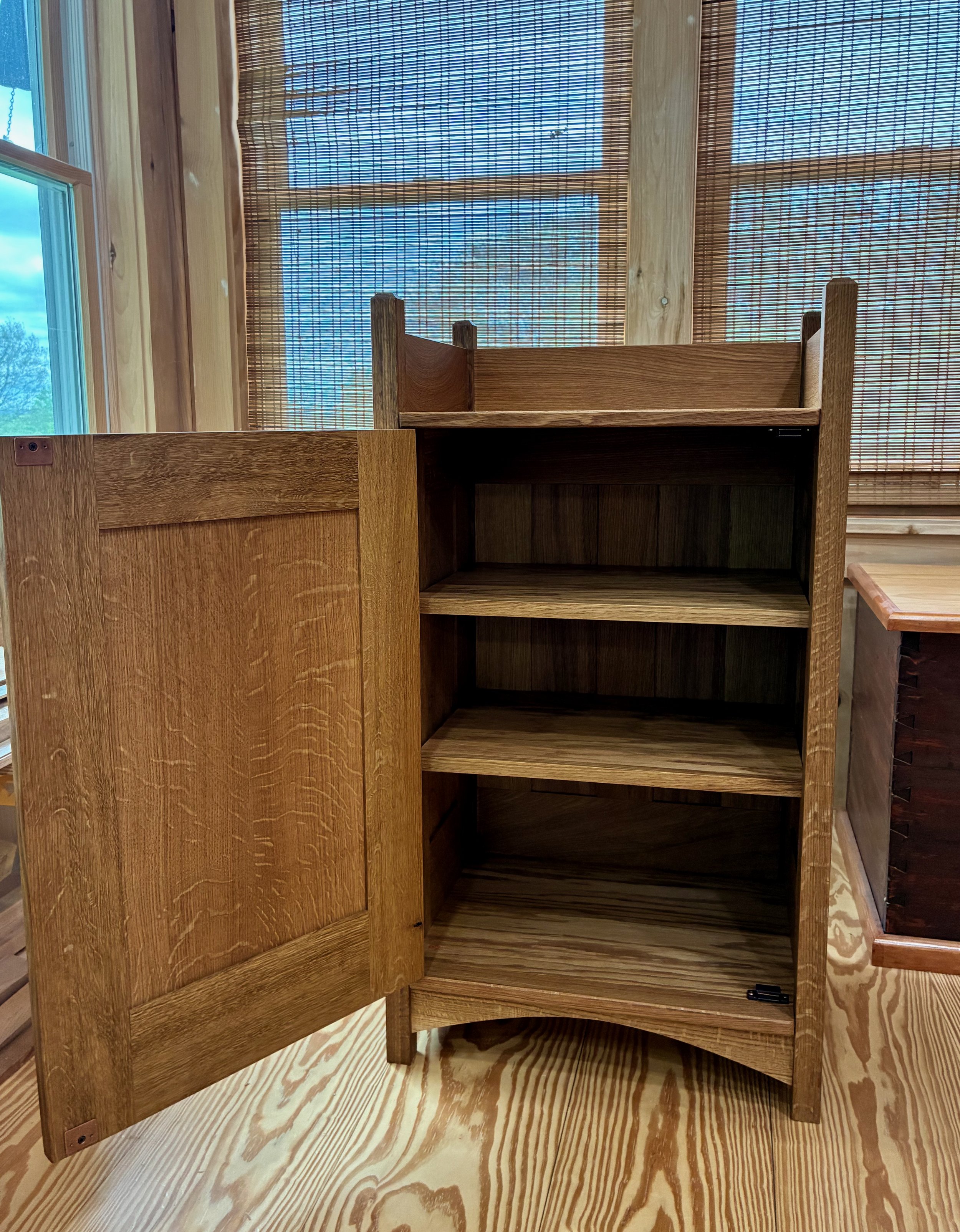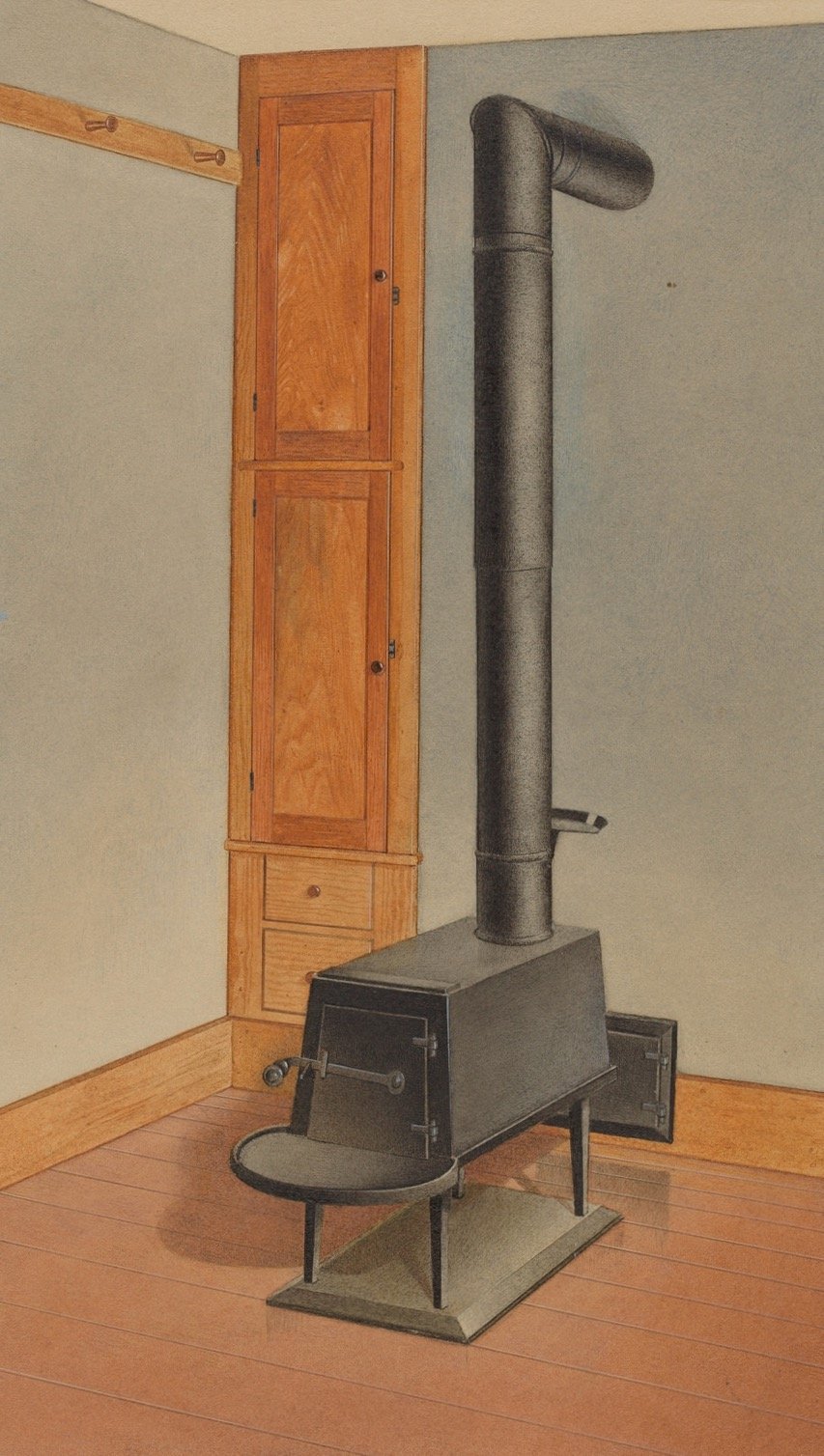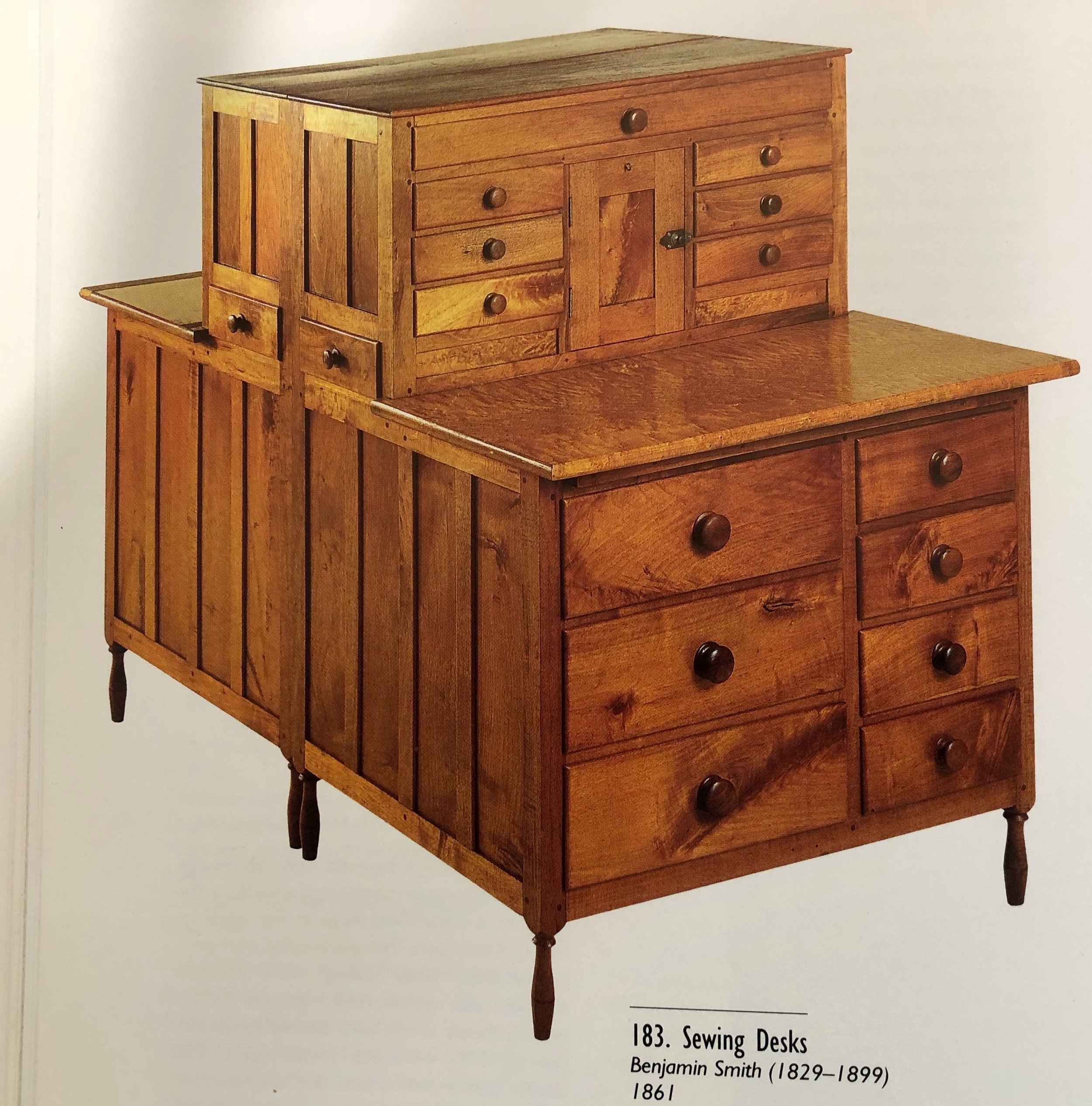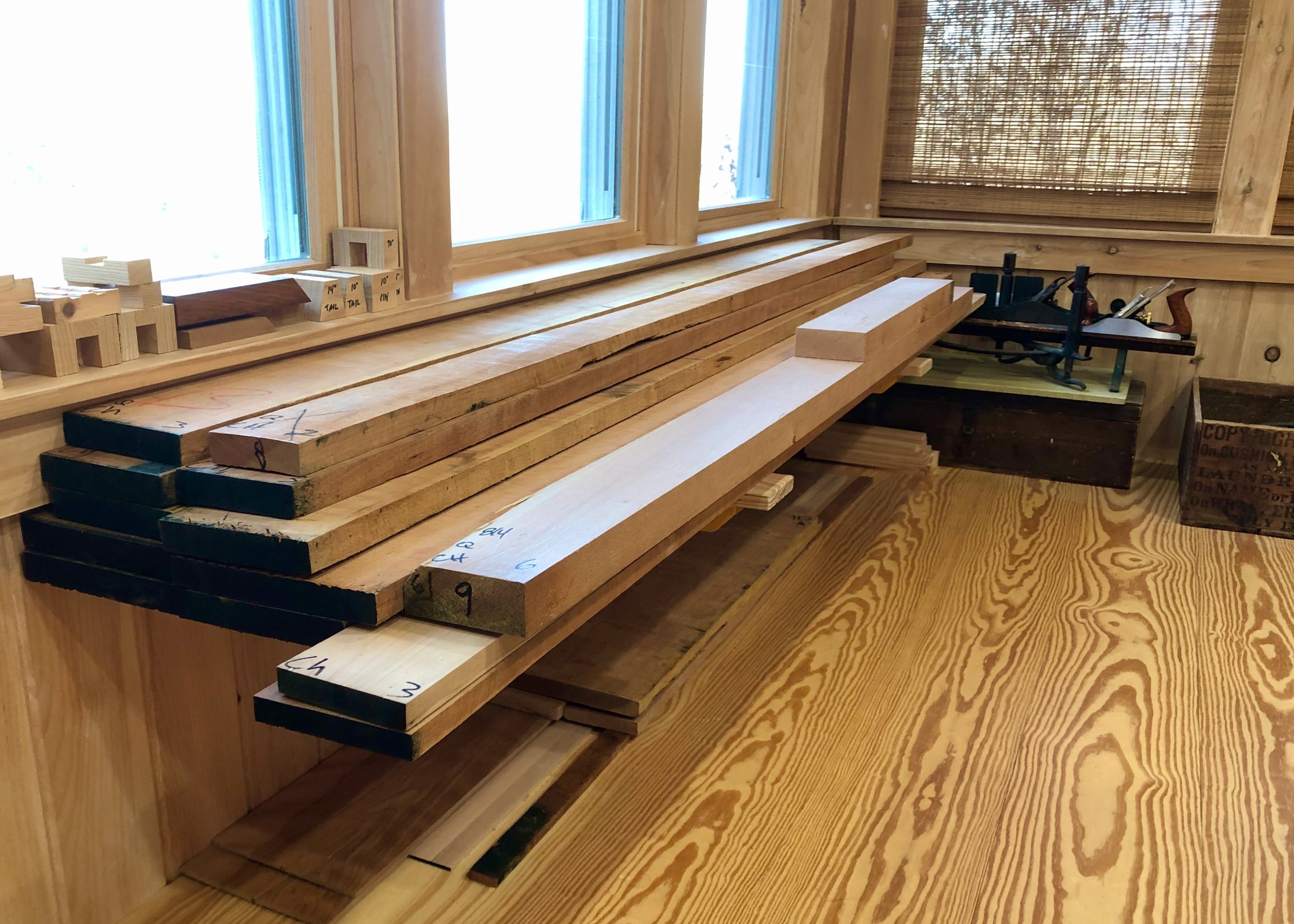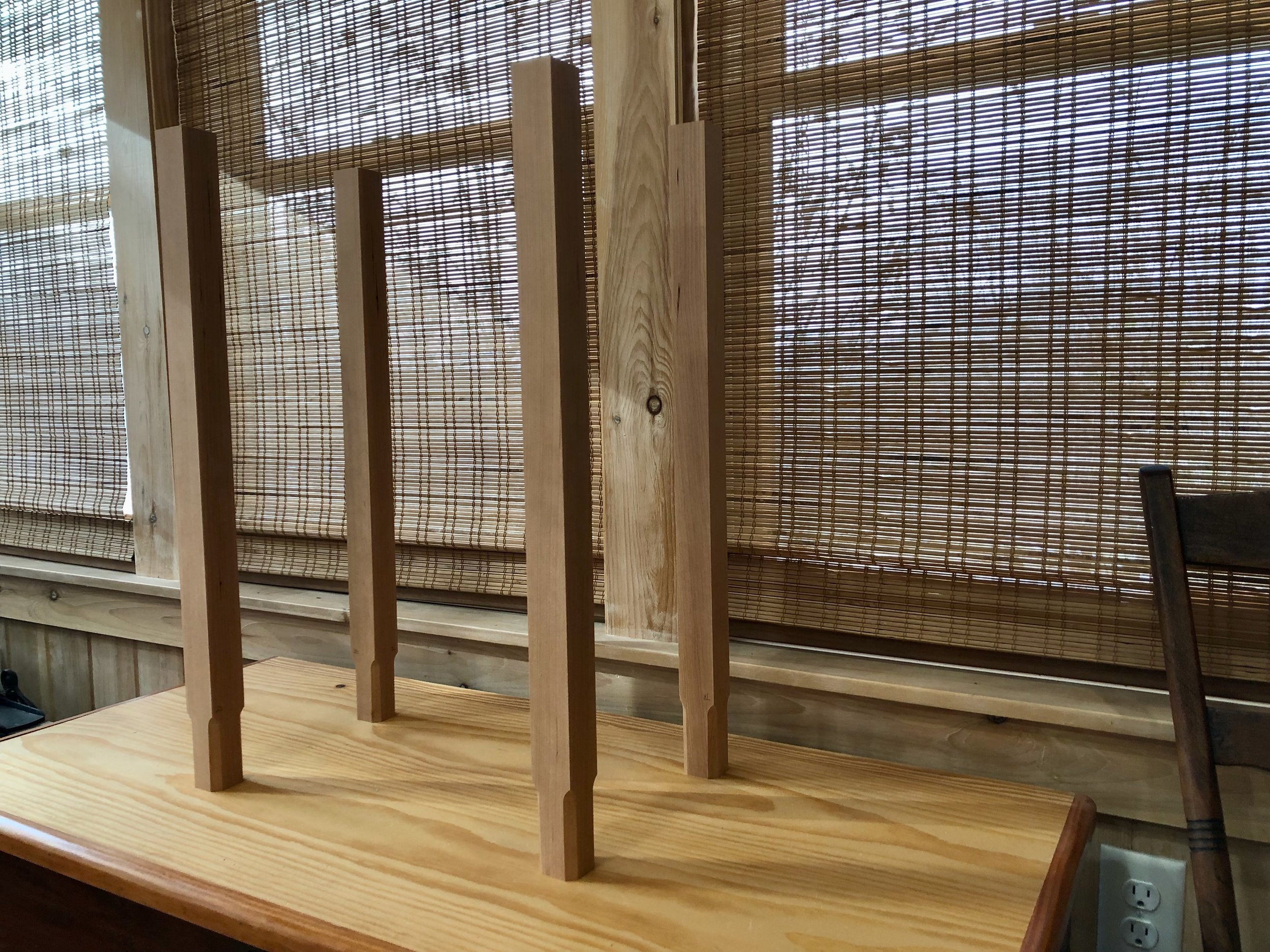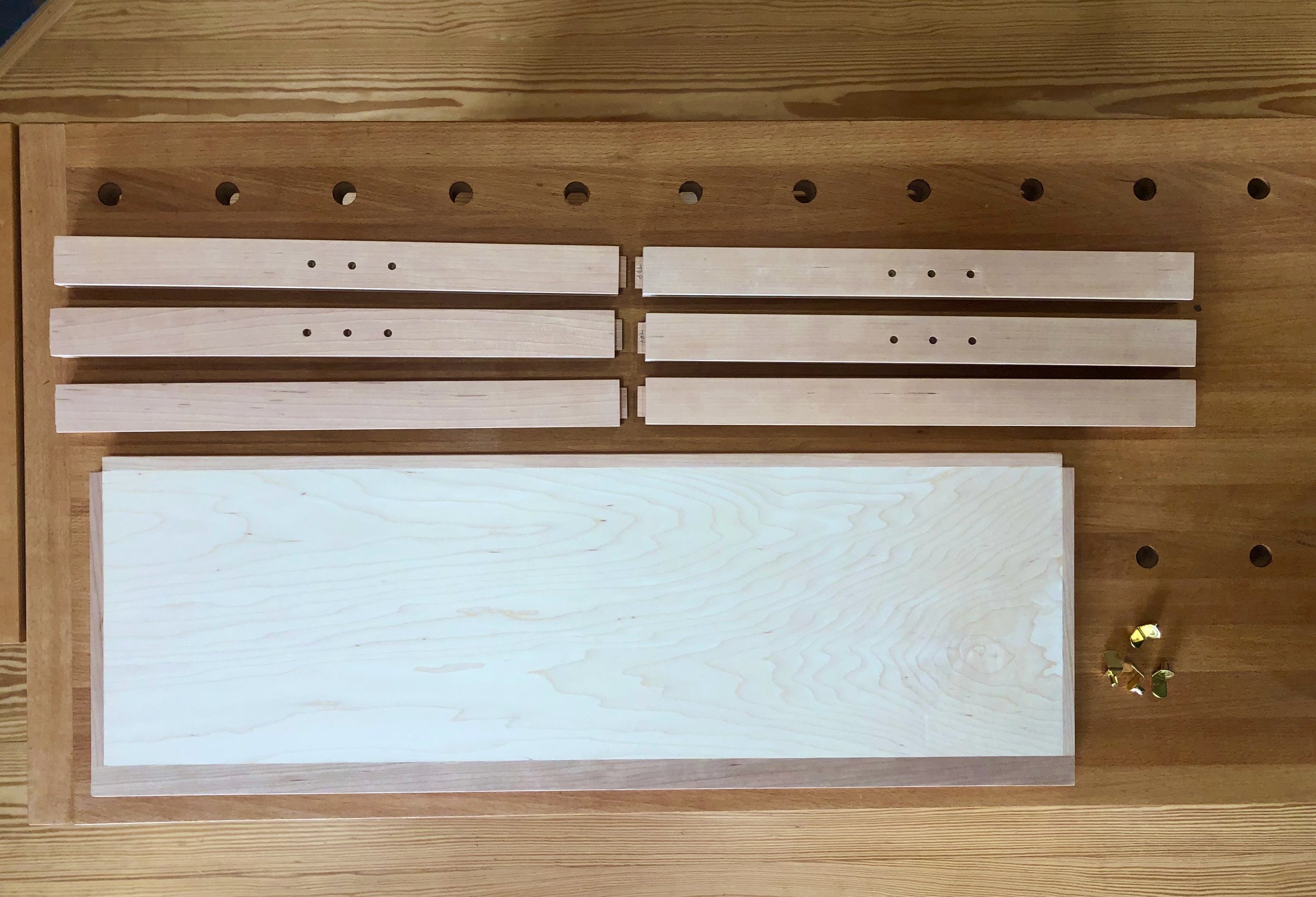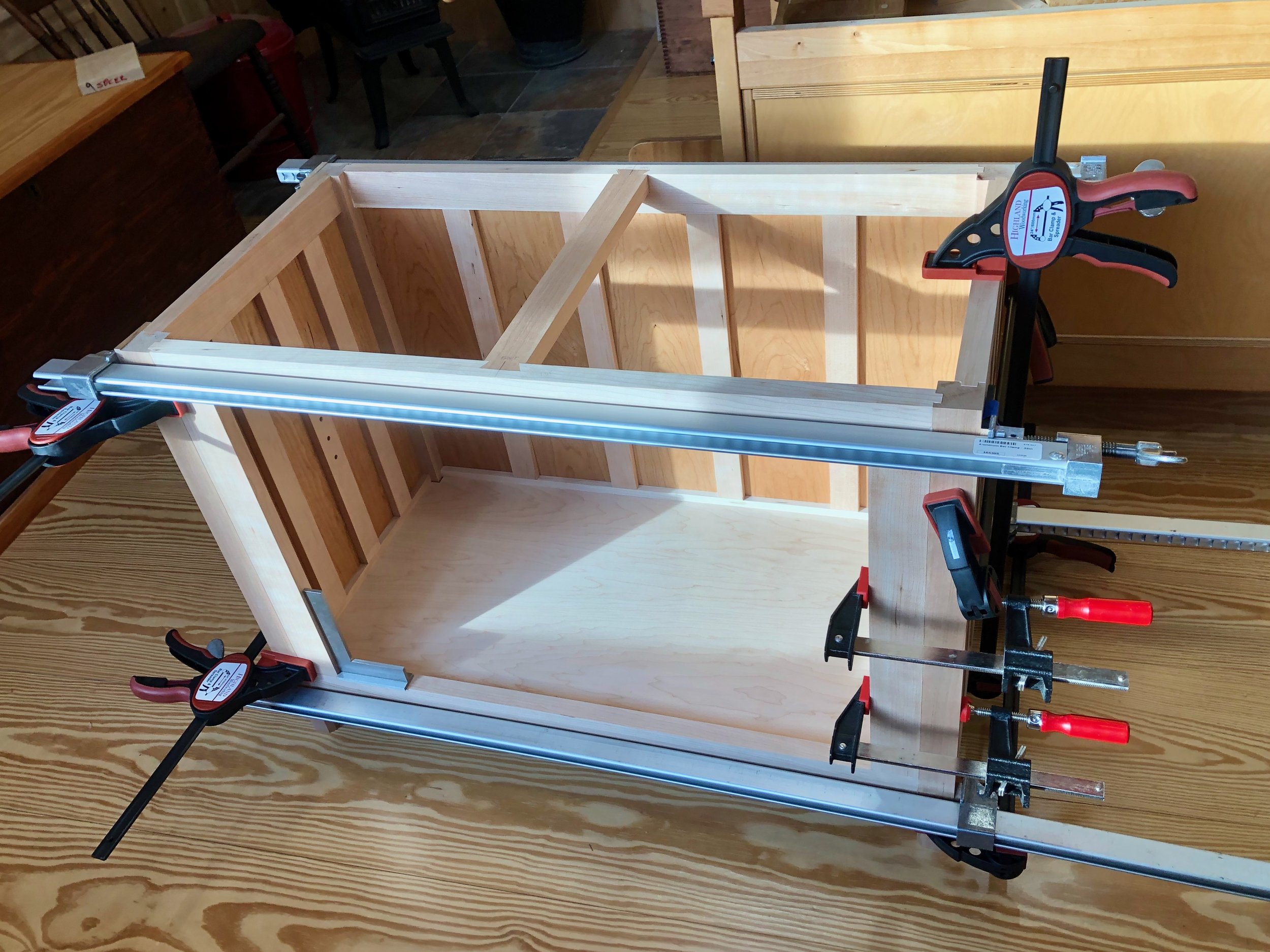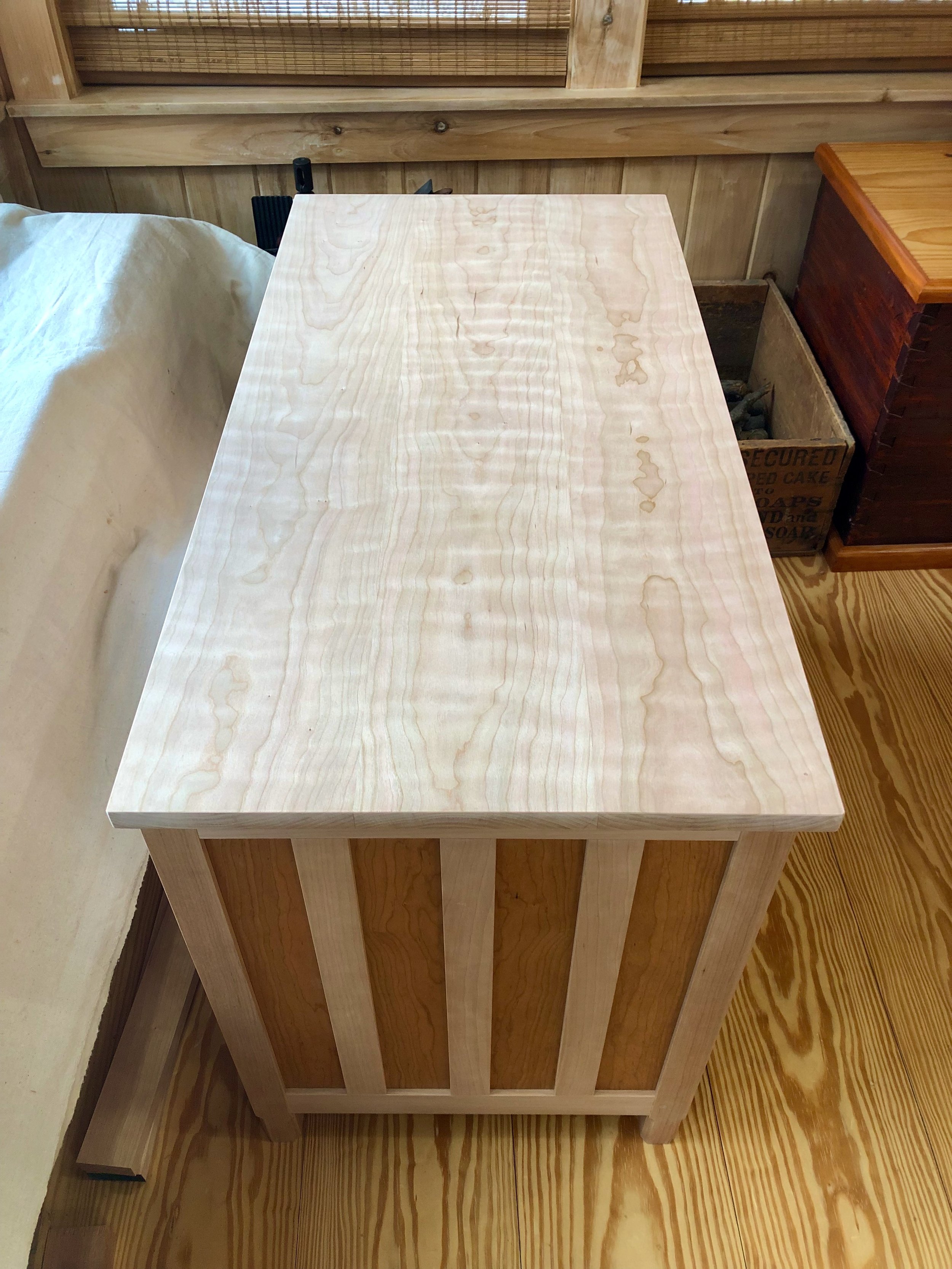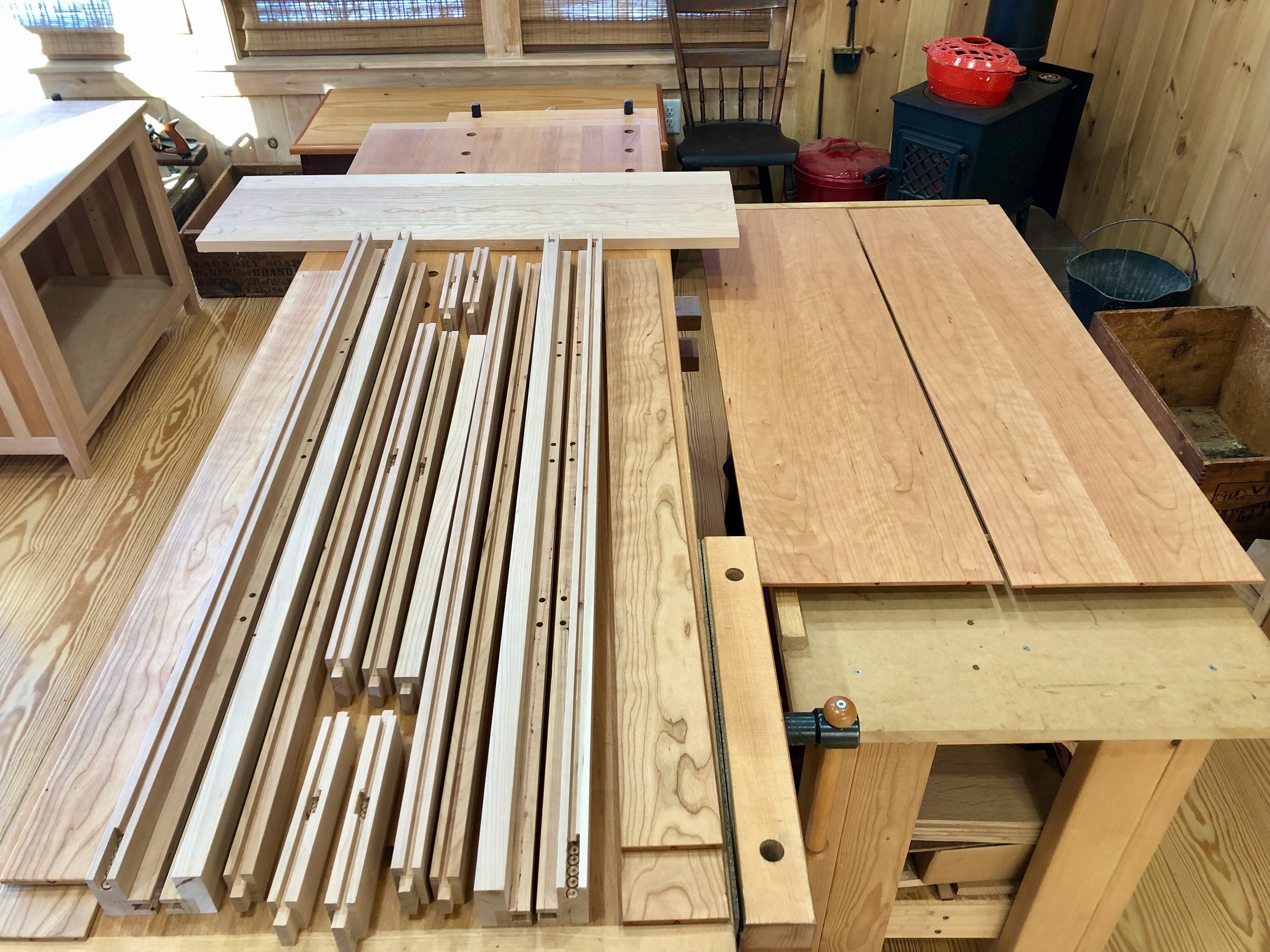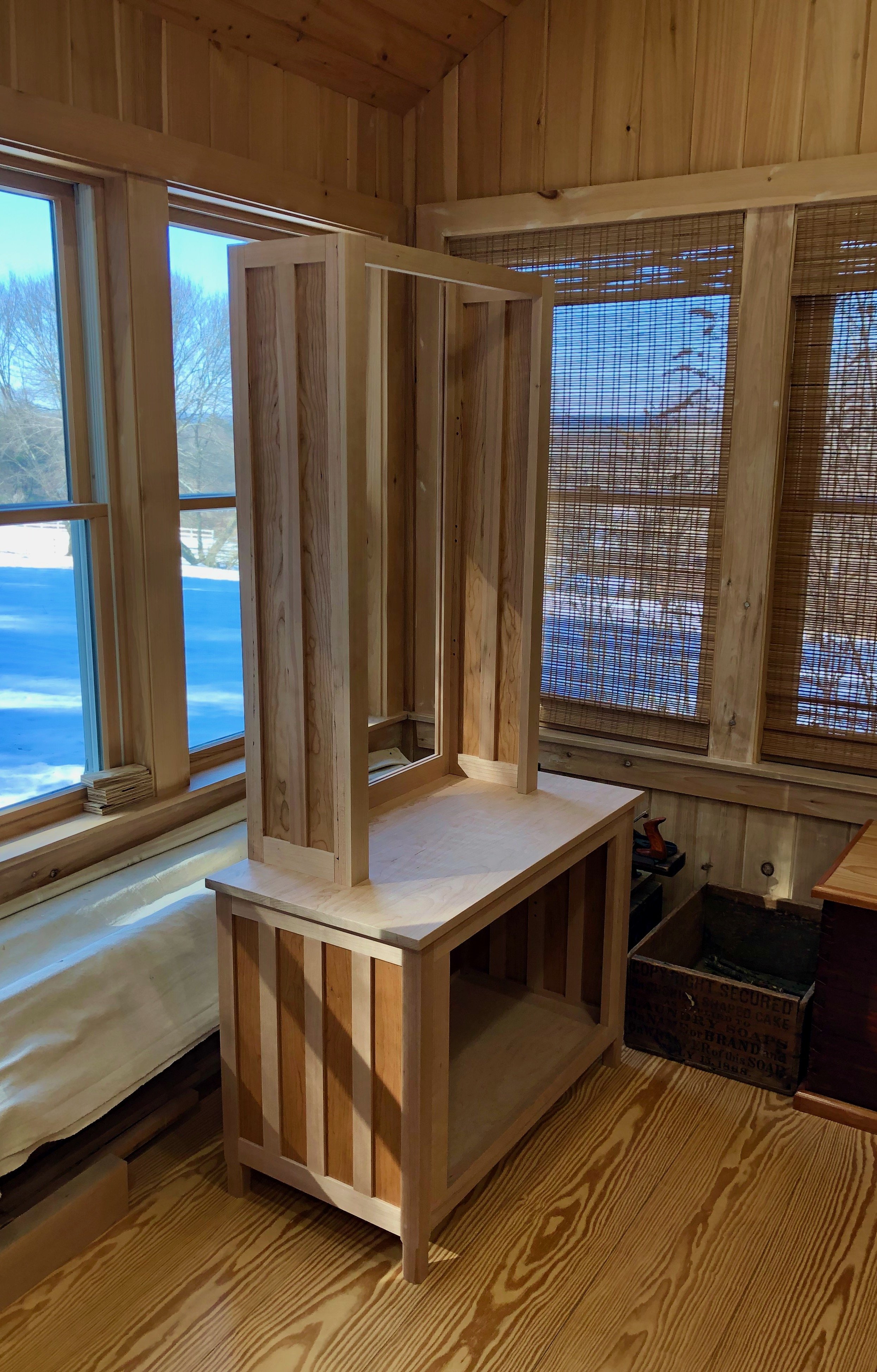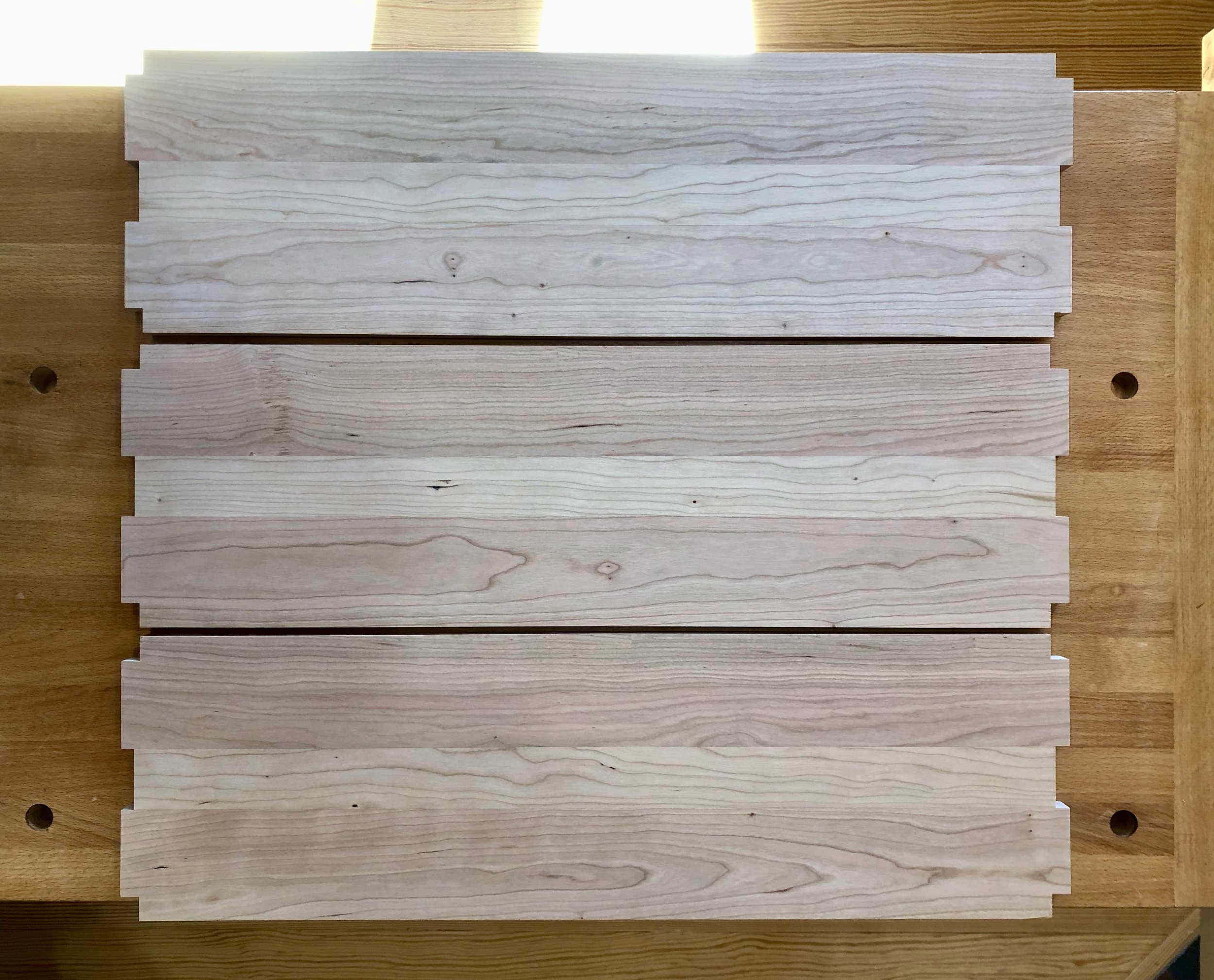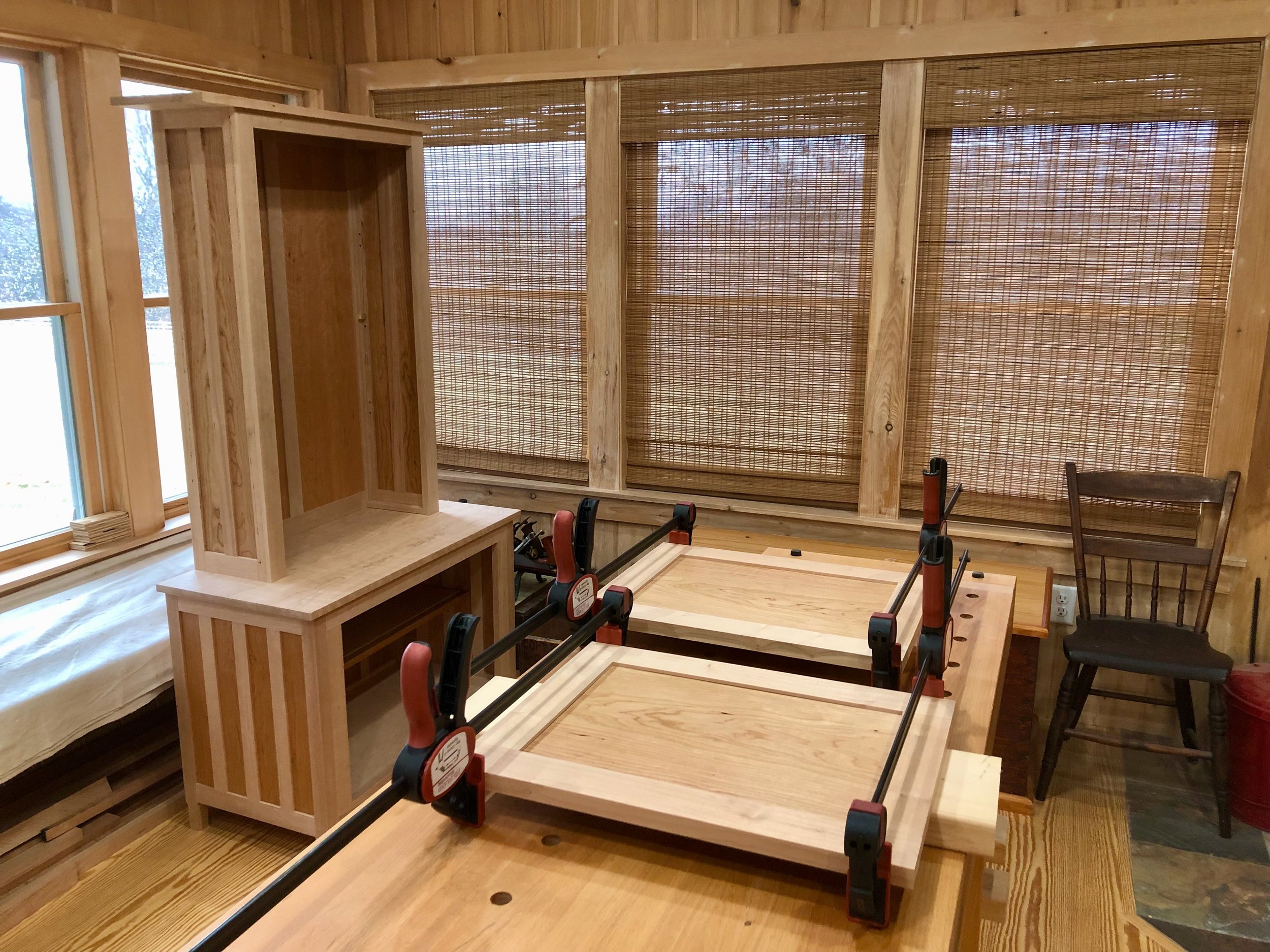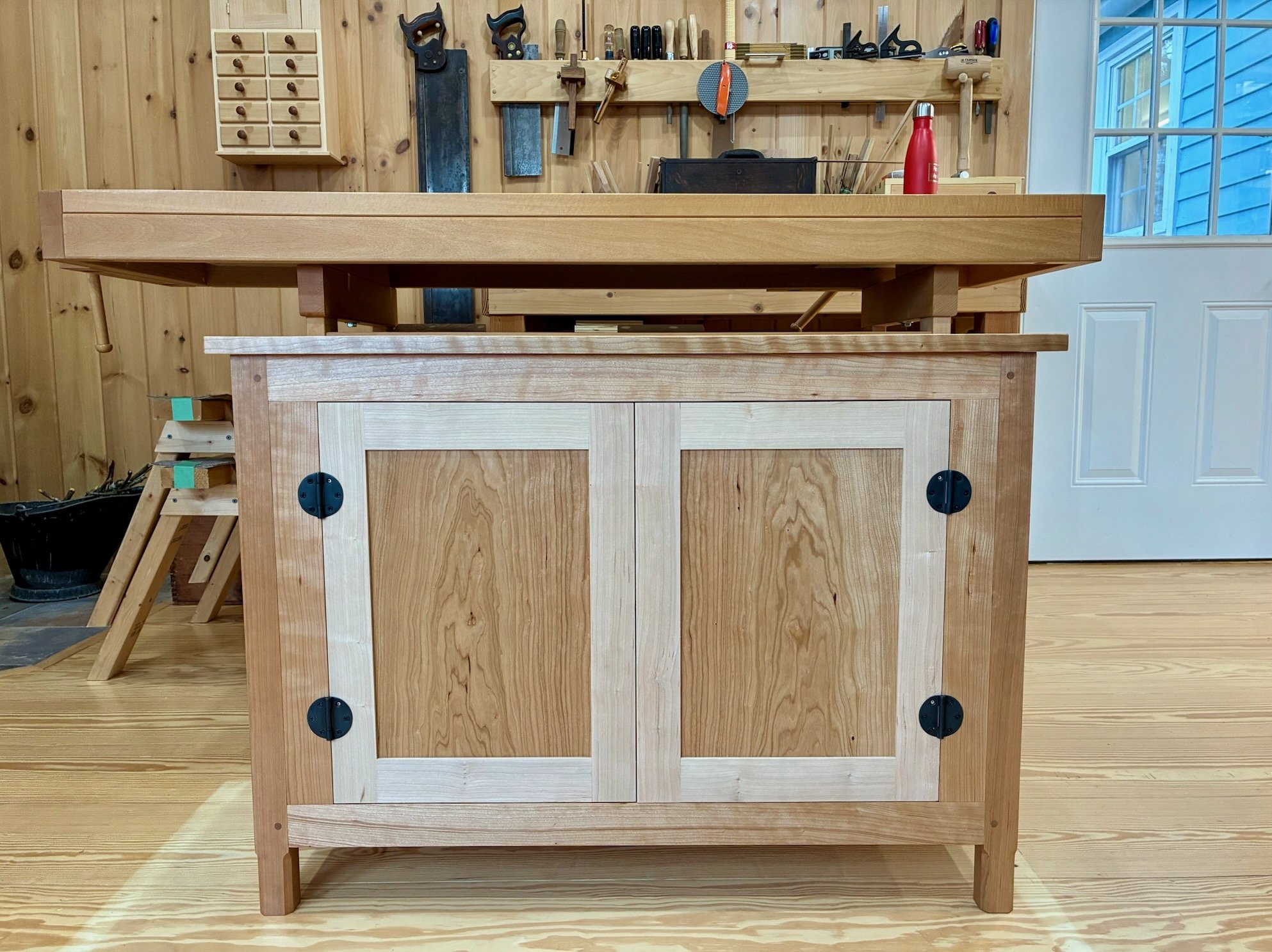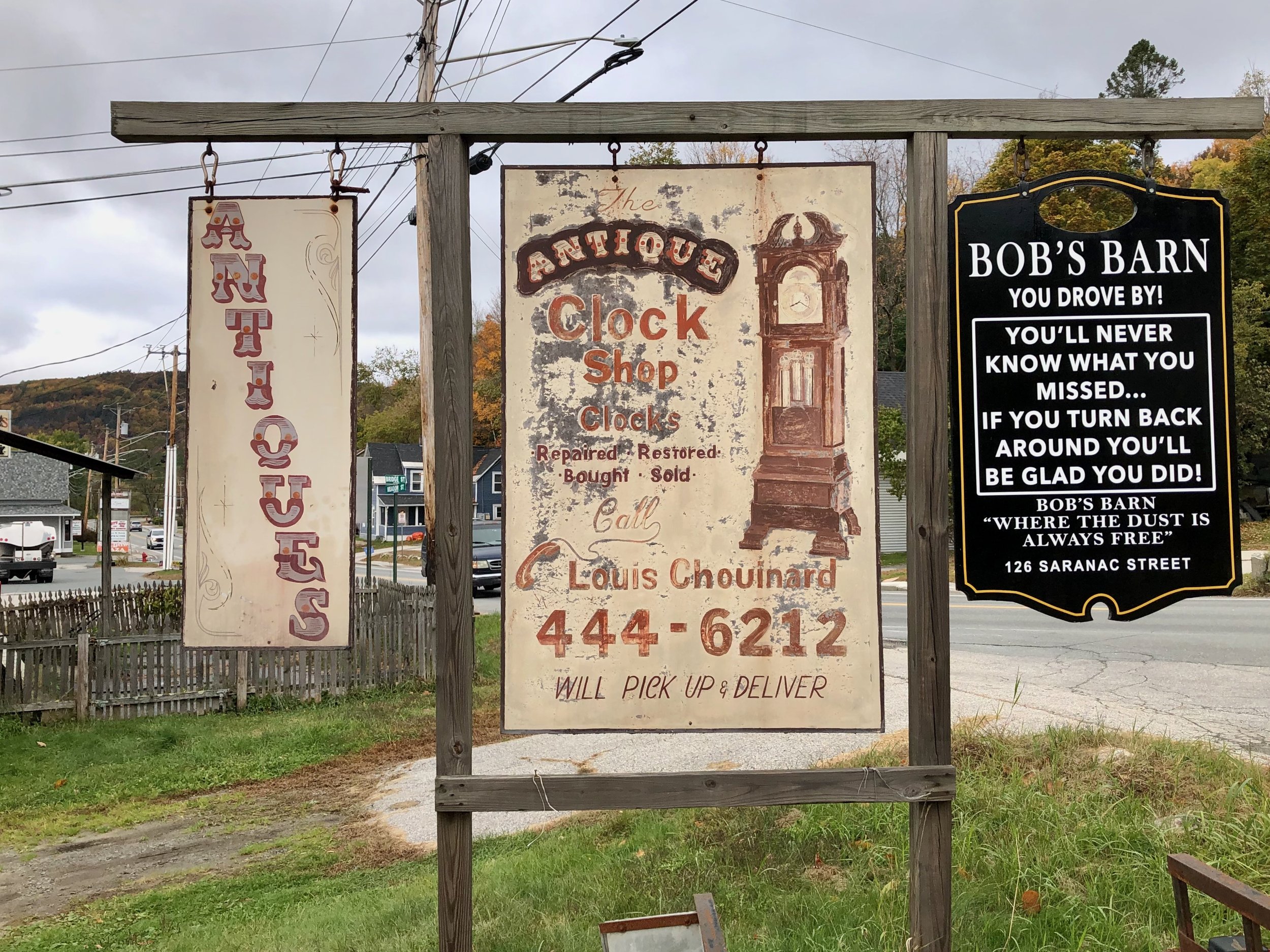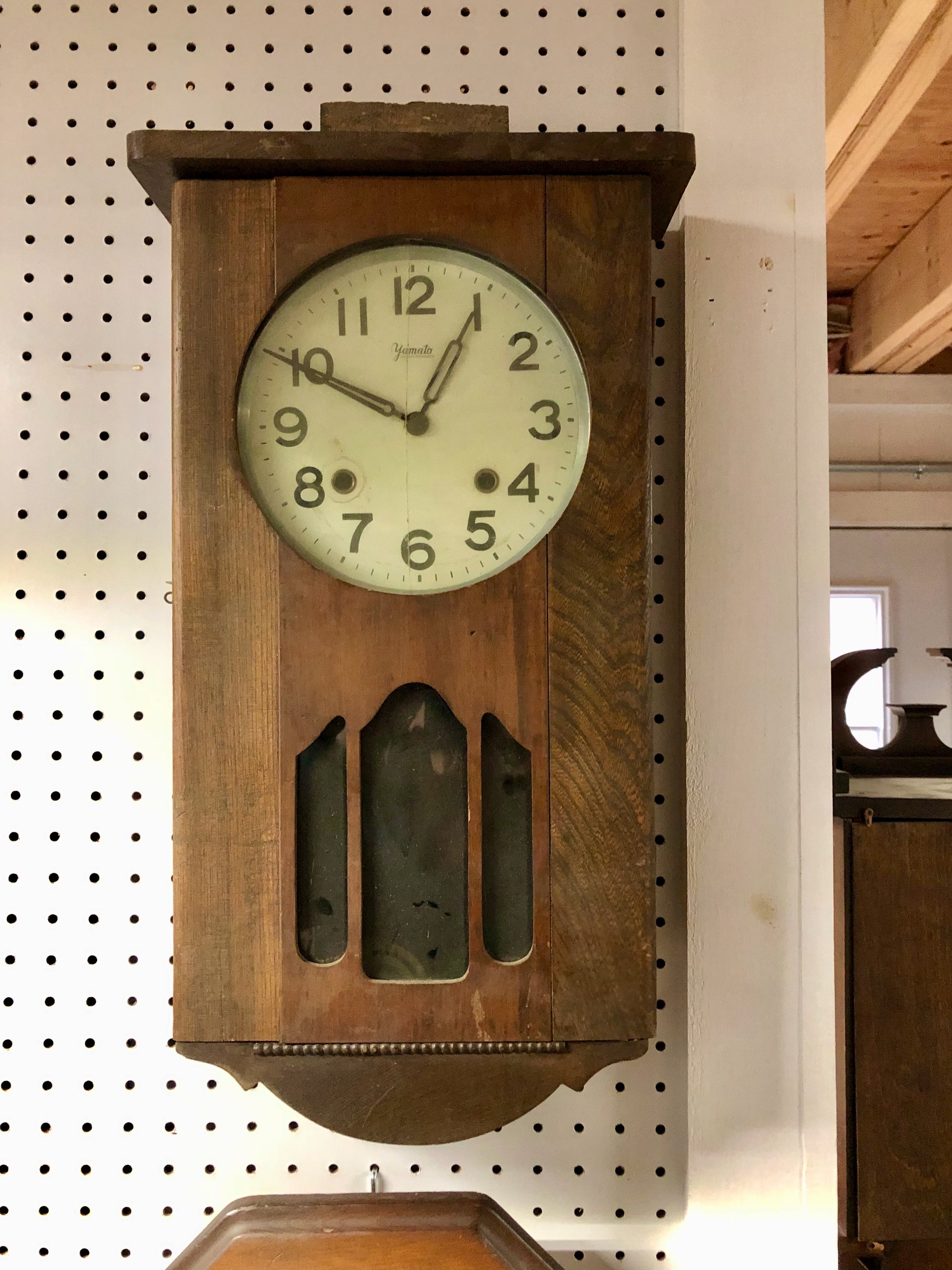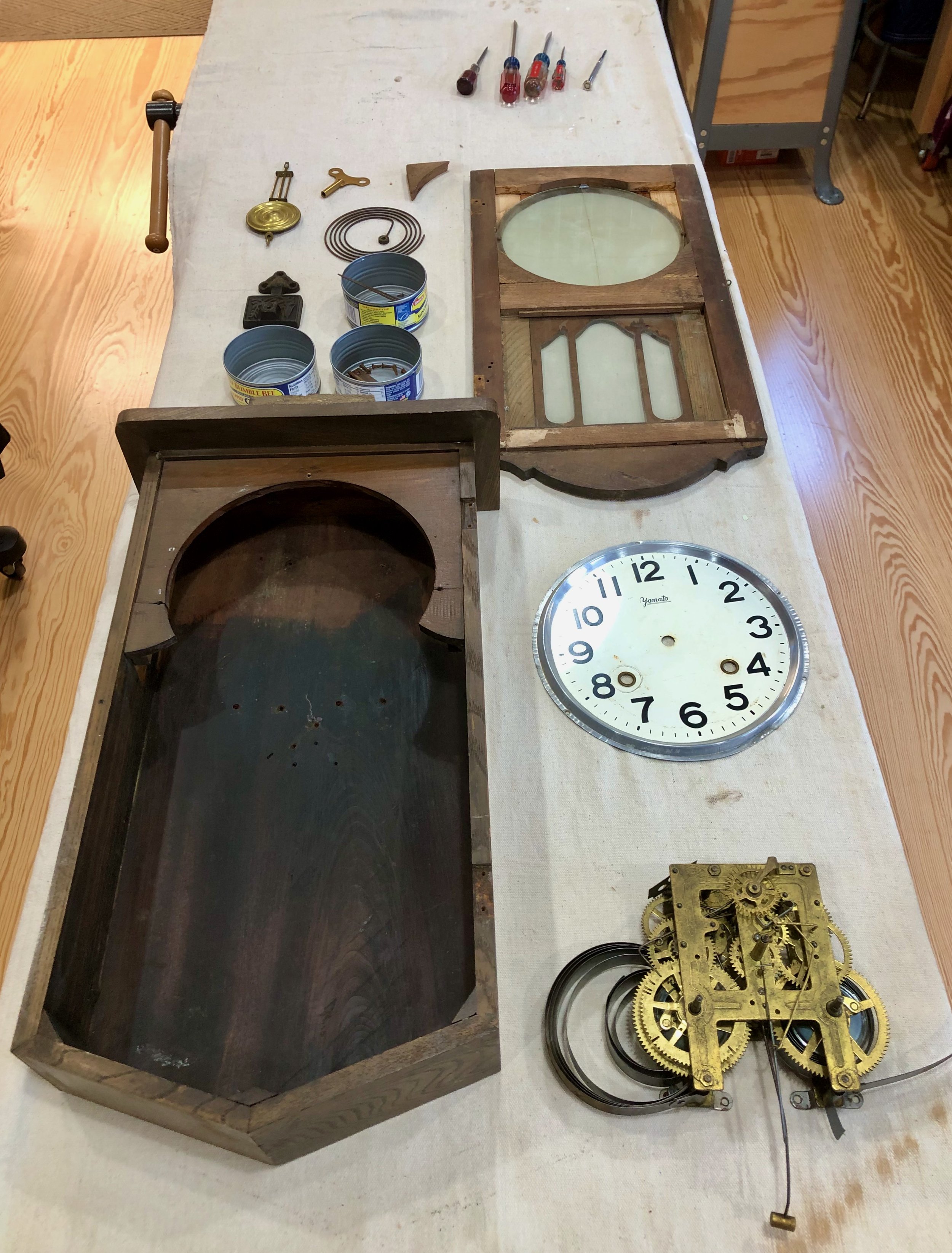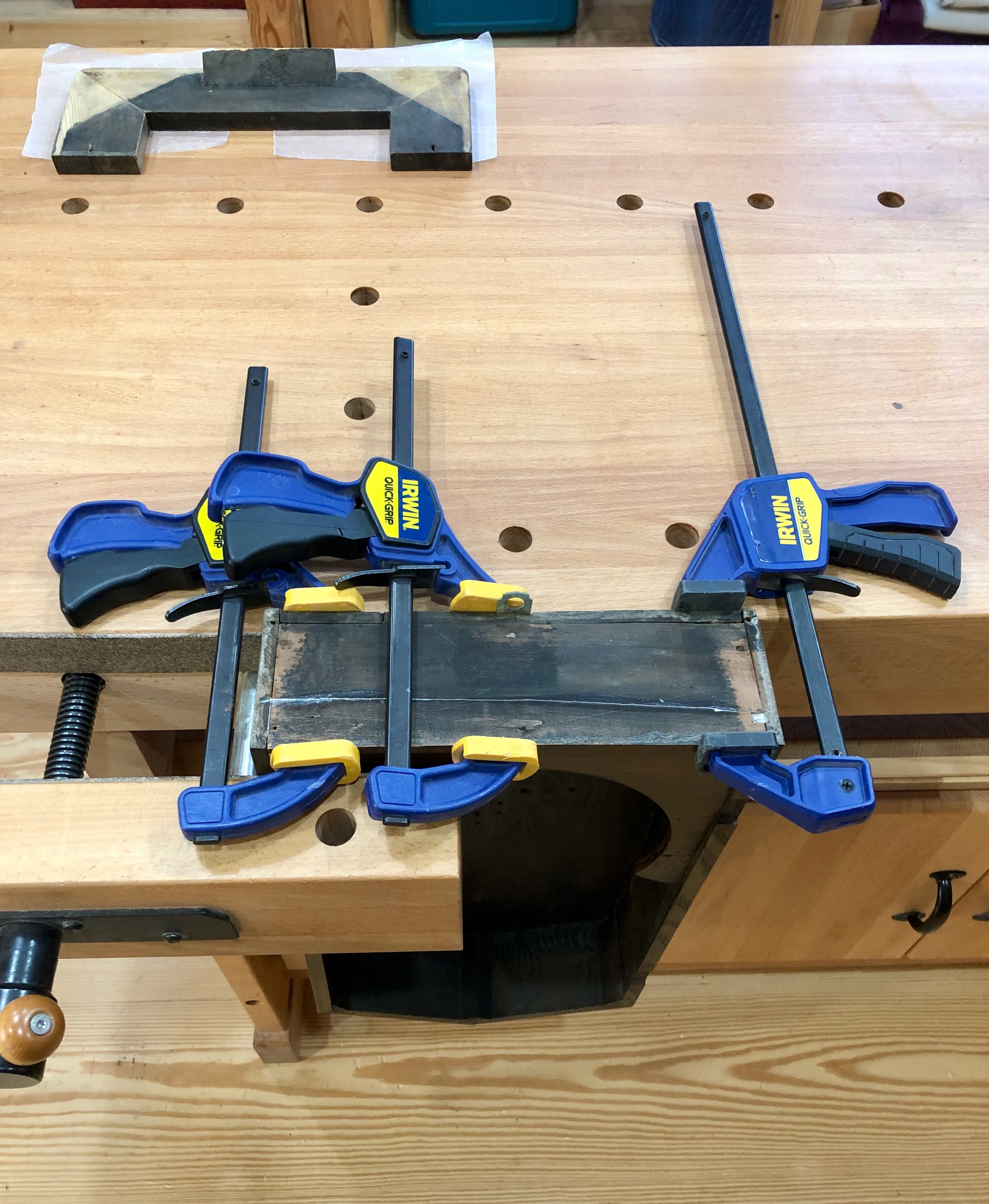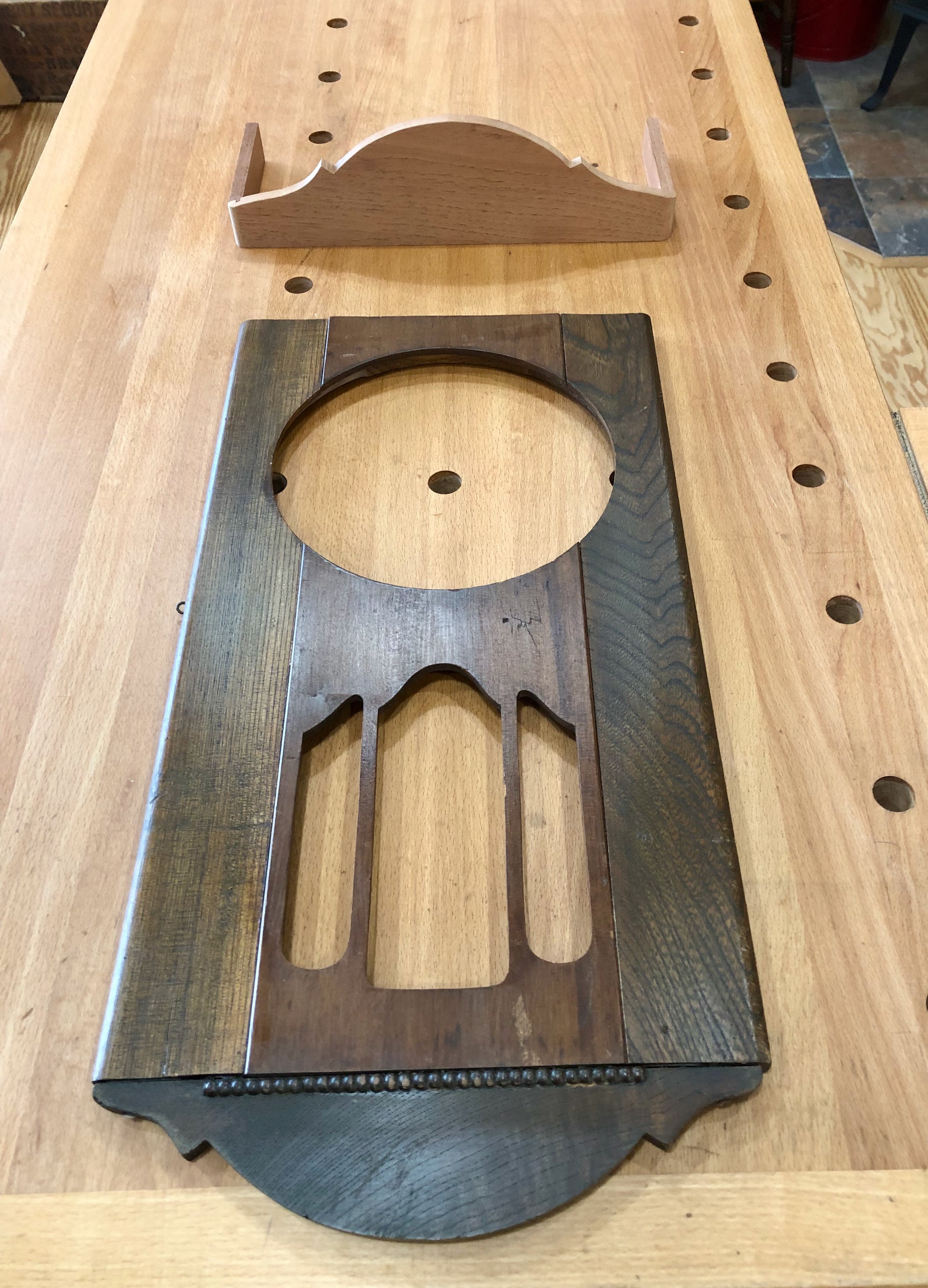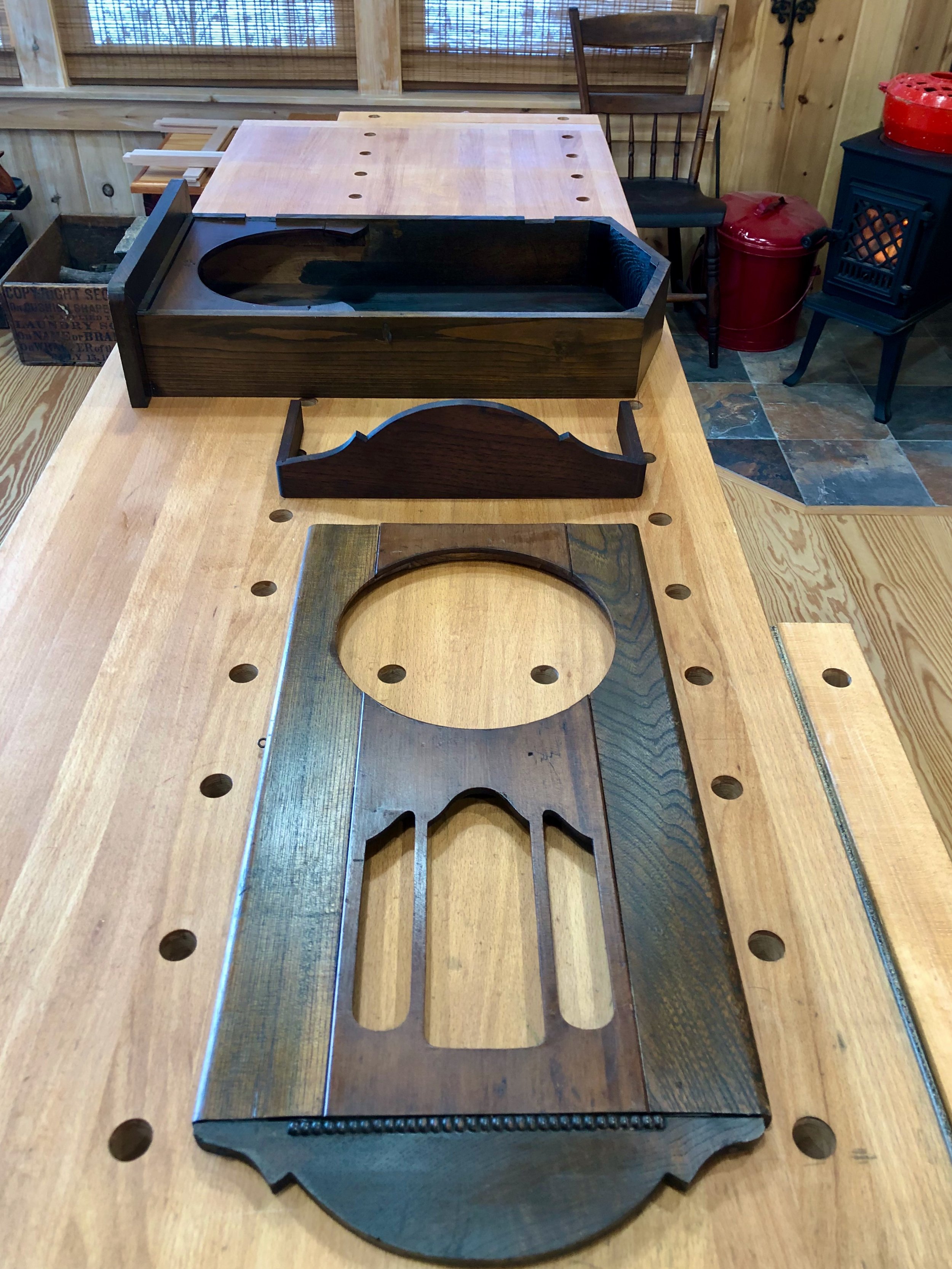
Under the Red Top
making the best of life & woodPeaceful Patch
I like the word “patch”. It’s a nostalgic noun that evokes the scene of a neatly arranged vegetable garden (think: Beatrix Potter). It comes from the old French word “piece” which, apparently via the dialect variant “pieche”, had further evolved into a distinct English species able to coexist with the original (think: horses and zebras). According to the O.E.D., Brits like Beatrix will use the word “patch” to mean an area for which someone is responsible or in which they operate. I am happy to call the Red Top Workshop my patch.
Using the British definition, it’s likely that all of us can identify a “patch” that we tend, and this might be a useful way to reflect on our condition: What is your purpose while in the patch? How do you feel in the patch? What do you gain from your patch? Think about it.
In my patch I find tranquility. To be sure, challenges, frustrations and victories occur every day in my patch. These are all good experiences that, together, make up the creative process essential for our humanity (see also: win back art). I am at peace in my patch - working things out of wood and absorbing satisfaction from the act. Merely pausing to think about things in this way is fulfilling.
But patches are not just a dreamy sanctuary - things get accomplished in a patch. Food, furniture and [insert passion here] are produced in patches. In addition to a couple refurbishing Projects, in 2025 I produced new versions of the traditional hutch and storage cabinet; reproduced a classic Korean stand; and designed a set of cornices in the neo-bungalow style. The new term “neo-bungalow” was even coined in my patch. Not a bad year!
Just as the word “patch” has a traceable origin, surely one’s own patch does not spring from a vacuum. It comes from a prior concept, held by the tender, of that area for which they choose to take responsibility. I owe my father, Ed, a good deal of credit for the concept behind my Red Top Workshop patch. Upon retirement, Dad spent many hours in his basement woodworking shop, fulfilled by the act of making gifts and satisfying furniture requests from family. He accomplished a lot down there, and I own many big & small pieces produced from that patch.
Edward Goulet putting the finishing touches on a homemade cabinet he contributed to our kitchen renovation in 1995.
These works are more precious to me, today, having lost my father at age 96 a couple weeks ago. I now appreciate that he gave me much more than towel holders, benches and boxes. He helped to build my patch. Thanks Dad.
Peace.
Me and Dad in my patch (2016)
Built for Service
Last year I was gifted an item that once belonged to my grandfather, Otto, rescued by my brother-in-law, Brooks, during an earlier house clean out. It’s an old furniture piece that I had no idea existed until I was made the caretaker. Unexpected acquisitions like this are truly gifts to be savored. They bring instant joy along with a new responsibility, gladly accepted, for custody of an heirloom. I am talking about a machinist’s chest from the “Built for Service” tool chest series manufactured by the Pilliod Lumber Company of Swanton, Ohio.
Machinist chest of old
I don’t recall ever seeing this early twentieth century chest around my grandfather’s workshop and so I have nothing to add regarding provenance. What’s certain is that the chest (cabinet?) contains six small drawers behind a locking front panel. The contents: some metal lathe cutters, drill bits and hand taps, suggest that it once supported the work of a machinist - a precision metalworker. It contained some nice old measuring tools as well, but the value to me was in the container. Fashioned from quarter sawn white oak, stained dark, with a leather handle and stately brass hardware, this 17 x 10 x 8 in. chest had it all.
Six drawers nestled behind lock and key (note label on bottom drawer)
Loaded with tools and bits.
This was a refurbishing (i.e., not a refinishing) Project. By cleaning it up and replacing the missing parts, my primary goal was to make the chest useful again. I had no desire to botox the evidence of wear earned over a lifetime of service. A second goal was to create a tool box for my clockmaking paraphernalia.
History
Most of what I know about this piece comes from an informative blog post (they’re out there!) by a Canadian designer named “Mister G”. His blog, Progress is fine, but it’s gone on for too long, is an entertaining historical commentary on items that he refers to as “old forgotten mechanical crap, things with wheels and/or wings”. If you like any of that stuff you’ll find it worth a look.
According to Mr. G, The Pilliod Lumber Company was founded by T. J. Pilliod in 1896, and they manufactured a variety of small chests for the home and workplace. As with any enterprise, a history of The Pilliod Lumber Co., found in the blog post, records the adaptations necessary for survival amidst the ever shifting selection pressures associated with new technology and market demand (read: acquisitions and restructurings). The final remnant of Pilliod’s business succumbed earlier this century and that final fact makes this refurbishing effort even more meaningful, to me.
Popular Mechanics advertisement, March 1924
from: Mister G. (2013, March 6). “Vanished Makes: Pilliod Cabinet Company, Swanson, Ohio” [Blog post]. Progress is fine, but it’s gone on for too long.
Refurbishment
All refurbishing begins with a dust cloth and vacuum cleaner, though these are seldom listed in the credits. That initial sweep was followed by a wash with Murphy’s Oil Soap in warm water, a rub down with mineral spirits to remove decades of oily grime, and then a second Murphy’s treatment which sufficiently cleaned the surfaces. There is a line between unwanted dirt and valued patina, and care was taken not to cross into the patina zone.
In addition to dirt there were those usual white spots. Anyone who has refinished furniture knows what I’m referring to. It’s hard to fathom, but the conversation must have gone something like this:
“Honey?! I think I’ll paint the ceiling today.”
“That’s nice, Dear. Don’t forget to spread out all our furniture to catch the drips. Need help with the piano?”
Am I right??? (I added the piano part.) Anyway, those dots of lead were not easily scratched-off the chest and so I decided they could stay. Sheesh!
Collateral damage
Unfortunately, the filthy felt drawer liners were beyond hope and needed to be replaced. Their removal was accomplished by the two step process of: skinning what could be pulled away by hand; followed by a shave using that one shop chisel applied to everything except woodworking. I resorted to mechanical methods because the crystalized glue securing the felt appeared to be the same hide glue used for drawer construction and I did not want to loosen any parts by soaking those drawers in water. Curiously, one drawer had already been re-lined with contact paper. Wouldn’t you love to know the story there? “These five, oil-soaked and smelly felts can stay, but THAT one has to go!”
Shaving Pilliod’s pelts
The drawers were re-lined using today’s 100% polyester felt, and I took it easy on the glue. Next, all wood surfaces were perked-up with an application of Howard’s Feed-N-Wax. I was able to rejuvenate the dry leather handle a bit, too, using prosoft® baseball glove conditioner. Things were beginning to brighten.
Green New Deal
The final step involved the drawer knobs. As evident from that earlier picture, 3 of the original 9 knobs had pulled loose and were missing, one being replaced by a Phillip’s screw implant. In vain, I searched the Web for duplicates. What I found were some small brass knobs from Timesavers, an online clock parts store, that would serve as suitable substitutes. The remaining originals were cleaned-up with mineral spirits, waxed and re-mounted.
All parts in place
Drawers re-loaded
Back in Service
Thanks for reading. And thank you Mister G. for the service you do to humanity by keeping history alive and accessible.
The Big One
According to my father Ed, his father, Sam, when coming to the end of a big job would often say: “Here’s the one we were looking for.” It was a simple observation, no doubt meant to elicit joy in his farmhands: Ed and three older sisters. I like to utter that one, too, when completing certain jobs. To be clear, my “jobs” are nothing compared to farming chores of the early twentieth century; when fields were plowed with horses and hay was pitched with forks. Still, it is satisfying to declare that you have, at last, finished the final task. The job under discussion here is the fourth and final cornice for our living room: the Big One.
Once upon a time on the farm
Design
The design for this cornice is very similar to the last one, with just the panel dimensions changed to accommodate the new window sizes. I hope it works. That so-called “sophomore cornice” was mounted atop three windows of identical widths, whereas this one includes a large, 5 foot central window flanked by two smaller versions in what was once a dining room that overlooks the backyard.
“Dining room” windows
It should be a straightforward build, but before getting started a simple plan was produced to put the dimensions on paper and glimpse the ensemble’s relative proportions.
Rough plan
Materials
Four 4/4 white oak boards, three quarter sawn and one rift sawn, were procured from Reader’s and marked with chalk for processing into stiles, rails, panels and trim.
White oak cornice wood
Dimensioning, Assembly & Finish
Using a few oak pattern pieces saved from the prior build, to help set the tool fences, there is nothing remarkable about this construction story and so I’ll spare the details and just leave you to imagine the fun. <pause>
Once the cutting and dressing operations were finished, the panels were constructed as 3 sub-assemblies.
Cornice panels
To complete the build, the end caps were attached to the smaller panels with pocket screws, and then these sections were connected to the center panel in a similar manner. At almost 9 feet in length it was a challenge to support and hold the thing square while it was coming together. I’m not saying I need a bigger workshop, just maybe more clamps.
Connecting the panels together
Following assembly, the top trim was fabricated from rift sawn wood and attached as before. The cornice was then treated with two applications of boiled linseed oil and allowed to cure for a few days afterwards.
Finished cornice (upside down)
Lastly, my furniture hand (son), Ben, stopped by to assist with installation and to find “the one we were looking for”.
The Big One in its place
Coin Chest ep. 1
In for a penny, in for a pound
Growing up, my brother Mike and I collected coins - in addition to stamps, fossils, baseball cards and other treasures common to a 1960s-70s youth. Curating our small collections taught us a lot of things not covered in school, and spawned many happy memories in the process. Those passions were precipitously “parked” to make room for college and subsequent responsibilities but, following 45 years of adulthood, Mike is back into his coins and now has the resources to move them out of their cigar box abode. He has requested a suitable cabinet to store his collection and I am most happy to oblige.
Design
Where to begin? Well, it turns out there is a canonical “coin cabinet” that has been around for ages. It is a fine wooden case, typically made from mahogany, with layers of thin drawers that feature circular cut-outs to nestle each individual member of your collection. Beautiful, but that’s not what he was after.
Mahogany coin cabinet from the fine craftsmen at coincabinets.com
You see, Mike intends to enjoy his collection, not entomb it. He needs a place to keep things organized, and one that can handle a variety of coin holders, rolls, books and small boxes. A cabinet for this purpose needs to provide small storage spaces with easy access and room to grow. Considering this mission not a lot of Western furniture items come to mind, however, there are some East Asian pieces that could readily do the job. The multi-drawered Asian apothecary cabinets could work, but their monotonous configuration might not suit the access requirement so well. (Where did I put those buffalo nickels, again?) Various Japanese merchant chests, a version of which I have made previously, might also serve the new purpose of housing a coin collection.
Apothecary cabinet (Korean) and Merchant chest (Japanese), examples of small, multi-compartment furnishings found online
The Japanese chests (tansu) seemed most appropriate, and there are many to choose from. Over time, the versatile tansu form has been adapted for the storage of almost everything, with some providing safe-like security. And every tansu type has distinct sub-species that differ by their geographic region of production, which means there is a lot of design inspiration out there. After some back and forth, we decided that a specific merchant’s chest, a zeni to-dana (translation: money chest with sliding doors), from the Echigo province would be a great choice. This particular specimen from the early Meiji era (1868-1912) was also a wheeled chest (karuma dansu), useful for exiting a burning dwelling with your most valuable possessions in tow, but we plan to omit the wheeled base on ours.
Zeni to-dana exemplar from: Tansu: Traditional Japanese Cabinetry, by Ty and Kiyoko Heineken.
Behind the locked sliding doors of this chest there are a set of drawers that could be further locked for security. We liked this “compartment within a compartment” feature, but would dispense with the locks. The plan for ours would be for one side of the cavity to contain drawers while the other would have open, adjustable shelving. The large, upper drawer might also be compartmentalized. In this first episode we will complete the carcass, saving the doors and drawers for later.
Coin chest, rough plan
Materials
That original zeni to-dana was made from zelkova, a member of the elm family native to East Asia. Zelkova was a popular furniture wood in Japan and I find the grain character of this species to be most fetching. It is not readily available as lumber in the West, however, but there is elm and ash and those were my quarry as I entered Reader’s Harwood Supply, my new go to yard for quality boards. Elm comes in two varieties at Reader’s: red and gray. On the day of my visit they had much more of the red in stock and so I picked through their 4/4 boards and got a few of the best ones. I needed bulkier material for much of the carcass and so an 8/4 (2 inch thick) ash board was selected as well as some 4/4 quarter sawn ash for the slats. The plan was to construct the framework from ash and the mirror boards and drawer fronts from elm. Should look nice!
Lumber (L to R): quater sawn ash, plain sawn ash, red elm
Dimensioning
The bulky frame for this chest is constructed of 2 x 2 in. ash material, and to create these that large 8/4 plank was cross cut into rough lengths, ripped at the band saw and then made square at the jointer and thickness planer. This produced a stock of 14 poles for further modification.
Frame stock
From here it was a matter of cutting everything to final length and then fashioning the tenons, mortises and grooves of the joinery. Everything starts with the top and bottom rails and the mortises within these that would hold the side posts and cross rails. Ash is a tough wood to mortise and I needed to bore sixteen 1 in. square holes that were 3/4 in. deep. To make the experience pleasurable, I hollowed out the centers of these sockets with a Forstner bit at the drill press before squaring them off at the mortiser - much easier this way! A simple slot jig was constructed by clamping a few boards onto the drill press table to allow for quick and uniform production.
Drilling out the mortise centers
Following a bit of chisel clean-up the mortises were complete. These were then used to define the tenons to be fashioned at the ends of the rails and posts. After cutting the members to final length the tenons were formed in a two step process. First, the shoulders were defined at the sliding miter saw, where a shallow cut was made on all four sides of the post to create a joining edge. Next, the cheeks were cut at the table saw using a tenoning jig - four passes per tenon. Creating tenons by this manner is a bit more involved than using a dado stack and cross cut sled, but the result is a clean joint element that is easy to fit.
Making the first of four cuts with a tenoning jig to create the cheeks (note the finished tenon at top of rail)
After a bit of chisel work, the parts were made to fit snugly at each joint, but in order to dry-fit the entire frame I needed to shave a corner off of most tenons to accommodate their perpendicular mating within adjacent mortises. This was done by marking and then slicing-off these corners with my dovetail saw.
Paring a corner off of the tenons
With the tenons pared, the frame came together during a maiden dry-fit. From here, the positions of all subsequent grooves and mortises could be marked in pencil to ensure their accurate formation. It is easy to get the ends and faces of 14 frame parts confused when disassembled into a pile of poles, so this marking step is key!
Dry-fit frame
Every frame member would receive at least one groove to house a sliding door or panel. Each side post also required a series of seven mortises to secure the tenoned slats. Lots of secondary joint work to do here. Variously employing the table saw, mortiser and router table, each series of cuts were set up and then executed as a batch to maintain uniformity. Two side panels called “mirror boards” were also prepared from red elm, whereas plywood was used for the out-of-sight back and bottom. Steadily, over a weeks’ time, the carcass came together component-by-component.
Clipping the edges off of 28 slat tenons at the band saw
Gluing-up the elm mirror boards
Test fitting the sides
Back and bottom fashioned from plywood
The top came last. Construction-wise it is identical to the bottom, but instead of 3/4 in. plywood for the panel I used red elm. One of the elm boards selected at the lumberyard possessed a wild and flowing grain pattern which I thought would make for a lively top. That untamed grain was also responsible for the undulating surface, which twisted and warped its way along the entire 7 foot length.
Red elm “diamond” in the rough
After lopping-off 14 inches of “whip tail” from both ends, the remaining board was cut in two. Even after surgery, both sections were twisted by up to 3/8 of an inch along their 28 in. length and this would need to be remedied before processing further. I decided to use the thickness planer for the job, but first needed to create a new jig to assist the operation. The trick is to first make one side of each board perfectly flat. That flat side can then be placed on the thickness planer’s bed (sans jig) and the uneven, opposite side made parallel by repeated passes through the planer. A “sled” jig to enable the operation was made from a sheet of mdf and a scrap piece of oak. In the event, an elm board was laid onto the sled surface and shimmed underneath to create a stable situation with no rocking action. The sled-mounted elm was then repeatedly passed through the planer, making light cuts, until the entire upper surface was flat and smooth.
Twisted elm board mounted on the planer sled
Elm and sled exiting the planer on its way to becoming flat
With a bit of care and patience, the elm/sled/planer combo produced two flat boards ready for mating together. Biscuit slots were cut into jointed edges and the boards were glued-up to make a full-sized panel. After trimming to final dimensions, filling some crack defects with epoxy, and then smoothing the surfaces, the underside was rabbeted at the table saw to fit within a groove in the top frame.
Elm panel dry-fit into the frame
Finally, I routed some grooves into the front framework to serve as sliding door channels and then the entire carcass was assembled in a dry-fit - 34 parts, in all. The next steps are to create: 1. the sliding doors and drawer for the chest; 2. a case for the interior drawers; and then 3. the interior drawers themselves. I believe I’ll need to squeeze that drawer case into the carcass frame prior to a final glue-up and so I am leaving the Project at this stage for now. Please stay tuned for the completion story in episode 2.
Coin chest carcass
Sophomore Cornice
Here’s a timeless question fraught with feelings:
I liked the last one, but how will the next one compare?
This natural query can elicit thrills or, when the stakes are high, dread. For me, it brings back memories of hope; as in tearing the plastic from a band’s new album and hoping you will like it as much as you enjoyed their last. Sometimes you do - sometimes you don’t. More than a feeling, that was my state while embarking on this Project.
Notable first and second efforts
I took a break after completing the Craftsman Cornices for the purpose of working with a different wood and joinery scheme. But, to complete my neo-bungalow living room there were two more window banks to outfit so I’d best keep at it. The window areas were different enough that it seemed prudent to tackle them one at a time. The current Project addresses a trio of identical windows on the West wall that, today, are a feature of our living room but were once part of a bedroom (it’s complicated).
Target windows
Design
Much like those Boston album covers the new design would be a variation on the old; no new features, just a new take. The big idea was to add some dimensionality to the sequence of three framed panels by protruding one or two beyond the other(s); just enough to add interest without overpowering the scene. All of the part dimensions would match the “old” cornices, as would the materials, so the only remaining choice was: one lump, or two?
Hastily jotted construction plan and mill bill
I know of no existing design precedent, and think both patterns would look fine. The deciding factor for the use of two lumps was the peculiar fact that the wheel for this window’s blind cord was temperamental, and prone to coming unhitched when operated inattentively. It was hoped that a protruding panel on the end would provide enough extra space to rig something (TBD) that would allow for re-threading the spool, as needed, without dismounting the heavy cornice.
Materials
White oak boards, two quarter sawn and one rift sawn, were procured from Reader’s Hardwood Supply. I purchased these among a bunch of boards for use in the next project and so forgot to take a picture before diving in.
Dimensioning
With forethought, I had saved a few cut-offs from the original Craftsman Cornice. By definition these are milled to the exact dimensions (thicknesses, dado widths/depths, etc) required here and so were used to set the fences and blade heights for the new build. This made everything super easy and within a couple days I had all of the major parts prepared for the three panels.
Dry-fit panel sections
The cornice would be constructed from the inside out. This meant getting the dimensions of the central section properly established so that the two connecting boards could then be added, followed by the flanking sections, trimmed to their correct final length. I decided on a 1 inch offset for the center section and, using rift sawn stock, constructed two connecting boards with shallow dadoes to impart this pattern. A rift sawn board was also used to create the top trim in three sections, as well as the two end panels.
Playing with a connecting board (center) and trim joint
Assembly and Finish
Prior to assembly, the panels were treated with their first course of boiled linseed oil. Following this the central section of the cornice was glued together and clamped. The connecting boards were then attached to each end of the section with glue and pocket screws. With this section now resting on the actual window sill I could take final measurements to determine the exact lengths of the remaining sections. Back in the workshop, the outer section rails and panels were trimmed to final length and then assembled.
Glueing the outer sections, central section in background
To mount the end panels I drilled holes for pocket screws on the left side, but I left the right (window blind cord) side alone. Next, the sections were put together with pocket screws, forming an 8 foot long cornice body. The trim parts were then mitered on a 45° angle, modified with chisels on the underside to accommodate profiles of connecting and end pieces, and then trimmed to their final length.
Sizing the top trim on the fully assembled body
To cover the end grain where the trim boards jog around the central section I glued a small piece of homemade veneer before sizing and mounting the center trim span.
Veneer covering end grain of trim
To solve for the removable end panel, the right side panel was attached using magnets along the edge; the trim’s top resting on an auxiliary board behind. These can be modified further if they are not able to keep things tight, but I think they will work.
End panel with magnet next to a reclining cornice section with matching magnet and auxiliary board (after finish)
At last it was time to complete the oil finish by applying two coats of boiled linseed oil, 24 hours apart. This livened the grain while adding some color to the cornice.
Finished cornice
Installation was just a matter of settling the piece onto 4 pre-installed angle brackets along the top of the window trim and cinching things tight with a couple of zip ties. It also looks like the removable end panel will work as intended. Terrific!
Feelin’ Satisfied
Three Story Table
Actually, it’s not a “table”, it’s a sabang-t’akja. But, unless you speak Korean, that name can be a mouthful and maybe that’s why it has been translated into so many aliases over the years. Anyway, this Project is my own translation of the classic sabang-t’akja. Please come along.
I’ll admit that it’s hard to nail down the exact English definition of the Korean “sabang-t’akja”. The t’akja part is easy, generally translated as “open-shelved stand”. But when preceded by sabang, a word that in Korean can variously mean: 1. four sides; 2. in all directions; or 3. everywhere, this two-word noun literally translates to “ a shelf that is opened in four ways”. And I have seen that exact “name” for this item online, however, my furniture books tend to rely on real world function when they refer to it as a “book storage and display stand”. We’ll go with that one for now as use defines meaning. Astute readers may also recall that “storage and display” was the purpose of a hallway hutch, recently completed under the Red Top. One can contemplate the structures of these Eastern and Western furniture items and marvel at the products of convergent evolution underway in opposite hemispheres of the earth.
Examples of a Korean sabang-t’akja and American country style hutch found online
In the late Joseon Period (1392-1897), when sabang-t’akja were popular, they were furnishings found in the Master’s room (sarangbang) of a Korean home (hanok), what today we might call a study, where book storage and the display of “manly” objects was its function. I visited the Namsangol Hanok Village museum in Seoul during a visit in 2016 and saw many sabang-t’akja among the furnishings in their collection. This picture of a sarangbang scene was snapped there.
Book storage and display stand (sabang-t’akja) in the sarangbang
The sabang-t’akja Project described here is different - it’s for my wife, Joung. You see, she is becoming quite the knitter and has accumulated many skeins and needles in the process. She deserves a proper place to store these and to display some of her favorite things. I aim to please.
Design
It was easy to choose the version of a “storage and display stand” for this build as I have had my eye on it ever since the 2016 Korea trip. During that visit I picked-up a nice little book called Making Traditional Wooden Furniture and was smitten with the dainty version described in the back section where some construction plans could be found. Oh, and according to Google Translate, they give it a new name: “Three Story Table”.
“Chapter 7
Making a Three Story Table”
The construction plan was carefully rendered on page 105 and dimensioned in millimeters, a language almost as foreign to me as the accompanying Hangul write-up. No worries, I have apps on my phone that can translate both!
Three Story Table plans (original)
I converted the mm spans into inches and then encountered a problem: at a finished height of just over 4 feet, the piece described would be too short. A “three story table” of that height might be perfect for a floor-sitting Korean lifestyle, but it would not blend well with the other furnishings in our living room. No worries, I figured I could apply a 1.3x scaling factor to every number and enlarge the item proportionally. That works fine in “decimal land” but it gets cumbersome when translating things back to inches, the language of my workshop tools. (One millimeter = 197/5,000th of an inch). I was about to begin the tedious conversions, rounding numbers up or down to the nearest 1/16th of an inch, when I recalled I had essentially made this furniture piece two years ago: the Korean Stand. For that Project I had divined the measurements from a small photograph and used those plans to produce a beautifully proportioned set of open shelves. I could essentially use the same part dimensions for this one, tweak a few details to add the cabinet section and make a respectable version of the sabang-t’akja depicted in the plans above. Reduce, reuse, recycle (and stay sane)!
Starting from the Korean Stand work, a rough plan was sketched at 3/32 scale (in inches) of a 3 shelf unit with a doored cabinet enclosing the bottom section and standing 5 feet tall. It looked nice. My only change would be to convert the panel below the doors into a handy drawer for storage.
New and Improved “Three Story Table”
Materials
I wanted a special wood for this piece that in nineteenth century Korea would almost certainly have been fashioned from paulownia. Paulownia, second only to balsa as the softest hardwood, was favored in the East for its lightness and supposed insect resistance, however, it is difficult to source in the Eastern United States. There is sassafras though, a wood that has always intrigued me. A bit tougher than Paulownia, but still a weakling according to the The Wood Database strength index, this North American hardwood is not common but, if you can find it, the lumber is also not particularly expensive. I got 20 board-feet from the nice selection available at Reader’s Hardwood Supply. The hinges and other hardware for the cabinet will be selected later, once I can assess the character of the piece.
Sassafras boards
Dimensioning
To begin, I went back and studied the blog post for the Korean Stand to refresh my memory on its production. Not much has changed in the workshop since then and so I set about on that same path, replacing red oak with sassafras. If you have never worked with sassafras I suggest you give it a try. It smells so sweet at the saw, cuts like warm butter and stays “true” when ripped into thin poles. Fashioning the frame parts for this piece is all about ripping these rectangular poles at the table saw: all 7/8 in. wide and either 7/8 or 1/2 in. in the depth dimension. Ripping narrow slices, such as the 1/2 in. thick rails required for this piece (n = 14), can be tricky and I found that my homemade “straddle fence push tool” worked great to cut accurate parts, safely.
Ripping 1/2 in. wide rails at the table saw
After all the leg poles and rails were cut-out and trimmed to final length, I needed to assign them each a “role” and then fashion the mortises, tenons and grooves for the joinery. These operations variously employed the mortiser, miter saw, table saw, and router table, as well as a Sharpie for labeling what’s what. When complete, 22 value-added parts had been produced.
22 Frame parts
After some fine-tuning at the joints, the parts could be metamorphosed into a frame.
Dry-fit frame
The next step involved re-sawing sassafras boards to make the three shelf and four side panel parts. I decided to use birch plywood for the (out of sight) cabinet floor and drawer support layers. Each sassafras shelf/panel would be comprised of three narrow boards glued together - a result of the plank widths available at the lumberyard. Fortunately, the three shelves for this piece could be fashioned out of a single plank, thereby ensuring consistency of color and grain. After chopping that plank into four segments of approximate final length, the boards were re-sawn at the band saw into thinner parts which then were all thickness planed to a depth that snuggly fit the rail grooves, ~1/4 in. To create the 14 1/2 in. square shelves, a 2 1/2 in. wide board would be sandwiched in between two 6 in. boards. Attention to grain pattern and direction helped to create visually pleasing shelves that were also warp-resistant. The components were glued together and the resulting shelves trimmed to their final dimensions using a combination of track saw and table saw. Small notches were made at all the corners to accommodate the frame poles. The side panels were constructed in a like manner, whereas, the plywood layers were fashioned from 1/2 in. material by rabbeting along the sides to make “tongues” to fit the grooved rails.
Glueing 3 boards together to make a side panel
After some easing of the edges with a hand plane, the panel parts were dry-fit with the poles and rails. This serves to stiffen the structure and gives a first glimpse of the final form.
Dry-fit frame with panels
Two final case parts were fashioned to serve as hinge boards along the sides of the doored cavity. These were rabbeted so that the front edge would fit within a groove on the side poles, thus recessing the door frame the same amount (1/8 in.) as the side panels. With that completed, the parts were disassembled and all surfaces card-scraped and sanded to #220 grit. The last step before glueing-up the carcass was to liberate the tenons at the bottom of the poles. The tenons will join to the tatami-zuri boards later in the build and their positions were marked with grooves at the very beginning.
Assembly and Finish
There is still much to be built, but it was now time to pause and assemble the carcass. The first step is to decide on the final finish and whether this would require treating the panels prior to glue-up or not. I have come to favor simple oil finishes that let the wood glory in natural hues. However, I found that when surfacing my yellow-brown sassafras to a final state, a dreary gray chatoyance was produced that made the panel boards look “dirty”. Further, I found that oil finishes on a scrap piece did not “clean” things up. This odd coloration might change as the boards age, or it might not. Thus, it was worth experimenting with some colored finishes to improve the look. I liked the orange-brown color of the exemplar piece and so I aimed in that direction.
A variety of dyes, glazes and stains were tested with the goal of imparting a better “look” while not going overboard. I picked among the products that I already owned, and after a few days of play landed on a nice ZAR® stain by the name of “Salem Maple” (Red Top Translate: “reddish brown”). On my scraps it seemed to bring the grain to the fore while imparting a more uniform background red that worked better with gray. Sold! I would also wait until the very end of the build to stain and varnish the piece.
Finishing test panels
*Oil-only (note gray tones)
‡ Salem Maple stain “winner”
Assembly of the carcass was a smooth operation given the prior labelling of parts and some assistance from Joung. I’ve hit upon a favored sequence for these cabinet builds: assemble the back flat on the workbench; then raise the sides; and finally cap-off the front before standing the thing upright to cure.
Carcass with glue and clamps applied
Next came the doors. These are simple framed panel doors that I chose to make even simpler. You might have noticed on the exemplar that the interior edge of the door’s stiles and rails had been eased to create a “rounded” rectangular opening for the panel. It is a subtle way of softening the look which adds appeal. I tried to reproduce this on some practice parts, but all of my attempts were unsatisfactory. In the end, I made two rectangular doors and a vow to keep noodling on how to create the rounded version next time.
Mitered panel doors
Let’s talk hardware. Alas, procuring traditional Korean furniture hardware is a challenge in the 21st century. Over time, I have accumulated a small assortment of these treasures, almost exclusively in black, mimicking the iron fittings used for kitchen cabinets, trunks and such. The brass stuff is very hard to find, but that is the material I wanted for this piece. What I did find was a Chinese-inspired latch in antique brass from an Etsy merchant (FashionLook4U) that might look nice to anchor the cabinet portion. What I could not find was a suitable surface mounted hinge set in antique brass to match. Rather than resort to a mis-match that would distract from the latch, I went with non-mortise butt hinges, where only the barrels would be visible. As to the drawer, I wanted it to be a secret so no hardware was required here, just a spring-loaded drawer kicker with a mechanism akin to that of a retractable ball point pen. The hinges and kicker were obtained from Lee Valley Tools, a nice Canadian firm.
Door and drawer hardware
Before completing the drawer and doors I needed to finish up the base. A decorative punghyeol or “ventilation cutout” was constructed by joining 3 thin pieces with miters and slipping them into grooves on the legs and rail. Next, two tatami-zuri boards were fashioned from straight-grained stock, with mortises cut at each end for the joinery. These slipped around those tenons at the end of the leg poles to form the characteristic “feet” of East Asian furniture.
Tatami-zuri and mitered punghyeol trim in place
Time to tackle the drawer. Since the original was drawerless, I would be co-opting the space below the doors for this feature. An inset drawer here would be nearly indistinguishable from the original, yet provide useful space for knitting needle storage. This slim, 3 inch drawer would be constructed using half-blind dovetails in front and lock joints for the back. A thin plywood board would be used for the bottom to maximize cavity height. After choosing the best grain from the remaining stock, the drawer front was cut to exact dimensions and then the sides were cut to a matching height from less-distinguished sassafras. Once the boards were marked I used my new dovetail saw to cut the joint elements. Sassafras is a soft wood to saw and chisel, making this an easy maiden voyage and one of my better dovetail experiences.
Cutting the tails on both side boards taped together
Chiseling pins out of the drawer front
After dadoing slots for the back and bottom, the drawer snapped together nice and neat. Along the sides of the cabinet cavity, two “guide” boards were glued to keep the drawer tucked snug while running in and out. The back board was modified to accept the kicker and then all drawer parts were glued together. Once dry, a hand plane and sandpaper were used to perfect the fit.
Drawer glue-up
Finally, it was time to mount the doors. The first step was to attach the hinges to the hinge boards and then glue those boards in place along the sides of the cavity. As prepared, the doors were a bit too large to squeeze into this opening so I used a run across the jointer to get things “close” and then, with a thin spacer beneath, I did my best to measure, mark and mount the doors. This was tougher than anticipated. I think mortised butt hinges would have made for easier job, but I could not find the right size and color in a non-finial hinge. (They must be out there, I just need to accumulate more sourcing sites.) Anyway, the attached doors were still a bit too wide to close on each other and so a block plane was used to gently shave them to a proper fit.
Carefully trimming the doors
That completes construction. From here, bolt holes for the latch hardware could be marked and then the doors disassembled for drilling and final finish.
Doors and drawer in place.
After a final sandpaper touch-up, the finishing step was a snap. The Salem Maple stain was applied and, after a 24 hour drying period, the toned wood was smoothed using a piece of brown paper grocery bag. I learned this trick from watching the furniture refinisher Thomas Johnson on YouTube. By whatever mechanism (burnishing, maybe?) the rough Kraft paper serves to smooth out the nibs without creating dust, nor risk sanding into the stained surface. This was followed by an application of satin sheen gel polyurethane to protect the surfaces. After a 3-day cure, the piece was rubbed down with a soft cloth and then treated with Howard Feed-N-Wax. The wood now had a nice mellow glow without feeling “over-finished.” The drawer sides and cavity were treated with a stronger furniture wax to promote a smooth glide and then the door hardware and doors were attached to complete the build.
Doors back on and latched
I like the character of this quintessentially Korean piece. It enables our hobbies and ennobles our room.
Three Story Table
Crafty Cornice
You probably have never seen the words Craftsman and cornice appearing side-by-side, but that pairing accurately describes my latest Project and I never pass up an opportunity to alliterate! Please read on.
Our home is a pleasant 1951 ranch with unremarkable interior features, save for a fieldstone fireplace and expansive windows. As far as decoration, the trim is a mix of period, so-called “clam shell”, moulding around the doors and “square” casings for the window openings - all painted white. They fit, and I like the simple lines, but … it’s just that lately I have been on an Arts and Crafts jag and obsessing about ways to nudge our home’s decor backward another 50 years to capture more of a bungalow vibe.
Bungalow living room, designed by Gustav Stickley’s United Crafts guild, from The Craftsman, Vol. II, No. 2, April, 1902
(Note the symmetrical windows beside a dominant fireplace, natural wood trim and paneling.)
I have made some progress. Homemade Craftsman furnishings are steadily replacing their store-bought Colonial kin, and the Asian pieces we have scattered about were already at home in the original bungalows. I feel it is mostly the painted walls and white trim that are holding things back, but a total do over to replace the painted parts with bare oak is out of the question. Painted wood paneling is occasionally seen in “new” bungalows, but I don’t think it would work here, busted up by all of those windows. Perhaps a taste of raw wood along the walls would be enough to recast the mid-century mood to an earlier era, especially if that wood were quarter sawn white oak. It was thinking of a solution along these lines that inspired the Craftsman cornice.
There are four banks of windows in our living room and they all might deserve a Craftsman cornice, but the goal of this Project was to fit out the two windows flanking the fireplace to see whether this manner of adding wood to the decor could satisfy desire.
East wall of the living room
Design
In all of my research I have never seen a cornice in a Craftsman bungalow interior. Never. Let alone one made out of wood. Cornices are generally fabric-covered fixtures, and it seems that wooden cornices are, themselves, rare. The ones I have found online are generally painted but nice. Construction-wise, they are a 3-sided, “partial” box trimmed with moulding. My groundbreaking plan was to make the partial box in a Craftsman style using nice wood, and then not paint it. Genius! Lacking precedent I’m certain there are many ways to get this wrong, but there may also be a way to do it right. I figure I’ll never know until I make one and, while I’m at it, I might as well make two.
The “box” dimensions were easily derived from the window casing, itself. First, I sketched the window bank with those red interior blinds and then, using tracing paper, I played with the overlaying cornice structure. I wanted to keep it as lightweight as possible, and so framed panels were used along the major span instead of the typical full thickness plank. This feature is congruent with Craftsman. The dimensional proportions of the moulding and framing elements to the whole are key for making this design “work”, and to study this relationship I consulted Robert Lang’s indispensable book Shop Drawings for Craftsman Interiors. It was certainly helpful to learn the rules here but, in the final plan, these rules were not strictly kept. I concluded that what I was intending to create was a transitional form somewhere between Craftsman stocky and mid-century svelte. A neo-bungalow piece, perhaps.
Craftsman cornice rough plan
The rough plan pictured above makes it difficult to see the cornice design. Next time I’ll have to change the pencil color, but one can imagine that it would look okay. Assuming I could come up with a joinery scheme, the remaining variables were the extent of overhang, and whether the two panels should be broken-up further along their span; and, if I were to do that, whether this would necessitate shifting the grain orientation by 90°. It’s all aesthetics for, unlike furniture, there are few structural fitness concerns here. Rather than build mock-ups, I figured I would just make the pieces to dry-fit, and then further modify them prior to actual assembly should the design require improvement. It’s only wood. (Shush!)
Materials
I had a couple 4/4 quarter sawn white oak boards lying about the shop that should work nicely for the body of both cornices, but I would need to pick up another board to complete the top trim. Onward!
4/4 white oak boards in the rough
Dimensioning
Work started by preparing the bigger of the two boards to fashion the top and bottom rails. Given constraints in the shop, I can maximally accommodate a 73 1/2 in. long board at my jointer and so the plank was chopped to that length, flattened on one edge at the jointer and then ripped into two thinner boards at the table saw. To maintain grain and color consistency within each cornice, these were marked with Sharpies, red and black, and kept segregated during subsequent processing. These boards were flattened on one side at the jointer and then thickness planed to 3/4 in. Next, they were ripped in two again to achieve their 1 3/4 in. final widths. The side and central stiles were fashioned in a like manner to provide 10 frame parts. Finally, a 5/16 in. wide groove was dadoed along the edges at a depth of 3/8 in. These slots would hold the panels and stiles.
Ten slotted frame members
At this point, all members were cut to their final lengths and then 3/8 in. tenons were fashioned on both ends of the six stile parts using a dado blade and cross-cut sled at the table saw. After some fine-tuning with the shoulder plane, the parts could be dry fit together to get a first glimpse of the final form.
Dry-fit frames on top the rough cut panel board
Things were coming together well to this point, and I liked the overall proportions of the cornice front. The next step was to fashion 4 panels from that nicely figured smaller board. To begin, the board was chopped in half, and the two pieces jointed on edge and then ripped to rough width at the table saw. These were then smoothed somewhat on the thickness planer before being re-sawn at the band saw and the resulting 4 pieces thickness planed (for real) to a 5/16 in. depth. Trimming the lengths and widths to their final dimensions allowed for a complete dry fit. I like the way the medullary rays flow in those extended panels so I decided not to break things up further with additional stiles.
Piecing things together
All that remained was to fashion the side “faces” and the top trim from some more white oak. For this I visited a new lumber source, Reader’s Hardwood Supply, located about an hour away in East Taunton, MA. This yard has an excellent mix of species for sale, nicely laid out in racks, and I spent some time picking through their 4/4 quarter sawn white oak section in search of their “cleanest dirty” board. You see, I needed the edge side of this plank to supply the visible portion of that top trim and, as I have griped about in earlier posts, the edge grain of quarter sawn oak boards can range from unsightly to downright ugly. (While I have made my peace with quarter sawn behaviors, unsuspecting visitors would need to look at a 77 inch stretch of this mess at the top of each cornice.) I also took a peek at the plain sawn boards but determined their edge grain was too “wavy”. Then I happened upon a pile of rift sawn white oak. This rare cut, possessing grain at a ~ 45° angle to the board plane, had just the strait-laced edge character I was looking for.
Rift sawn oak diamond in the rough
Because of the uninterrupted length of the top trim, I couldn’t use my jointer to flatten this part without a major disruption to the footprint of the shop and so I worked without that tool. To achieve a straight edge I first screwed an auxiliary board atop my oak and used its straight edge against the table saw fence to rip a correspondingly straight side for the trim. It may not be dead true & square, but close enough for trim work.
Ripping a nice, straight edge while the jointer stands idle (right).
From here, the board could be ripped into two, 1 3/4 in. wide strips which were then thickness planed to a 7/8 in. depth. Shorter sections of that same board were likewise processed to provide the four side trim pieces. While these would ride atop the framed panel body, I needed to achieve a uniform 1/2 in. overhang along that span and so a shallow groove was dadoed on the underside of all trim pieces allowing them to snap into perfect formation during assembly.
Trim pieces with their undersides slotted
Finally, I found a couple white oak scraps with stretches of acceptable looking edge grain that could be milled to the proper dimensions for the side faces, two per cornice. As with the trim, these were slotted to straddle the stile edges to achieve a uniform (1/8 in.) overlap in front.
Assembly and Finish
The parts were all given their final surface preparation and then the four panels were treated with their first course of boiled linseed oil. Assembly was easy. First, the center stile was glued and clamped to the bottom rail and then the panels were slid into place (unglued), capped-off by the end stiles. After adjusting for squareness the top rail was tapped into place and the whole thing clamped to cure. Once dry, a second cornice front was put together in the same fashion.
Putting the panels together
From here the sides were attached with glue, flush at the top but 1/8 of an inch proud on the fronts and bottoms. This little overhang adds extra dimension with shadow lines and makes it look more “finished”, to me. Pocket screws into the top and bottom rails were used to keep this corner solidly at 90°.
Pocket screws on the backside further secure the side faces to the frame
Finally, it was time to apply the trim. I decided to miter the corners, keeping the “look” in line with Craftsman moulding doctrine. The small side trims were cut to a 45° angle and dry-fitted first, and this allowed for accurate marking of the intervening long trim section. After cutting this piece to length a bit of chisel work was needed to widen the slots on each end to accommodate the overhanging sides. With a clean fit assured, the trim sections were glued and clamped.
Gluing the top trim in place
Once fully assembled, the cornices were given two treatments of boiled linseed oil to darken the colors and bring out the contrast of rays versus grain. From here most furniture pieces would proceed right to their photo shoot, but cornices require installation.
I had several fabric covered cornices at my prior house and seem to recall they merely “sat” on L-brackets fastened alongside the window trim. Although my new cornices are twice as large and more than twice as heavy, that was the plan here, too. I secured some 4 in. x 2 in. L-brackets online that I mounted at the ends of the window trim with the short arm protruding. Installation was simply a matter of settling the cornice onto these brackets and letting the weight be supported by the backside of the trim. That trim serves to make the piece a bit top heavy and so to keep the cornice from lurching forward, I used zip ties to cinch the bracket to eye screws mounted in the trim. All seems well.
Cornice mounting scheme
And that’s the story of the Craftsman cornice. They now hang, solemn yet friendly, beside the fireplace stone. I think they do their job but will want to check again after a few months. If they continue to please, I’ll likely whip up a couple variants for the remaining windows of our neo-bungalow living room.
Craftsman cornices
Walker’s Cabinet
“A place for everything and everything in its place.”
– Benjamin Franklin (among others)
Biologists refer to it as “exaptation” when a particular feature of an organism assumes a new function over time. The term was introduced in 1982 by paleontologists Stephen Jay Gould and Elisabeth Vrba, and was meant to account for evolutionary changes not derived from conventional “adaptation”. Feathers (heat regulation → flight) and the swim bladder (respiration → buoyancy) are popular examples. I have even seen this term applied to inanimate objects such as wheels (locomotion → machine components), but never furniture, although it could. These are the questions that tickle academics and their ilk.
I believe the current Project counts as an “exaptation”. It is a repurposing of those specialized early twentieth century cabinets (e.g., Smoker’s Cabinet) to serve the modern function of footware storage - what we will call a “Walker’s Cabinet”. Largely extinct today, purpose-built cupboards such as the Smoker’s Cabinet were once popular, well-made furniture pieces designed to store items valued by their owners, in this case pipes and tobacco products. Other cabinets were produced specifically for piano sheet music (Music Cabinet), phonograph cylinders (Record Cabinet), dinnerware (China Cabinet); and more. Our cabinet will store the shoes and boots used by walkers; a function not even dreamed of 100 years ago when, at least in America, the few shoes owned were generally worn both indoors and out. It will retain external proportions similar to those earlier pieces but include suitably-spaced shelves on the interior. Of course, products to keep shoes do exist today, and some of these are made of wood. They tend to be either open, cubby-holed structures or possess doors on drop-down hinges, evolutionarily distant from the smoker’s cabinet.
Smoker’s cabinet listed in Gustav Stickley’s 1910 furniture catalog alongside a modern day shoe cabinet of similar proportions
The Walker’s Cabinet is a commission from my brother-in-law, Brooks, as a gift for his wife, my sister Kathy. I have long wanted to build something special for her and now I have the opportunity. In their cozy home they have a spot next to the door that is used for shoe storage, and this piece is intended to replace the existing open shelf unit there. My mission: make it nice.
Design
I was introduced to the Smoker’s Cabinet by way of Gustav Stickley’s 1910 Craftsman furniture catalog piece No. 89 (shown above) but intend to use an item found in his other publication as inspiration for this Project. In addition to furniture catalogs, Stickley produced a magazine, The Craftsman, from 1901 to 1916 that he described as: “An illustrated monthly magazine in the interest of better art, better work and a better more reasonable way of living." Hard to argue with that mission. Adopting, and then adapting, tenets of the British Arts and Crafts movement, Stickley and other writers in The Craftsman worked to open the eyes of a rapidly mechanizing America to the enduring value of craftsmanship and honest work. Even today, these insightful articles retain their punch. Many issues contained a feature article titled: Home Training in Cabinet Work, in which the plans and some helpful hints for building useful furniture pieces were described. Stickley’s intention was for his readers to make some of their own furnishings and, thereby, come to appreciate the pleasure of handicraft. Not the best for business you might reckon, but Stickley, like the other Arts and Crafts leaders, dealt in ideals as well as chattel. In the August, 1907 issue the plans for a Phonograph Stand and Record Cabinet were published. I prefer the style of this one-door cabinet to the Smoker’s version and will use it as the starting point for the Walker’s Cabinet.
Record Cabinet plans, reproduced from The Craftsman, Vol. XII, No. 5, 1907. pp. 562-563.
Rough plans for our cabinet were derived from the Stickley drawing. However, to fit the intended space, the piece would be made narrower and a bit taller. Also, the door swing would be reversed to best accommodate the setting, and the phonograph stand eliminated, too, but all other features would be faithfully maintained (ha!). Such are the perquisites of custom-made furnishings. Two adjustable shelves would be contained within.
Walker’s Cabinet rough plan
Materials
Quarter sawn white oak would be the wood used for this Stickley inspired cabinet, of course. A nice 6/4 and some 4/4 boards were procured from Highland Hardwoods. The hinges and a knob would be selected later, as the piece came together.
Marked-up oak
Dimensioning
To get started, the post-like legs were cut from that hefty 6/4 board. In the end they will be 1 1/4 in. square, but it will take a bit of work to get there. The goal is to have two adjacent and exposed sides of each leg feature that charismatic quarter sawn “look”, formed by the interaction of oak’s coarse grain with the delicate medullary rays exposed by this lumber mill cut. And to achieve that goal it was decided to veneer a thin strip of this so-called “face grain” onto the homely “edge grain” for one side of each post. Stickley, himself, often employed this method for improving upon Nature. Thus, the cross-section of our initial posts would be ~1 1/4 in. x ~1 1/8 in. After applying a thin face grain veneer, cut at the band saw, the proud edges could be hand planed and then the entire pole thickness planed to a uniformly square 1 1/4 in. dimension.
Glueing veneer onto a leg while the other parts wait their turn
With the legs in shape they could be trimmed to final height (36 in.) and then marked as to their final position (Left/Front, etc). These could now be modified with stopped dado grooves to hold the stiles of the frame. The front legs get one groove each, while the backs get two. To begin, a 3/8 in. square mortise was cut at all termini and then a 3/8 in. deep groove was plowed in between at the router table. Finally, at the ends of each groove, deeper sockets were mortised to receive the rail parts.
Cutting mortises within the grooves
Next, the various frame and panel parts were prepped from those 4/4 boards, 23 in all. I have to say that shaping white oak boards, first the smell, then the feel and finally a glimpse of newly planed grain, can be a transcendental experience. It never gets old. The process goes like this: 1. prepare a board flat & square; 2. thickness plane to a uniform dimension (in this case either 3/4 or 5/8 in.); 3. cut to final length and width; 4. fashion the joint element (mortise or tenon) using power tools; 5. refine the joining parts using hand tools for a snug fit - all while correcting mistakes as you go. The first steps are done in batches to assure dimensional uniformity for the parts that fit next to each other, whereas the final hand work is done joint-by-joint. This is woodworking and, much like any sport, it contains enough variety with endless opportunities for improvement to keep the committed coming back for more.
That’s enough pre-game, here are a few memorable shots from the event.
Bench scene during the joint work
One of many dry-fits
Creating a template for the arched rail
Drilling holes for the adjustable shelves
Edging the plywood floor board with white oak
All parts smoothed and ready for assembly
Assembly and Finish
After giving the panels their first treatment of boiled linseed oil finish, the whole thing was glued-up and clamped. For this piece, all 32 cabinet parts would be put together in a single act and so I decided to use Titebond’s Genuine Hide Glue for the early joints. Back in Stickley’s day, hide glue was the only useful adhesive for wood. We now have a host of options but I chose this product for its extended “open” time, making the glue-up easier to get right. To begin, the back section was assembled, flat on the workbench. The cabinet top and bottom were then slotted into place, followed by the underlying rails, and from there the two side sections could be constructed, piece-by-piece. The final steps were to attach the front leg poles and arched rail, and for this I used the stronger Titebond III adhesive. Once hammered tight and clamped, the hefty cabinet was lowered to the floor to be sure that all four legs could touch at the same time, and then left to cure in that position. This was a full 30 minute operation, helped tremendously by my wife, Joung’s, participation. Once the case was cured and sanded, the oak edge pieces were applied to the floor using biscuits.
Cabinet glue-up (note biscuit slots for the front floor edge)
With the cavity’s opening now defined, the door could be fashioned using the same tenoned-rail and stile method as the cabinet frame. With every build, the sequence of cuts to construct a 5-part, framed panel door becomes a smoother production. But this efficiency does nothing to subtract from the joy.
Door frame glued-up around an oiled panel
The door hardware was procured online from a nicely run hardware business, Hardwick & Sons: ball tipped hinges and a Craftsman style drop pull. These designs, in a copper finish, are very close to the Stickley originals.
Door hardware
Fitting the door presented an interesting problem. My desire was to recess the frame from the leg poles by 1/4 in. to match the profile of the sides, but I was at a loss for how to accomplish this. (Stickley’s one-page construction blurb does not bother with such details.) Without a good idea for how to achieve the recess, and pressed by a delivery deadline, I resorted to mortising the side of the left pole for hinges that would, in the end, present the door not recessed, but flush. About the time I finished this procedure it dawned on me that auction websites might provide an answer to the recessed door question, and 5 minutes later I had another “mistake” to correct. Lesson: when confronted with a problem never stop researching until you find the solution, or to use the sardonic graduate school version, “A week in the lab can save you an hour in the library.” Anyway, I found a classic Stickley Cellarette (another extinct cupboard, part ice box and part liquor cabinet) with a recessed door at my favorite site for Stickley. Close inspection revealed that a thin plate had been applied to the leg post, recessed to the proper depth, into which the door hinges were mortised in the typical fashion. Voila!
Close-up of a 1910 Stickley cellarette showing hinge detail, reproduced from California Historical Designs website
To get back on track, I filled-in the mortise cavities with some scrap oak and, after planing things flush, applied a pre-mortised plate along the left side of the door opening.
Applying the new, recessed hinge “plate” to the cabinet interior
The door was then carefully fitted to this opening by a loop sequence of test fit, edge plane, repeat. I used the jointer for most of the heavy shaving, and then a block plane and card scraper to finish things off. Once sized appropriately, the hinge positions were marked on the door and mortises cut to receive the 2 in. leaves. The drop pull was temporarily mounted at this point to make it easier to manipulate the heavy door. All good.
Cabinet construction complete
Lastly, I made the shelves using 3/4 in. red oak veneered plywood. These were cut to their final size and then a strip of white oak “trim” was glued along the front to hide the plywood laminations. A final task was to install two magnetic door catches (top and bottom) before all metallic parts were removed for the finishing protocol.
Trimming the shelves
In total, two applications of boiled linseed oil were used to bring out the beautiful grain features of white oak. Typically, a table or chair would be given a varnish coat at this stage to protect from water and wear, but I decided to cease adulteration of the cabinet wood here and only coat the plywood shelves with polyurethane, as they would receive the wear. A final wipe down with Howard’s Feed-n-Wax was enough to make the whole piece glow yet still retain that warm wood feeling when touched.
Wonderful white oak
Re-installation of the hardware completes the Walker’s Cabinet, a 120 year-old Arts & Crafts article co-opted to provide a new function in today’s home. Enjoy!
The Walker’s Cabinet
… an exaptation in oak.
Cabinet at home
Hallway Hutch
Ever have an idea for a piece of furniture and then do the research to locate authentic examples only to find that there aren’t any? That happened to me on the bookshelf bench and it seemed to be occurring, again. Since I am not that creative there must be a lot of unspoiled furniture design territory out there to explore. Are you ready?
I was recently struck by the amount of time spent looking online and in books for examples of a hutch suitable for an entryway setting - what I have since coined a “hallway hutch”. I found none. Of course, there are hundreds of hutch variants out there, but what I came to appreciate was that these pieces were designed to do work and, as such, they tended to be hefty and practical. I was looking for petite and pretty. You see, my customers had recently downsized to a charming townhouse, and were in the market to replace some of their full-scale furniture with more suitably-sized heirlooms. They had a wall in their entryway where they wanted a piece that would allow them to store a few things and also display some meaningful objects. They needed a hutch (def., a cupboard usually surmounted by open shelves) for the hallway.
Example of a custom-built hutch available online. (Nice, but a bit rustic and 3 times too large!)
Design
After firing a slew of authentic hutch and bookcase examples at my patron friends, - ones that could be imagined appropriate at 2/3 scale - it was decided that Shaker was the style and cherry was the material. They then left it to me to sketch something suitable for final approval.
The more I research Shaker furniture, the more I am attracted to that simple form. Of course, I found no authentic Shaker examples that would work as reproductions. Made for the kitchen, their hard working hutches (called cupboards) were too “boxy” for hallway duty. And since the Shaker devotion to austerity meant there were no objets d'art for them to display anyway, their cupboards did not include open shelving.
Examples of freestanding Shaker cupboards
from: Meander, R.F.W. Illustrated Guide to Shaker Furniture; Dover: New York, 1972.
Still, Shaker furnishings do have that special “look”, and I was determined to capture it within a conventional cabinet and shelf piece. Two rules were followed during design: 1. since no work was to be done here, the cabinet top should not invite activity; and 2. the construction needed to be more visually interesting than just flat boards. After some additional reading and doodling it all came together with inspiration from a couple Shaker items not called “cupboards”.
To keep the cabinet functional for storage but not as a work surface, I decided to drop it a full 10 inches below the typical counter height. With a tall shelving unit atop this low cabinet it would evoke the classic Shaker stove form.
Shaker Stove by John W. Kelleher, reproduced from the Index of American Design collection
And instead of plain boards, a framed panel construction would be used. This is not typical of Shaker case pieces, but it can be found on special items such as this pair of sewing desks from the Canterbury, New Hampshire community.
Sewing desks from Canterbury Shaker village with framed panel sides (1861)
from: Rieman, T.D. and Burks, J.M.. The Complete Book of Shaker Furniture; Abrams, 1993.
Employing an upper shelf unit substantially narrower than its supporting cabinet (as in Shaker example 159 above) this design came together in the rough drawing shown below.
Shaker-inspired Hallway Hutch
Materials
Cherry boards of six varieties, differing in their thickness, lumber mill cut and figure were purchased. Of special note was the 12 inch wide, plain sawn plank that would furnish the door fronts. Sixty-four board-feet, in all, were brought back from the choice selections at Highland Hardwoods. The hinge and door hardware would be finalized later in the build.
Hallway hutch cherry
Dimensioning
Construction in the workshop would follow the natural order: frames before panels; cabinet before shelves. But first there was a puzzle to solve. Given there are approximately 70 parts to be fashioned from the 6 different plank types, a good deal of time is spent on Projects such as this simply deciding which components are to be cut out of which boards and from where, exactly. The trick is to work around board widths, sapwood, knots and other defects, but the opportunity to select for grain character adds a creative dimension to the game. This is surprisingly enjoyable!
Frame part assignments penciled into quarter sawn cherry stock
To start, the leg parts were milled from an 8/4, quarter sawn board to form 1 1/2 in. square poles that were then cut to final length. Before slicing grooves that would hold the panels I wanted to define a foot feature. Many Shaker pieces have this bottom portion of the legs shaped at the lathe to form a candle pin-like foot (see sewing desk, above). I don’t own a lathe, and, besides, I felt these stout, 3 inch “feet” would look funny in that style. Instead, I chamfered the corners at the router table. This irregular octagon profile gives some definition to the leg bottoms without trying to make them into something they are not.
Leg parts chamfered at the base
Following this, the legs were marked and then modified with sockets and grooves, at the mortiser and router table, to accept the panel and rail parts. Next, the cabinet rails were prepared, also from quarter sawn stock, and then grooved with a dado blade on the table saw so as to align with the panel slots previously routed into the leg parts. Finally, tenons were formed at both ends of the rails to fit the sockets mortised into the legs. All 12 parts were then assigned to their final positions (left/right, front/rear, top/bottom) which served to uniquely mate each mortise with a tenon. Chisels and a shoulder plane were used to fine tune every mortise-tenon pair, after which a dry fit of the cabinet skeleton was achieved.
Dry-fit skeleton
To complete the cabinet frame I would need to create: 10 stiles; a center rail; and 2 hinge “panels” (for lack of the appropriate term). I would also need to fit the cabinet floor, made of birch plywood, into newly formed grooves within the bottom rails. The stiles and hinge panels were easily fashioned in a manner similar to the rails (above). For the center rail I used dovetail-like joints, instead of tenons. This part would be dropped into slots chiseled from the front and back rails during assembly. A second dry-fit confirmed that all was well.
Dry-fit frame with floor and center rail, atop
The panels came next. These were produced en mass from a single 4/4 plain sawn board to ensure consistency of grain and color. The plank was first chopped and ripped to rough dimensions, and the resulting pieces were flattened on both sides at the jointer. Still too thick, these boards were then re-sawn down the spine at the band saw to get “two for one”. The thinner boards were each thickness planed to 1/4 in. depth and ripped to their final width at the table saw - 13 plus a spare.
Cabinet panels
During assembly, the panels would slide into grooves within the frame structure and be left “floating” to expand and contract in response to changing humidity. As such, following some smoothing operations, I gave them their first coat of the polyurethane finish prior to glue-up.
The final pre-assembly step was to build an internal shelf. For this I would use another piece of birch plywood modified with cherry trim. The trim serves two purposes: first, it hides the unsightly edge of plywood lamination; and second, this thick band would arrest the shelf’s propensity to sag, over time. Material for the trim was supplied from those scraps that were beginning to accumulate near the table saw. A couple long ones were milled to rough dimensions, chopped to length and then glued unto the prepared shelf board. After curing, a block plane was used to even-off the edges and make everything uniform. This shelf would be supported by small pegs attached to the cabinet’s stiles and would be adjustable thanks to a series of holes pre-drilled into these members.
Cabinet shelf and stiles
Following a half-day of card scraping and sanding the frame parts it was time for glue-up, which would occur in stages. Construction of the back and two side “sub-assemblies” would proceed outwards from the center, and so to start things off the central stile (sides) and panel (back) were glued into place along the bottom rails. This makes it foolproof to slide the other components into place during the next step.
Pre-glueing the central members to the bottom rails
Once dried, the remaining panels and stiles were slipped (glue-free) into the back and side “constructs”. A couple foam rubber pads were inserted into the grooves along each side to absorb swelling while keeping the panels held snug at all times. Next, the floor was inserted into the back rail, and then the front rails and hinge boards were glued together and slotted into place. Following a squareness check, the sides were glued-up and brought into position. All of the tenoned parts were then hammered tightly “home” and clamps applied to hold things together. The table was brought down from the bench to the floor and some final measurements made to assure that all was square before the final cure. This description was certainly more detailed than required but it will help me as a reference for the next build. After all, there are no instructions to follow here and, even with spousal assistance, these multi-component, time-sensitive glue-ups can get complicated.
Cabinet glue-up
I like the way the mortise and tenon joints seated during this build, but just to be sure everything stayed tight over time I decided to add some reinforcing pins at the corners, 16 in all. There are four steps involved here: hammer-out the 5/16 in. dia. pins (dowels) from cherry scraps; drill holes into the joints; tap a gluey pin into each hole; and then saw things flush. Believe it or not this takes half a day, but it is worth it for the added stiffness and decorative feature produced.
Pinned joints
On to the top. This is just a simple, three board construct that I tried to enhance through the choice of wood. I found a spectacularly grained curly cherry board at the yard that I imagined would ignite the top of this otherwise strict and regular hutch. So-called “curly” wood is produced naturally in some trees that are either genetically programmed for fiber production in this manner, or because their growth environment (e.g., hillside, wind exposure) induces growth by this extra strong formation. The wavy fiber patterns present a challenge when working the wood but, once finished, the lively surface pays it off. On to the shelves.
Unfinished top
Shelf unit
Many aspects of the upper shelf unit construction were identical to the cabinet work. Performing all of the dimensioning and joint forming steps took about 3 weeks, and provided a collection of 21 parts, including the massive back panels.
Shelf unit parts
Assembly of the shelf unit proceeded stepwise in a sequence similar to the cabinet glue-up. I first put the two side “sub-assemblies” together as it is easier to square these up while they are lying prone on the workbench. Once cured they could be placed atop the cabinet for a first glimpse of the final form.
Side sub-assemblies glued-up and dry-fit together on top of the cabinet
Before joining the sides with the back section I added plates to their bottoms for eventual attachment to the cabinet top via bolts. I also detoured to make the three shelf boards at this stage in order to simplify the test-fitting exercise. Since I needed to join narrow boards together to make the shelves, I decided to use 3 boards/ea., and stagger their placement to fit within the corrugated interior of the framed panel unit. These were milled from 4/4 plain sawn stock. Prior to assembly, the center board was cut to exact length and then glued to two oversized outer boards. The new shelf constructs were milled to 5/8 in. depth at the thickness planer, trimmed to their final width/length and then further notched to fit the cavity interior. They would rest on pegs with some ability to adjust for height. At the customer’s request, a plate groove was cut into each shelf using the table saw. First, a shallow line was plowed across the length and then, after resetting the fence, an angled cut at 30° was made to bevel the backside of the groove.
Shelf boards (pre-plate groove)
Finally, the back rails and panels could be glued into place. The top piece was then trimmed to its final dimensions and the edges beveled slightly. This would be attached once the finish has been applied.
Final shelf unit glue-up
Doors
The inset doors for this hutch were made by the same, framed panel construction as the cabinet sides. Quarter sawn cherry boards were prepped and then grooved on one edge to receive the panels, and an extra deep mortice was bored at positions where the rail parts join the stiles. The last step was to create haunched tenons at the end of the rails.
Door frames
Cherry panels of 3/8 in. thickness were then prepared and given an application of gel poly. Finally, the doors were glued together to complete the “construction” phase of the Project.
Door glue-up
Finishing Steps
On a big project like this there’s much to be done after the parts have been put together. For starters, all of the wood needed two applications of gel polyurethane. As finishing procedures go, this one could not be easier: rub the pudding-like material into the wood surface in a circular motion, wait a few minutes, and then wipe “dry” along the grain. After a couple days, smooth the completely dried surface with a gray Scotch-Brite pad and repeat. I find this produces a soft sheen and substantial moisture protection with minimal “splotching” of the cherry wood, which oil finishes are apt to do.
Finishing scene
Next, it was time to fit and hinge the doors. The inset doors had been constructed to generously fill the cabinet opening. To achieve a final fit with uniform clearance all around, the edges would need to be repetitively hand planed & test fit. I made this iterative process easier with the purchase of a lab jack, a useful device employed often during my days in the chemistry lab. With the cabinet lying flat on its back I could raise the doors up into position and check for clearance using the scissoring action of the lab jack lift.
Experimenting on the doors
Surface mounted hinges were selected, in black, along with oversized black knobs. The 2 in. round hinges are an uncommon variety, but I was able to locate some from My Pulls on Etsy (via Indonesia) and they provided the prefect decorative touch - not Shaker, but interesting and still simple. Some round iron knobs were found to match at Lee Valley Tools.
Door hardware
Hinged doors
Once the hinges and knobs were mounted I installed magnetic catches (top and bottom) to serve double duty as both latch and door stop. The hardware was then removed and the doors given a final sanding before finishing with the polyurethane. I also took the opportunity at this stage to freshen the entire hutch with an application of Howard’s Feed-n-Wax polish. Next, the cabinet top was secured to the frame using figure eight desktop fasteners, and the same procedure then used to mount the shelf top.
With the two units complete it was time to mate them together. For ease of transport, this would be a reversible attachment, and the decision was made to use brass bolts secured with wing nuts to do the job. After marking their positions (and taking a deep breath) I drilled 4 holes into that beautiful cabinet top. Everything went well. The brass bolts do their job but look at bit out of place, and so as a final touch I made a couple of thin cherry plates to conceal their presence.
At long last, the Project is complete. When spending this much time on a build it helps to care about the wood as well as the ultimate owners. Both instill a desire to do your best.
Cherry hutch
… making a home in the hall
My Yamato
Yamato, “the Japanese spirit”, in metal and wood
Occasionally, on slow nights, I find myself wandering through the clock repair videos on YouTube. (What can I say? I’m not a cat person.) I’m using these clips to help me understand the function of each and every wheel and pinion on a typical mechanism and it seems to be working. For less technical entertainment I enjoy watching Thomas Johnson, the Maine furniture refinisher go at his work. His YouTube content is soothingly predictable; no drama, just honest labor for the betterment of furniture and their owners. I learn a lot about furniture history from this guy, and it takes me back to my time of refurbishing antiques for our home. Recently, these two repair worlds had the chance to merge for me and that story is given below.
One rainy morning during a visit to the village of Littleton, NH my wife and I ducked into The Antique Clock Shop, and then spent the entire forenoon there, gobsmacked. It turns out that the owner, Louis Chouinard, has been doing clocks for a very long time and he has accumulated an impressive collection. He and his dog were happy to parade us through every floor of several buildings, including their living room, to show off his favorites and answer our (my) questions on age, form and provenance. We had never seen so many timepieces in one “place”. It appeared that most were in need of some repair, which made us wonder about their ultimate fate, but they were all beautiful and for sale.
The scene at Saranac Street and Rte. 302 in Littleton, NH
Wading through aisles in his outbuildings it was a challenge to absorb the inventory of tall case clocks arrayed in columns and the shelves overflowing with large and small mantle types. Near the end of one row I happened to spy a Japanese wall clock that looked intriguing to me. It read “Yamato” on the dial, and the owner could not recall how he came by it other than to say it happened “a long time ago”. Once satiated, we said our thankful goodbyes, but that Yamato clock stuck with me and before leaving town we stopped back to purchase it for $50. I was excited to embark on my first clock restoration.
Japanese clock in the shop
Assessment
What caught my eye on this clock was the proper Japanese form of the case and numerals, and also the wood. The door edges and body appeared to be made from zelkova (Japanese elm) which, with a bit of effort, had the potential to be made beautiful again. The middle door part had attractive openings and was made from some unidentified, fine-grain wood. What I overlooked at the time was that the dial glass was cracked, the top pediment was missing entirely, and the pendulum was maybe not the original. Something was also amiss in the unsprung spring for the strike chain, which Louis made me aware of before purchase. Whatever. All clocks have a story and this one was about to add a new chapter.
To enable a better diagnosis of ills, the door was detached from the case and then the hands, dial, clock mechanism and gong parts were removed.
Clock interior and door with missing top corners and extra screw holes near the hinges
Dial removed to reveal the clockworks and cracked wooden face board (note: both springs are broken)
The fully dissected Yamato
As each element was removed and inspected, the injuries piled up, and what began as exploratory surgery eventually turned into an autopsy. Some mysteries remained but the facts spelled trouble.
Case:
The ring-like mounting board for the face contained “extra” screw holes that did not match the Yamato-labeled dial. Clearly this was not the original dial for the case. Two cracks emanating from the “old” screw holes also suggest an earlier trauma; such is the precarious existence of wall clocks, where one wrong move gives gravity a clean potshot. Not saying that’s what happened here, but the cracked dial glass is further evidence of energy absorbed. I noticed that there is only a single set of screw holes for mounting the works, so we can surmise they are original to the case, but, curiously, the/a gong mount was once attached a half inch lower than its current position.
Door:
The hinge area of the door also contained “extra” screw holes, indicating that this door (or at least that particular board of the door construct) was once attached to something different. The zelkova wood on the door and case make them a suitable match, but the extraneous holes provide clear evidence that both were on their second marriage. As mentioned above, the round dial glass exhibited a crack from top to bottom. It is interesting to note that this crack was once glued back together by an earlier owner/restorer and then refastened to the door with shiny new points. A desperate act hopefully born of good intent.
Works:
A few observations on the clockworks: the components are arranged nice and orderly and seem to be intact; both the strike and time springs were broken; and, not surprisingly, the metal parts were covered in grime. The stamped logo indicates they were made by the Meiji Clock Co., a major clockmaker from Nagoya (1895-1993) once affiliated with the Ansonia Clock Co., USA. More research would be required to determine: 1. whether this was a Meiji works and case sporting a mismatched Yamato dial (my hunch); 2. whether Meiji also supplied clockworks to smaller brands, like Yamato; or 3. some other set of amalgamating circumstances had occurred. Anyway, the super-sized components of the mechanism would have made for an interesting disassembly-cleaning-reassembly project, except that replacing the springs scared me off. I was afraid my first clock repair would not make it through the reassembly stage and decided it was better to preserve an intact but broken works than to scatter the bones as a final act of desecration. Perhaps one day, when I have mastered clock repair, I can take these out and do a proper restoration.
Close up view of the Meiji works (logo in upper left)
Other parts:
The pendulum is a brass (or brass-colored) metal part of apparently the right length, as it was still possible to put tension on the mainspring and the clock kept accurate time, for a spell. For all I know it was original, but the dial material is made of a bright aluminum(?) so there’s a mis-match here, although not a glaring one. The gong wire and mount are very nicely made, just a bit rusty, like the hands and hinges.
Prognosis:
And so it was time to take stock. What I had was a nice looking clock case made of iconic and beautiful Japanese woods. The case needed some repairs and a new pediment, and even if the door and cabinet were not of the same pedigree they were a good match. Cleaning the surfaces, and fixing-up the joints and glass, would bring things back into good cosmetic shape. I could remount the works “as is” leaving all evidence intact for some future owner to solve, while cleaning the showy parts (dial, pendulum, hands and gong) to smarten appearances. It would then become an inoperable clock sculpture of Japanese descent.
Rejuvenation
To start, a good vacuuming followed by a sponge bath with Murphy’s Oil Soap gave me a better idea of the wood I had to work with and also revealed a surprise. Evidence of some recent repairs was betrayed by the white residue of water soluble, polyvinyl acetate glue (aka PVA or Elmer’s). In fact, what I thought were unfortunate varnish drips on the door were simply the remnants of a sloppy glue job, easily removed with a plastic scraper. To fix things up, the PVA-mended joints/cracks on the case and door panels were re-glued using Titebond III. Also, the top plate of the cabinet was detached, separated into its three, mitered components and then re-glued with the assistance of new biscuits to make things strong and stable. In addition, a replica corner brace was fashioned for the door interior out of scrap walnut. This took care of the case repairs.
Glueing the top plate and repairing the case
I then scoured the internet for an authentic example of this clock so that I could discover the pediment shape. I found nothing, and was left to design my own structure to top-off the case. These are generally simple crown structures reminiscent of German wall clocks, and I decided that I would copy the pattern of the base element for mine. (After all was done I did find this Yamato clock that was similar “enough”, and confirmed my sense that a recapitulation of the door bottom would work as a design on top. Ironically, it is a Yamato branded works and case with a Meiji inscription on the dial. All rather incestuous!). After tracing the profile and enlarging the span some, I transferred the pattern to a piece of Spanish cedar and cut it out at the bandsaw. I then made two simple side pieces from the same board and attached these with a lock corner joint. With some final sanding and hand plane work it all came together nicely.
Pediment with sides and the unfinished door
To get the rest of the components in shape, the painted metal dial and pendulum parts were carefully scrubbed with dish soap, removing an assortment of odd stains. The hinges, hands and gong wire were soaked in vinegar and then rubbed aggressively to remove their corroding rust. Not shiny “new” but good enough. I wanted to smarten the hands and make them uniform in color so I hit them with some black spray paint.
The dial glass was replaced with a new pane cut at the friendliest glass store around, Country Glass. It turns out that the circular opening on that old door was a bit irregular, but one of their craftsmen, Shawn, worked to cut a perfect replacement for me. I appreciate it when small jobs are given great care.
Finish and Assembly
The door and case were now clean but dull, and so I freshened them with some dark Old English furniture scratch cover. I didn’t want to overdo things with the finish as it still needed to look its age, but this product served to color the abrasions brown and add a uniform sheen. As for the new pediment, it was dyed (mission brown), sealed, glazed with gel stain (Java), finished with polyurethane and then given an Old English wash to match the sheen of the case.
Wooden parts restored
With the surfaces all finished, it was time for assembly. To begin, the clockworks were reattached using the original screw hardware, followed by the gong mount and wire. Next, the dial was affixed and then the hands were put back on to the shaft. Installing the glass panes in the door was a cinch using metal points for the circle and wooden strips for the square pane at the bottom. Finally, the hinges were mounted on the case with new screws and the door fastened to these.
The clock was hung on the wall of my workshop, and then the pendulum was re-mounted to complete the sculpture.
“Looks pretty good.” – Thomas Johnson
Refreshed, if not reanimated, its silent presence adds a new dignity to the space.



